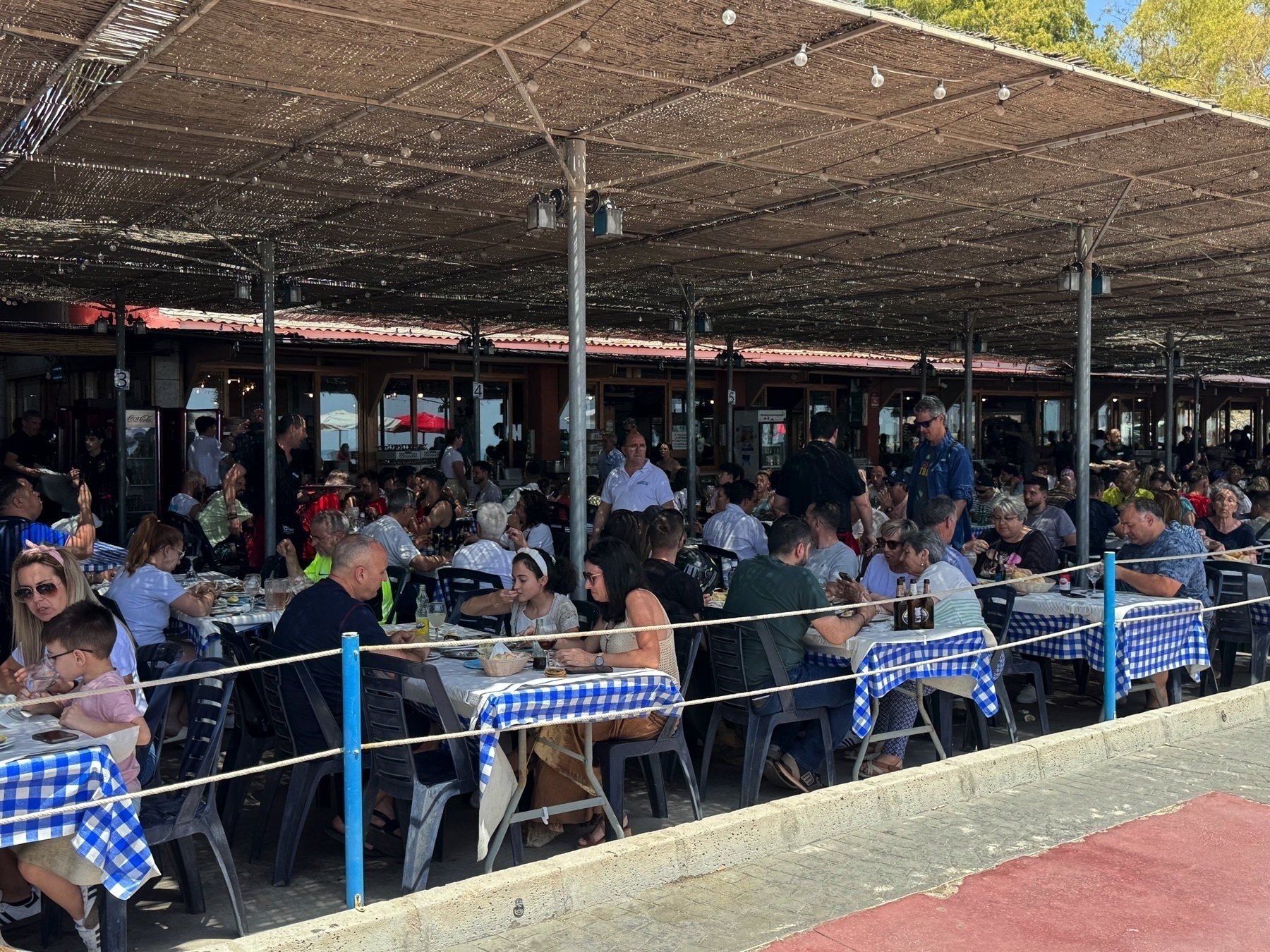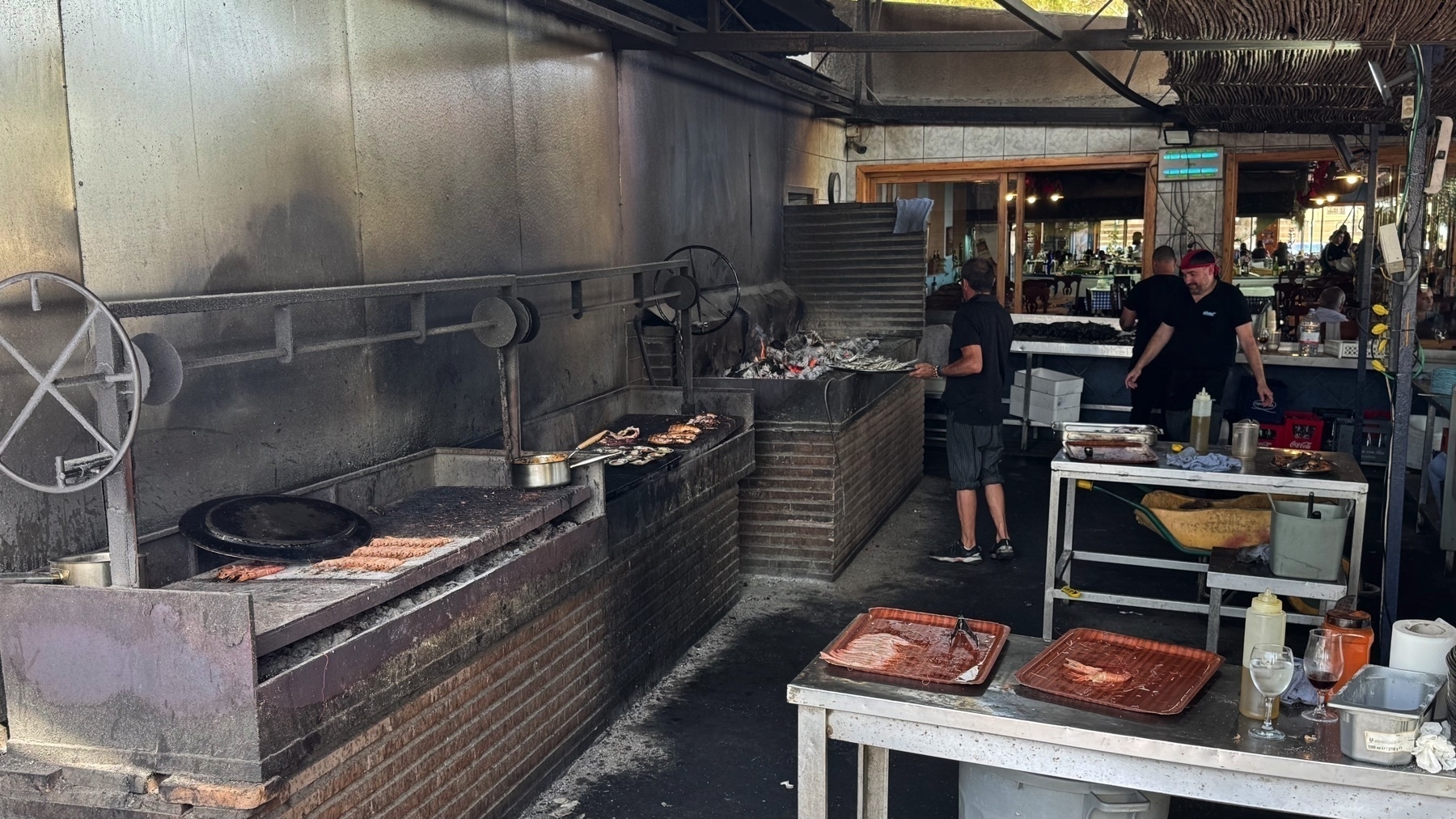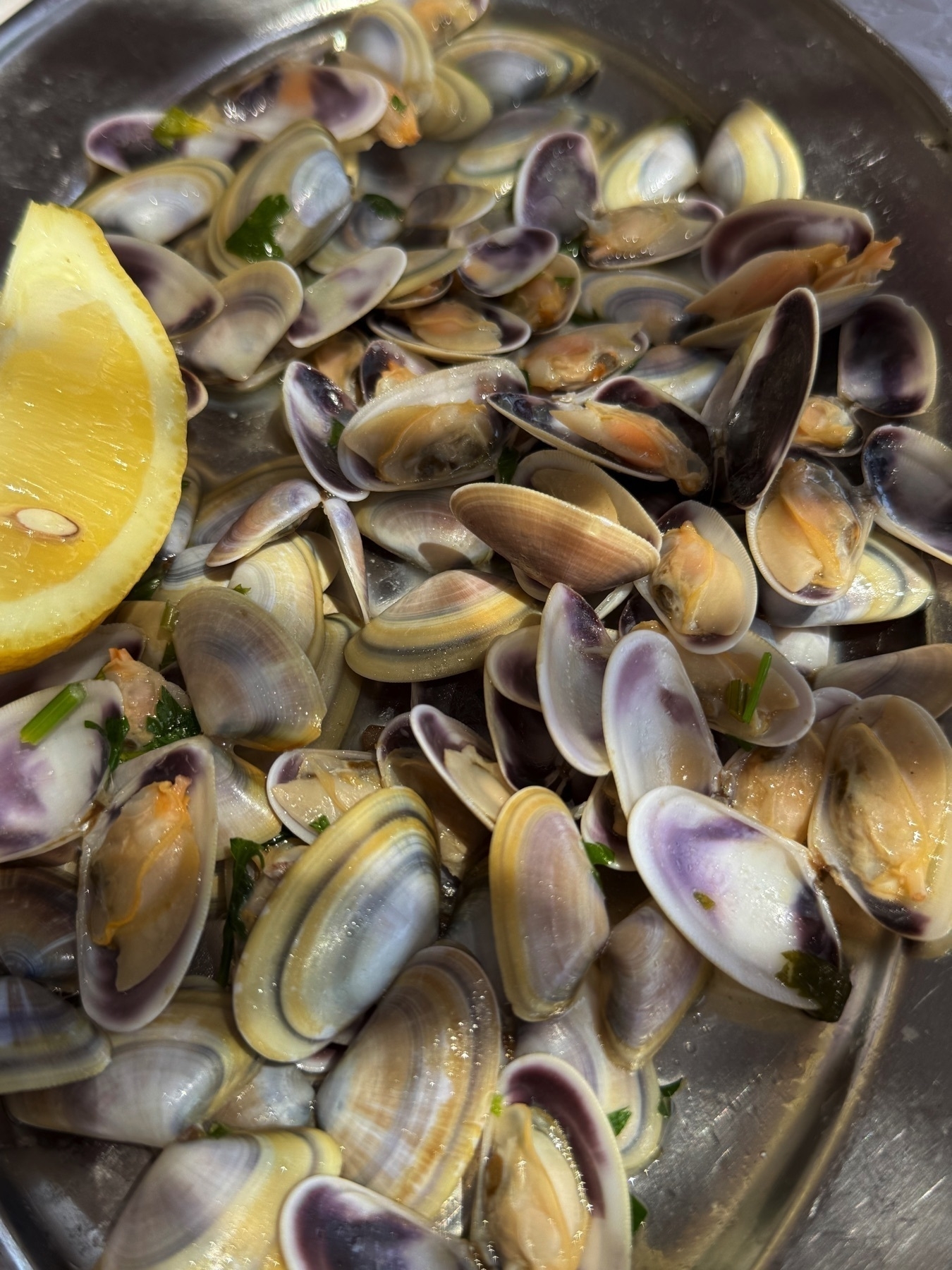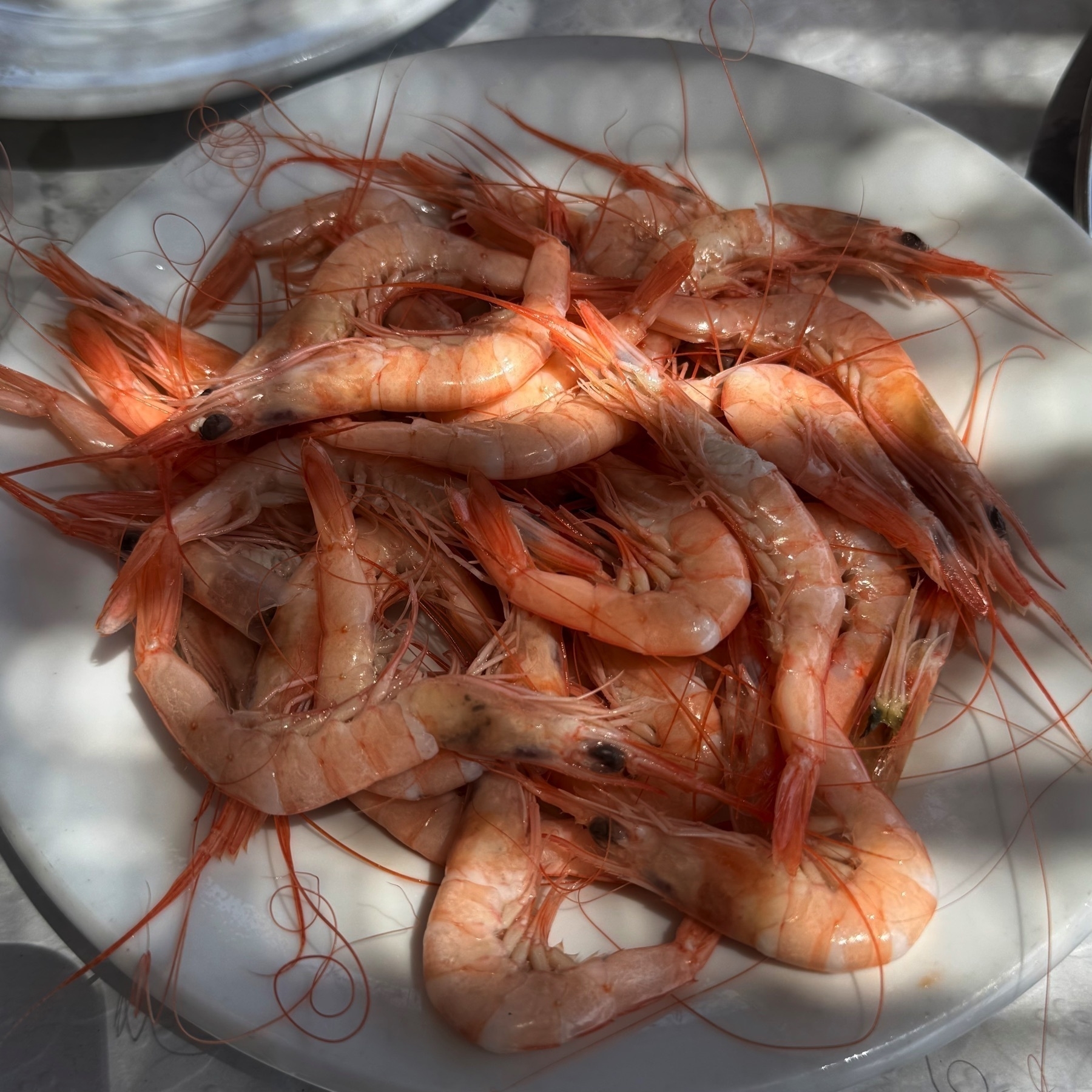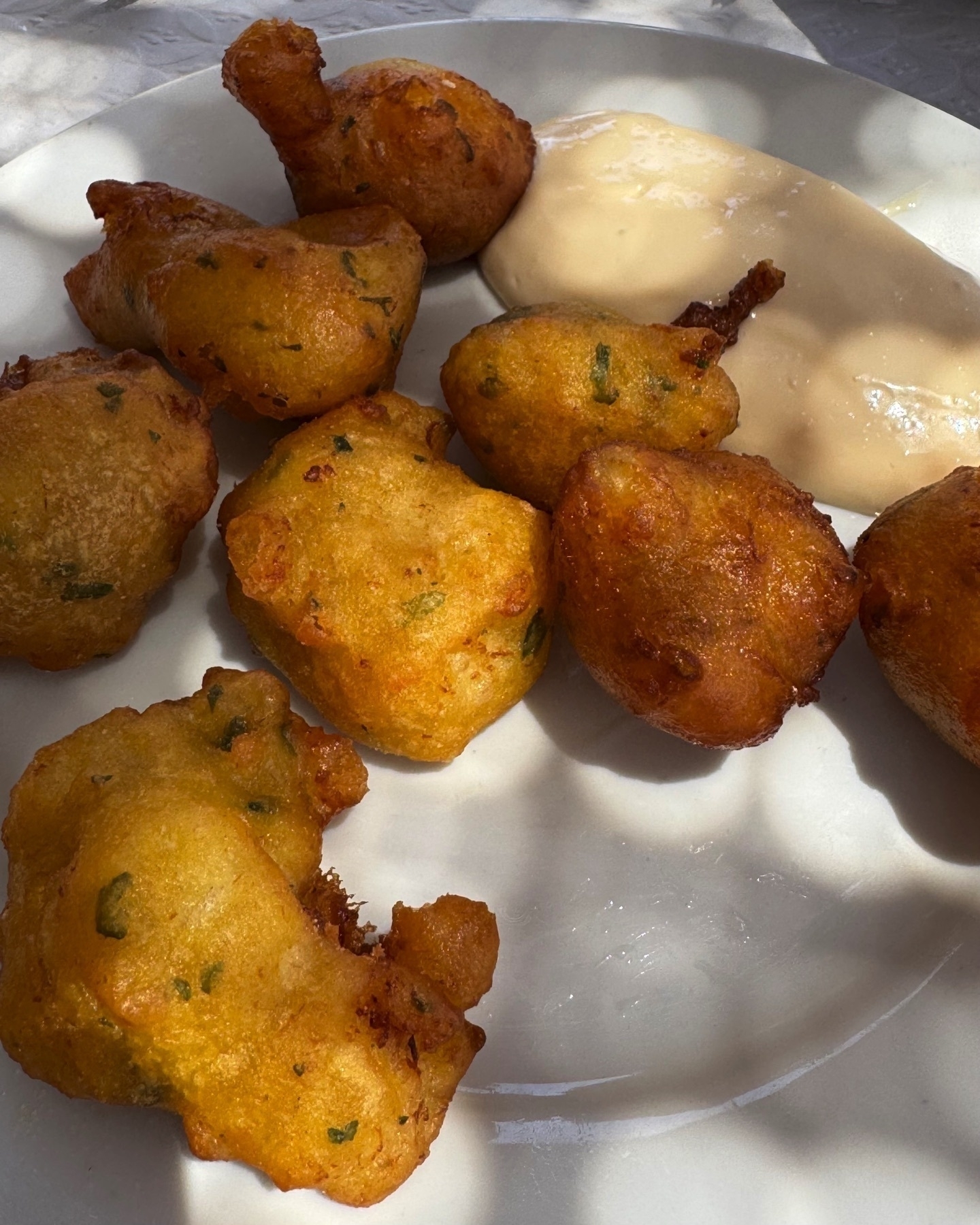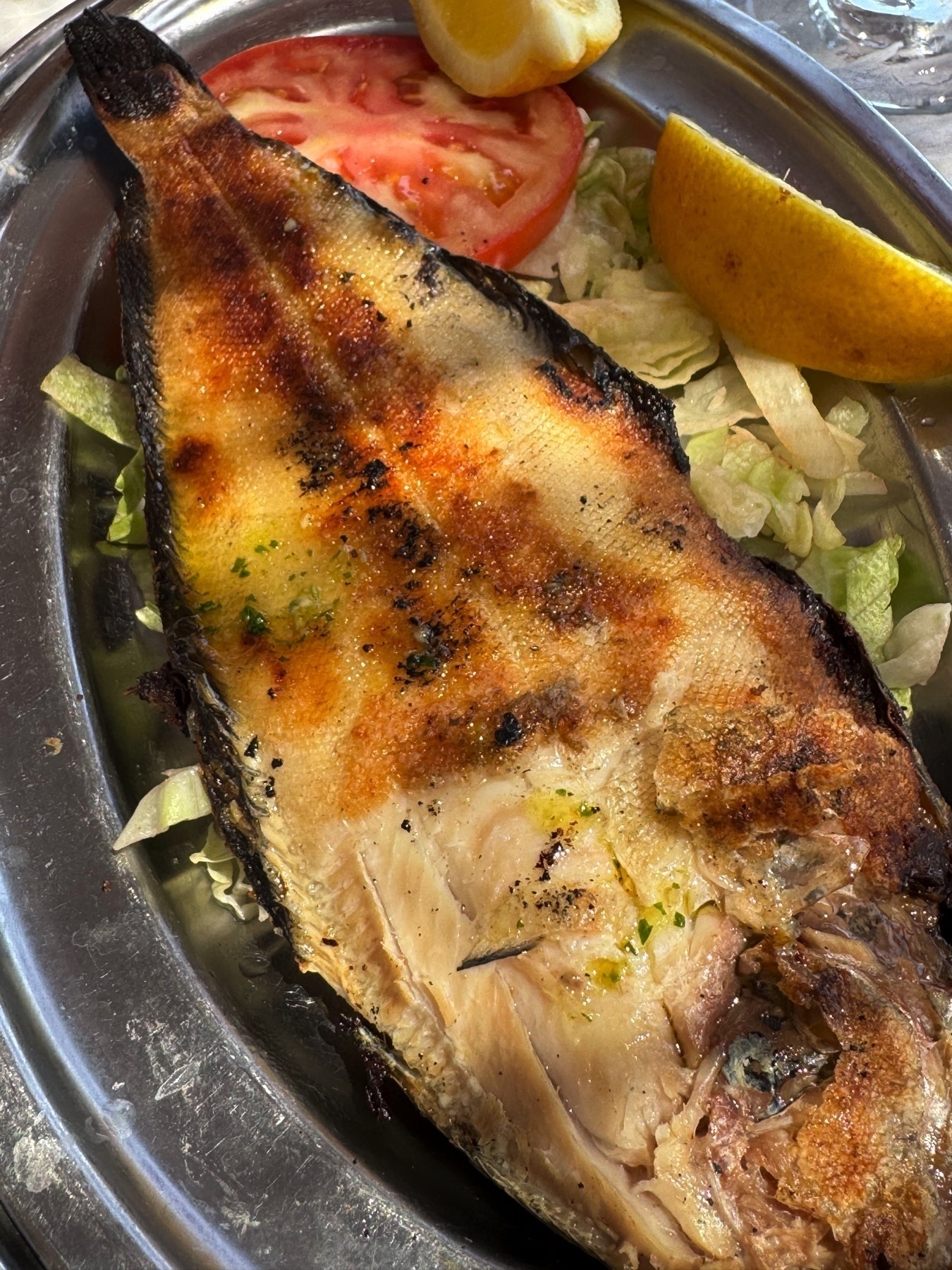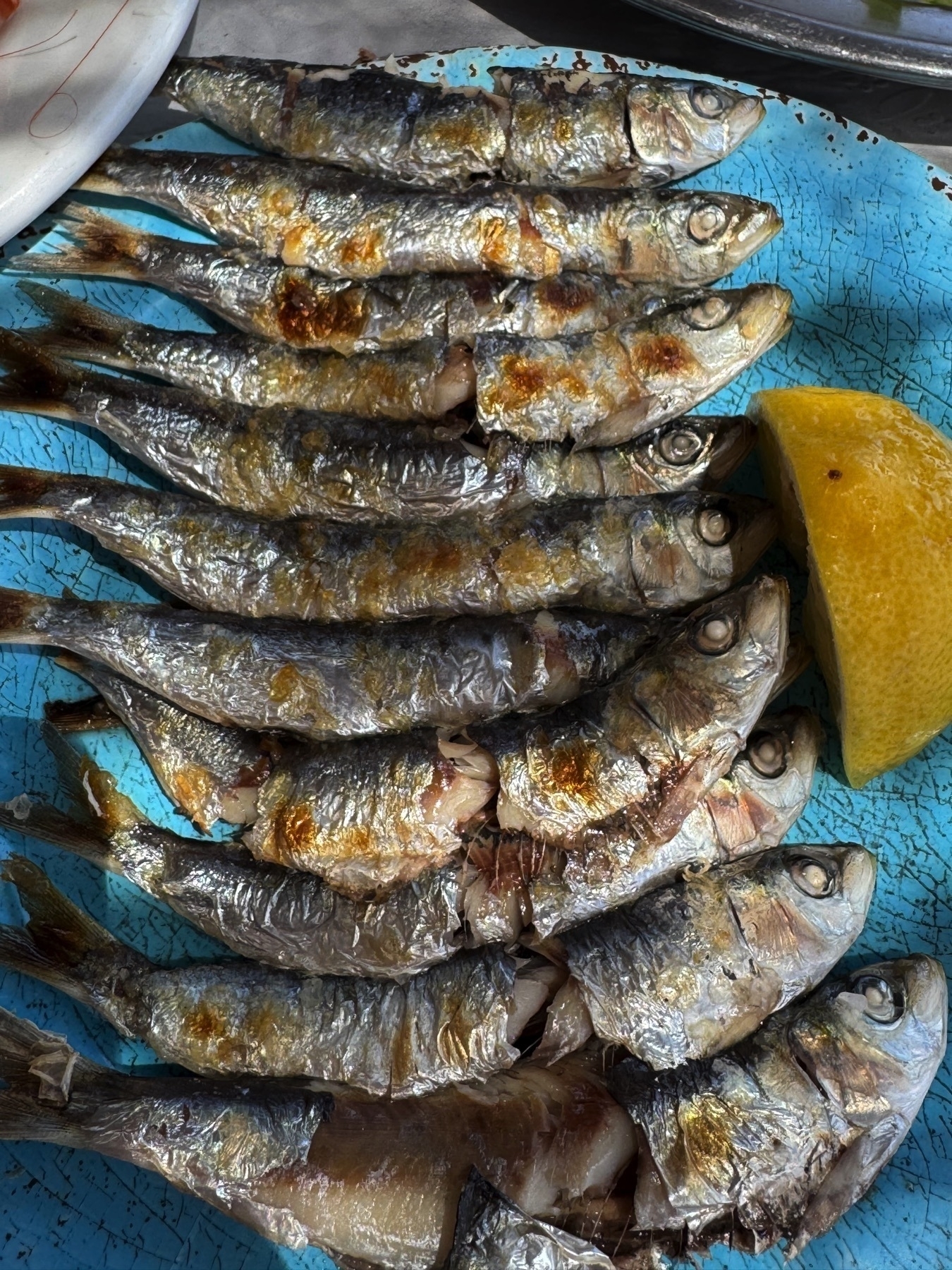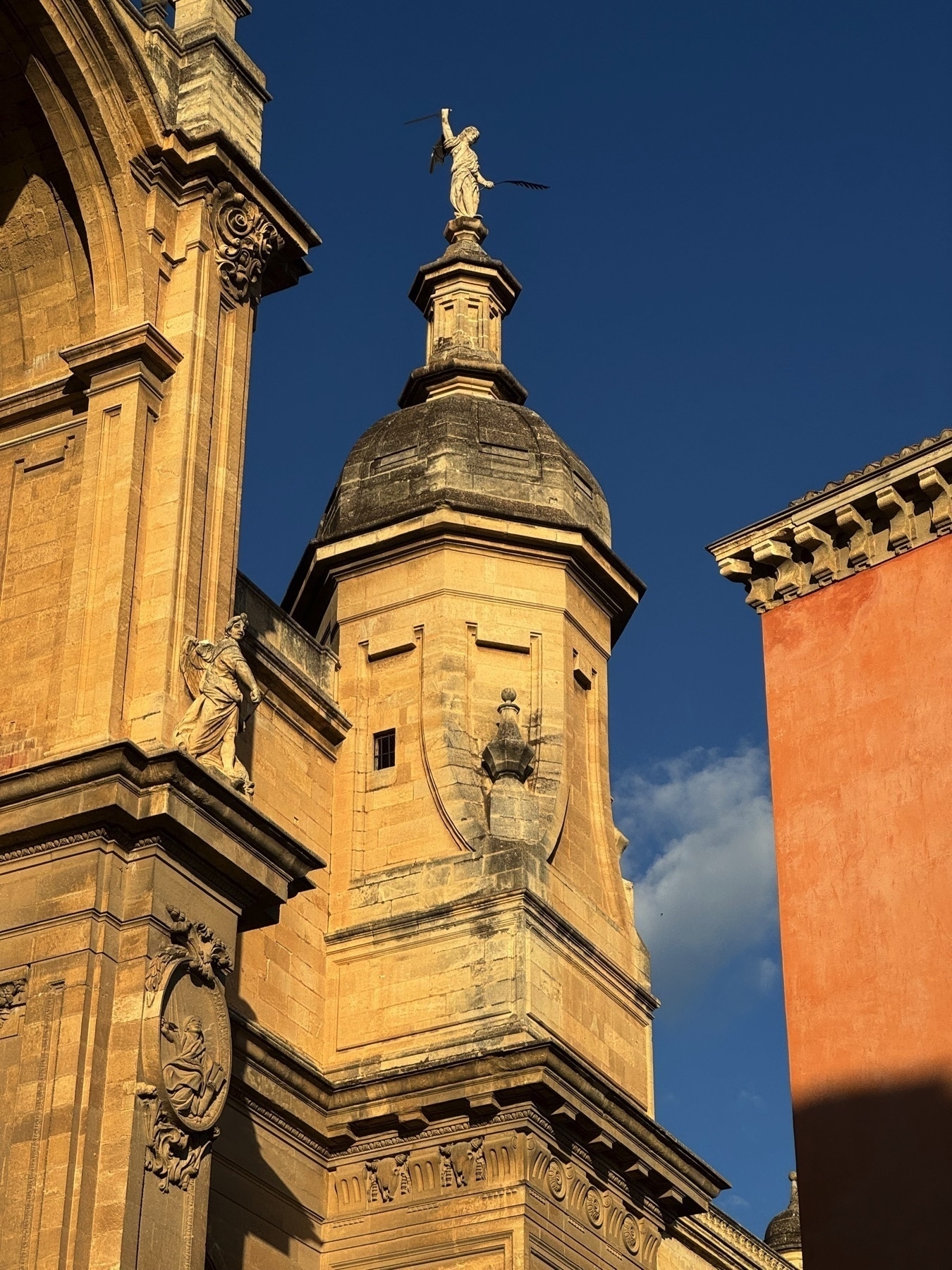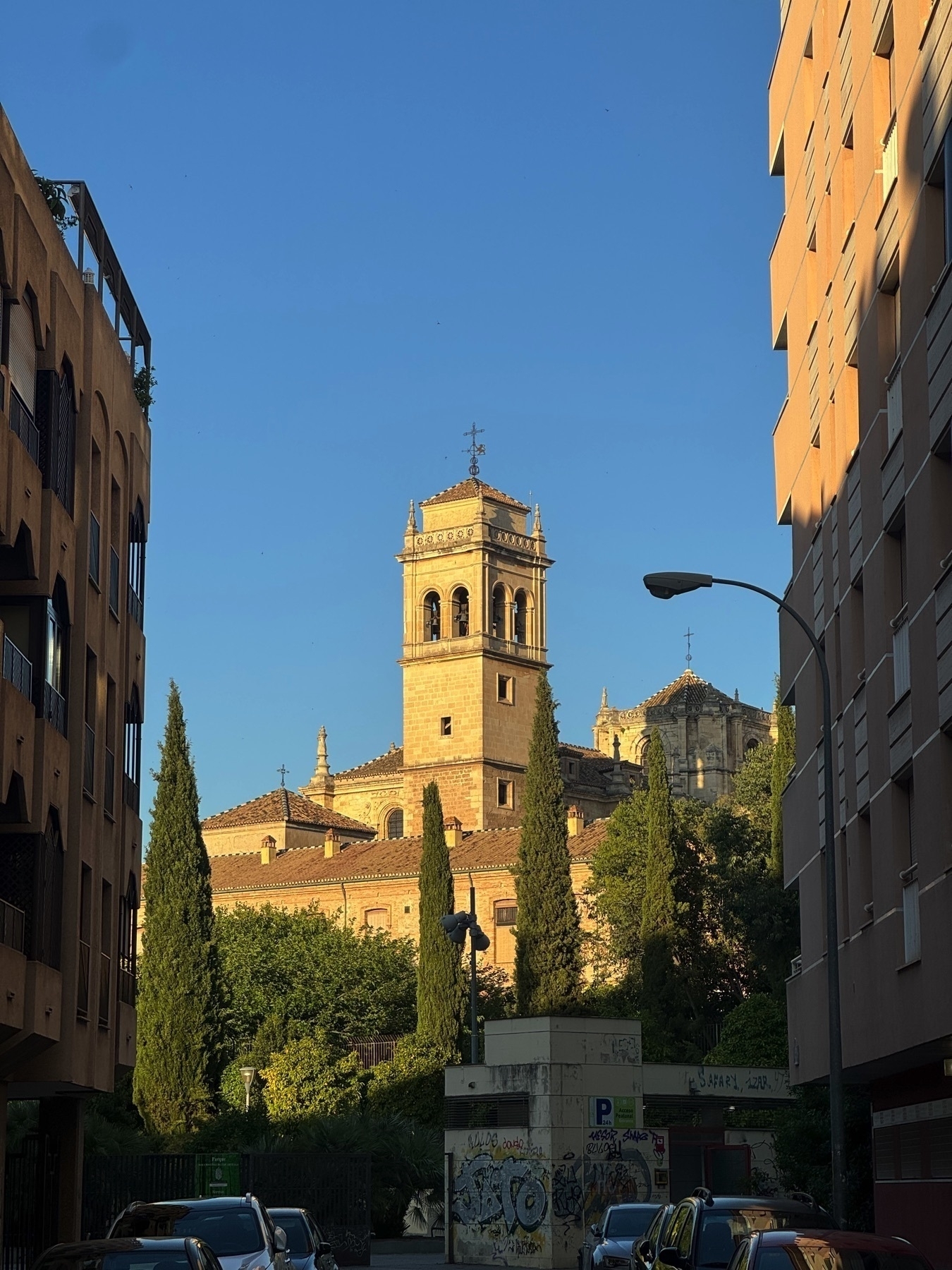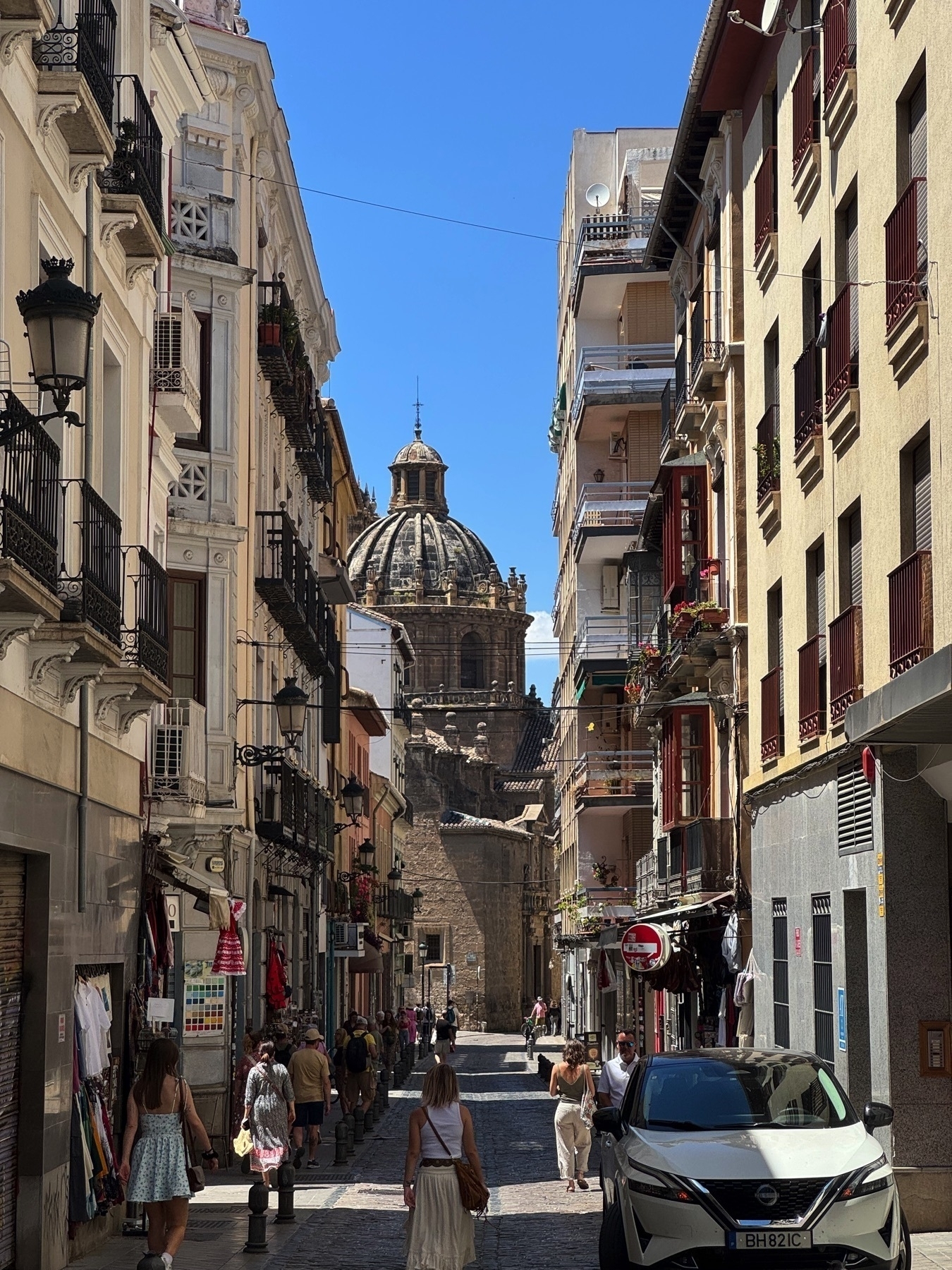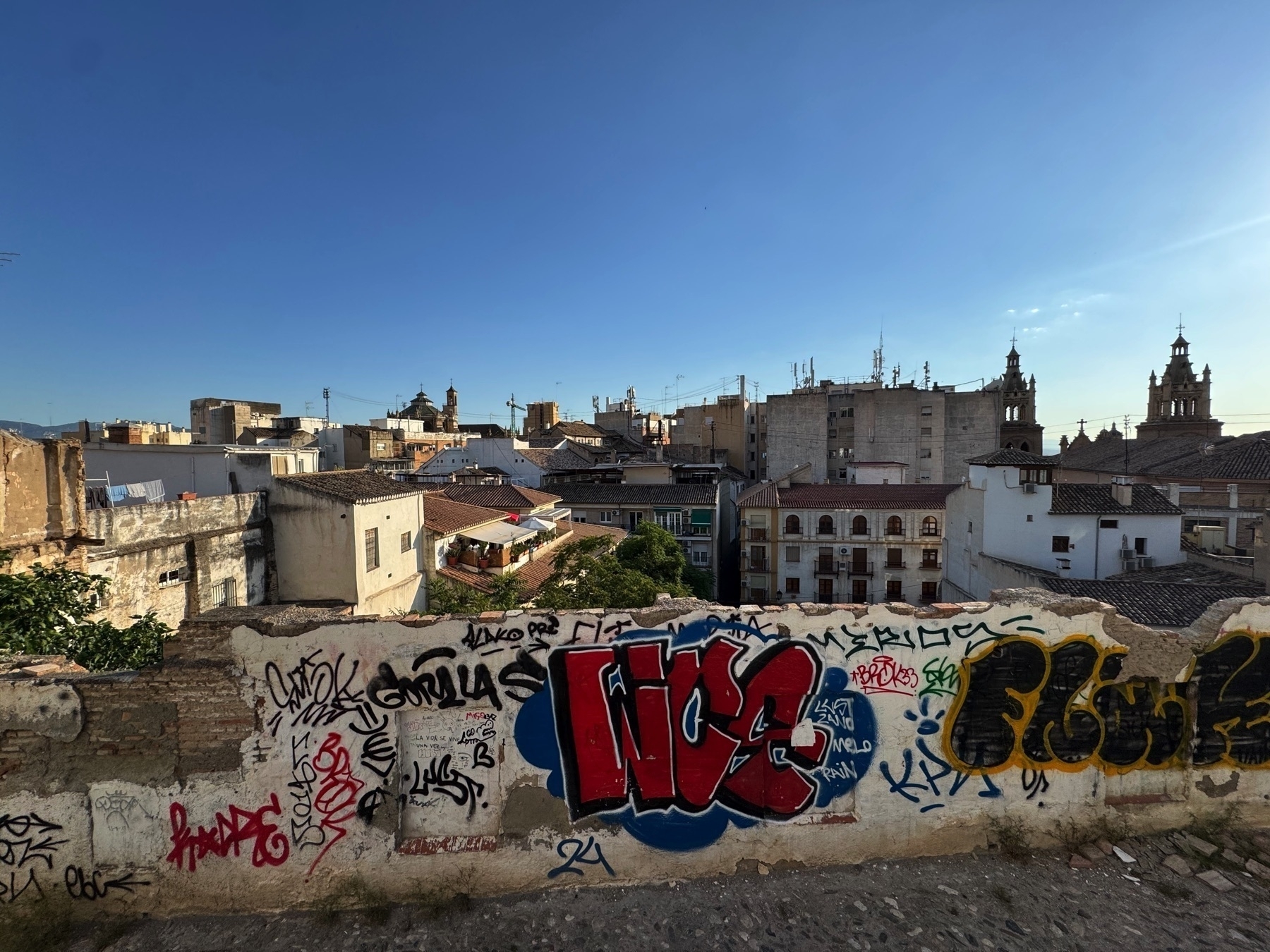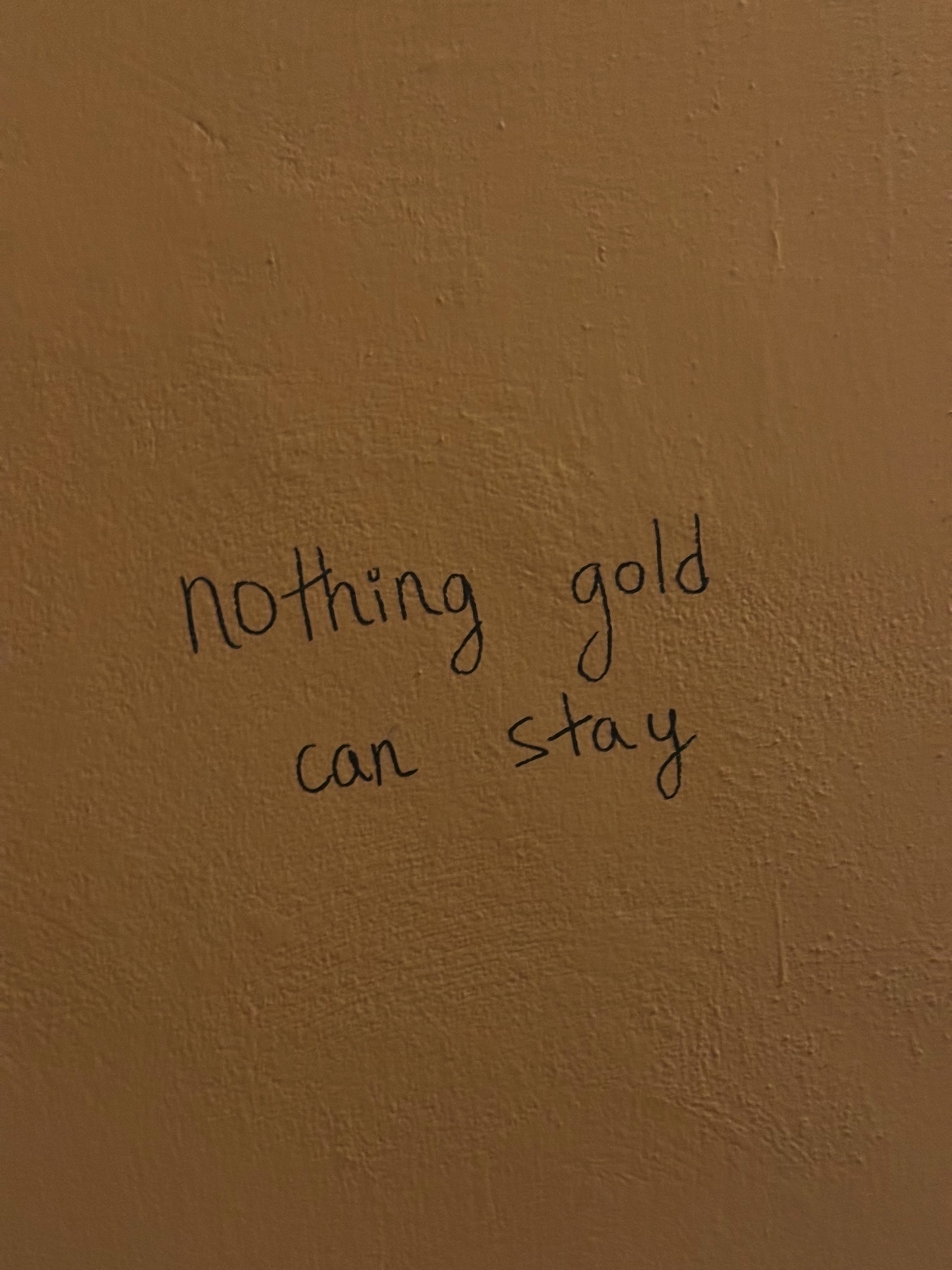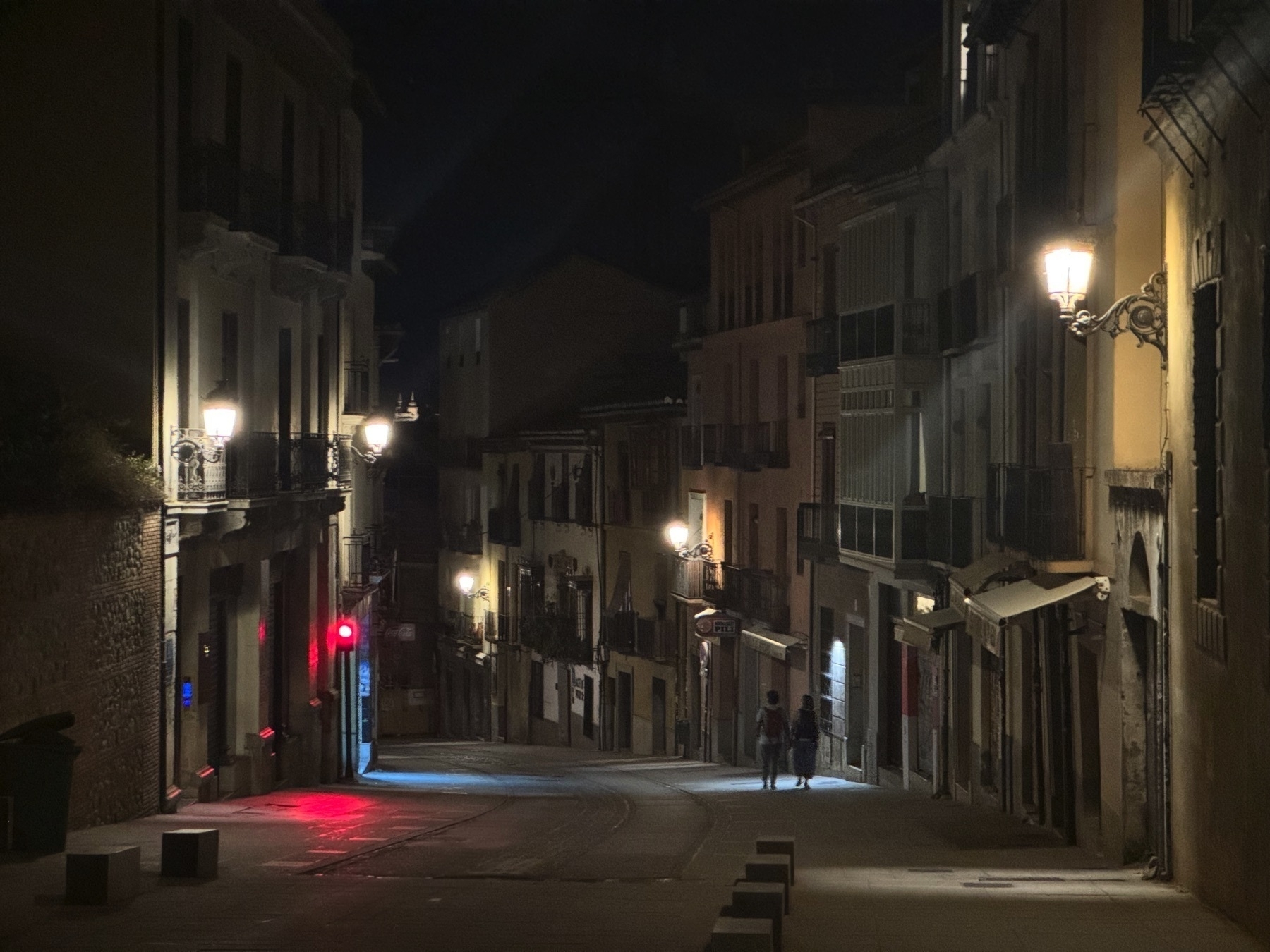Granada
Granada was a cute college town with beautiful sights and a unique tapas culture.
These are all the posts I made about the city:
- Monasterio de San Jerónimo (a 16th-century monastery)
- Restaurante Oliver (one of our favorite restaurants)
- Catedral de Granada (enormous inside and beautiful)
- Rincón de Rodri (delicious seafood)
- Iglesia de San Nicolás (best view of the Alhambra)
- Mirador de San Nicolás (second best view of the Alhambra)
- Jardines y Generalife (beautiful gardens with ornate architecture, right next to the Alhambra)
- More food shoutouts (Amistad Hotpot, Taberna Andaluza, Venga Vino, and Mítico Bar)
- Walking around the city (photos of landmarks, random streets, etc.)
I loved the unique tapas culture here, where basically every round of drinks comes with a “free” tapa (some of the prices are a little higher)—if you’re cheap and out to drink, you could get away with eating for free. We never intentionally did this because we wanted larger portions and not to drink so much, but it was fun to see what each restaurant would bring out first for free.
We only went back to one restaurant multiple times (Restaurante Oliver), but we were also only here for four nights, so we didn’t have as much time for repeats. I wish we had been able to go back to Rincón de Rodri, and there were still more places in my Apple Maps guide that I wish we had been able to visit.
On separate nights we walked up to the Mirador de San Nicolás and Jardines y Generalife; both were a good workout. I’m bummed we didn’t get to go into the Alhambra itself, and I’d want to return and make sure we got tickets for that.
Our Airbnb near the city center was great, and the city was relatively small anyway so it was easy to walk around. We never used the bus system because we walked from the train to our apartment.
Overall, I’d love to come back to Granada to see the Alhambra and experience the unique tapas culture again.
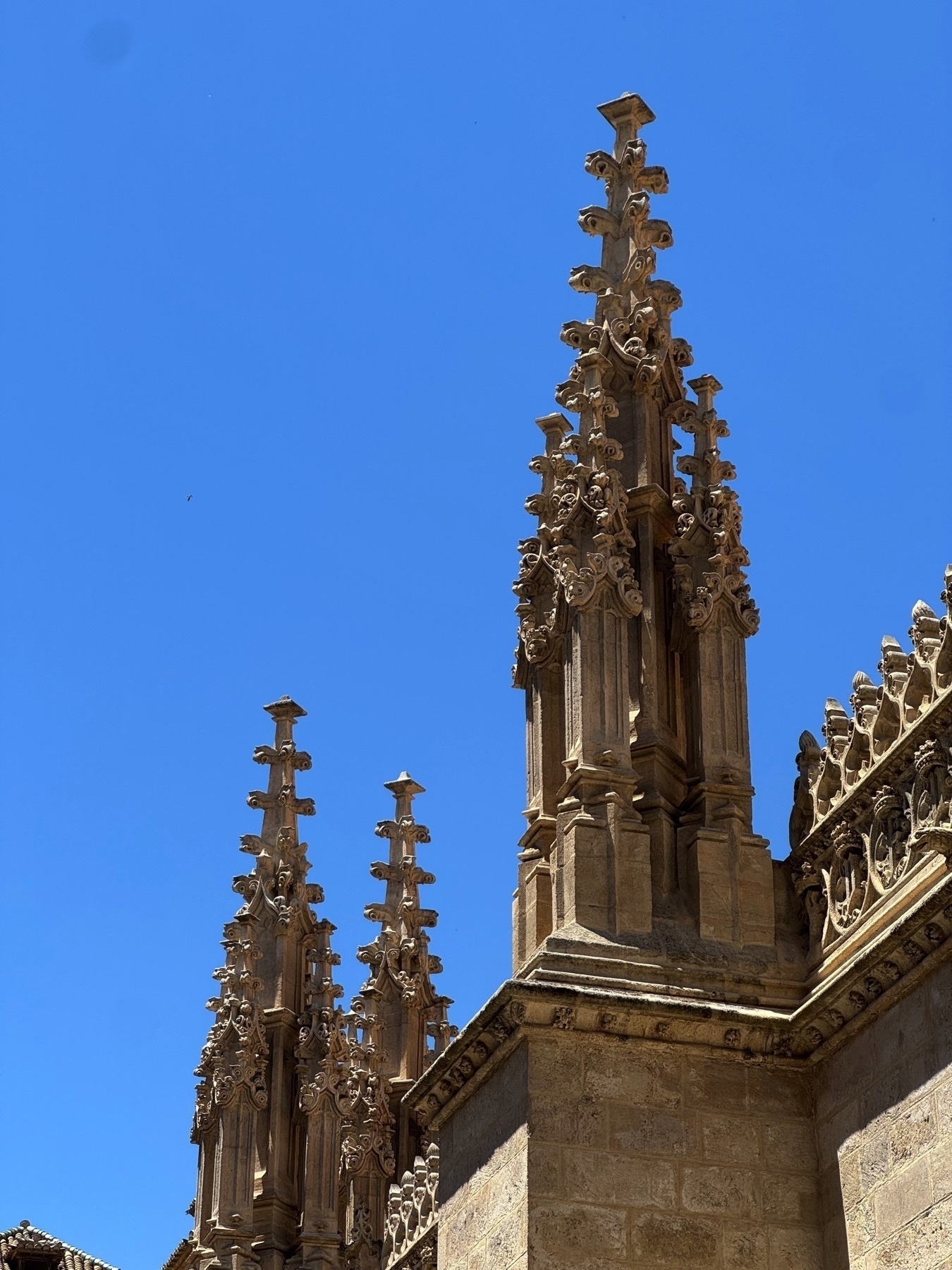
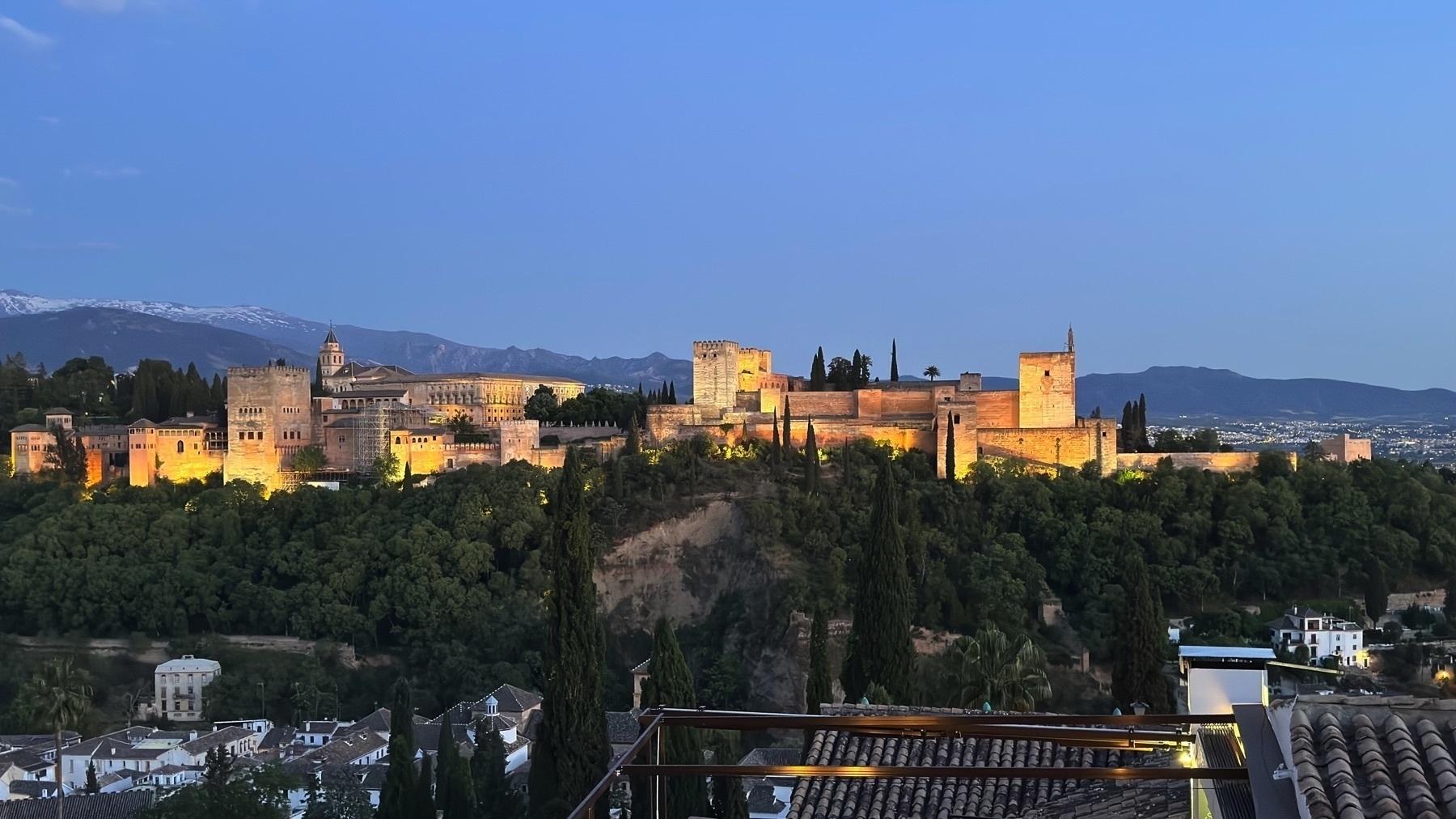
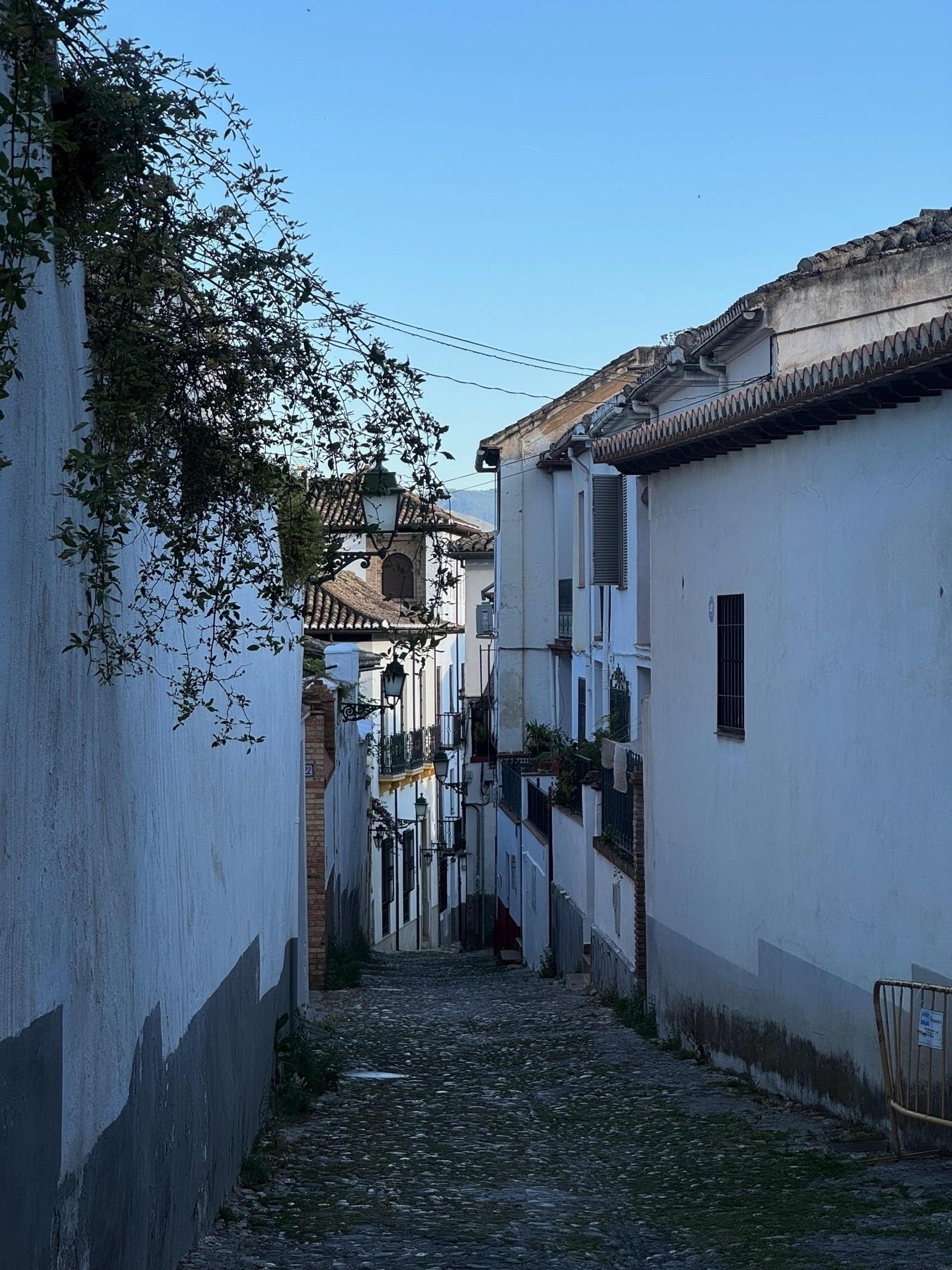


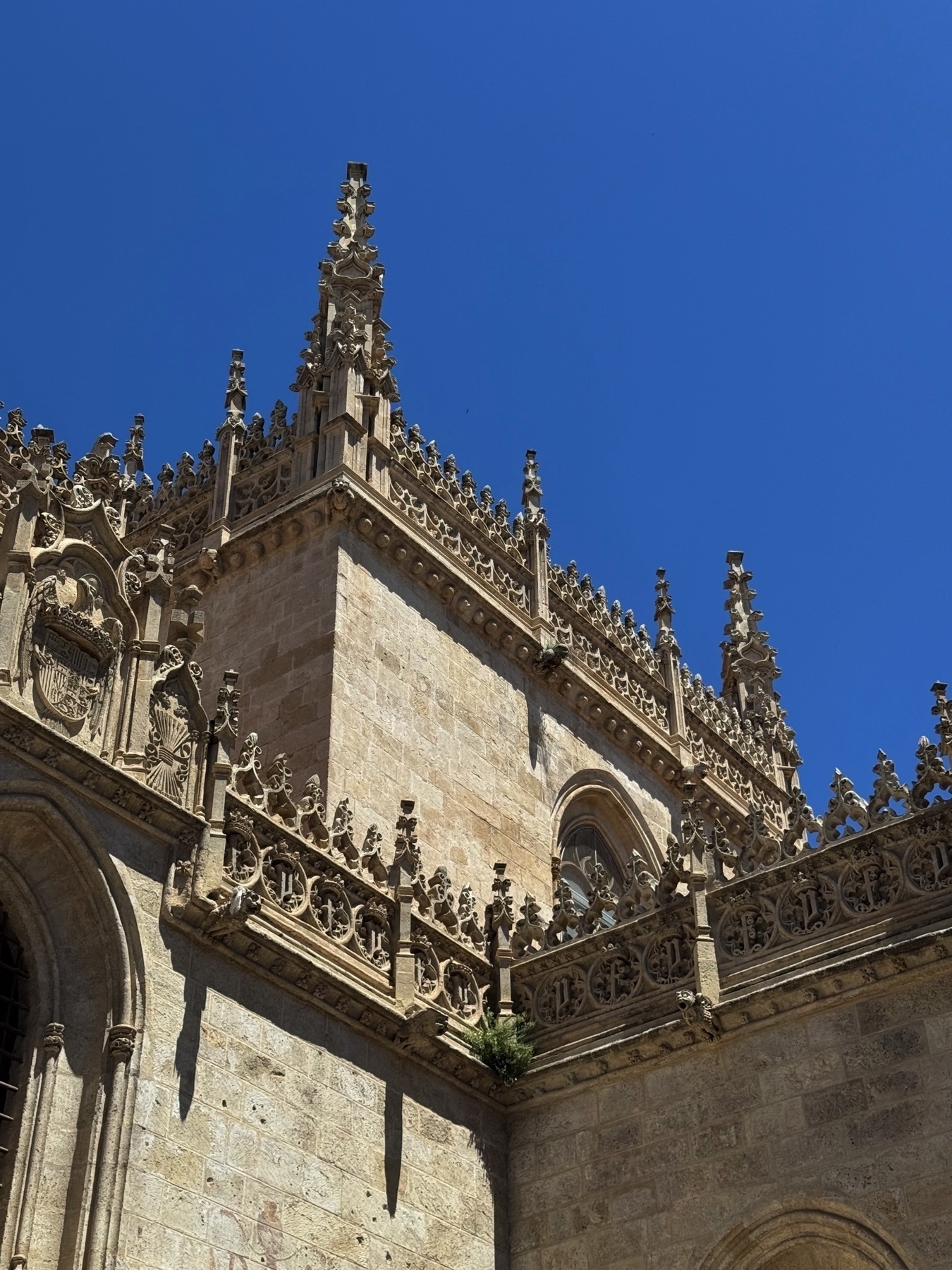
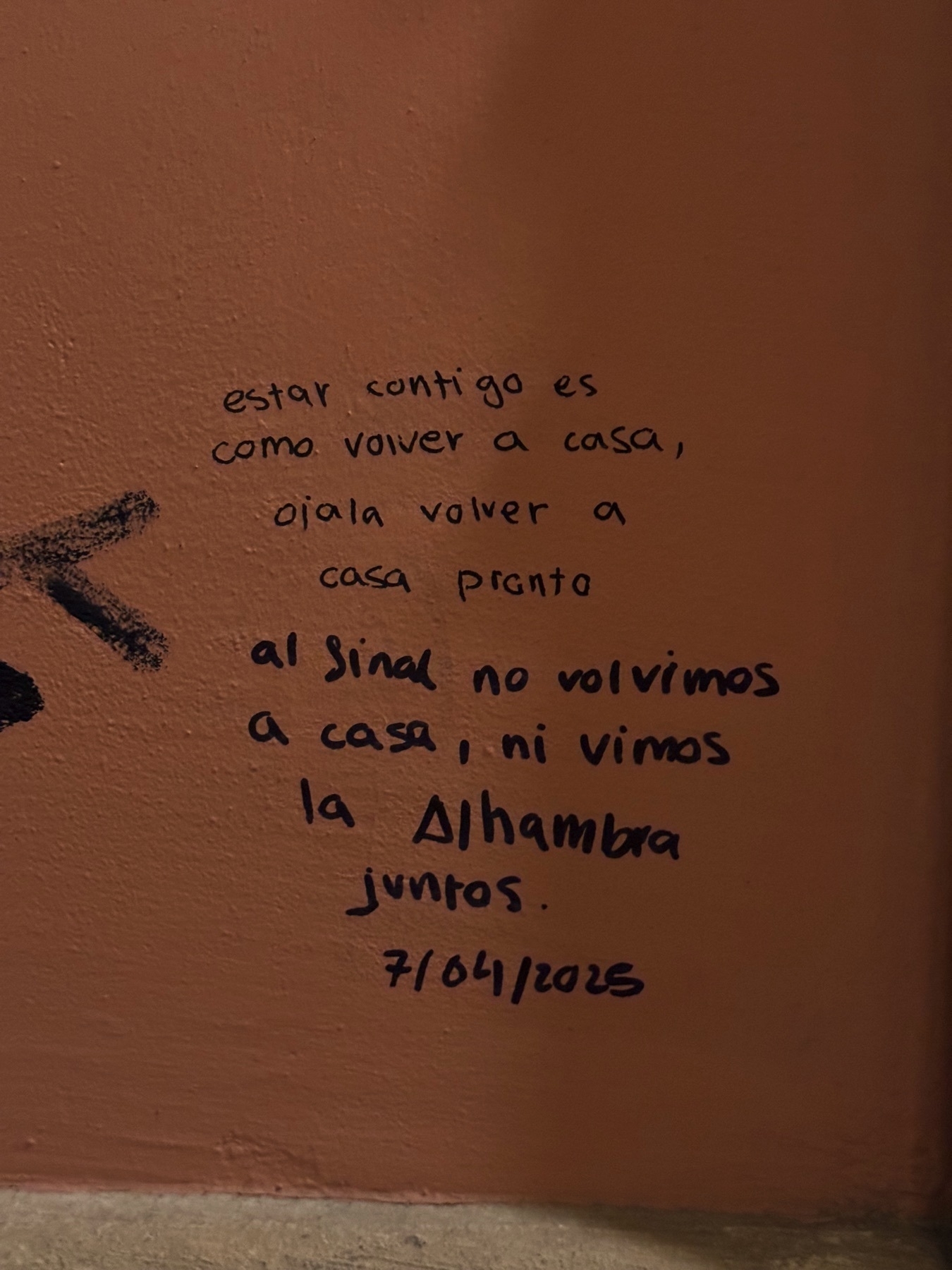

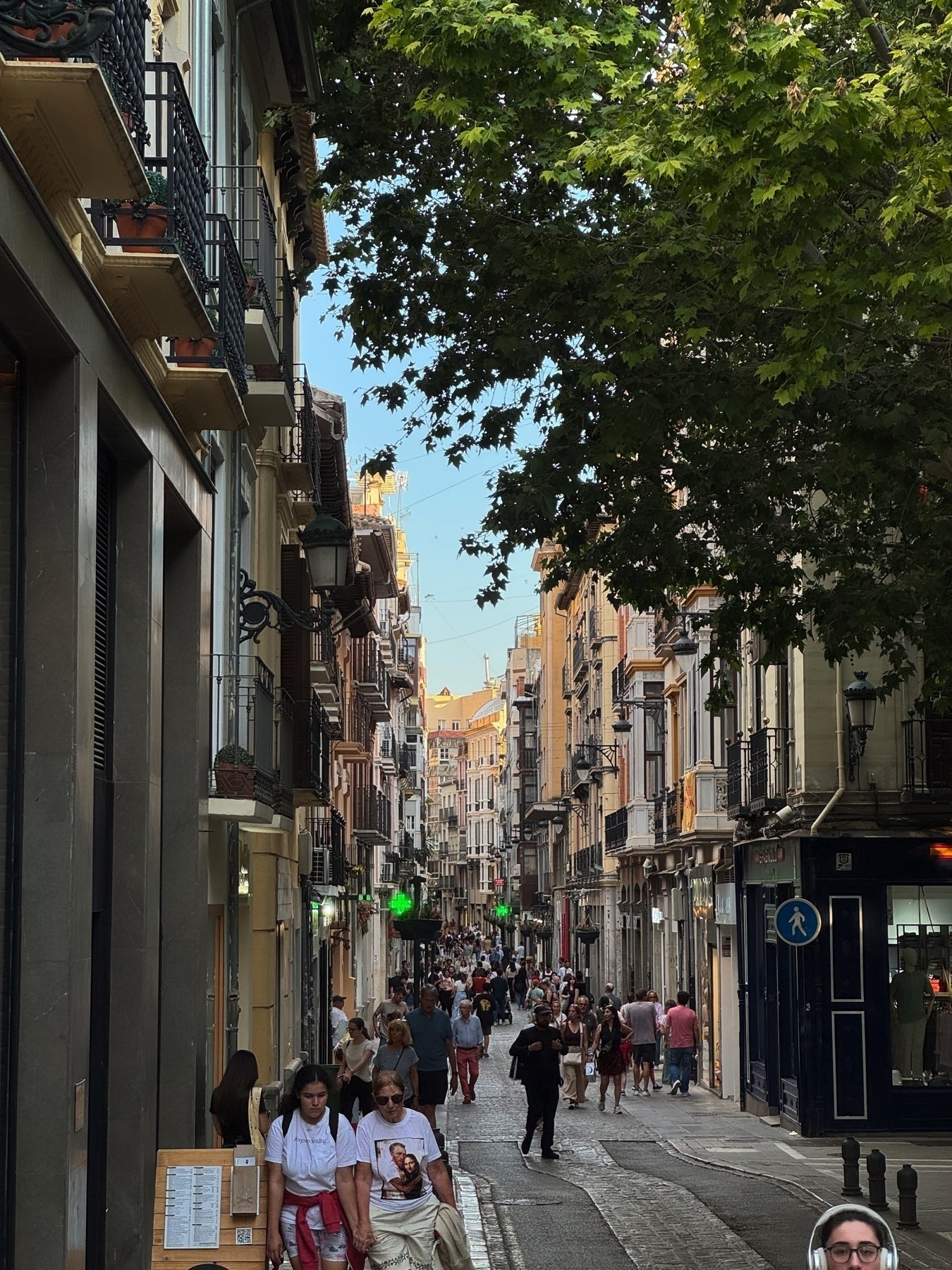
After three weeks in Spain, we got Hotpot (photos 1–2) and it was delicious.
Taberna Andaluza (3–4) served us potatoes with fried egg and croquettes with jamón.
We popped into Venga Vino (5–6) and (like everywhere else) they gave us “free” tapas when we ordered a drink.
Same for Mítico Bar (7–8).

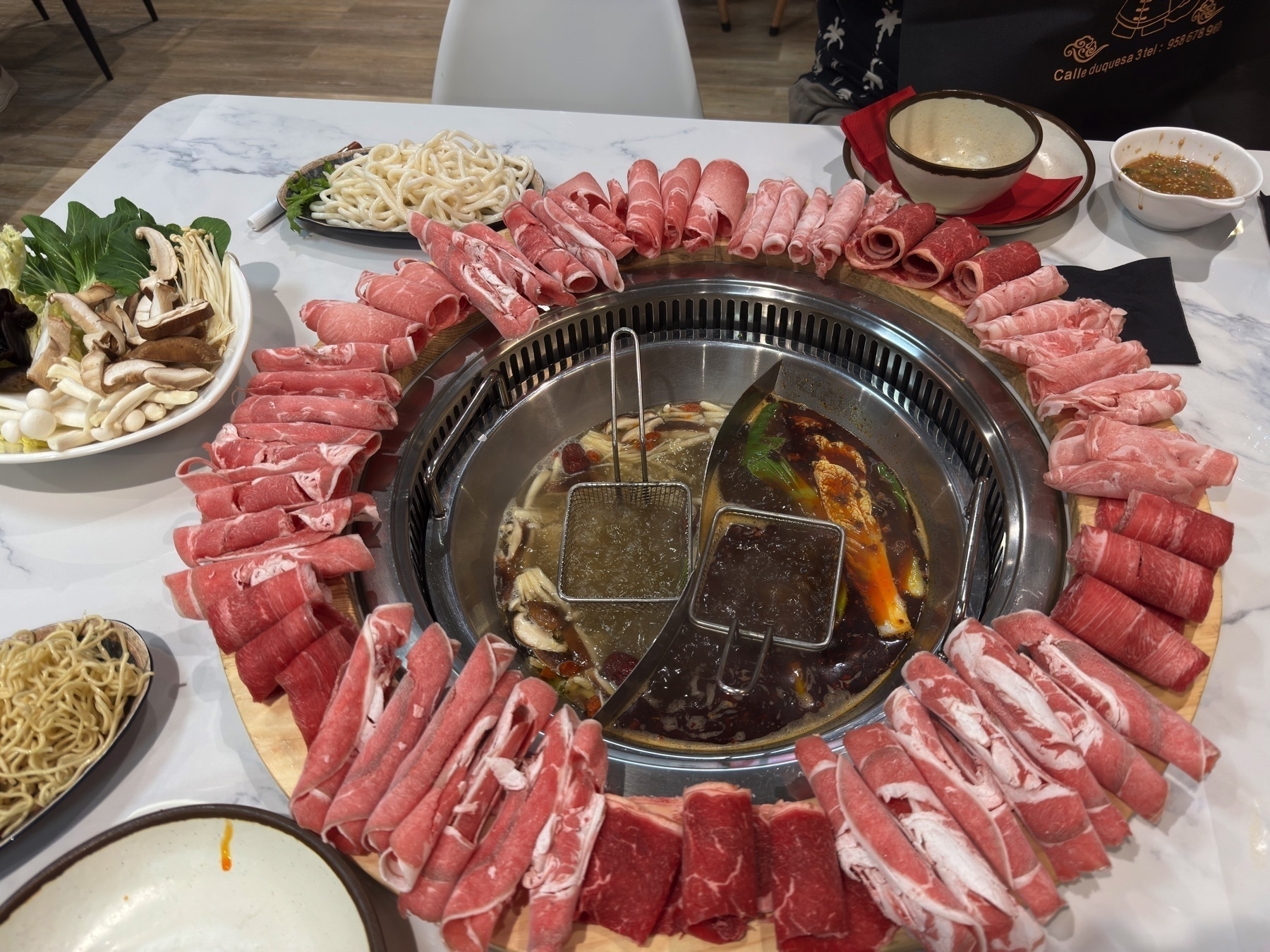

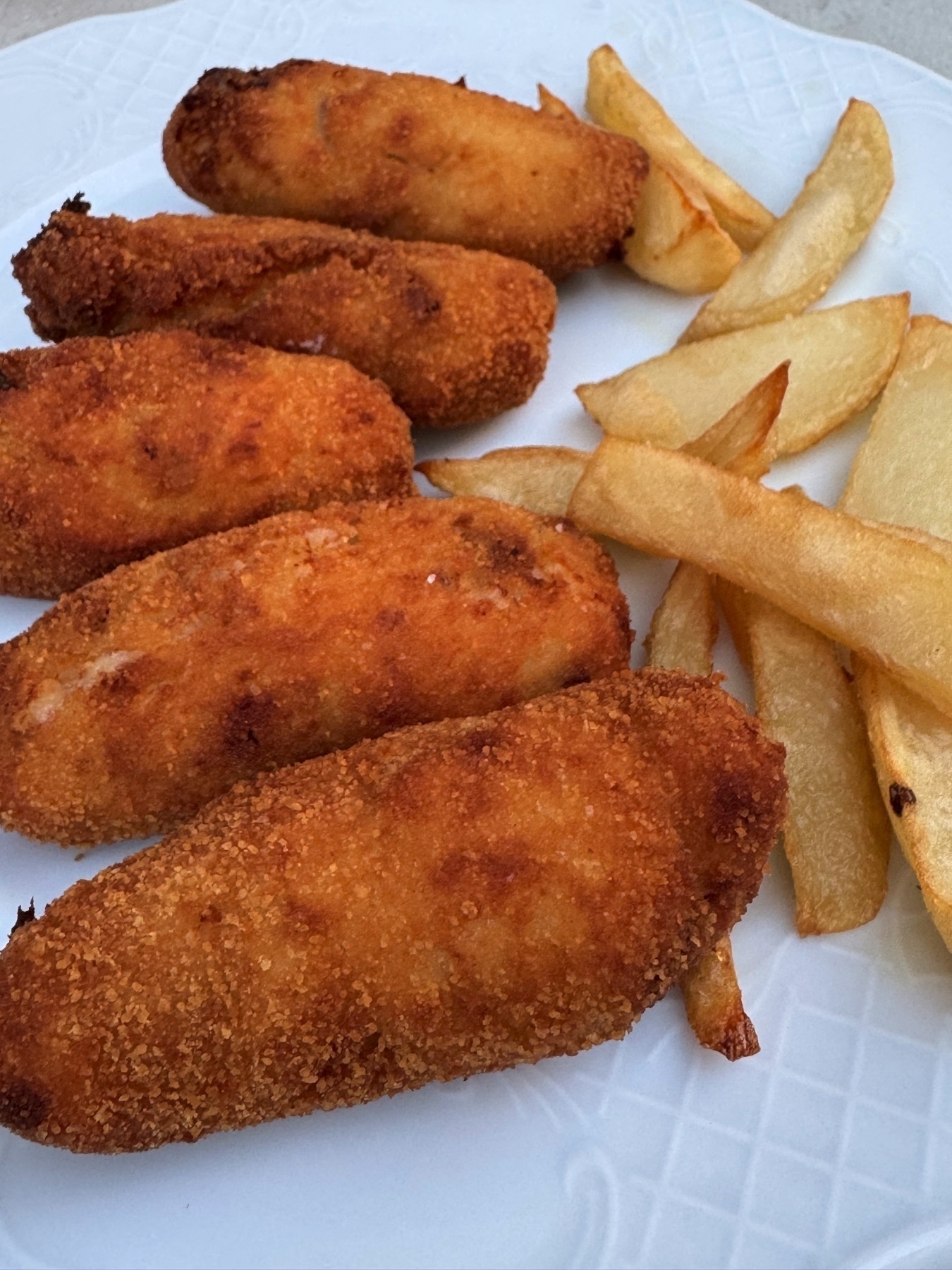

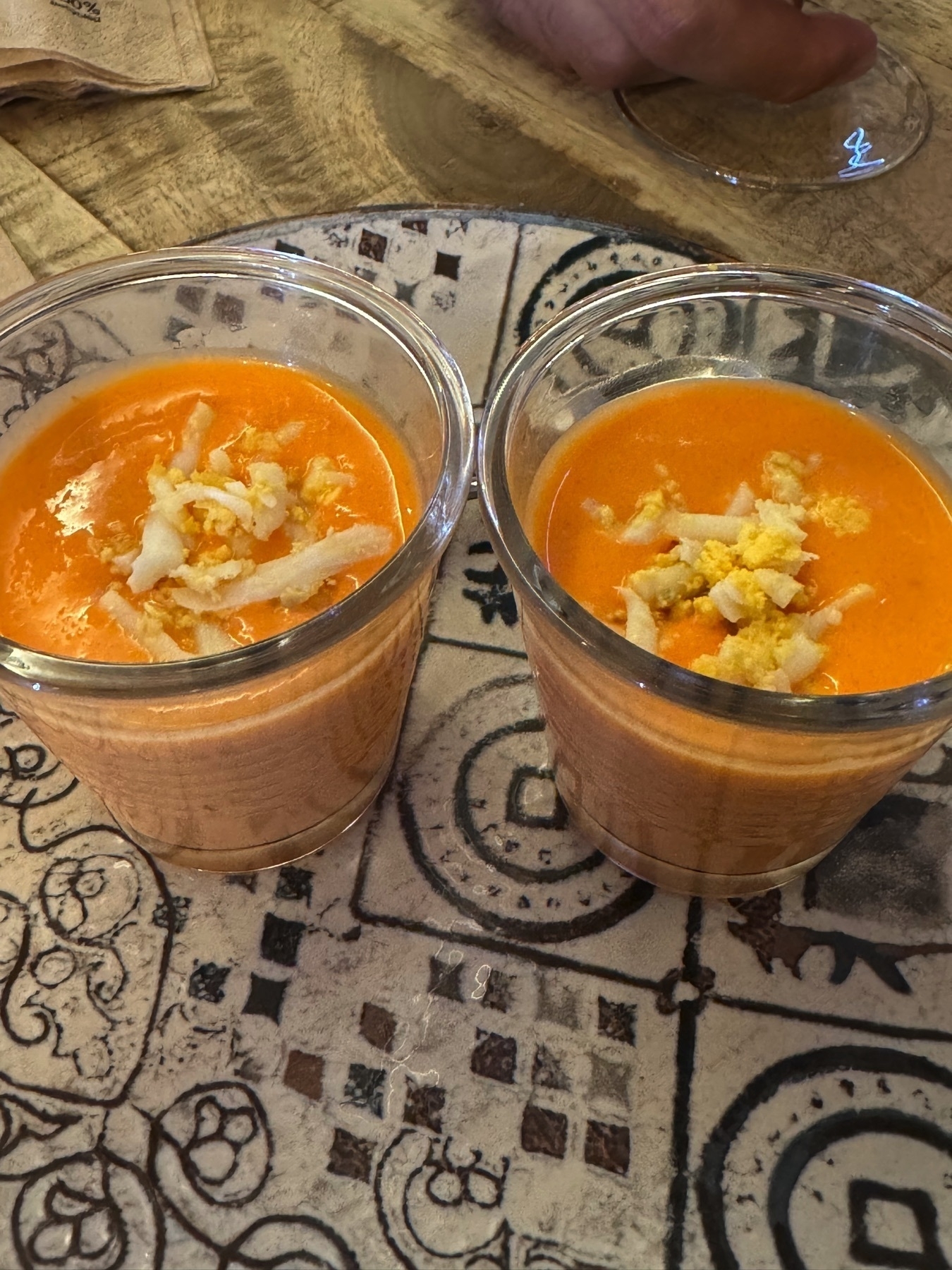

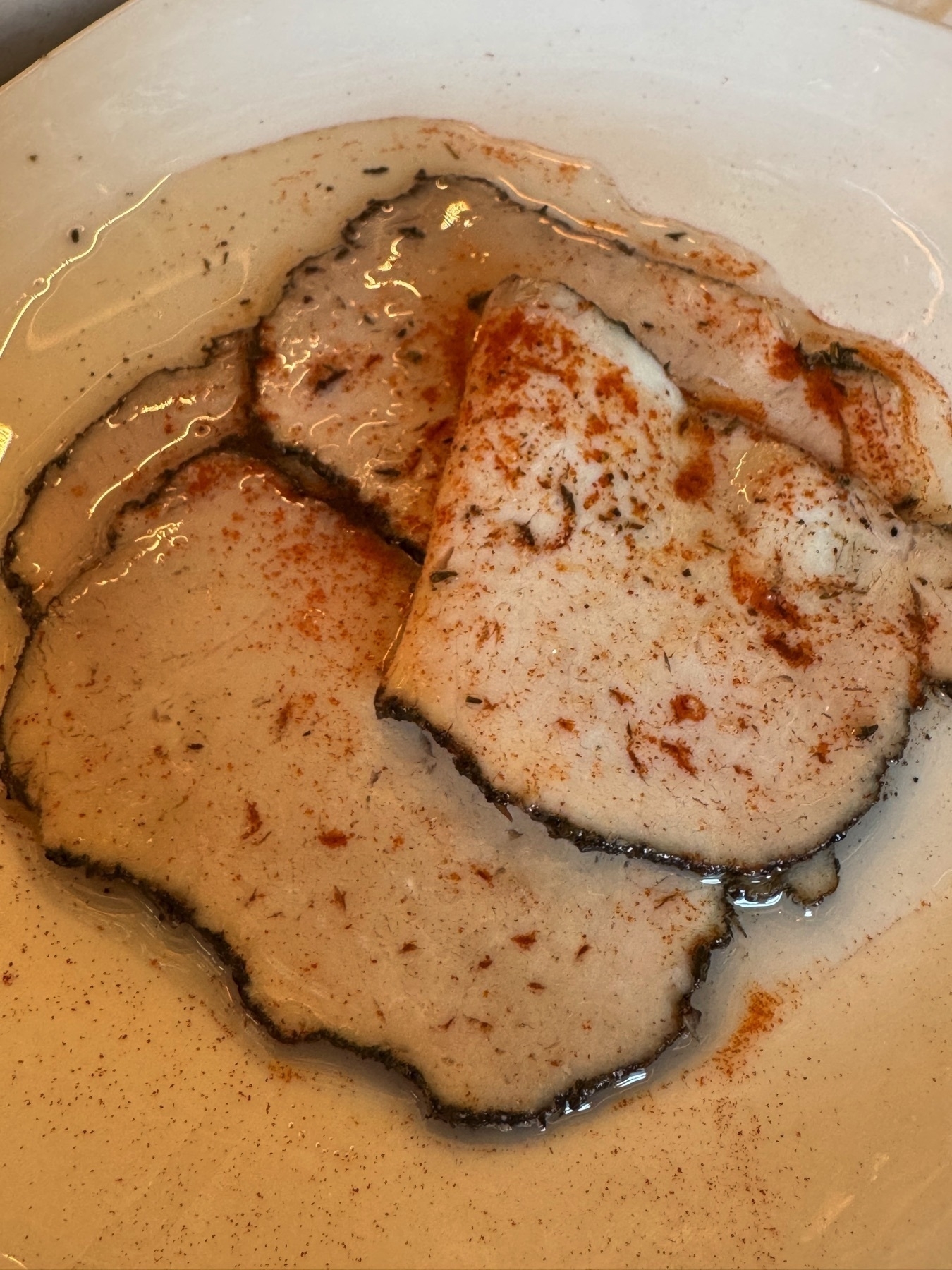
We didn’t get tickets to go inside the Alhambra itself, but we did the Jardines y Generalife night visit and got to walk through the gardens and see the Alhambra again. The intricate Nasrid Islamic stucco and architecture was beautiful.
Not pictured: the strong scent of jasmine.
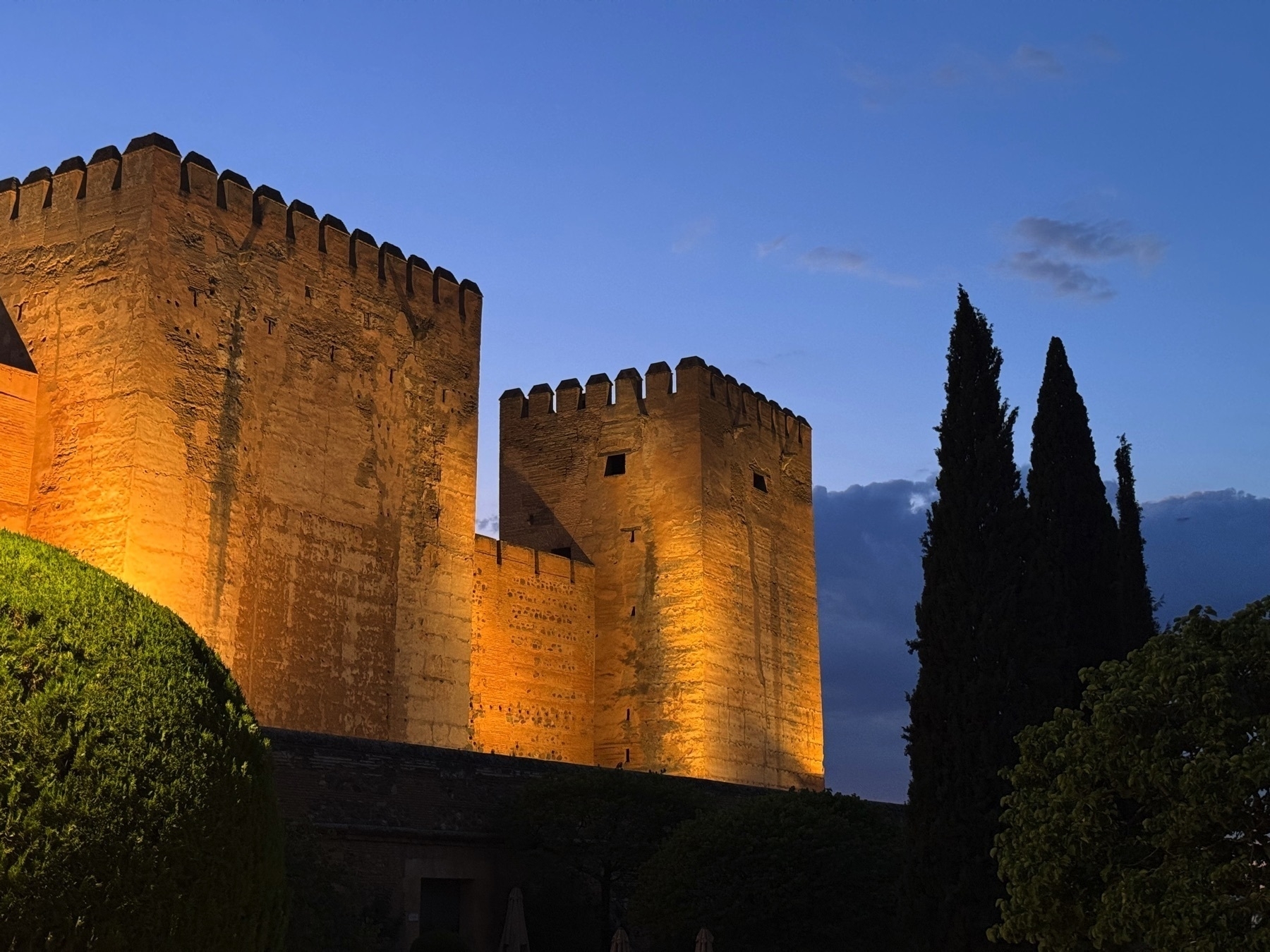
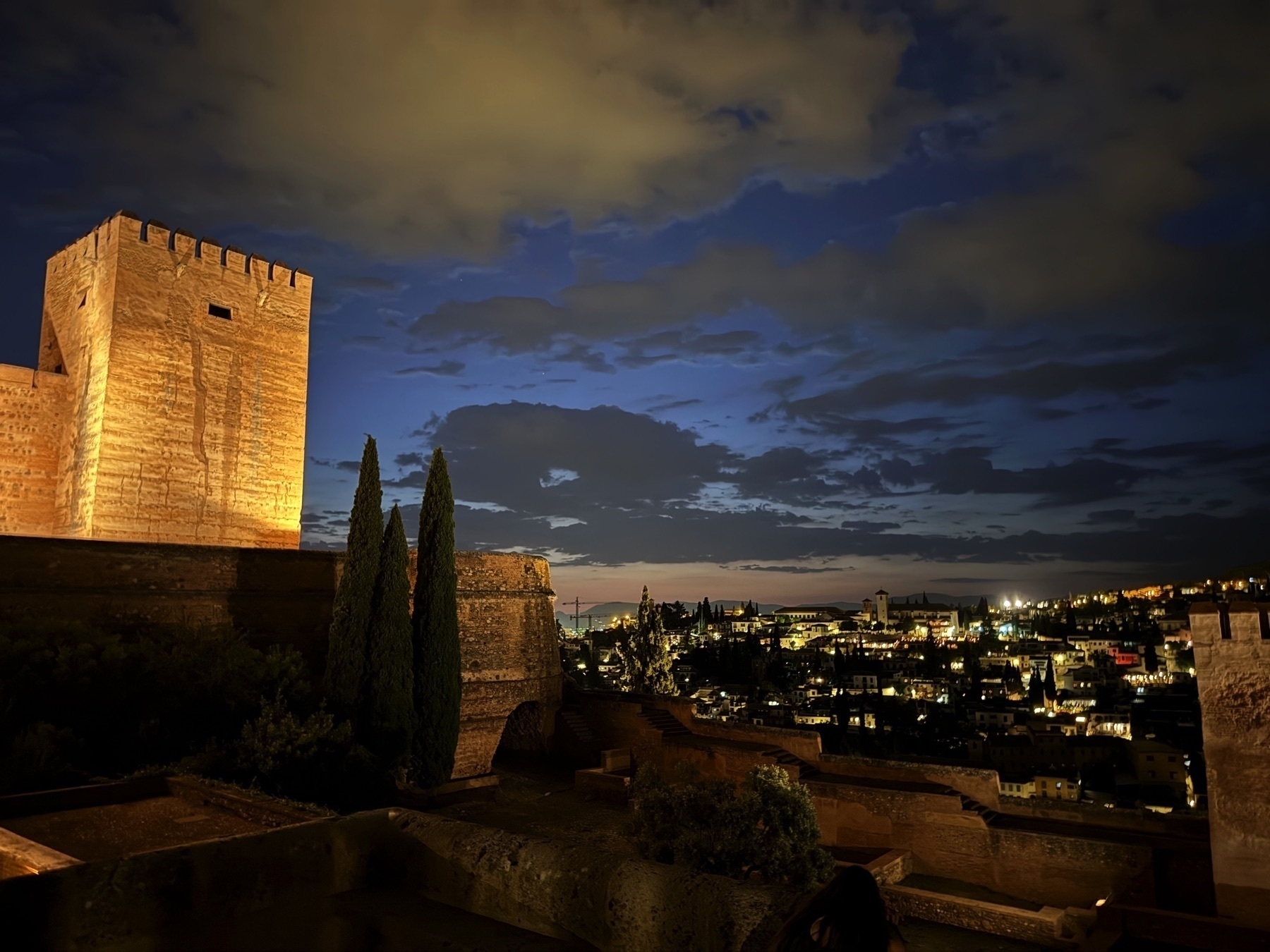


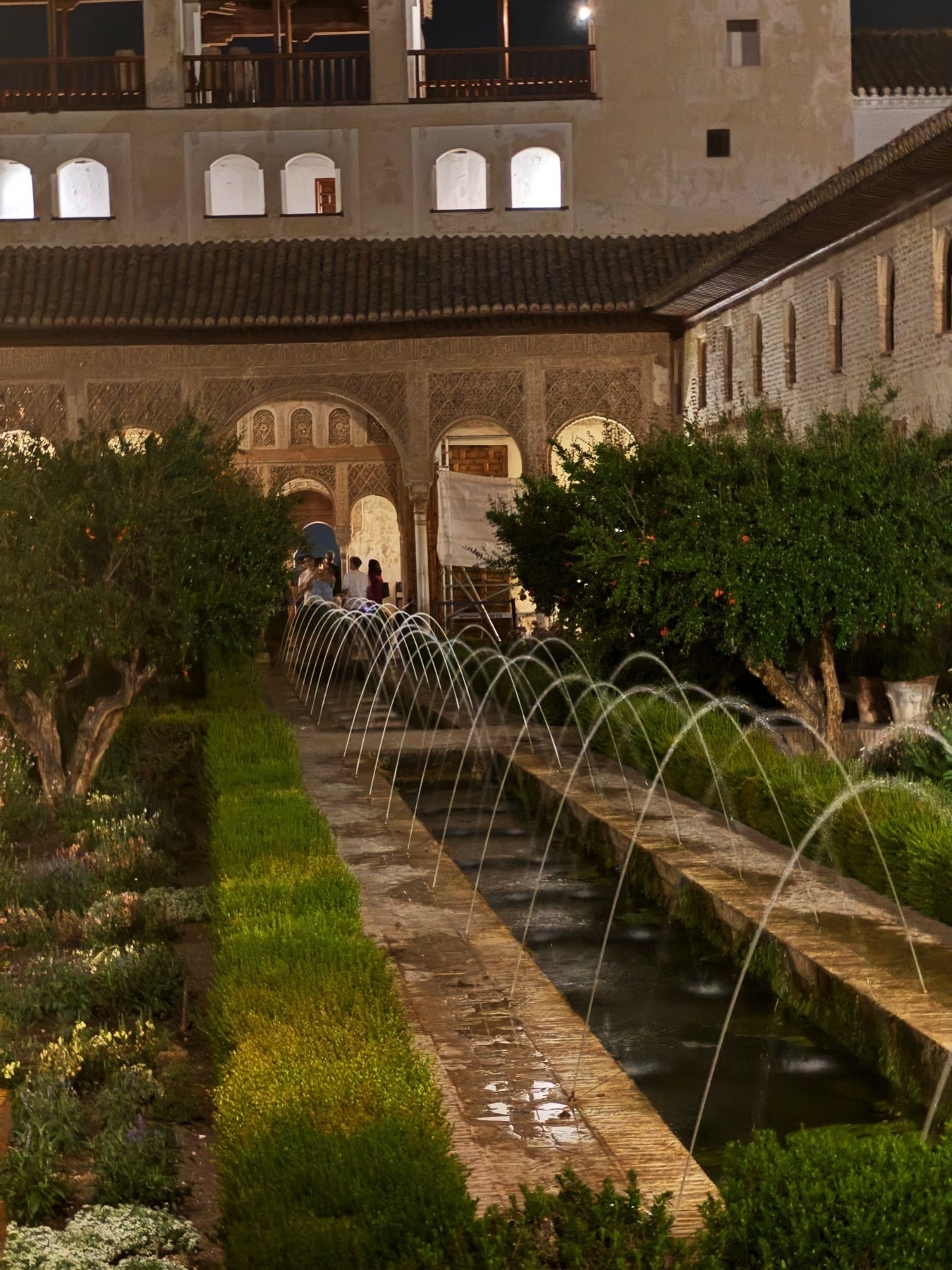
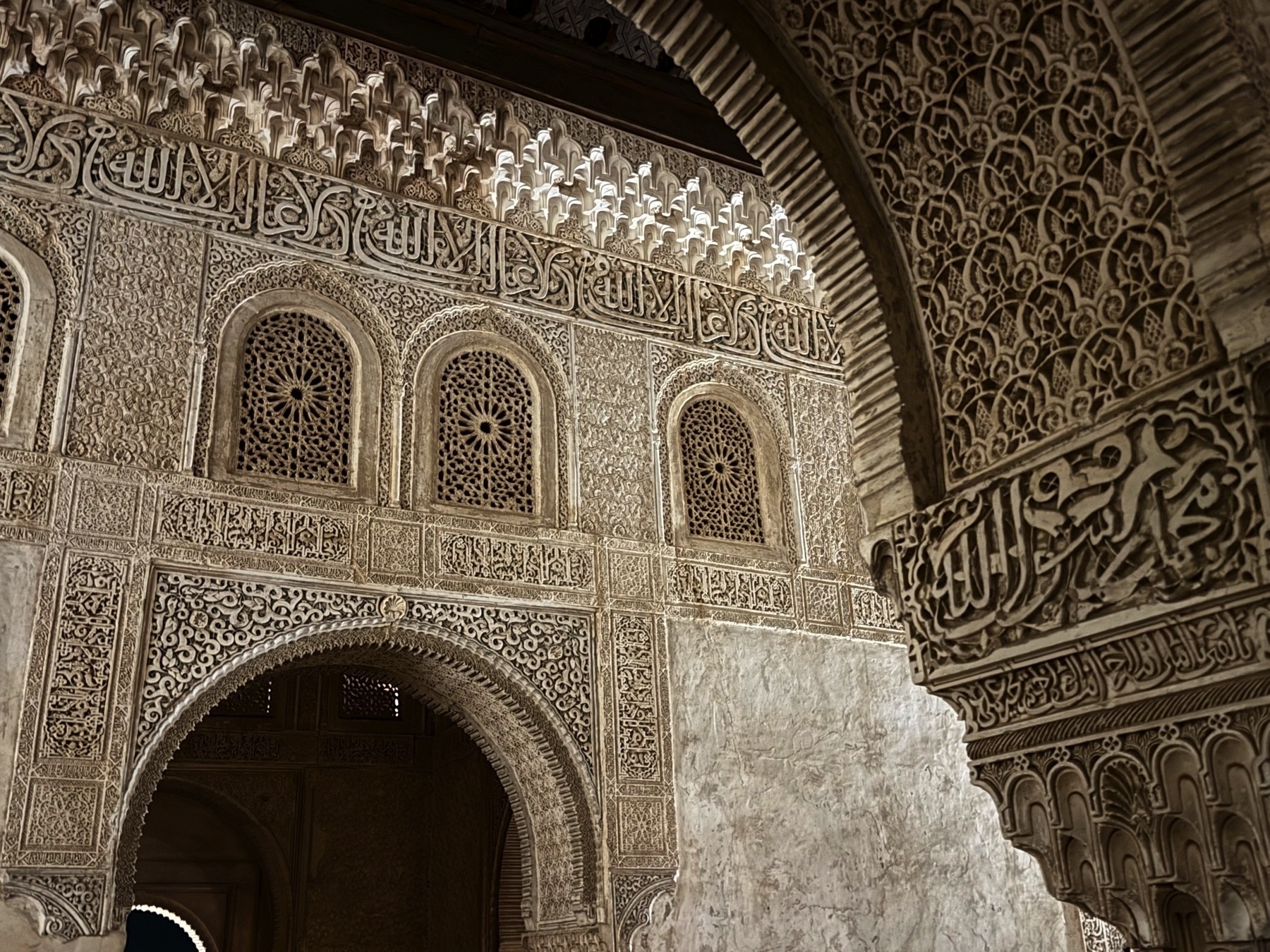



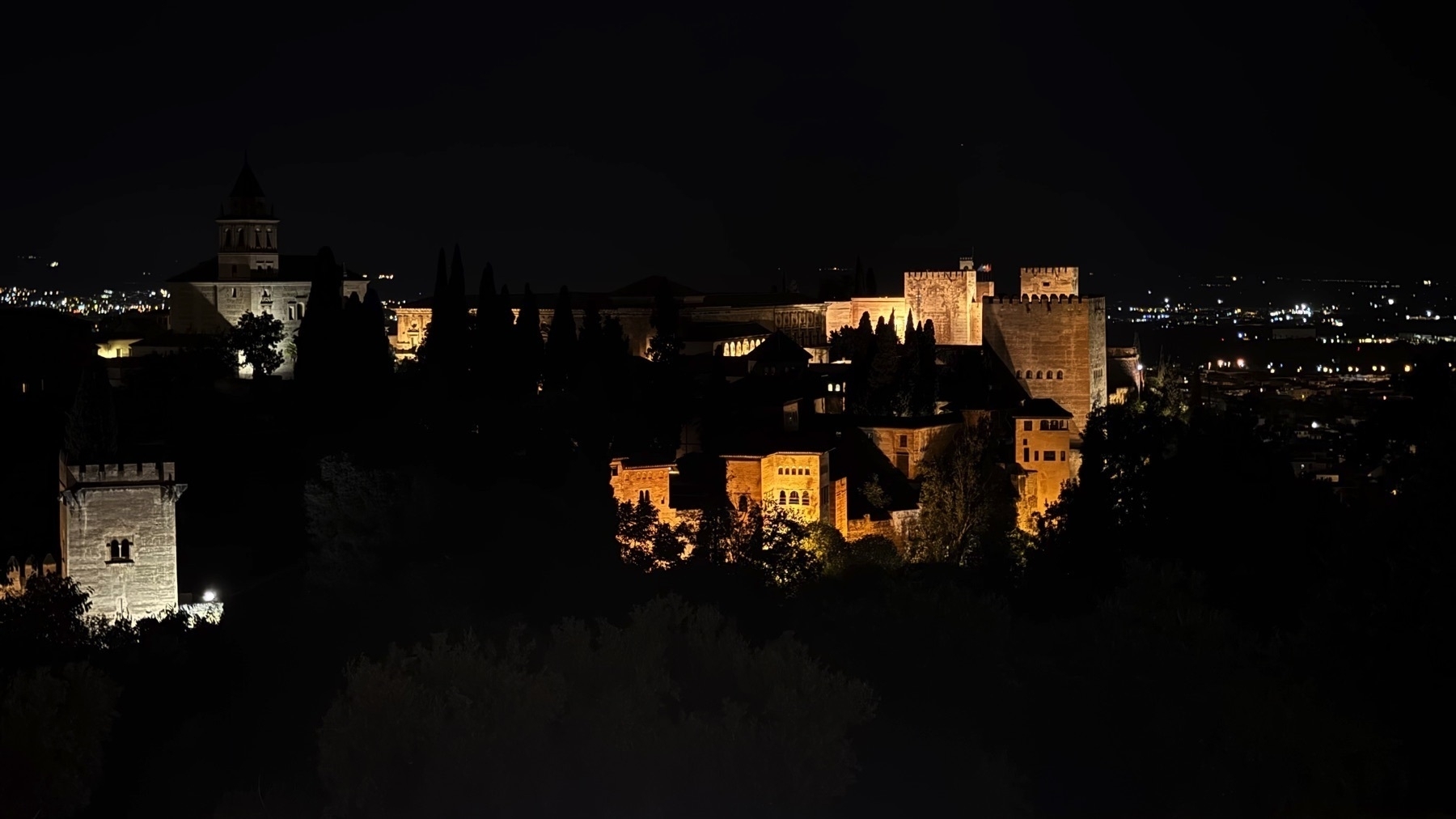
At the base of the church is the Mirador de San Nicolás, a plaza which is a beautiful viewpoint for seeing the Alhambra.
We didn’t stick around long enough for the actual sunset but still caught some great views. I would love to come again at sunset, or even dawn. 🌅
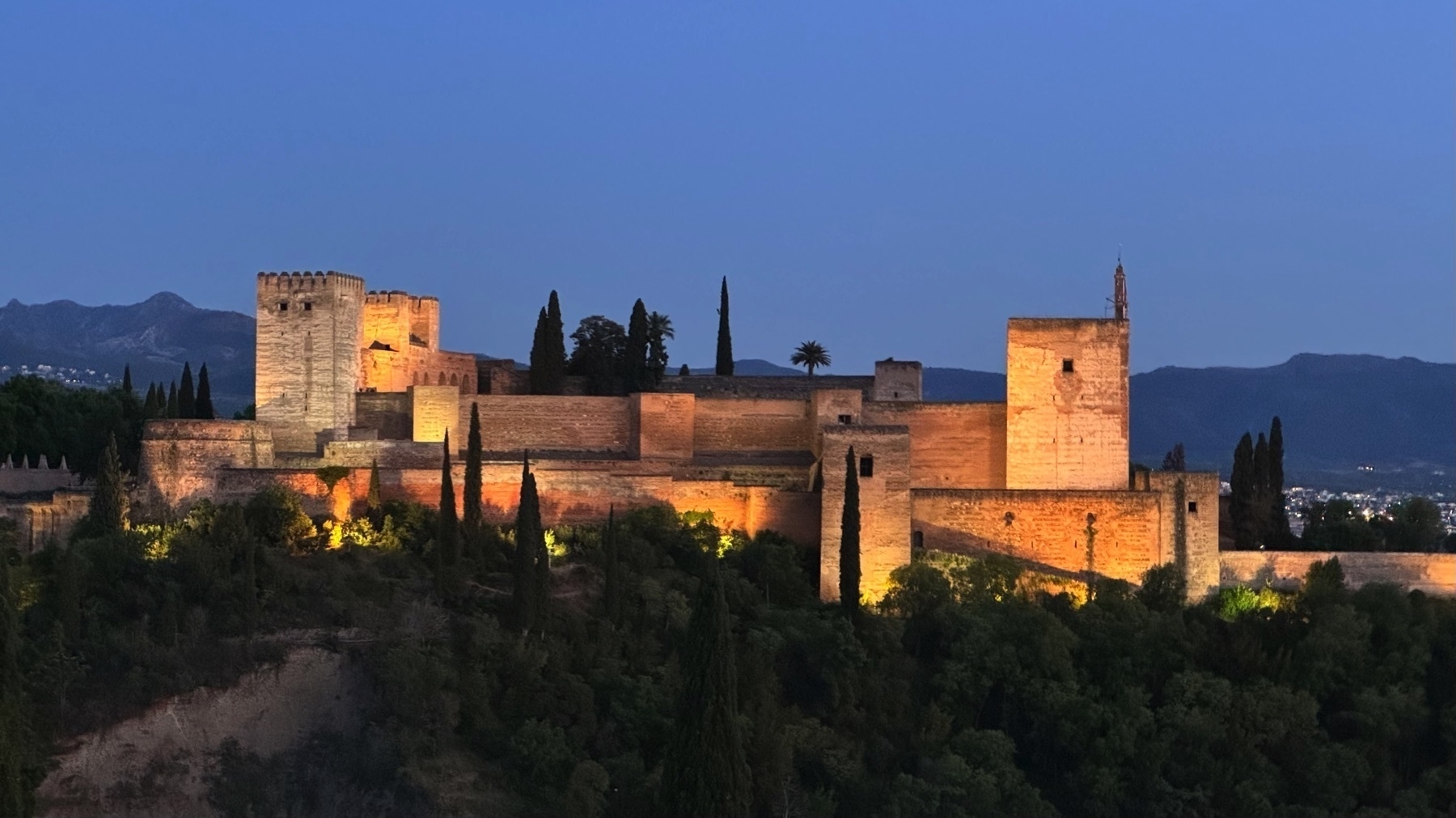

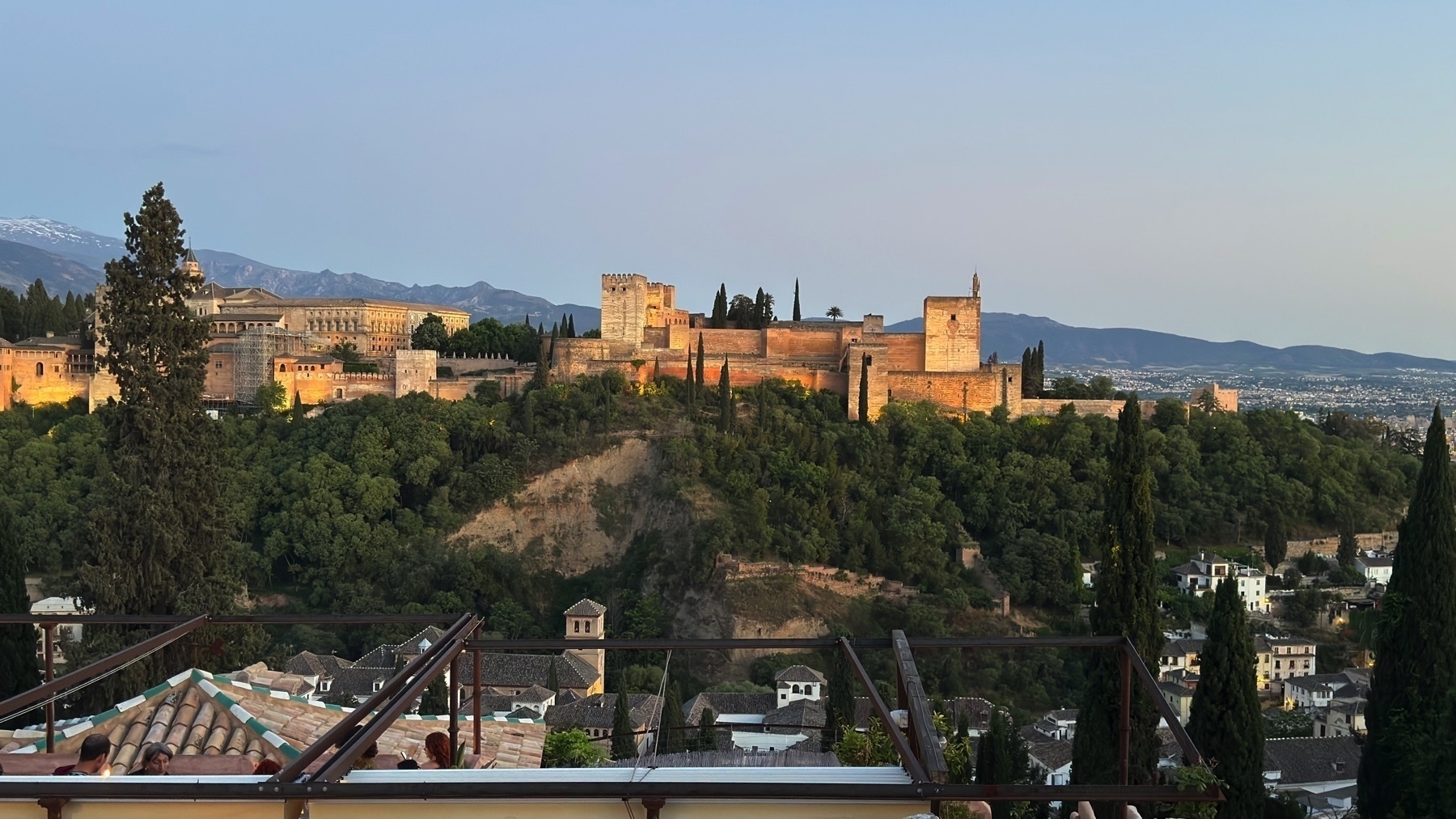
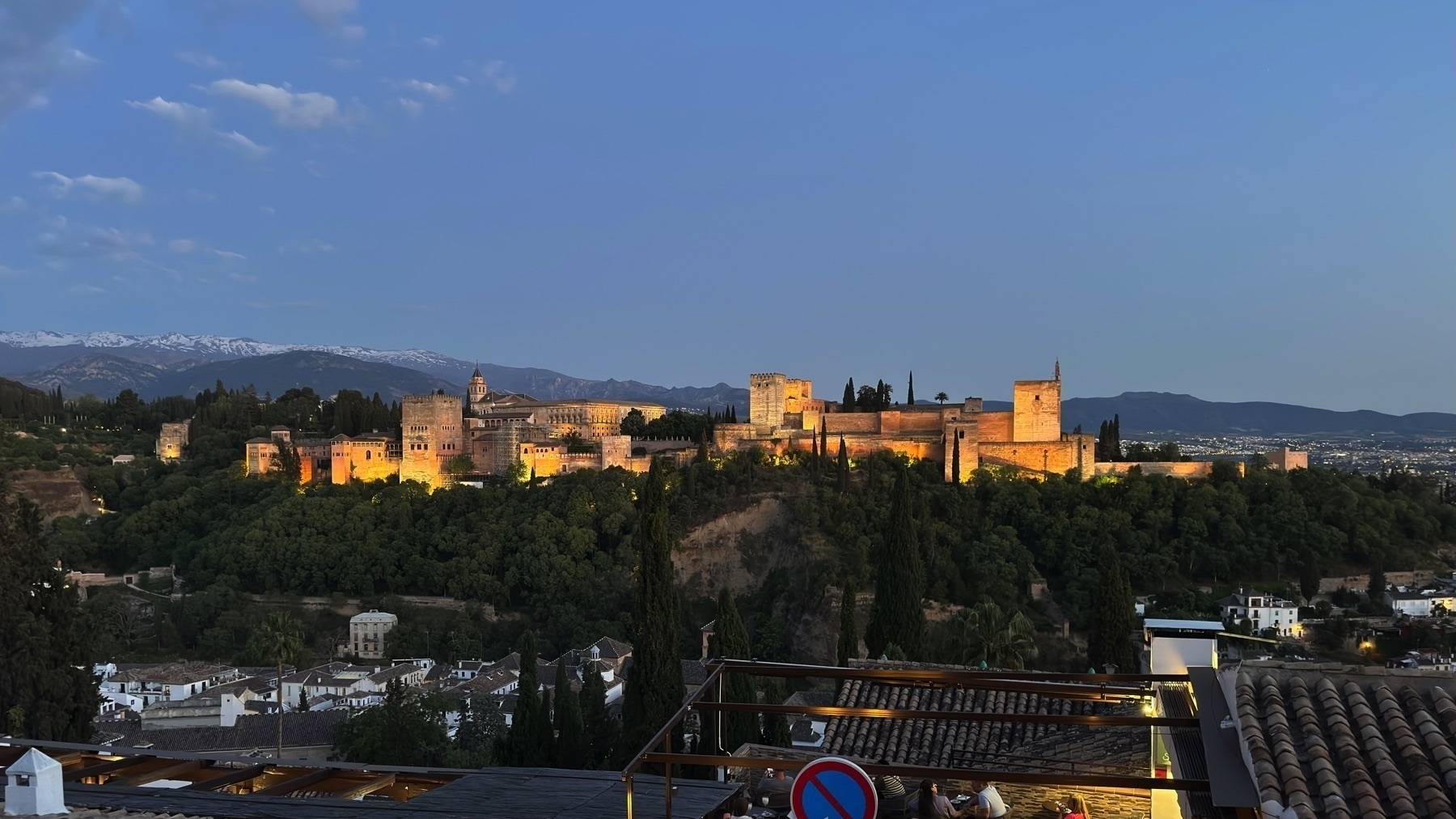

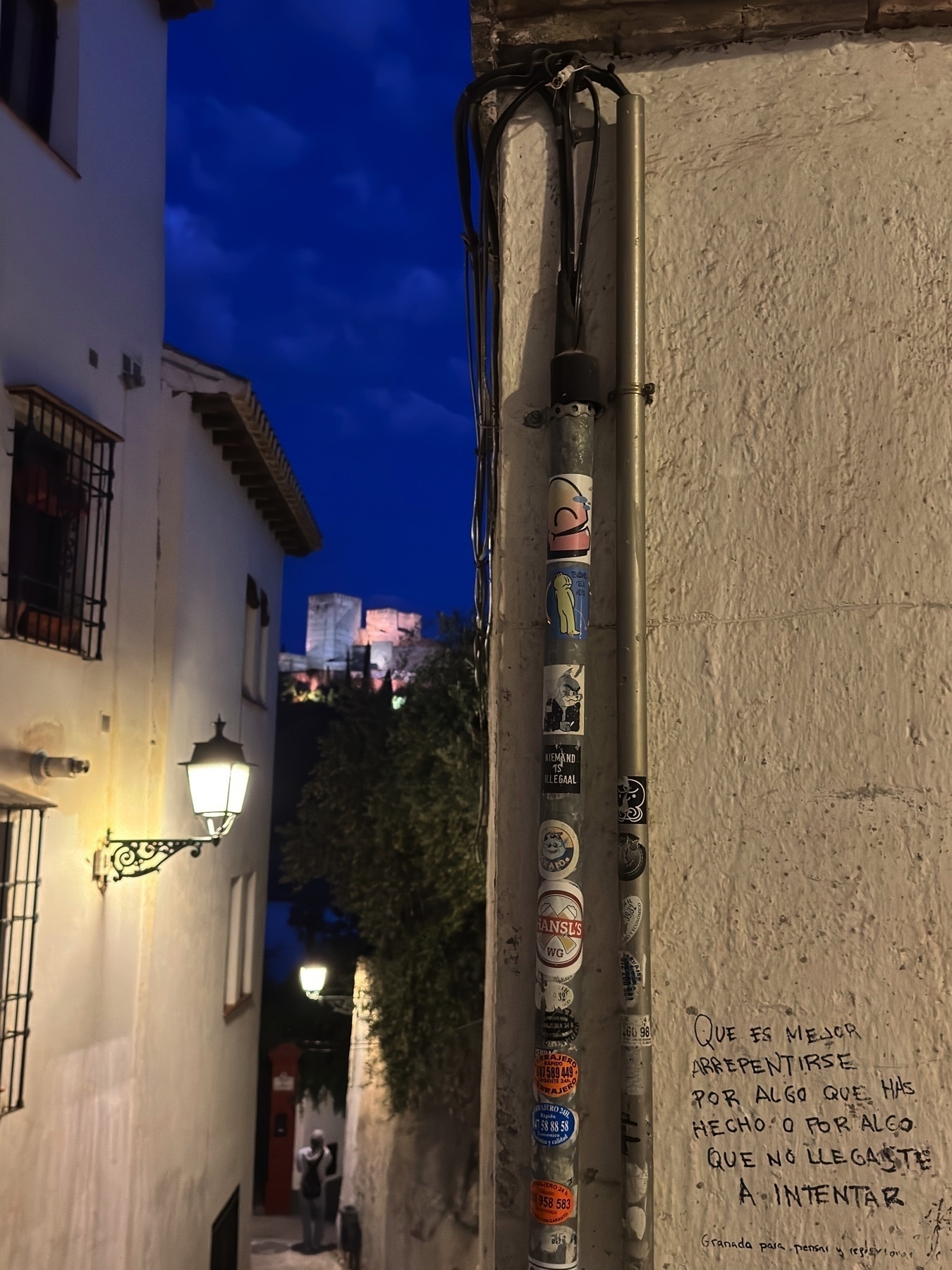
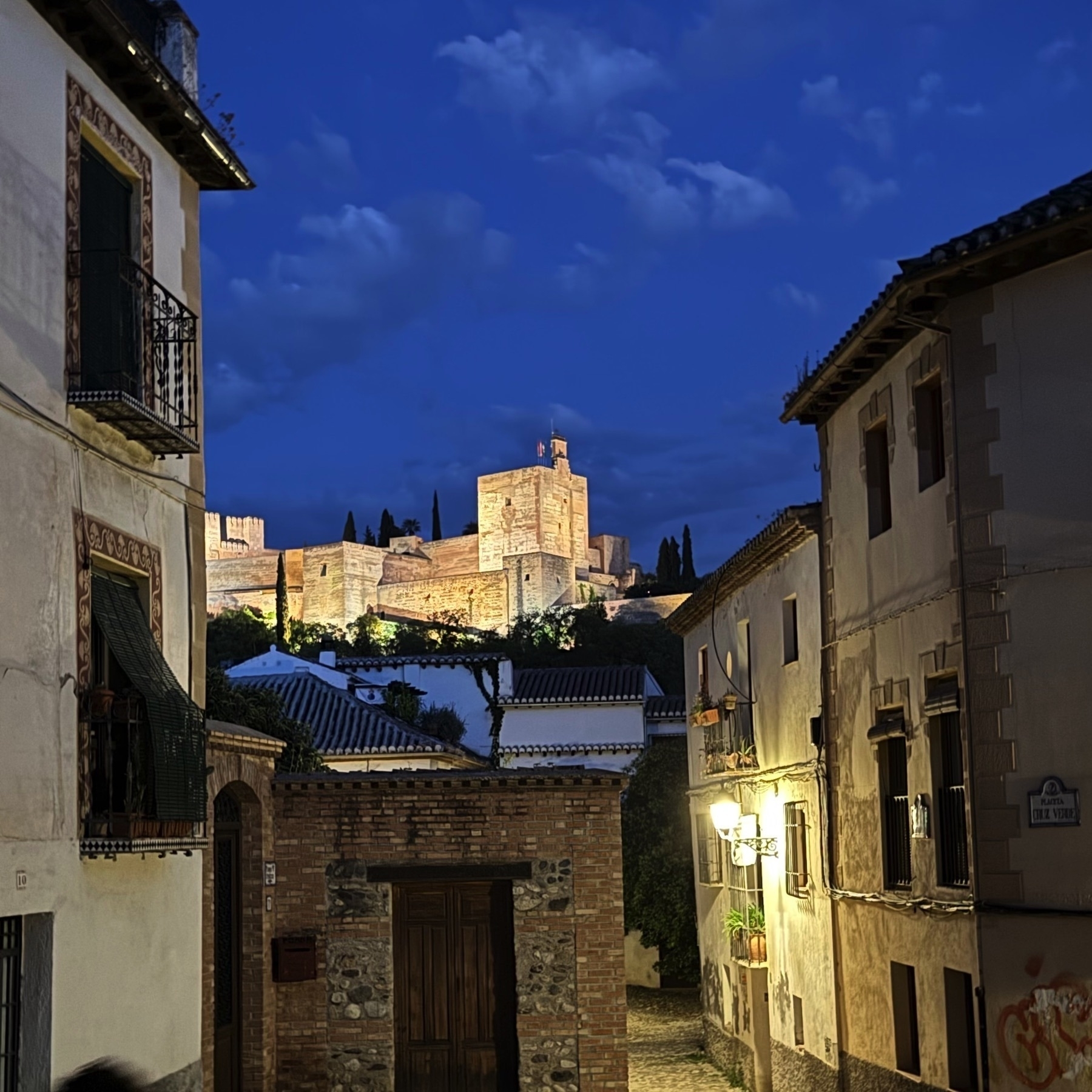
We walked up the bell tower at Iglesia de San Nicolás for some of the best views of Granada and the Alhambra.
Inside, the church has a glowing stained-glass ceiling that radiates with celestial color. The iconographic paintings echo Ethiopian Christian tradition with saints, symbols, and stories.

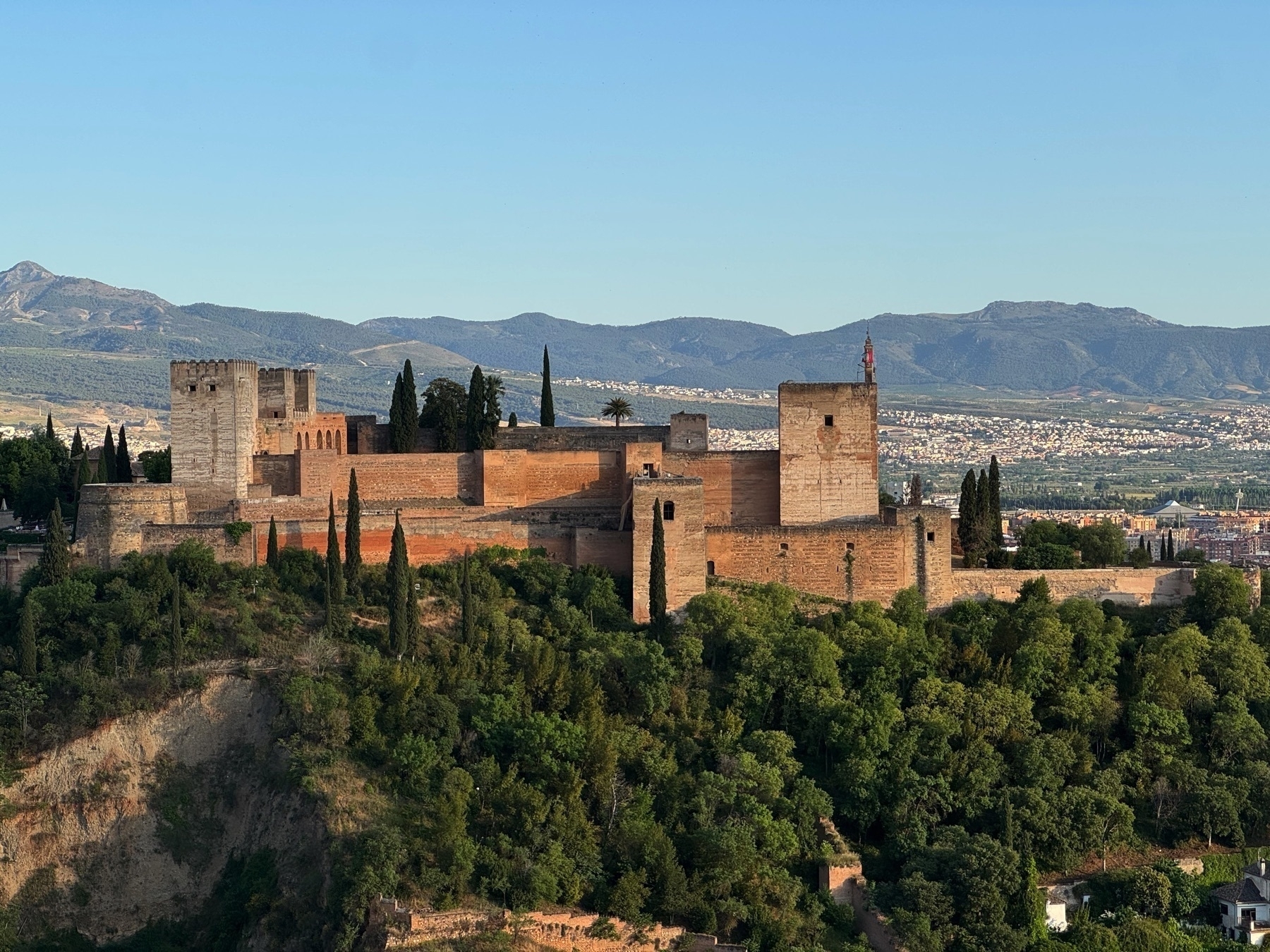
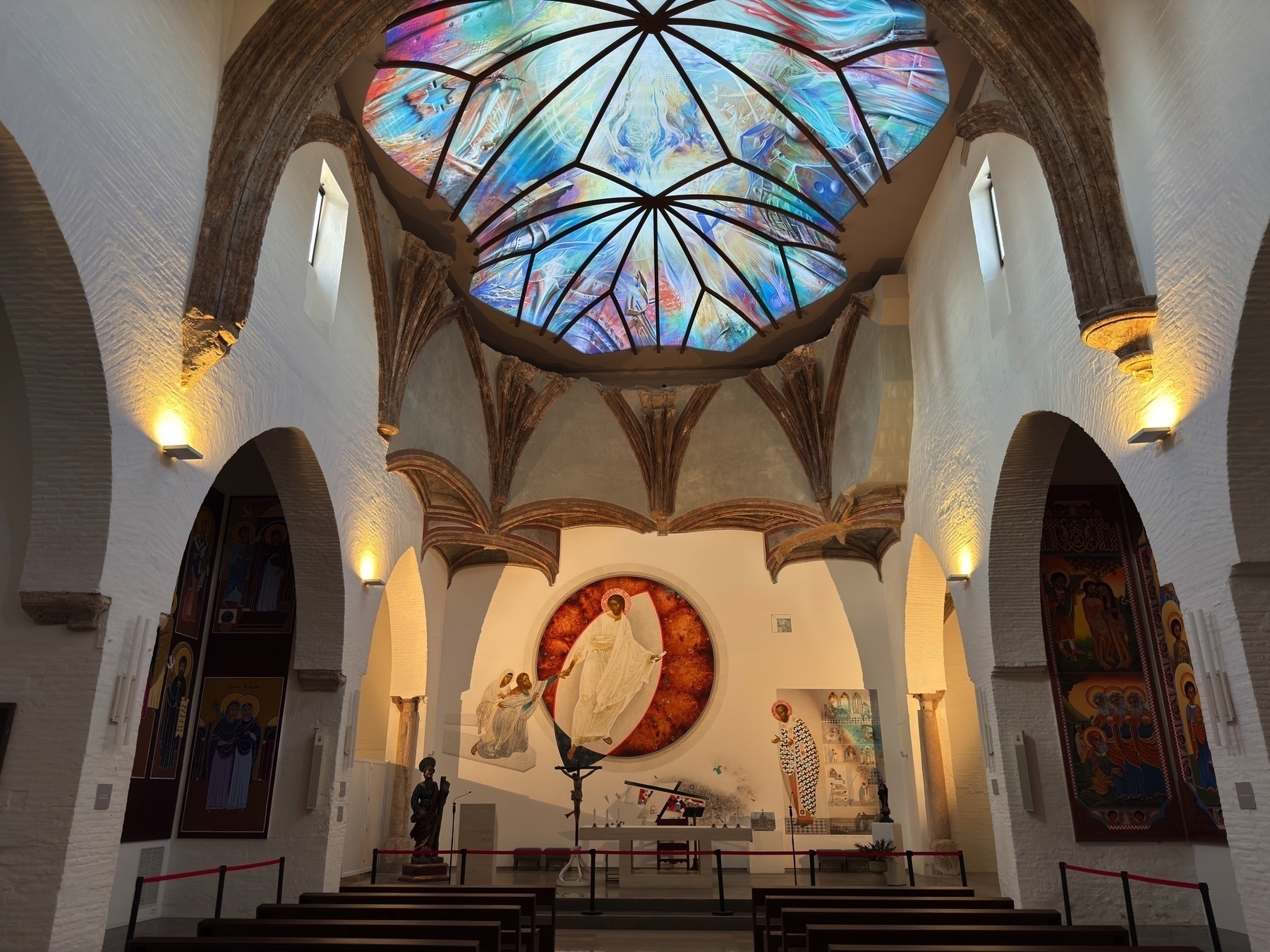
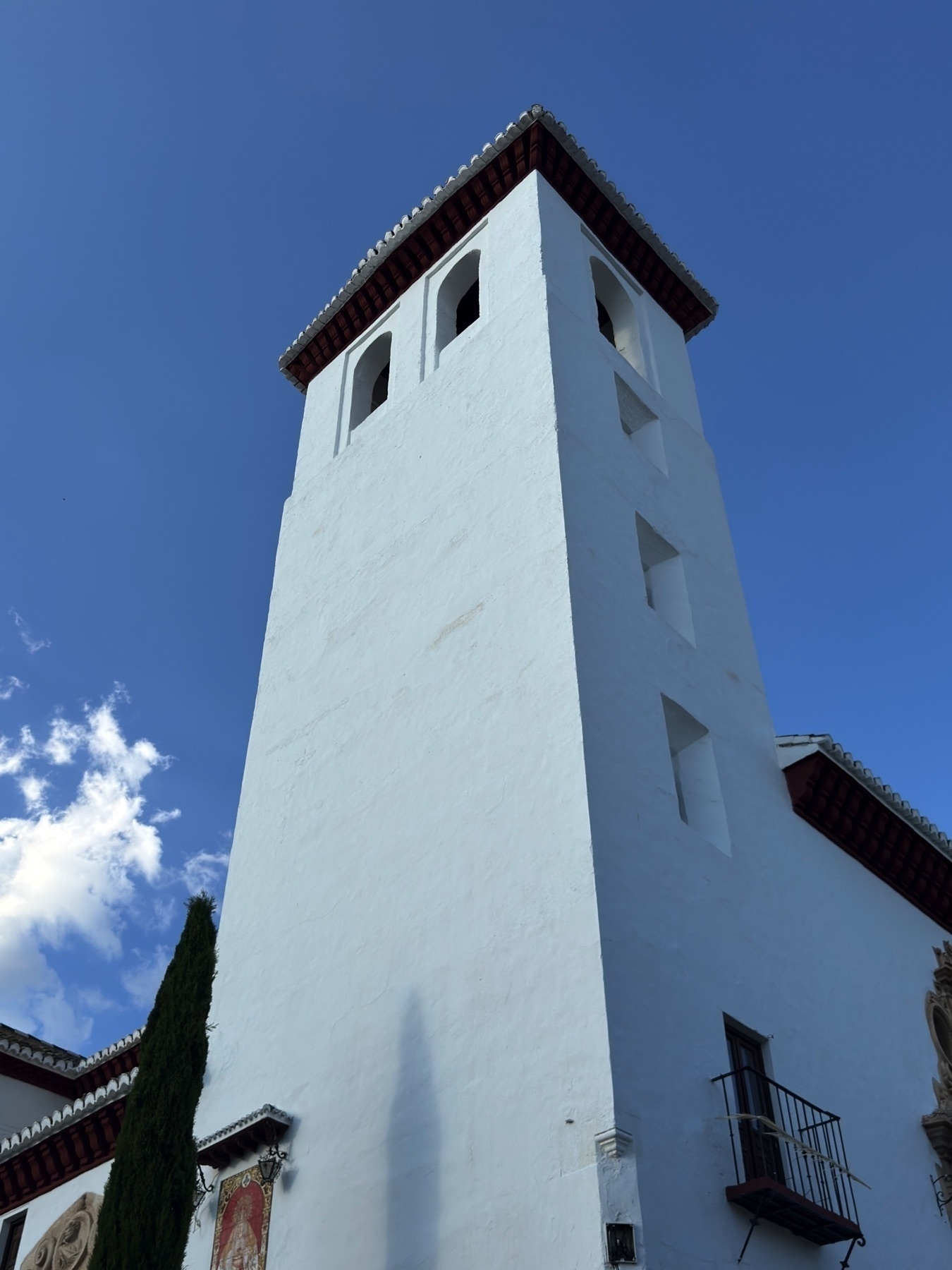
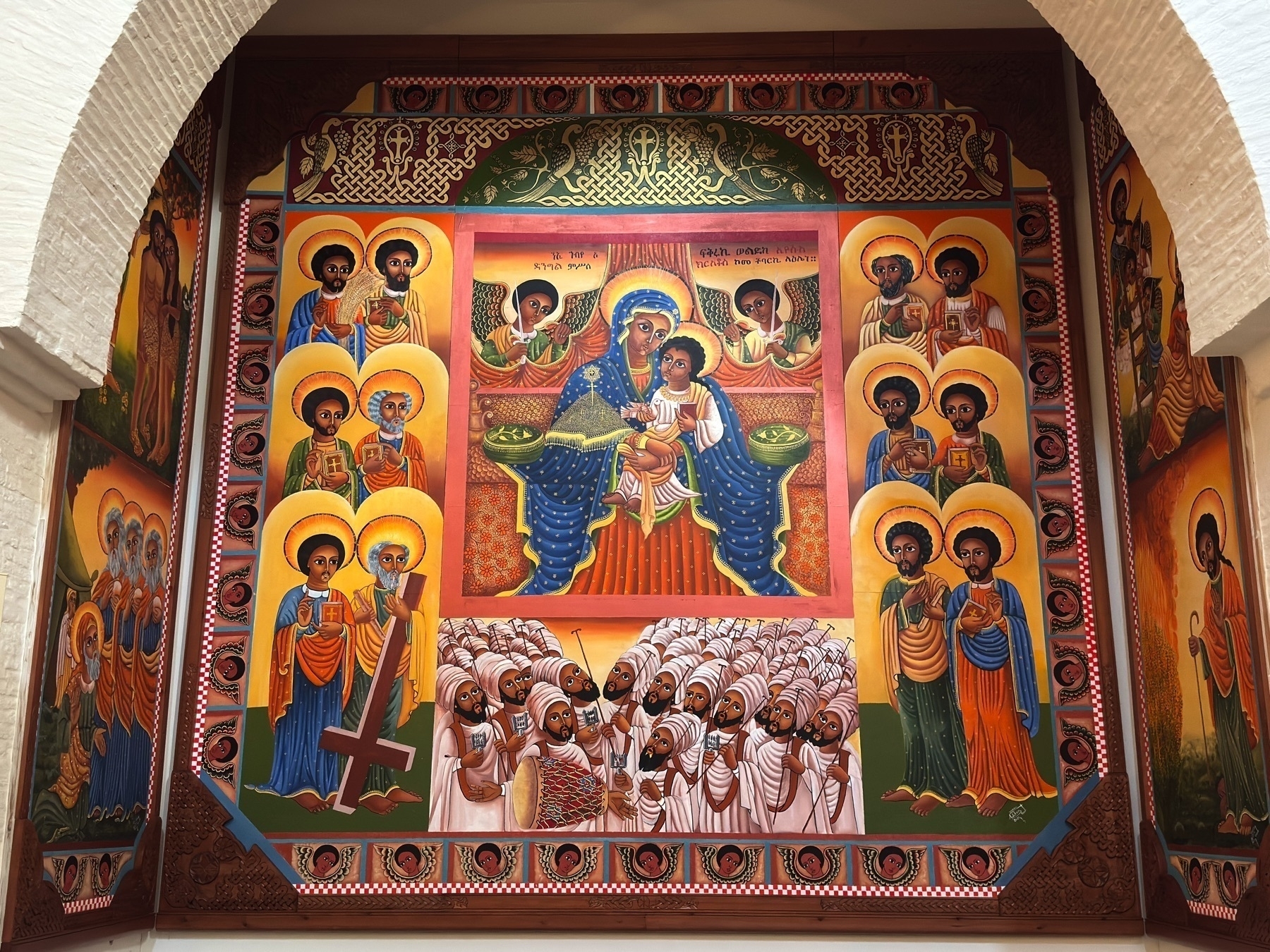
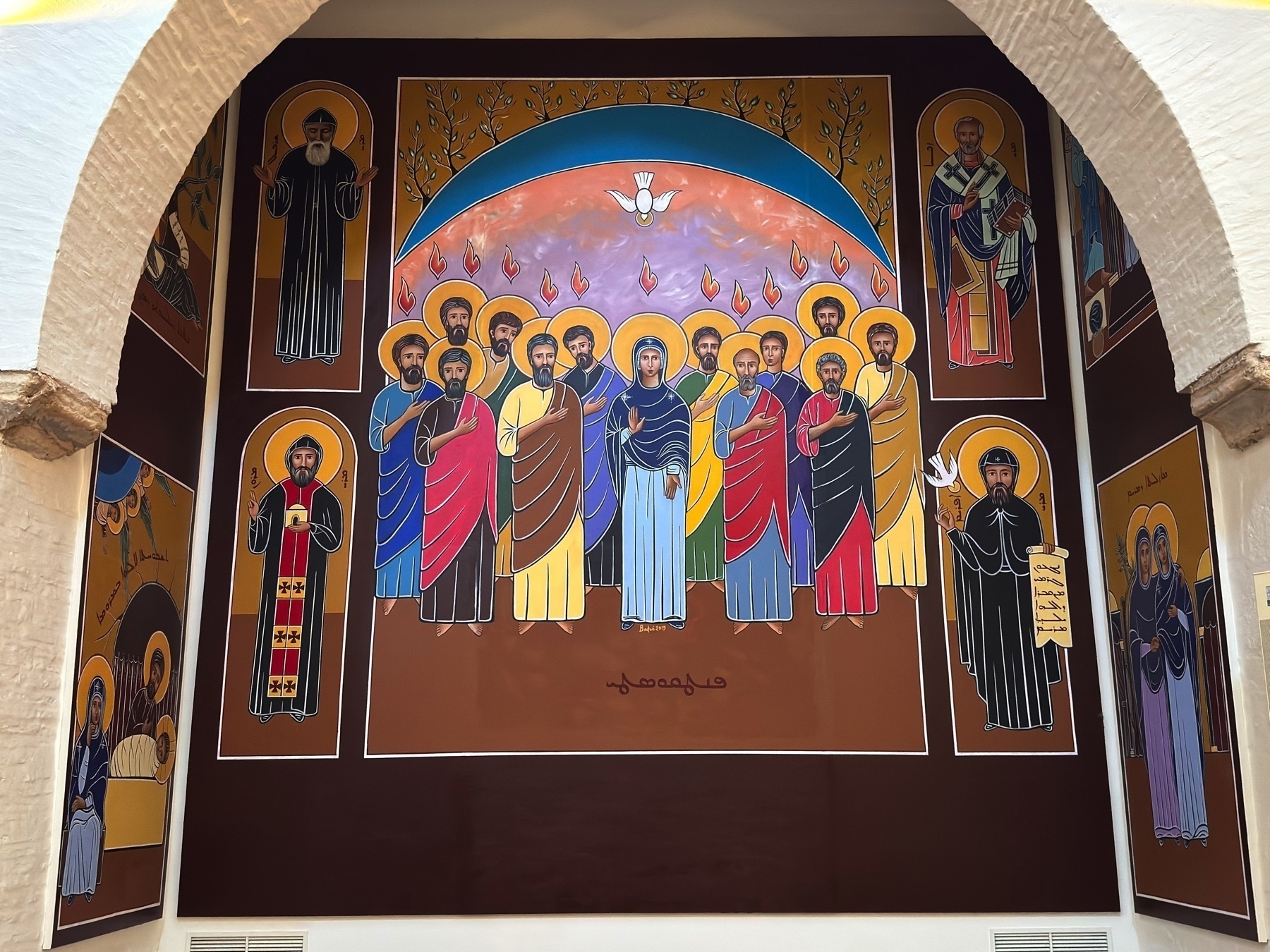
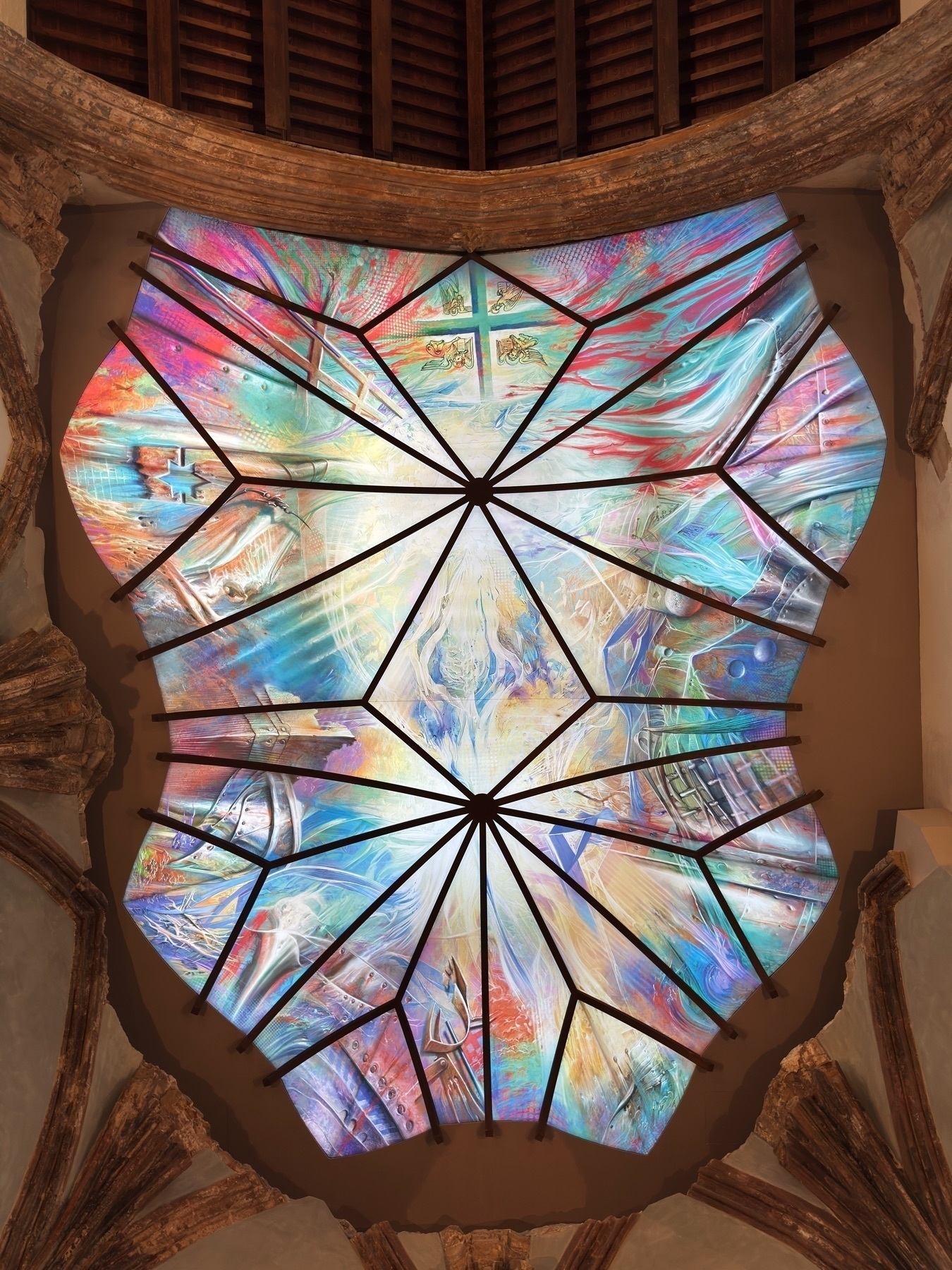
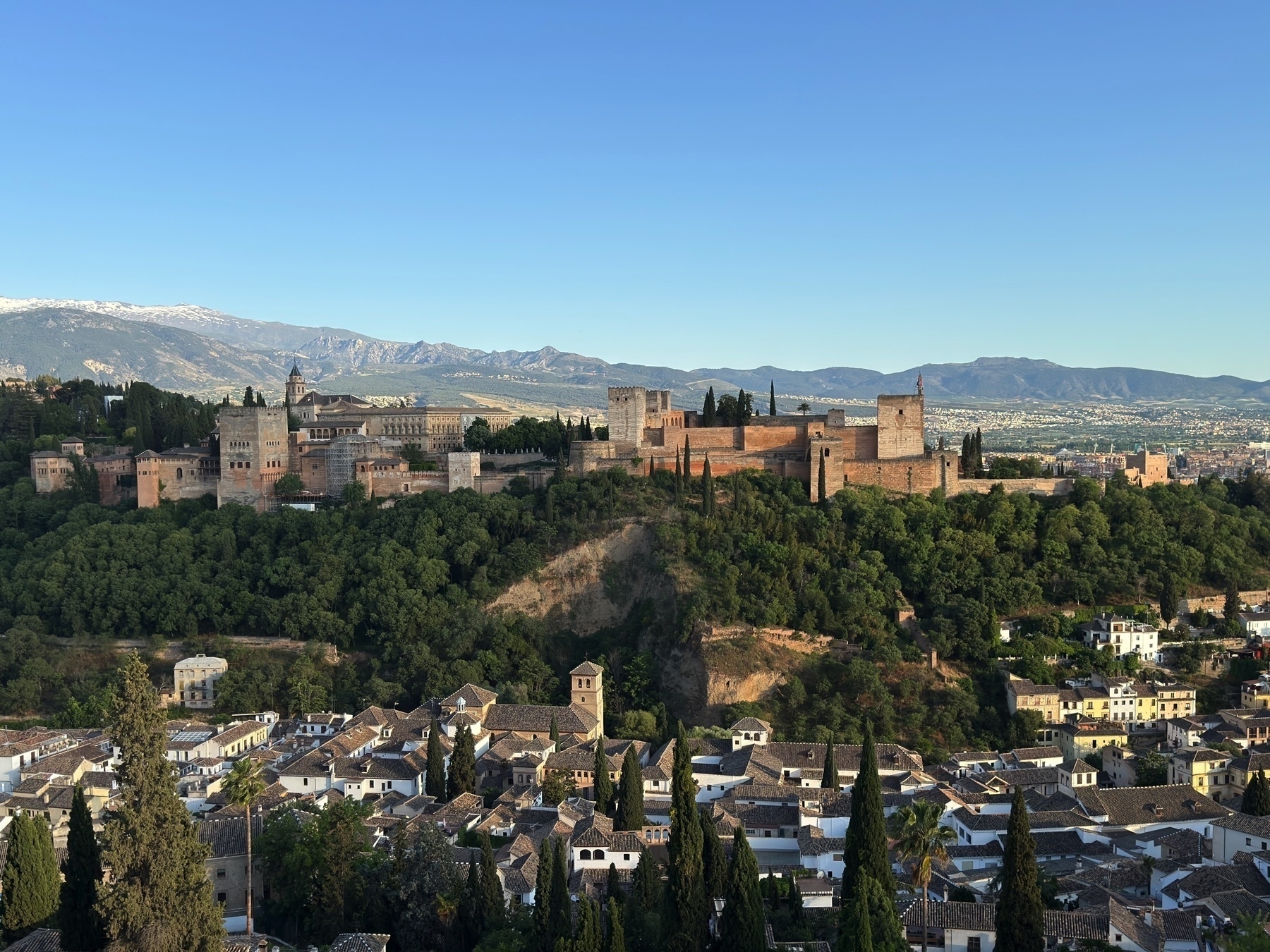

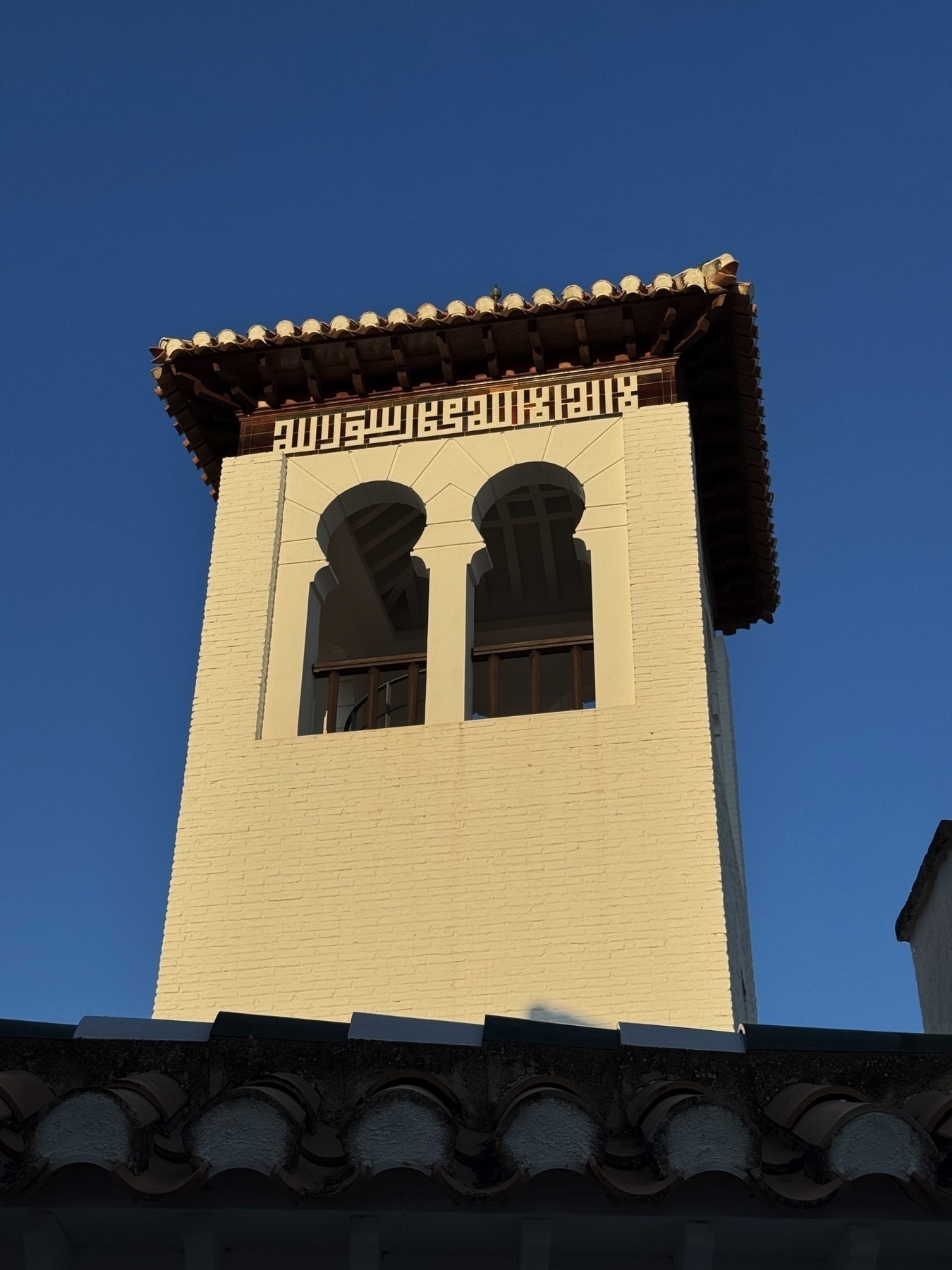
We went to Rincón de Rodri and really enjoyed their zamburiñas (scallops), paella de mariscos (seafood paella), gambas al ajillo (garlic shrimp), and tomate aliñado (seasoned tomato salad). For “free” (when we ordered drinks) they also gave us the fritura de gambas (fried shrimp).
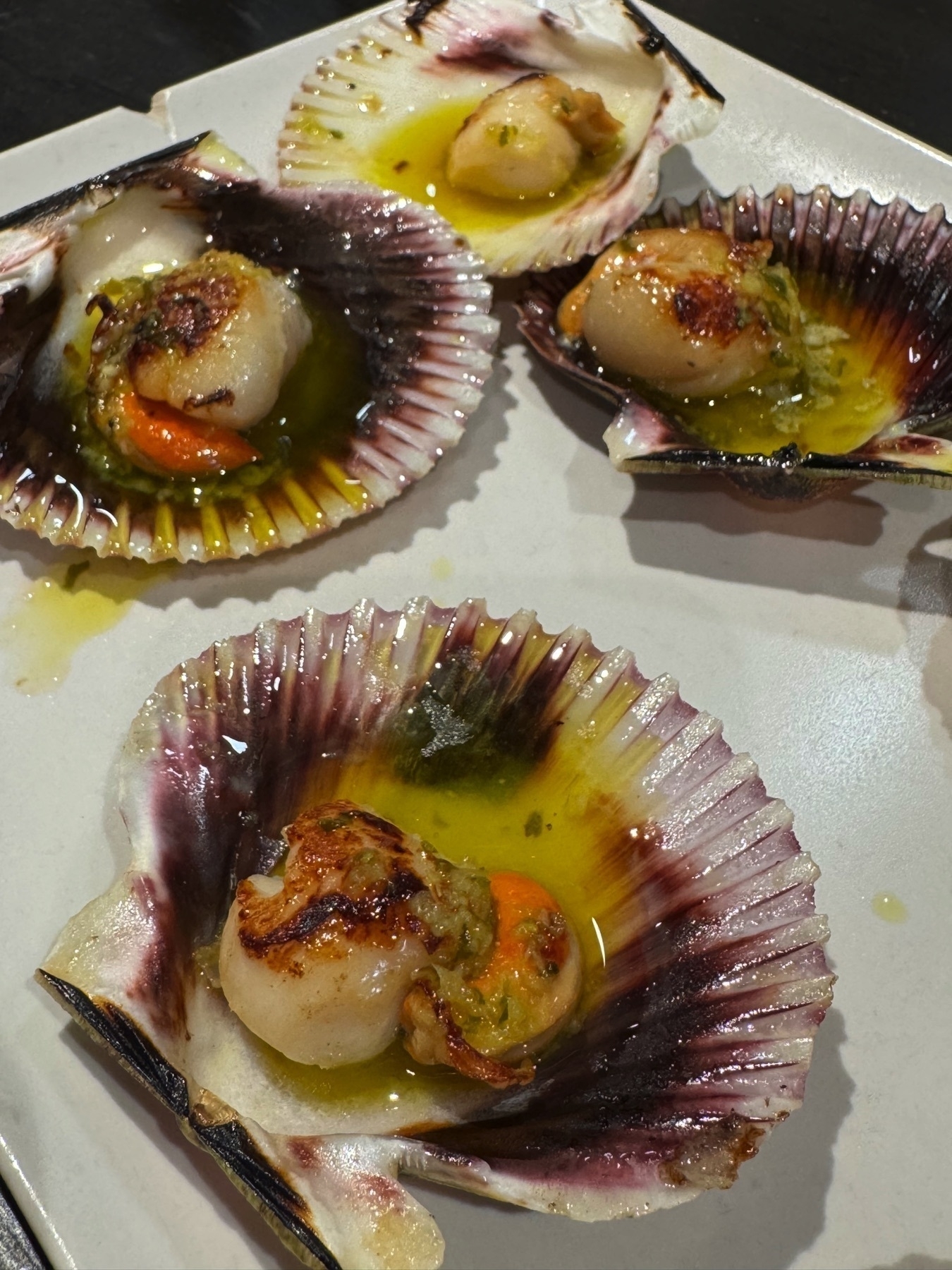
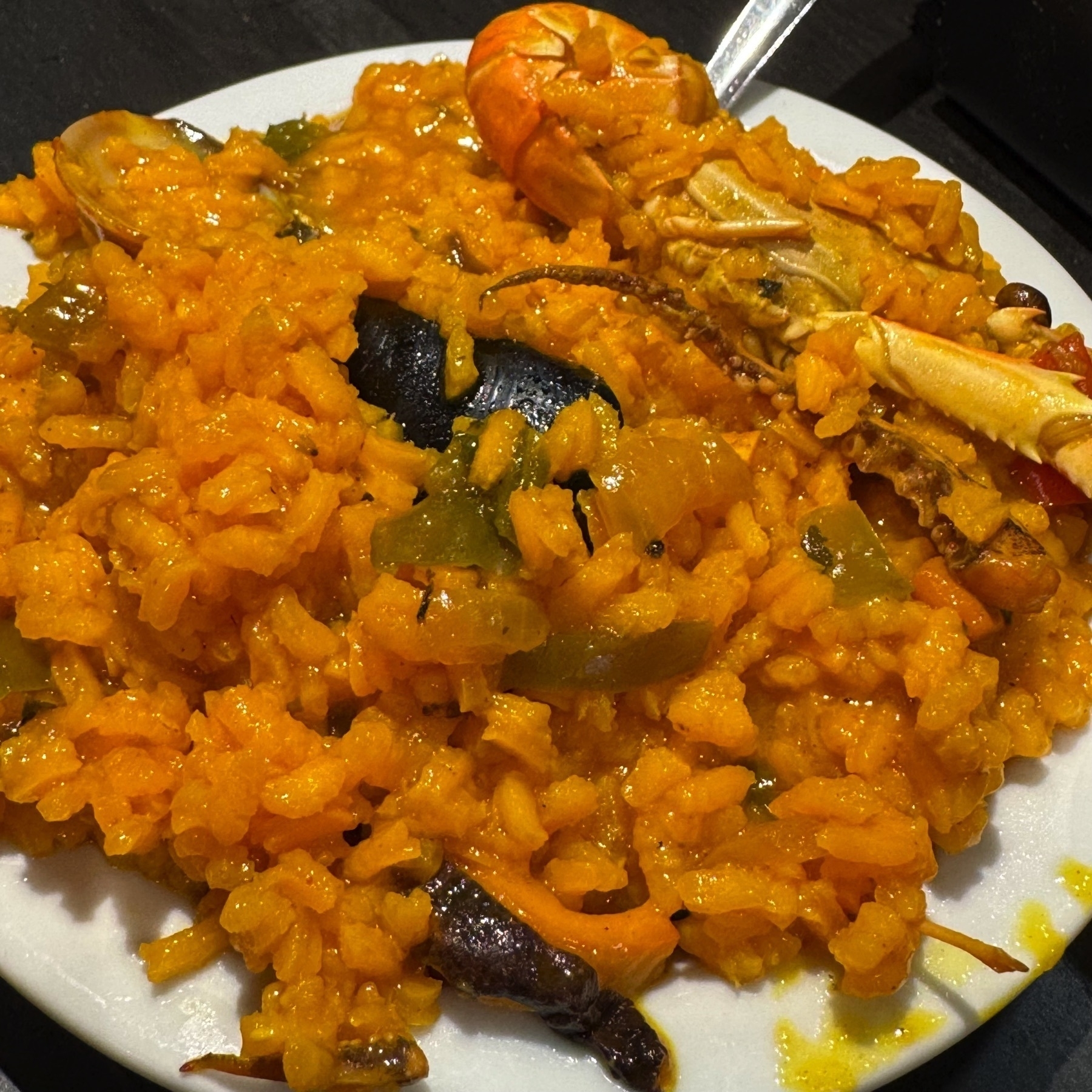
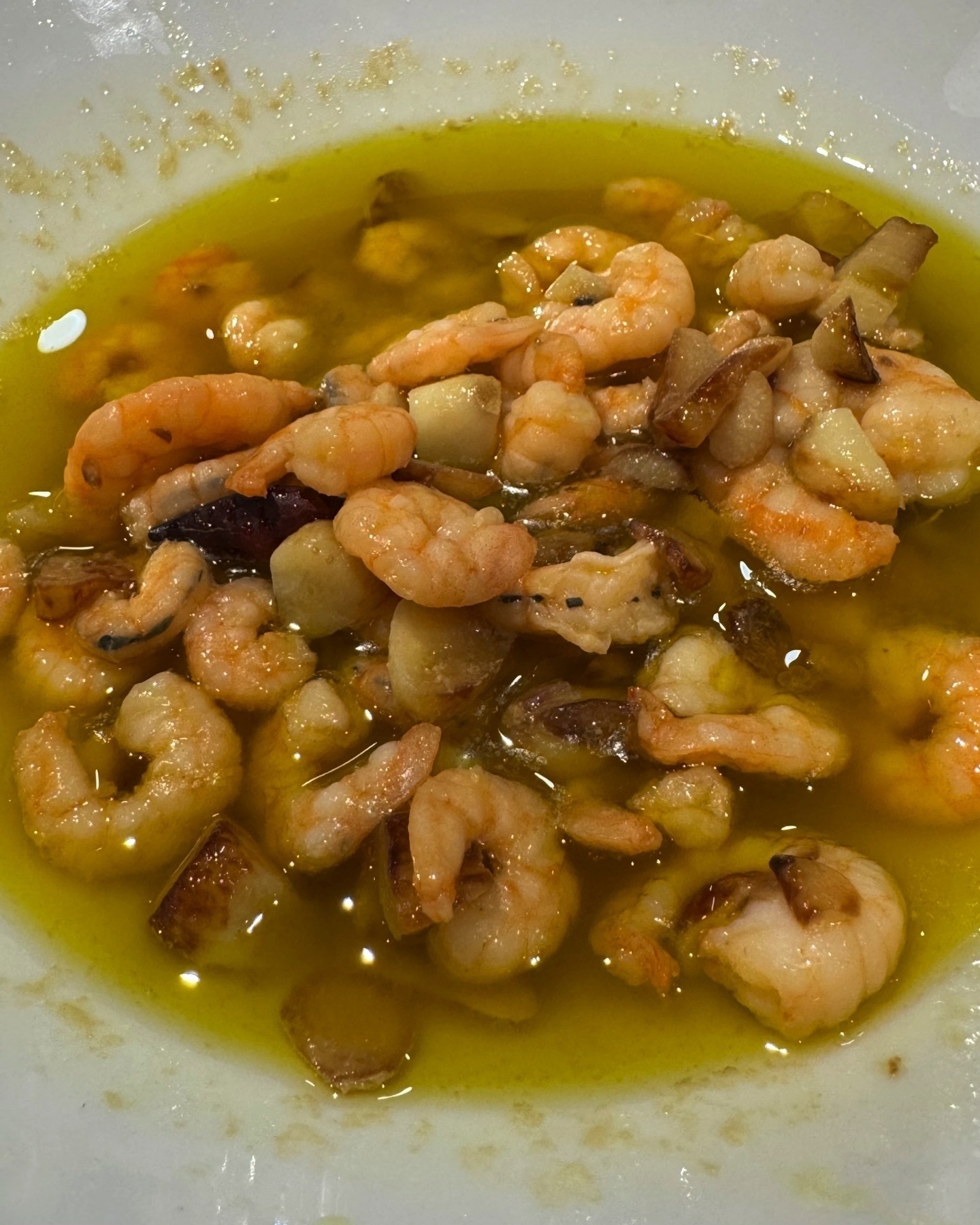

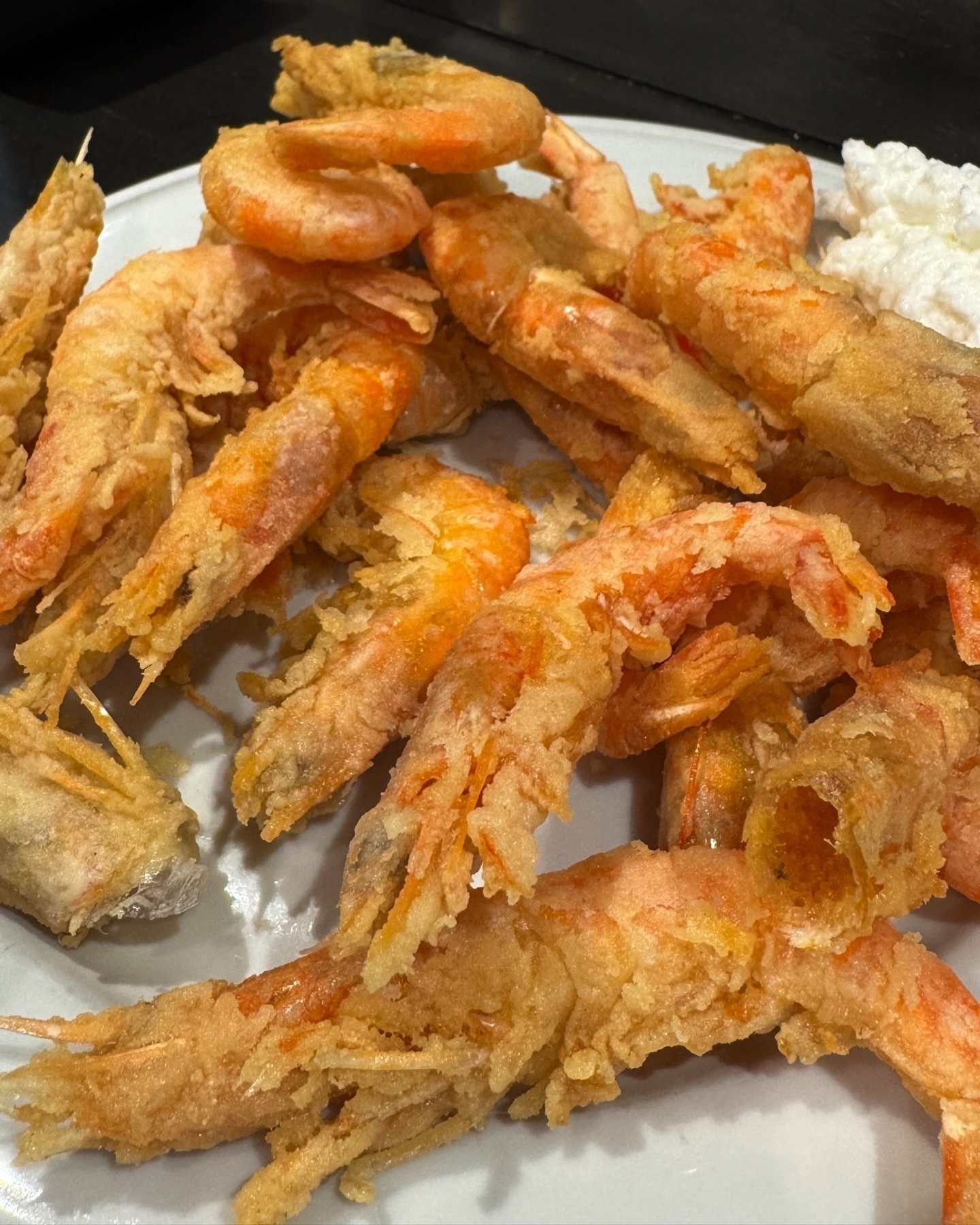
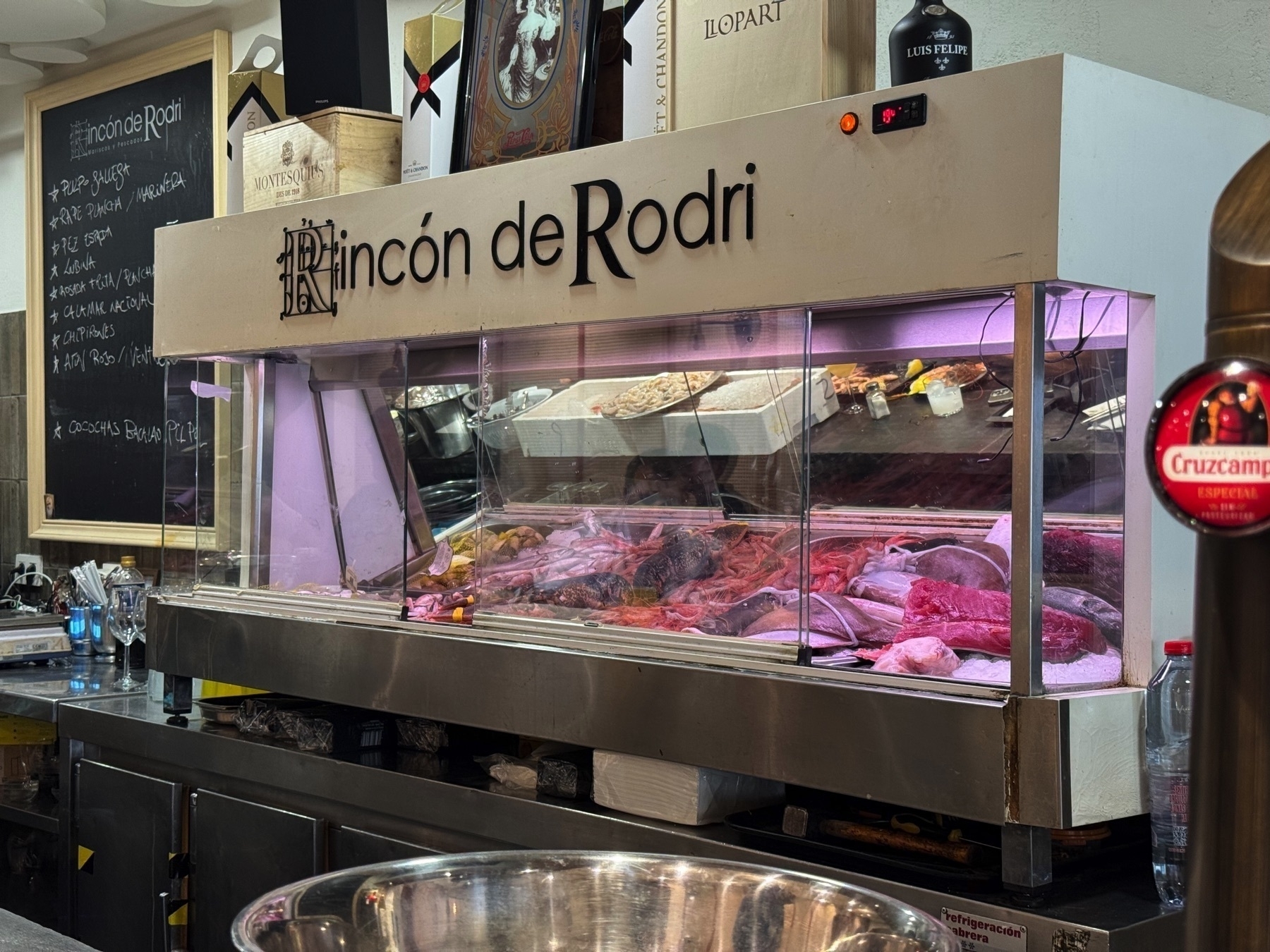
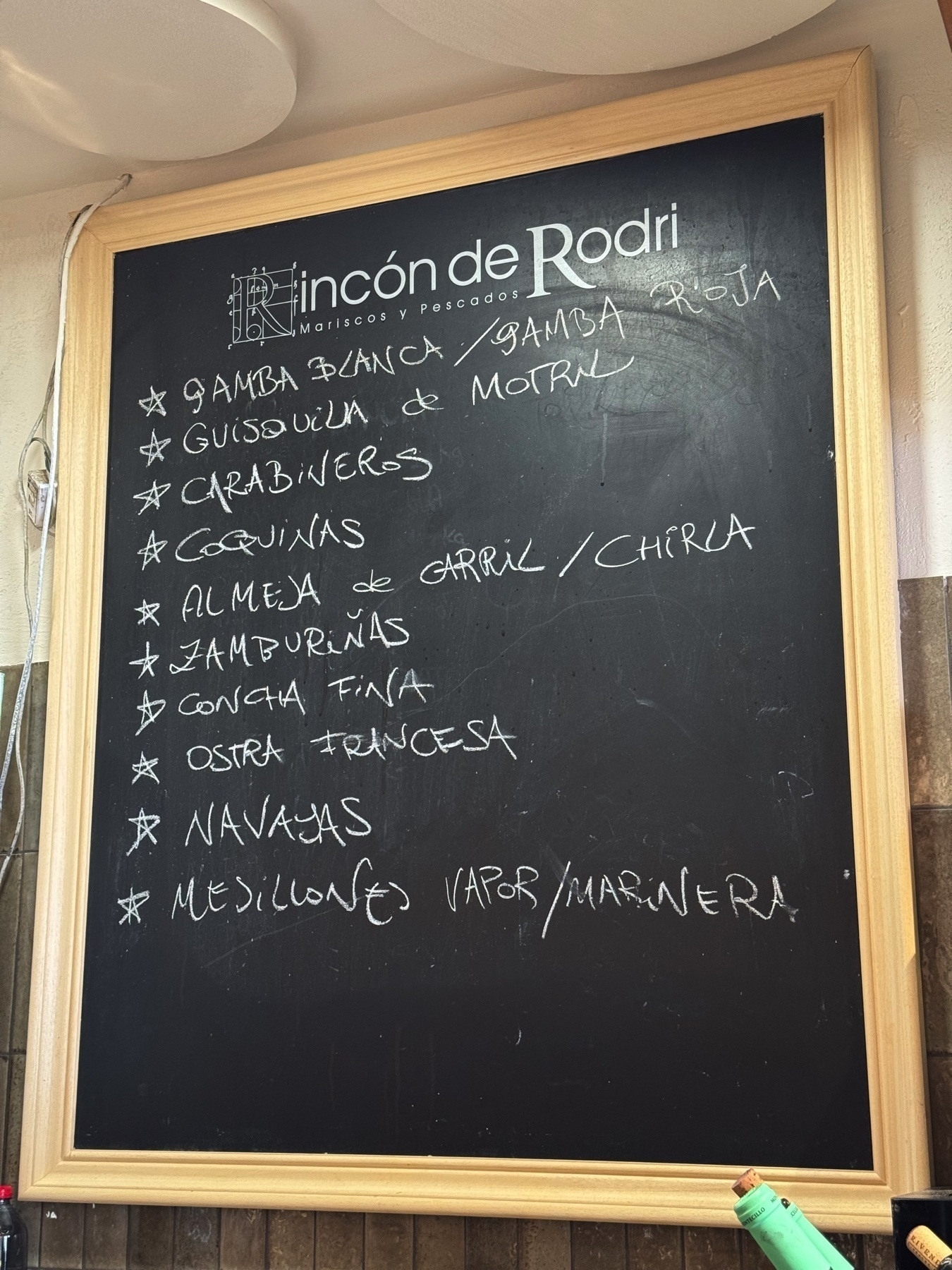
The Granada Cathedral is enormous. Inside, towering columns rise into sweeping arches that seem to hold up the entire sky. Even the “smaller” chapels lining the nave feel monumental. Each one is richly decorated and spacious enough to be a little church on its own.
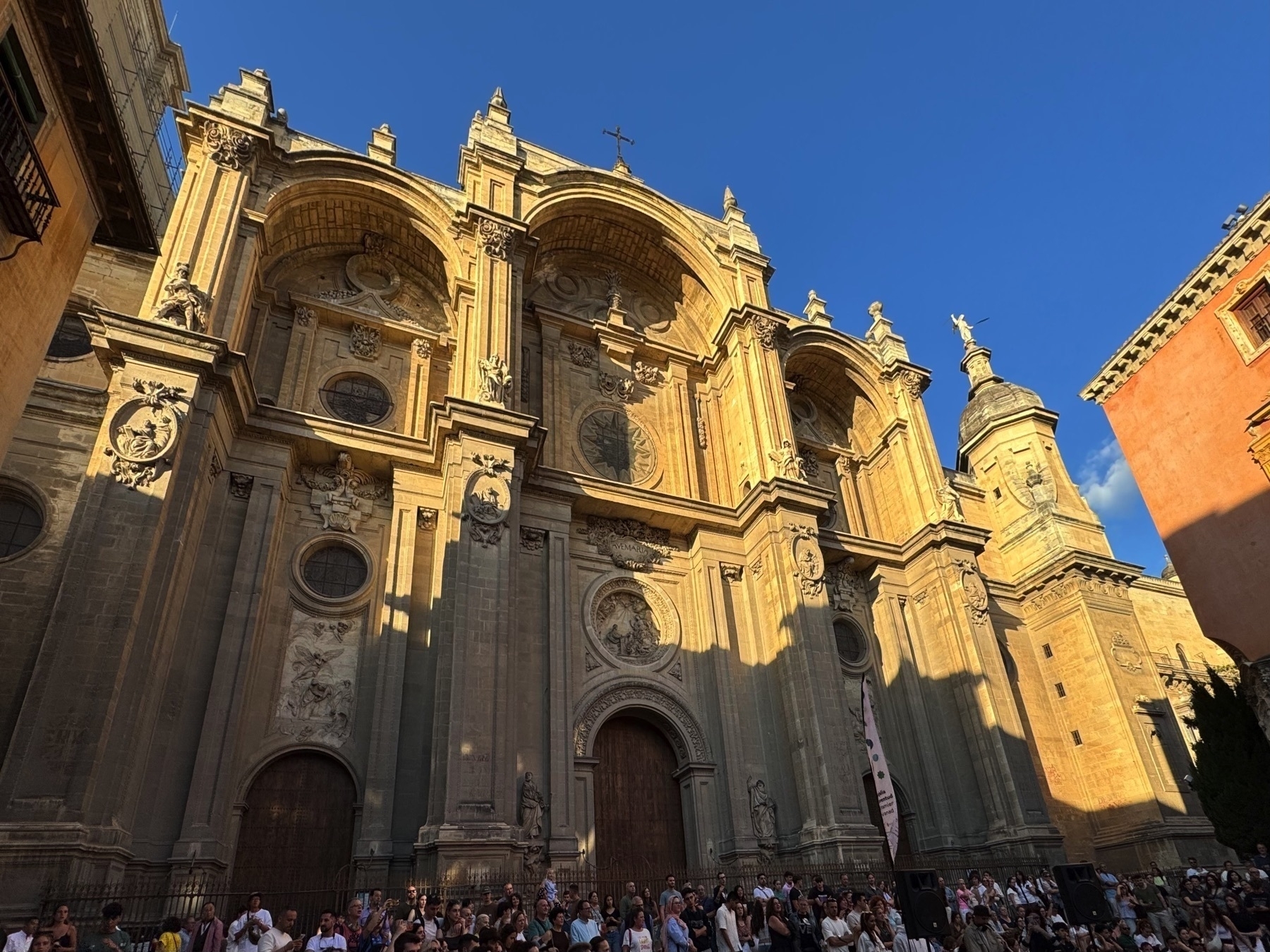
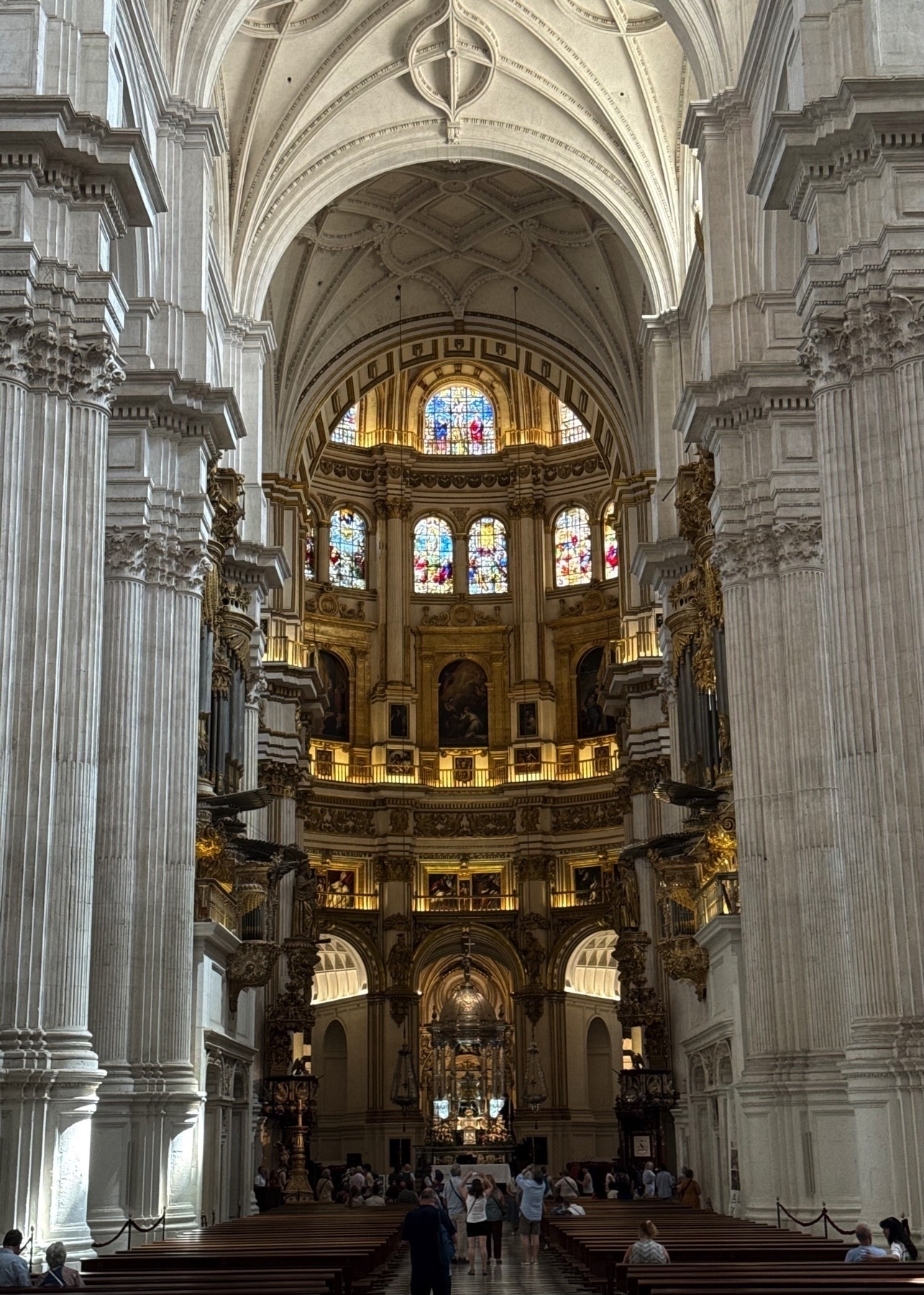
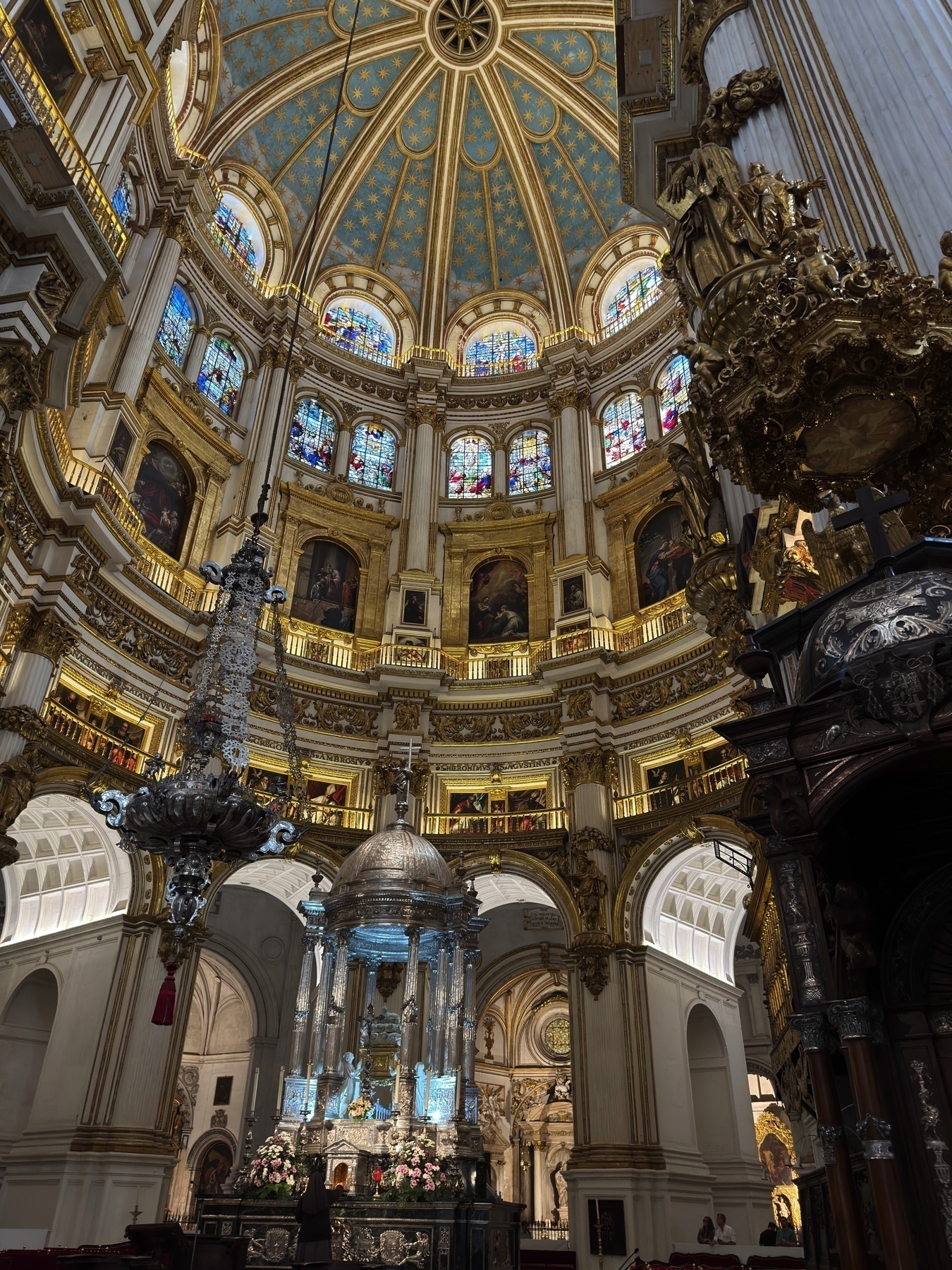

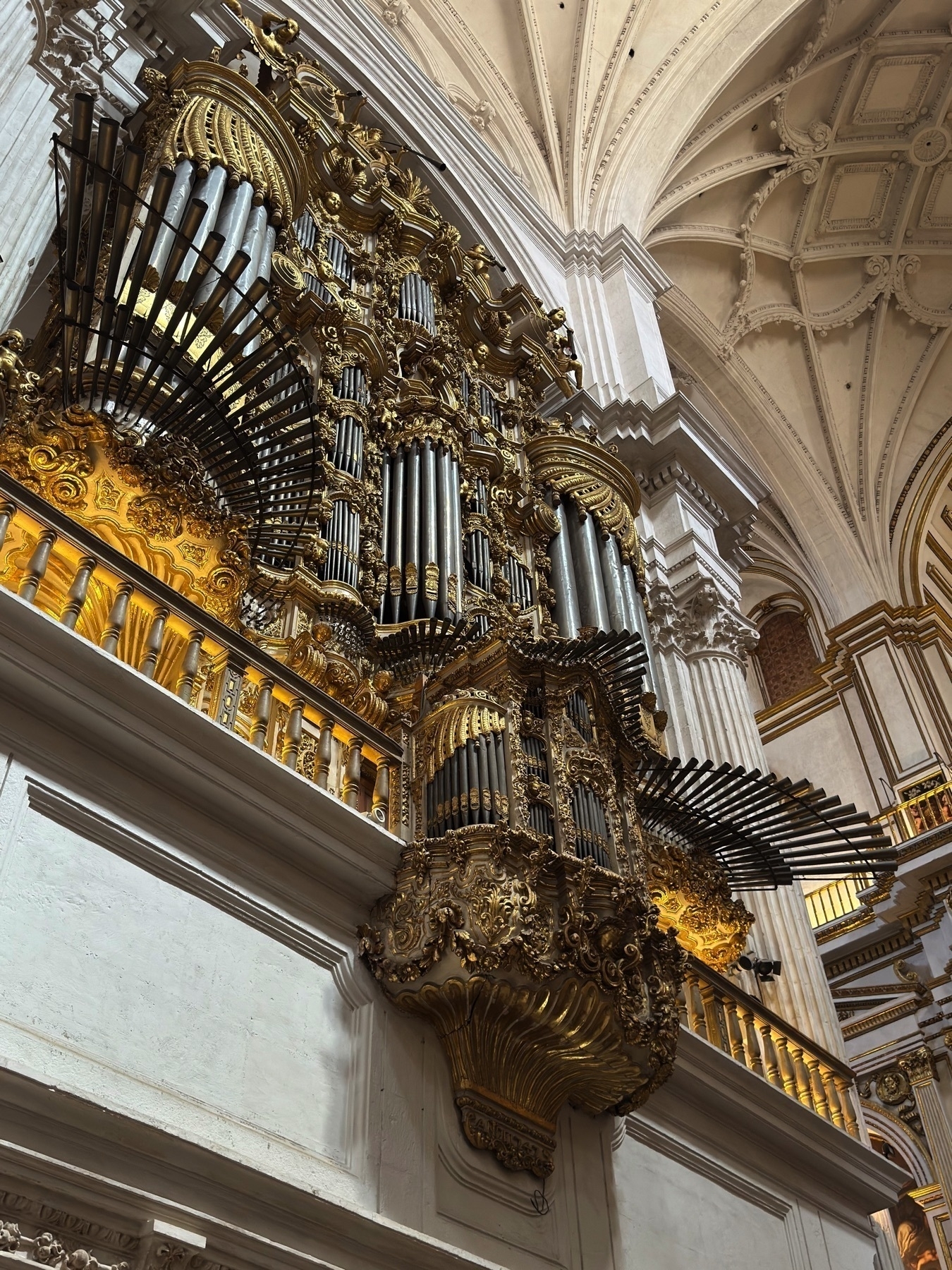

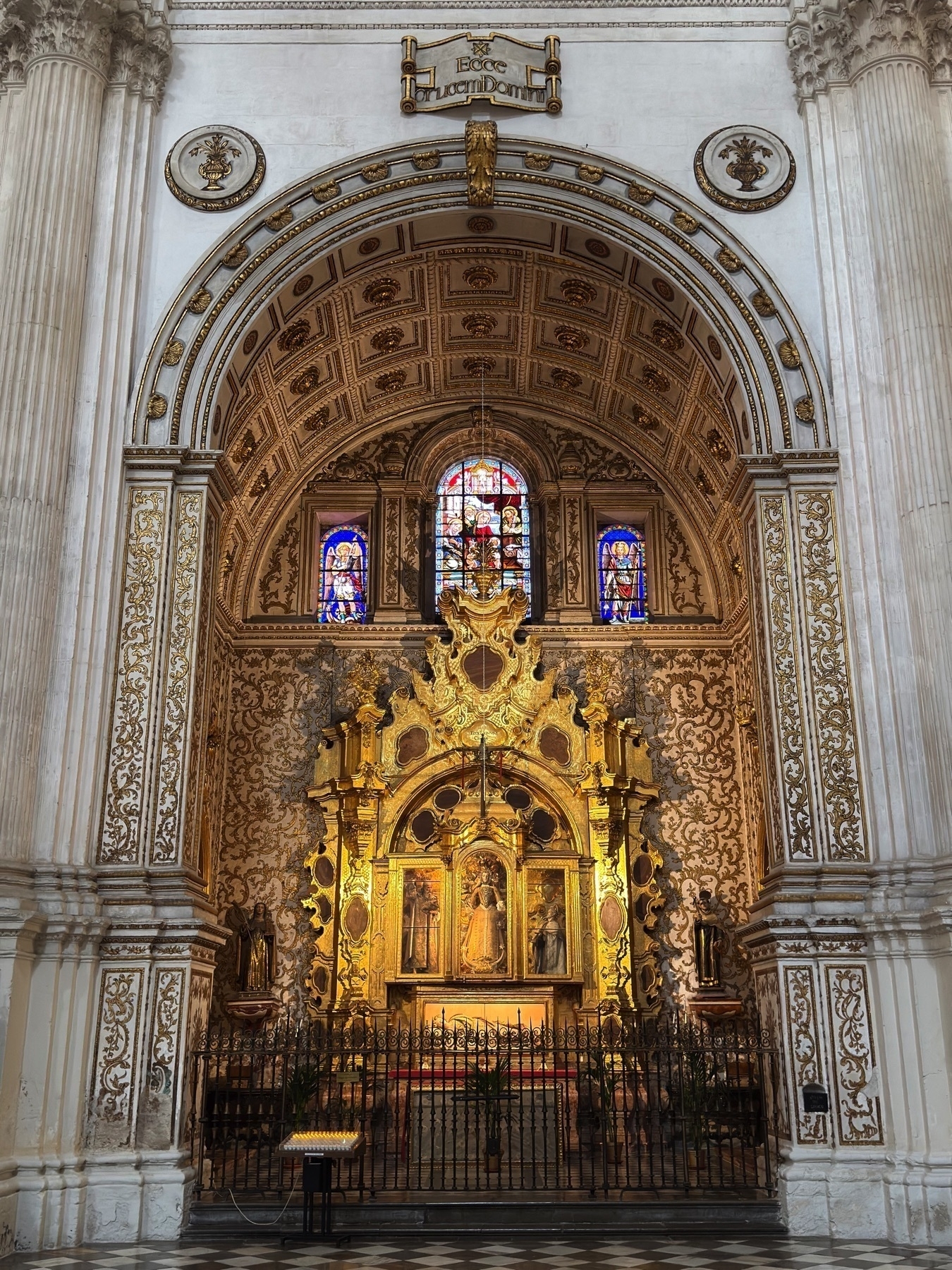

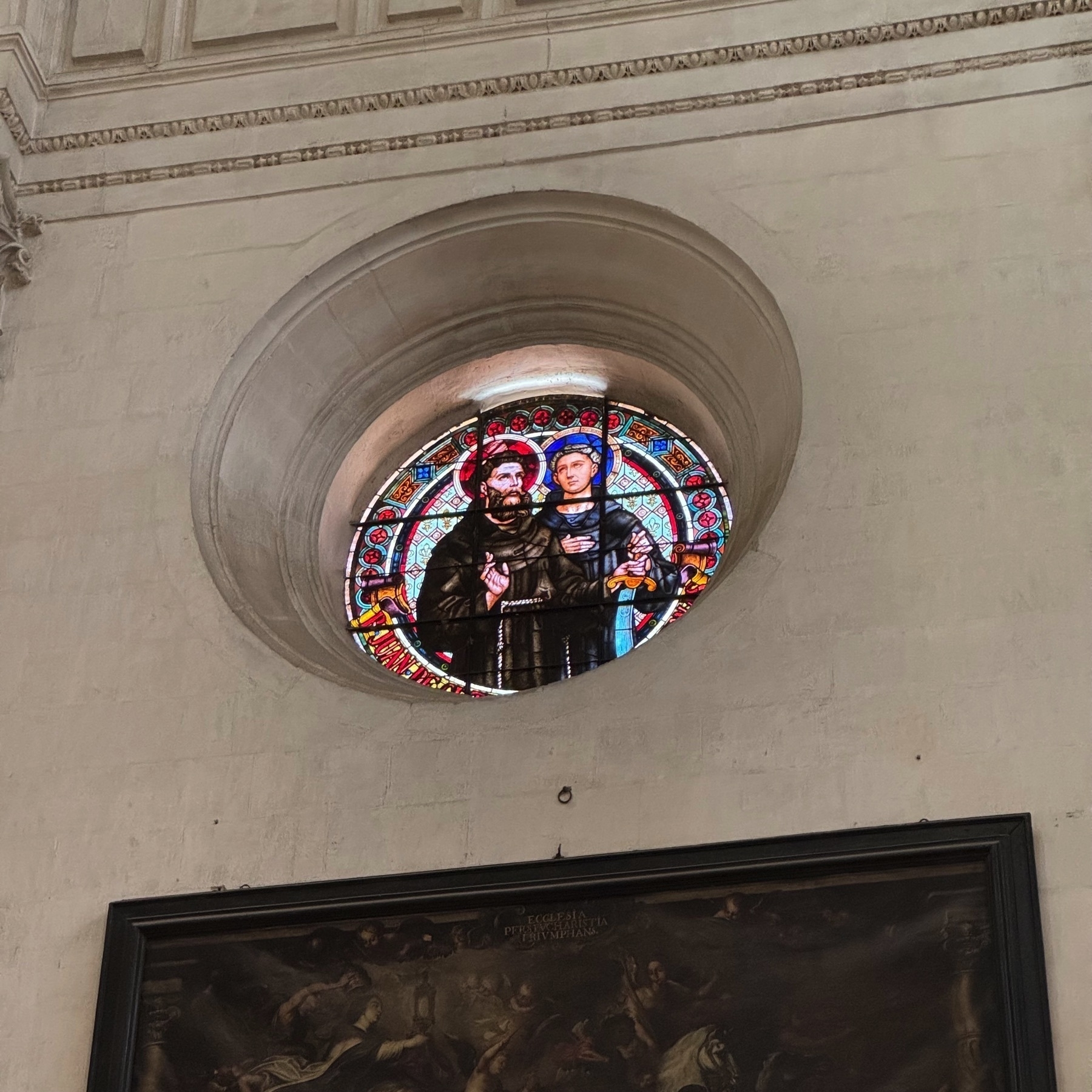
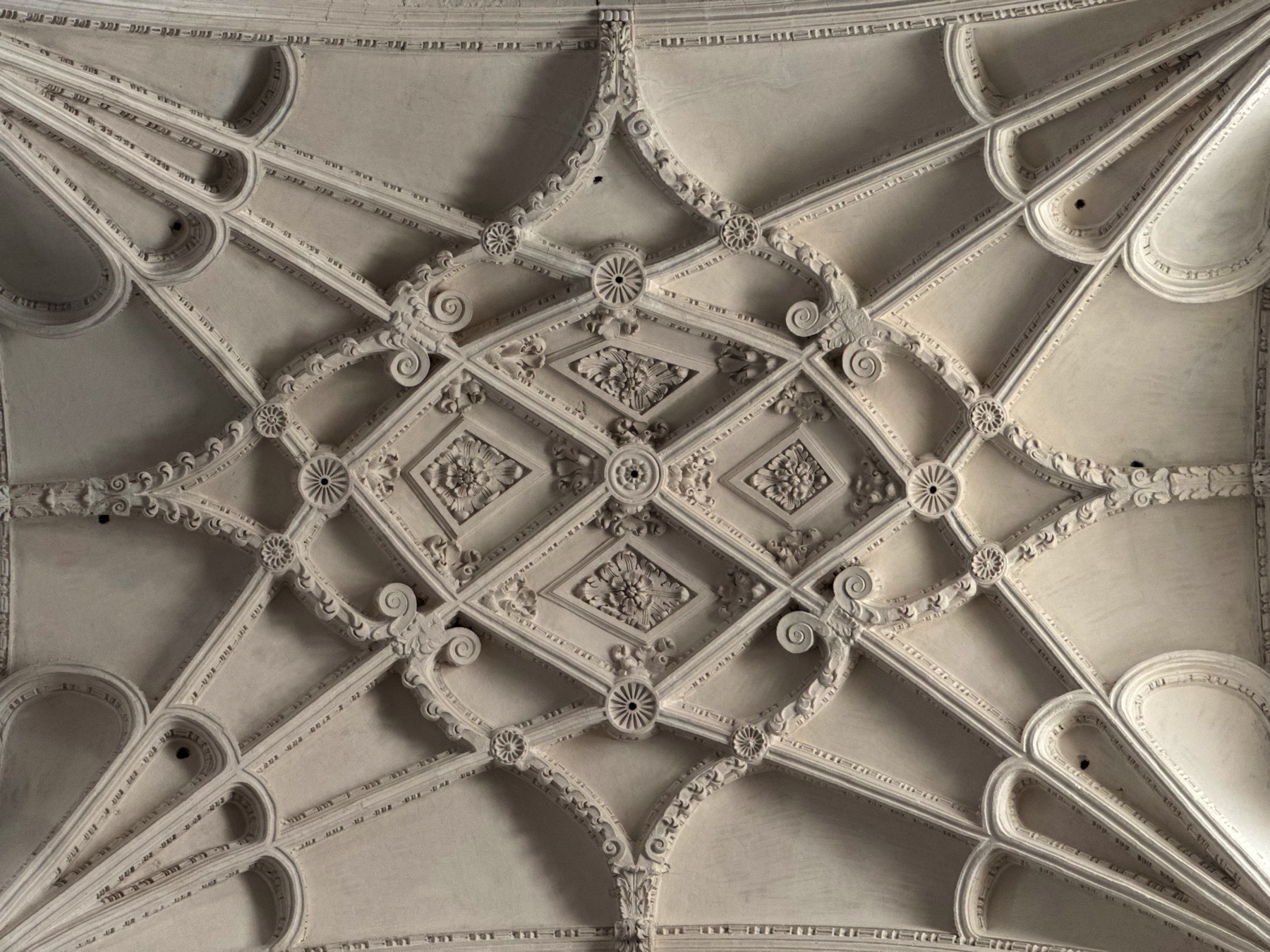
Twice we went to Restaurante Oliver. We loved the alcachofas con almejas (artichokes with clams), almejas chirlas (clams in broth), and the tartar de atún rojo (tuna tartare).
For “free” (when we got drinks) they served us arroz, pescado frito, patatas, and the bocadillo de atún con patatas fritas.


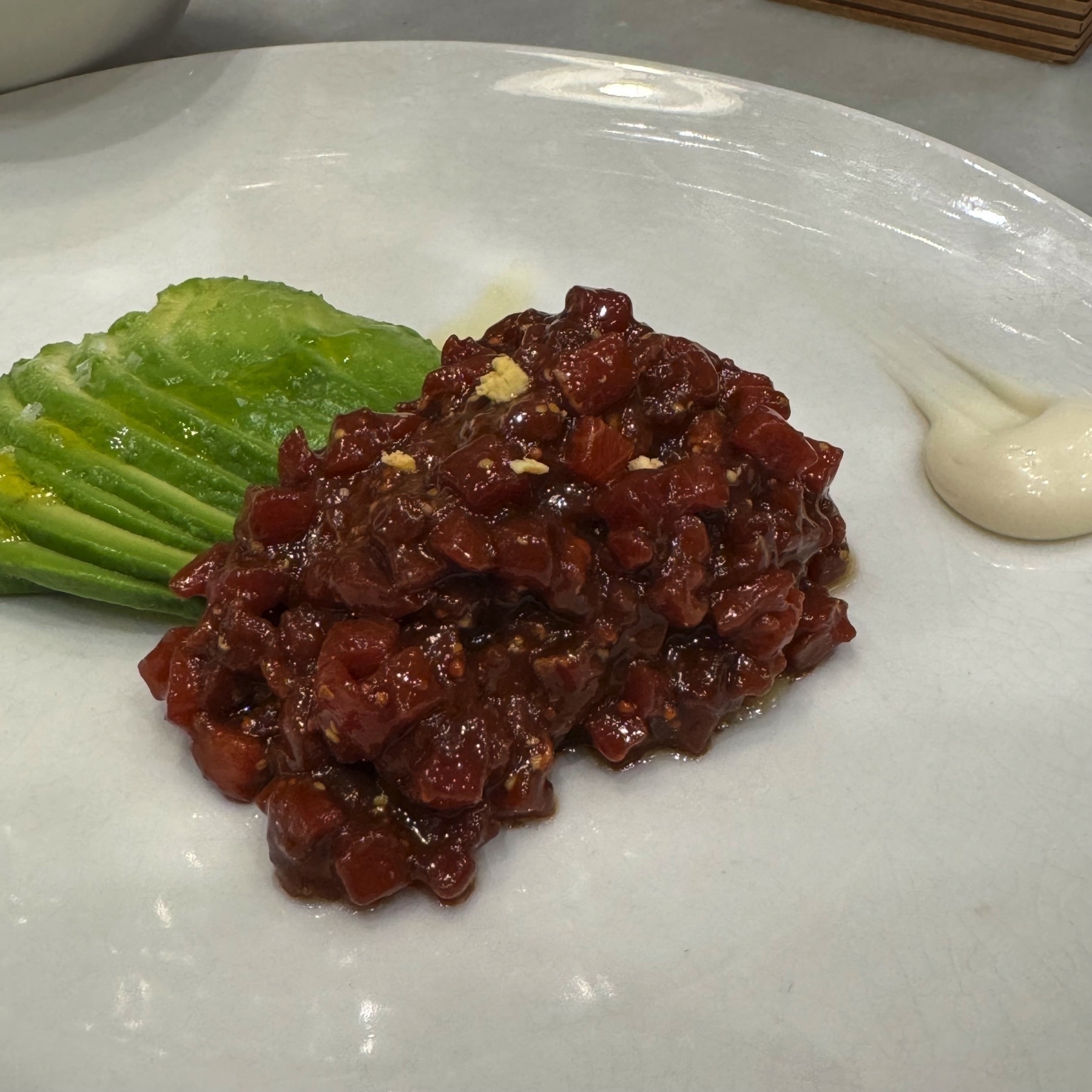
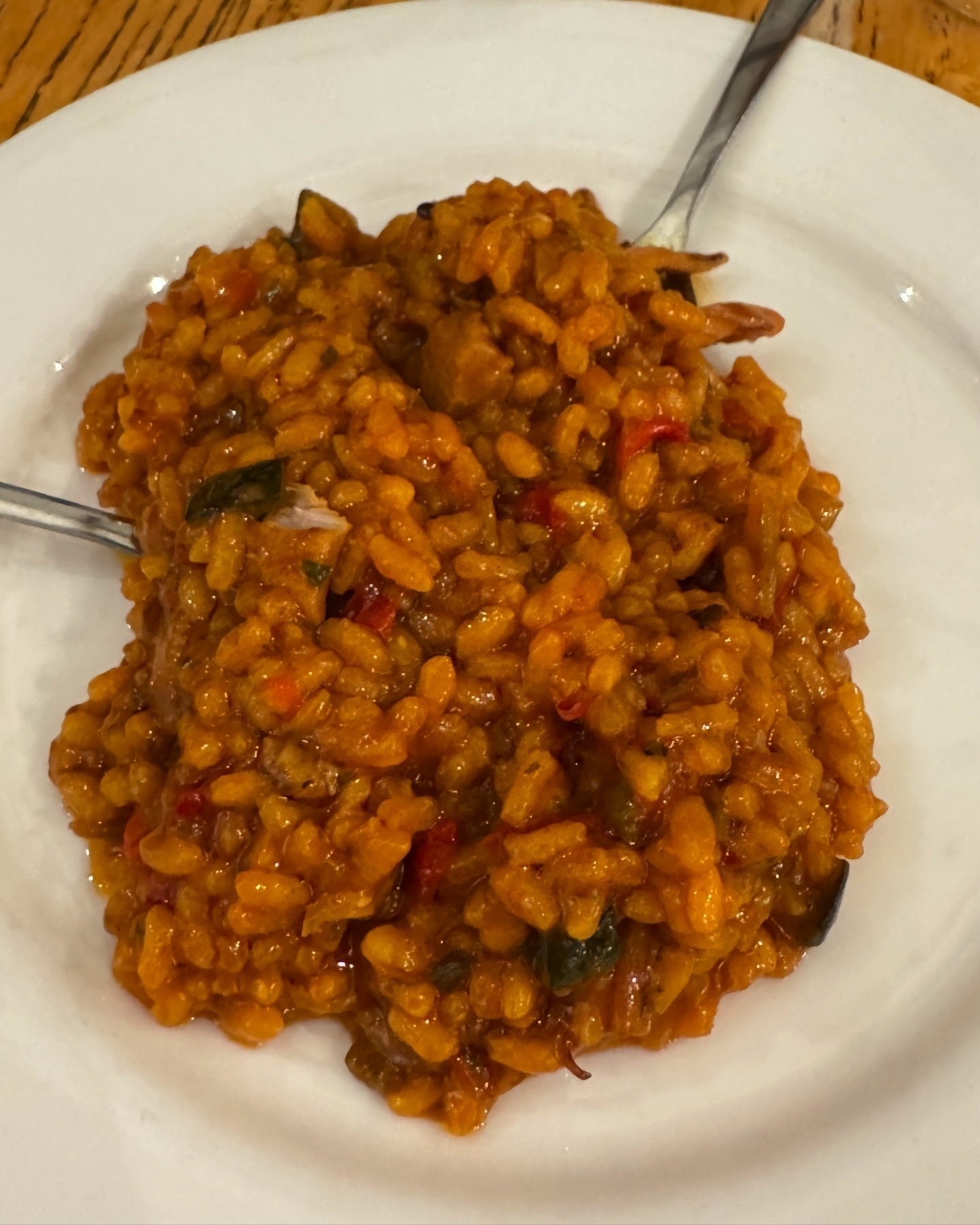
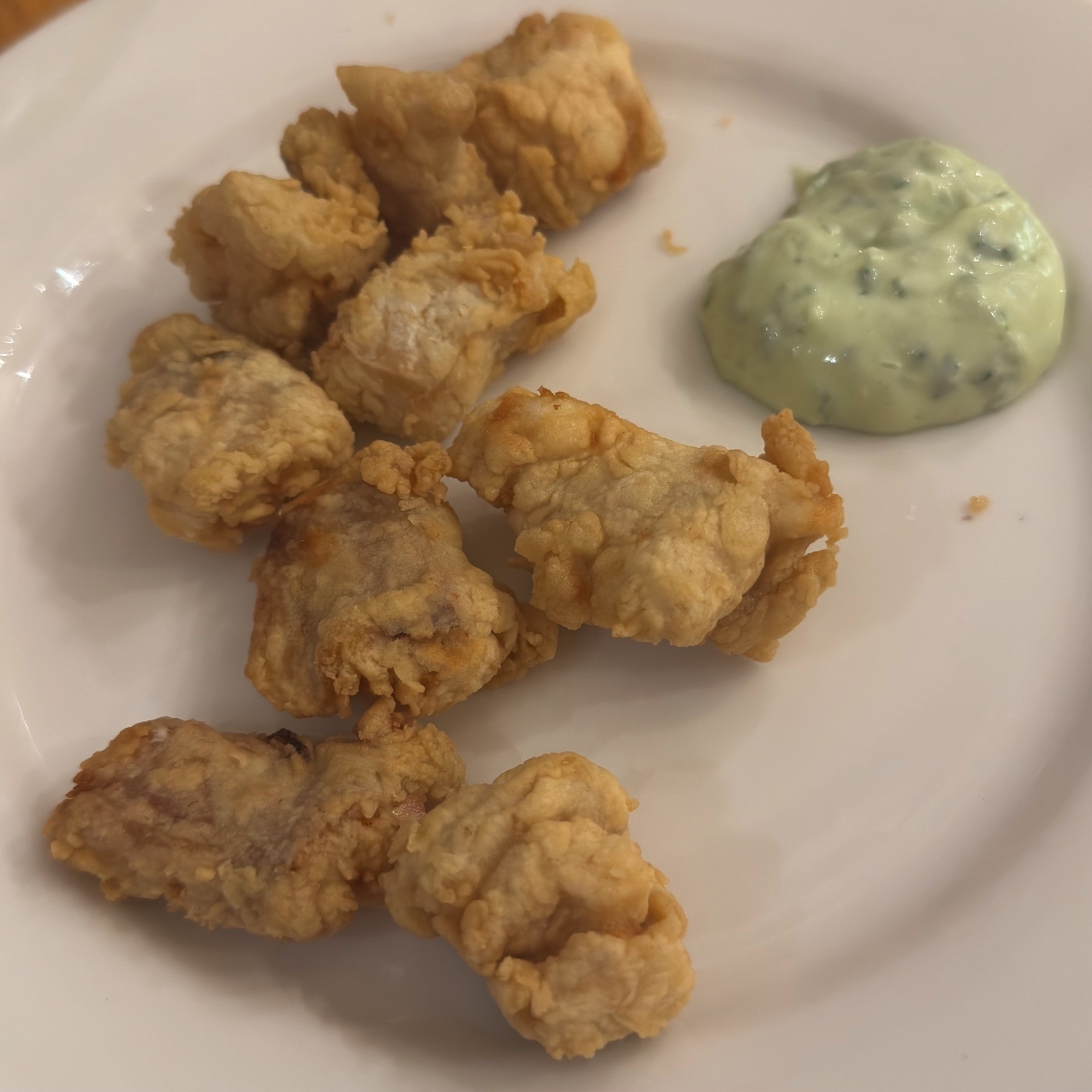
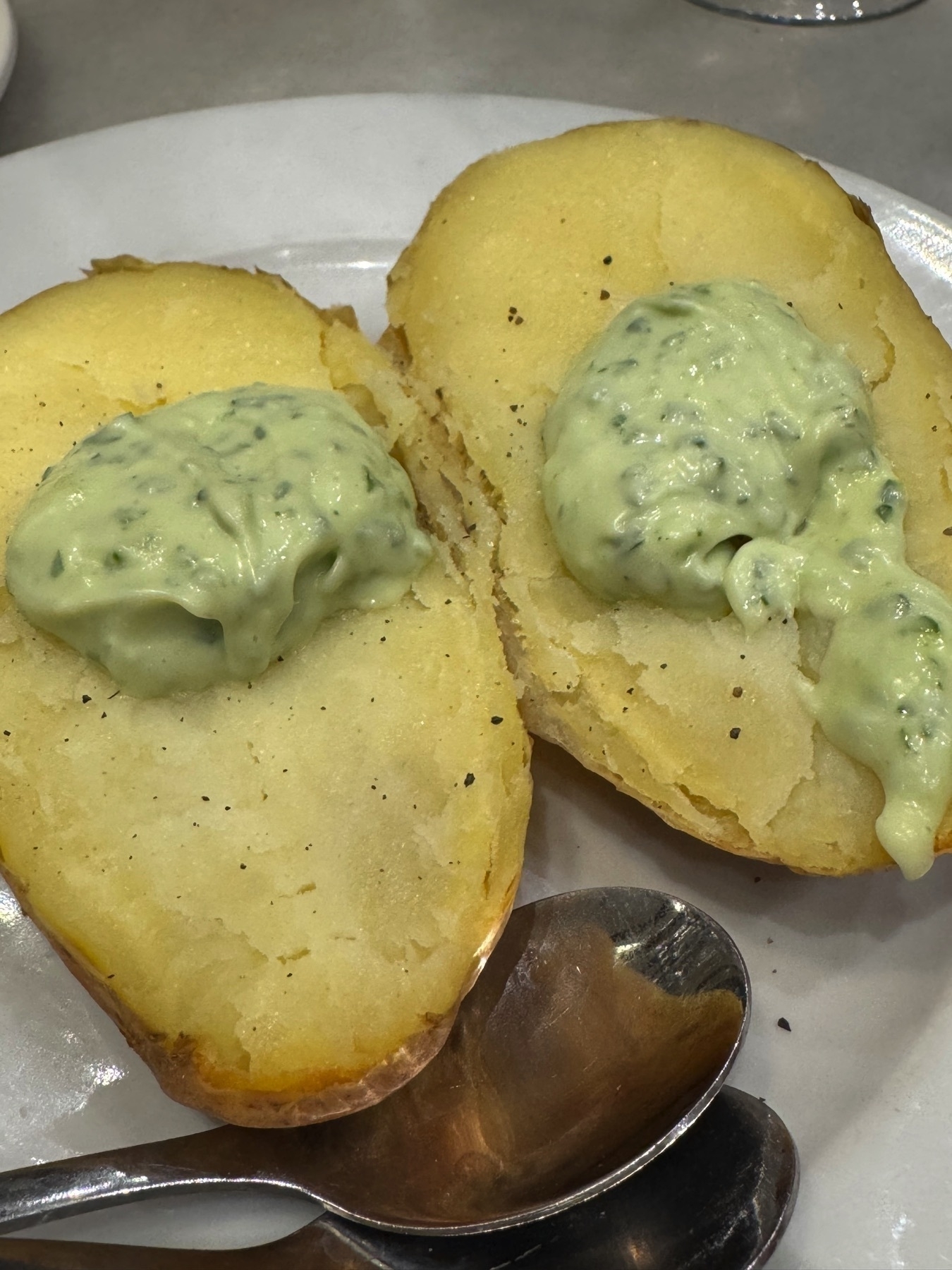
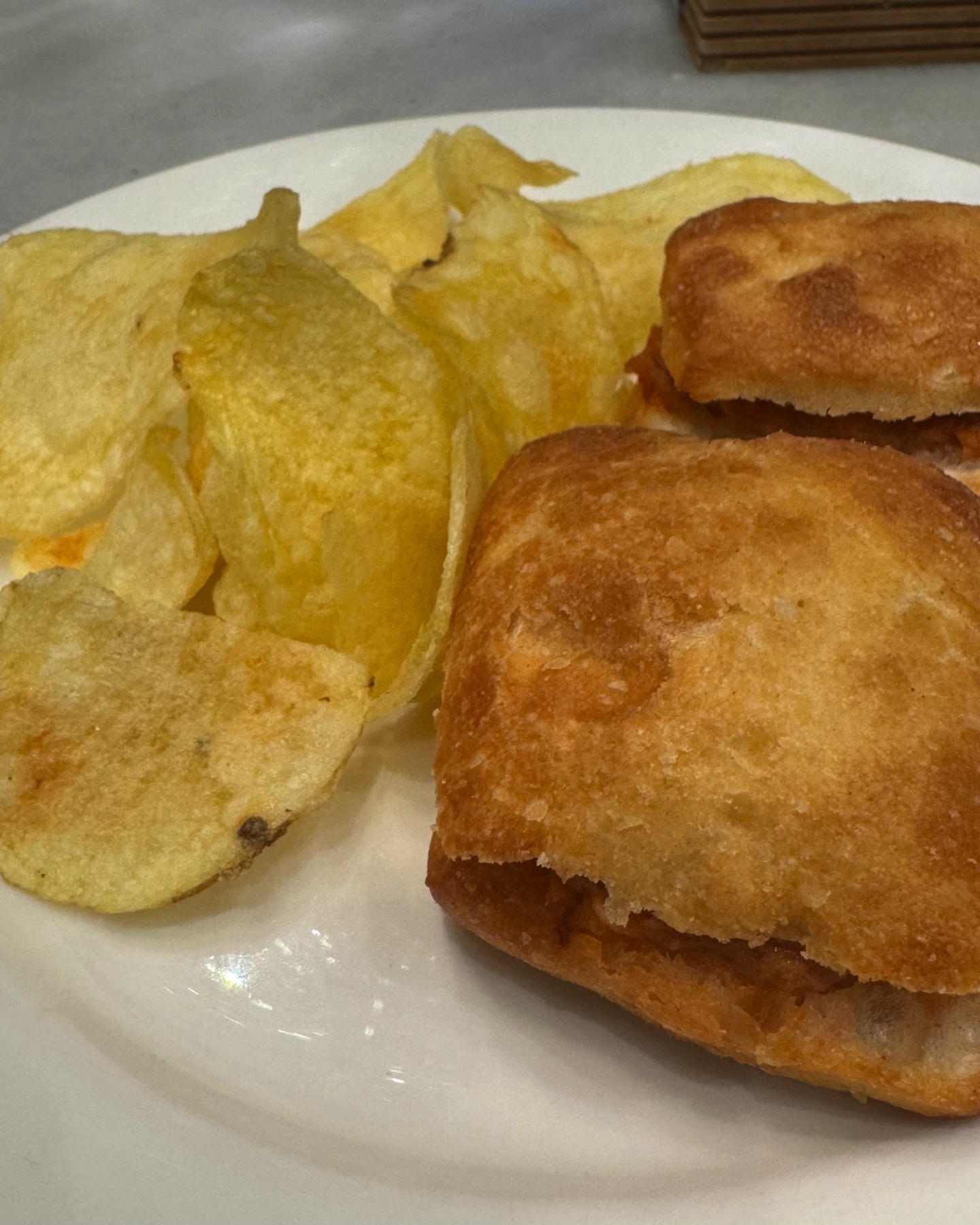
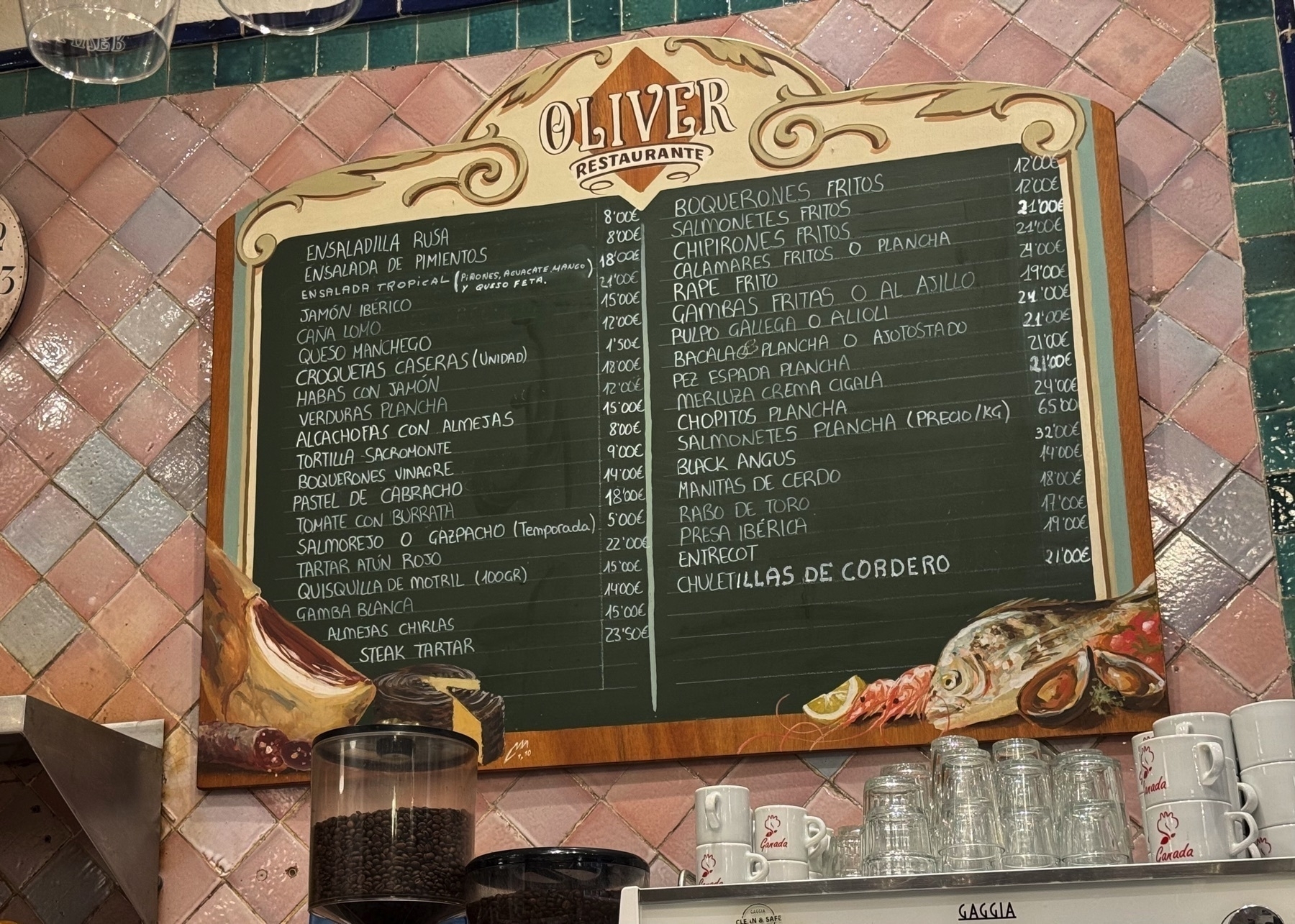
On Monday we went to the Monasterio de San Jerónimo in Granada, a 16th-century monastery that was occupied by Napoleon’s troops during his occupation of Spain in the 19th century. Wild!
Around the cloister garden, dozens of tombstones marked the graves of monks from centuries ago.
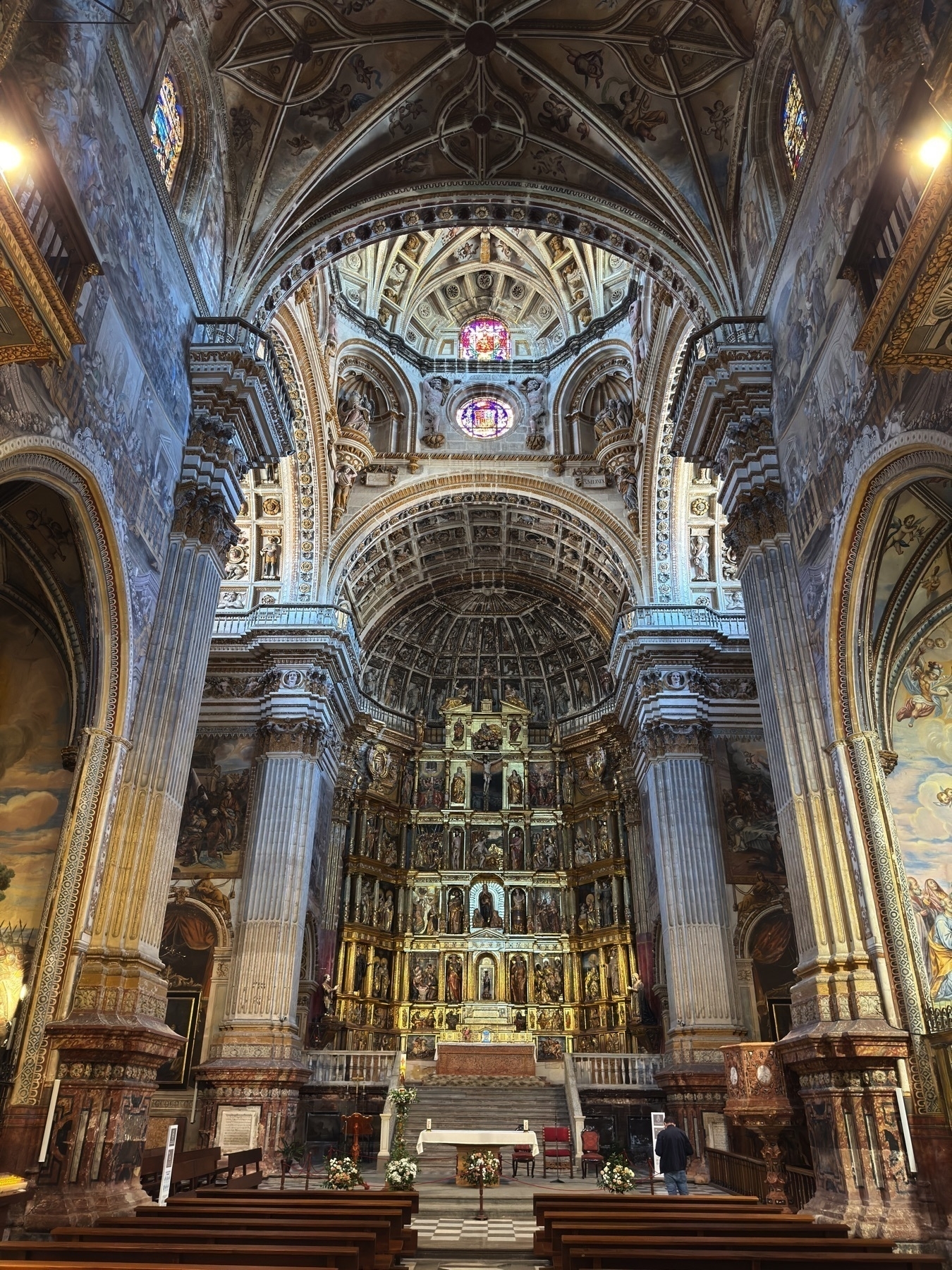
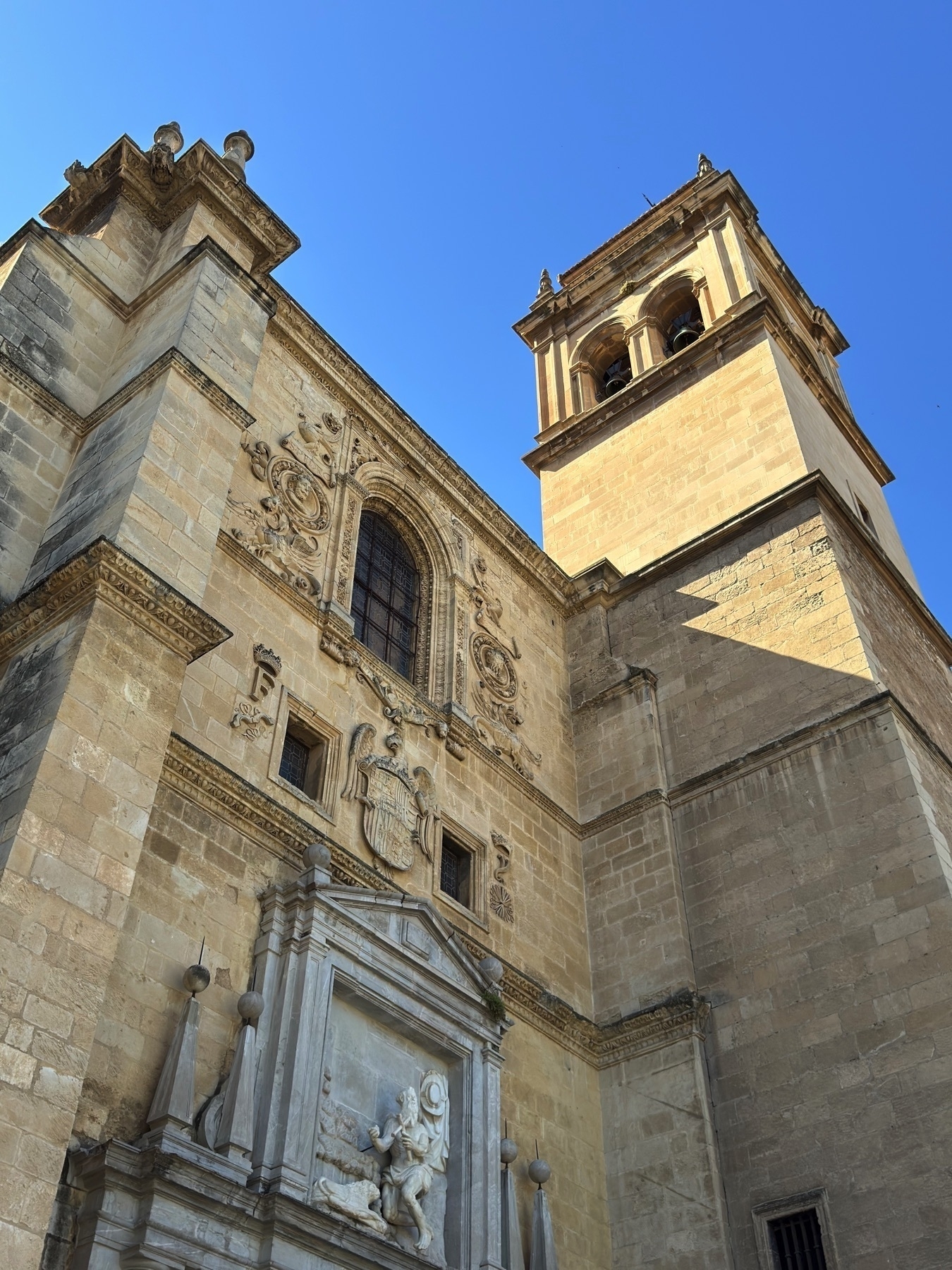
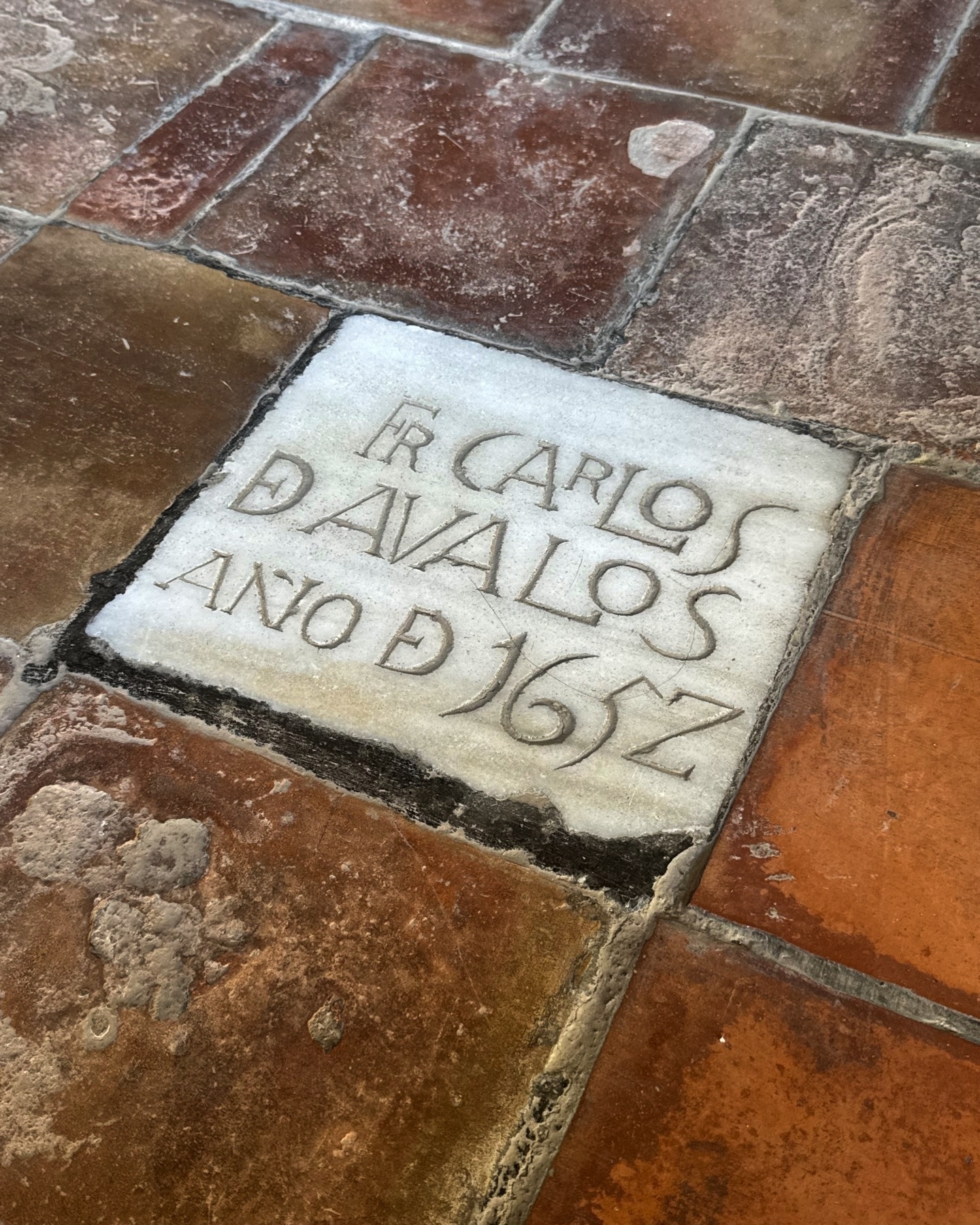
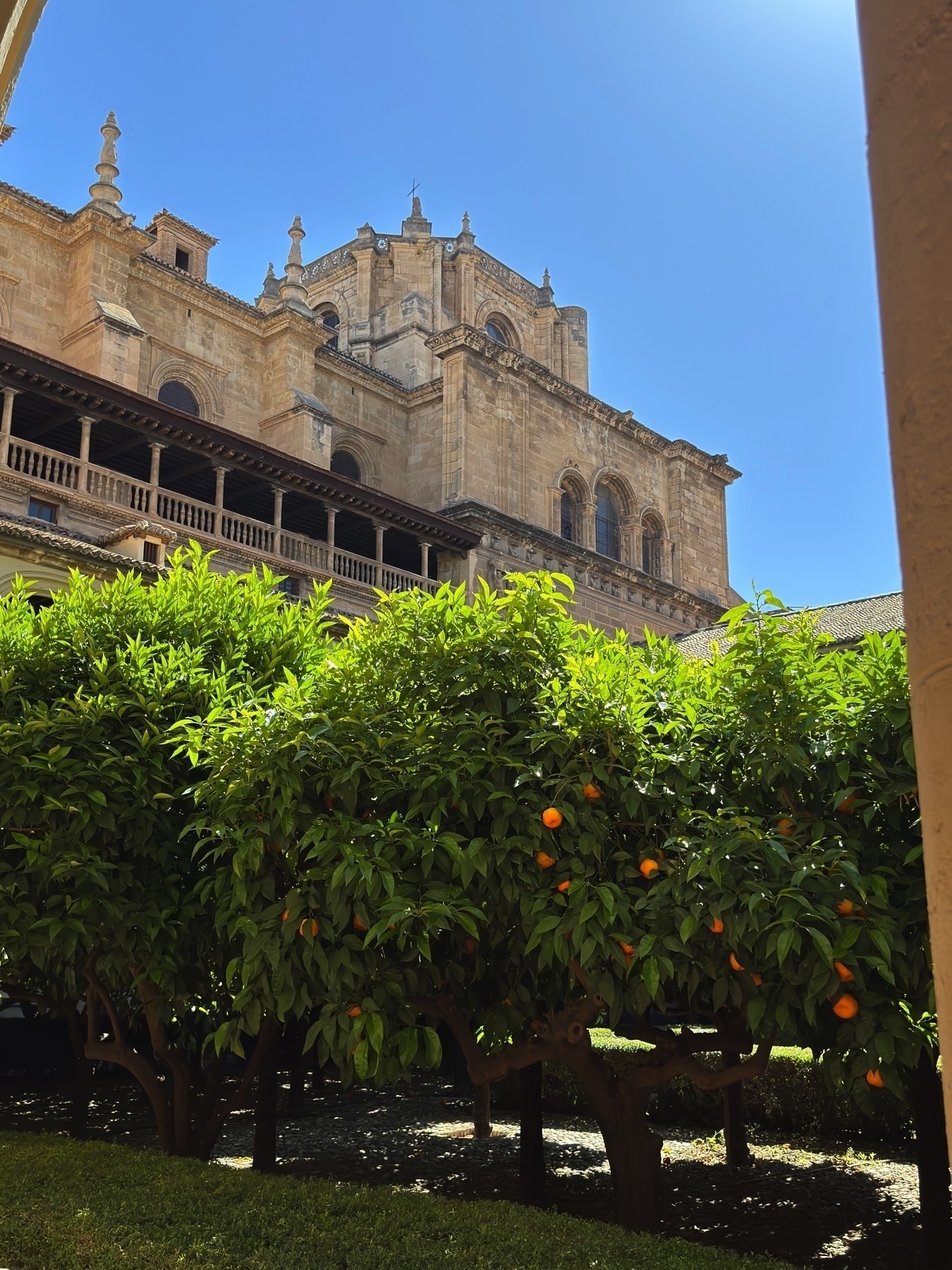
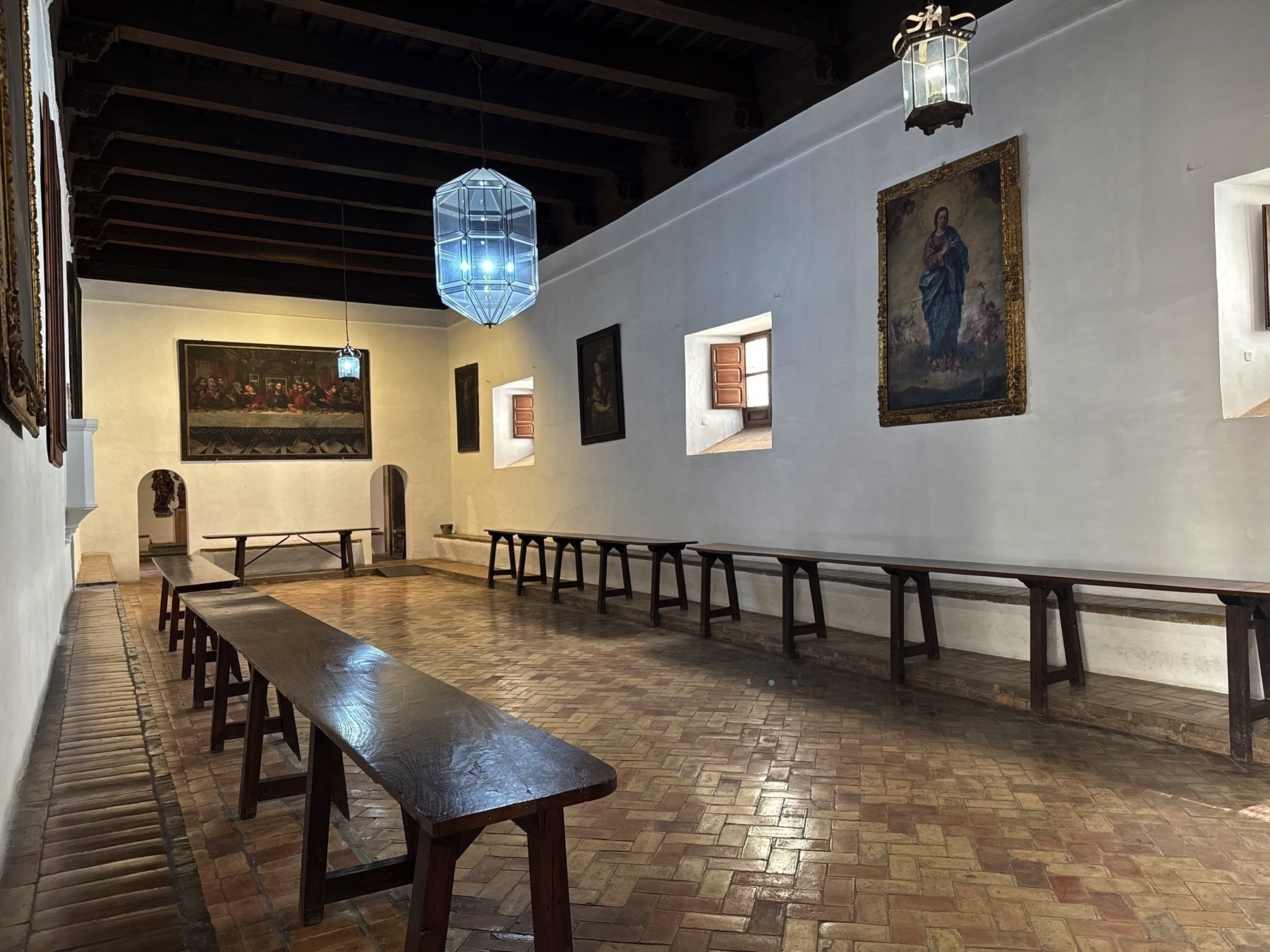
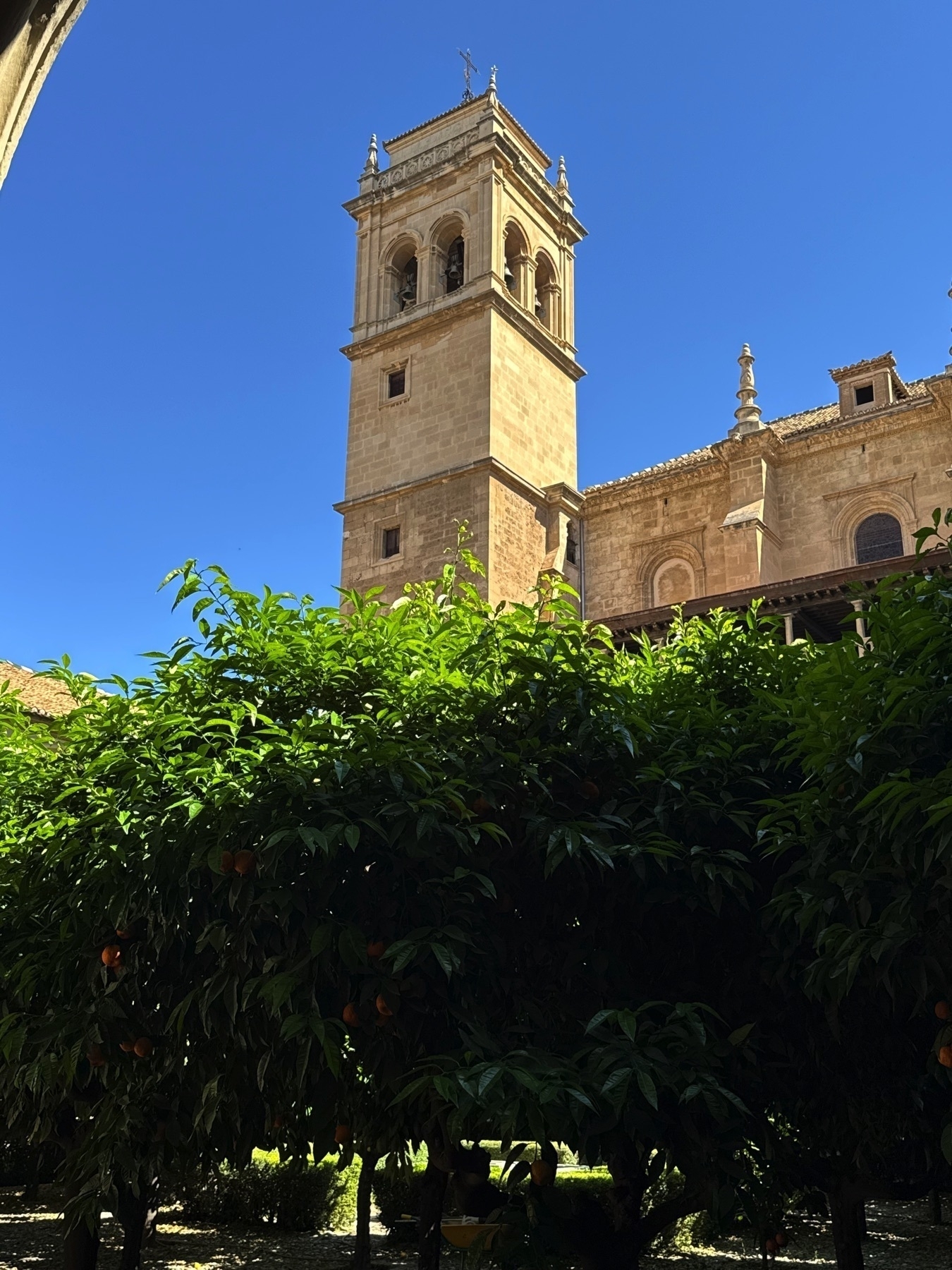
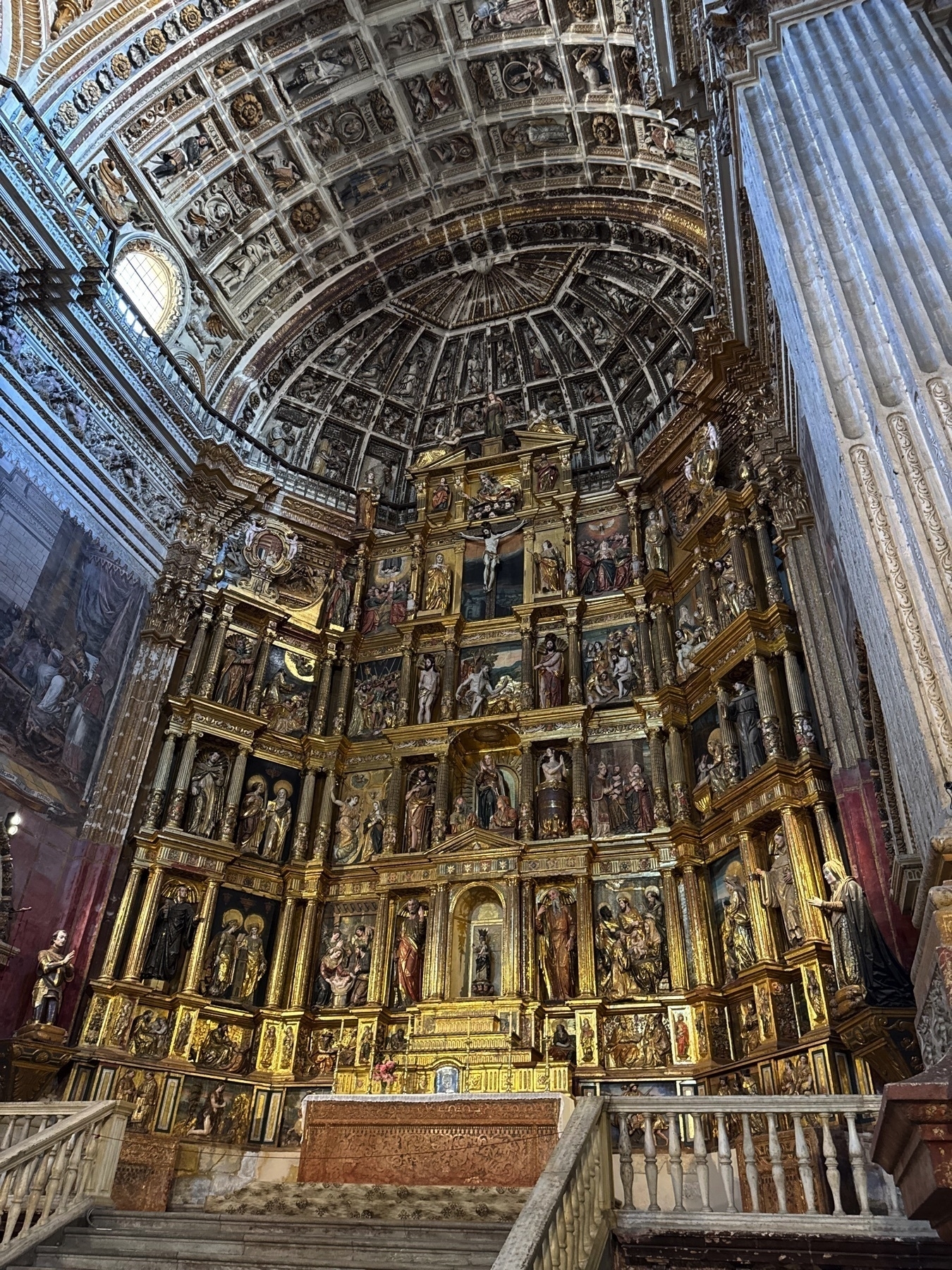



Málaga
Málaga was a small, beautiful, touristy beach city with a lot to offer.
These are all the posts I made about the city:
- Alcazaba (fortress with decent views)
- El Tintero (a unique dining experience along the coast)
- Castillo de Gibralfaro (castle with the best views)
- Mesón Mariano (delicious alcachofas and other tapas)
- Catedral de Málaga (beautiful cathedral)
- El Pimpi (delicious food)
- Picasso museum (art!)
- Mesón Antonio (easy go-to with great food)
- Walking around the city (photos of landmarks, random streets, etc.)
- More food shoutouts (Los Patios de Beatas, Claus Bakery, Casa Aranda, El Café de Chinitas, and Puerta Oscura)
Overall, I loved being by the coast and everything that comes with that: fresh air, ocean breezes, and not-as-hot weather.
I really enjoyed the restaurants we found—I would say the quality didn’t reach as high as Sevilla but they were still great. We went back to Mesón Mariano, El Pimpi, and Mesón Antonio a few times; I wish we had a chance to go back to El Tintero.
It was quite a hike, but I really enjoyed the sights from Castillo de Gibralfaro (and to a lesser extent, the Alcazaba). The Catedral was nice but doesn’t compare to the Catedral de Sevilla. The Picasso museum was fun to walk through and isn’t that large.
Our Airbnb in the city center was perfect, and the main part of the city is so small it’s easy to walk around everywhere. We used the bus system to get down to El Tintero; we learned to just use the local bus system’s app instead of depending on Apple or Google Maps (both seemed incorrect).
Overall, I’d be happy to come back to Málaga, and I’d be really excited to stay along the coast to soak up the full beach vibes.
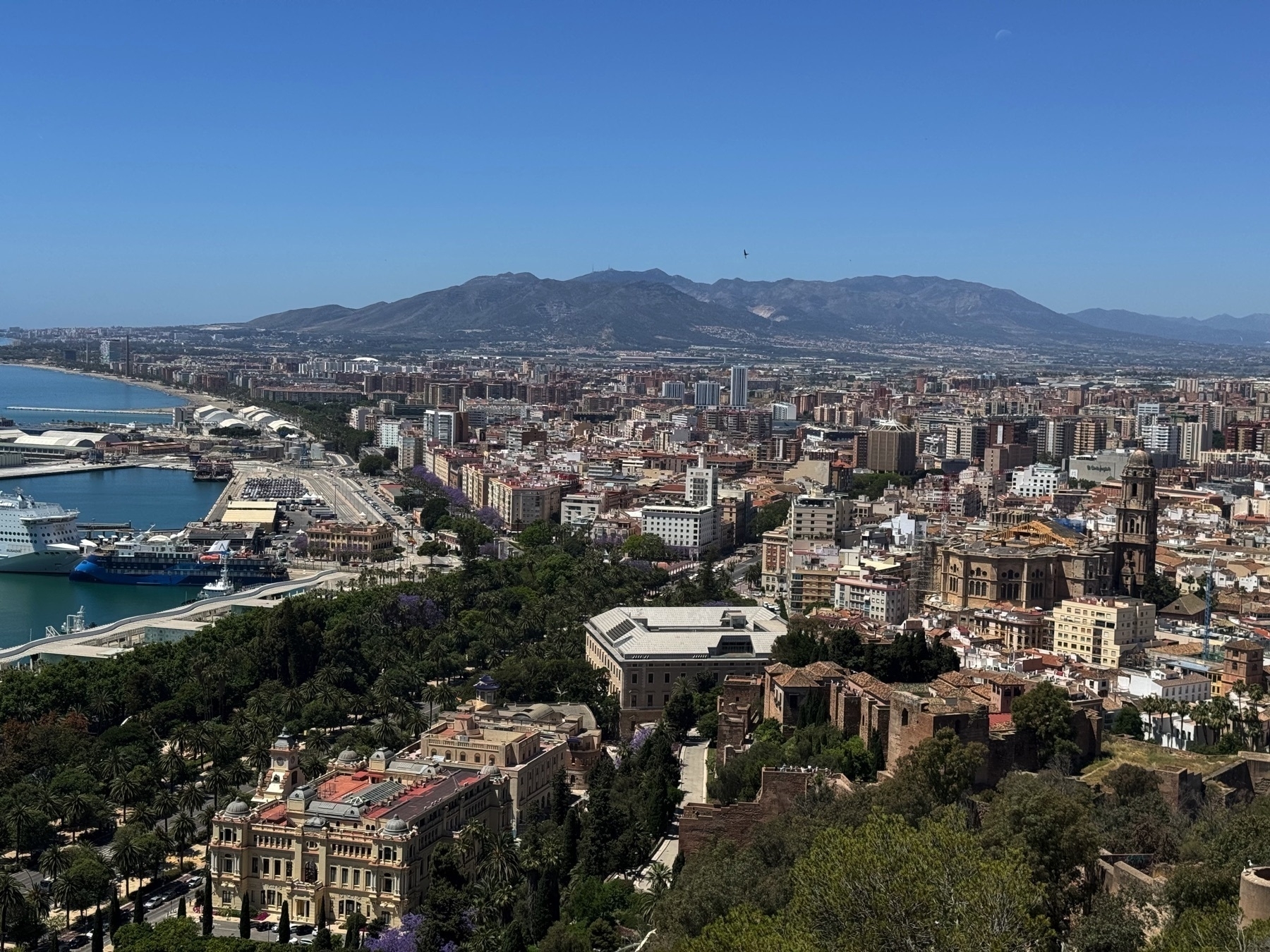

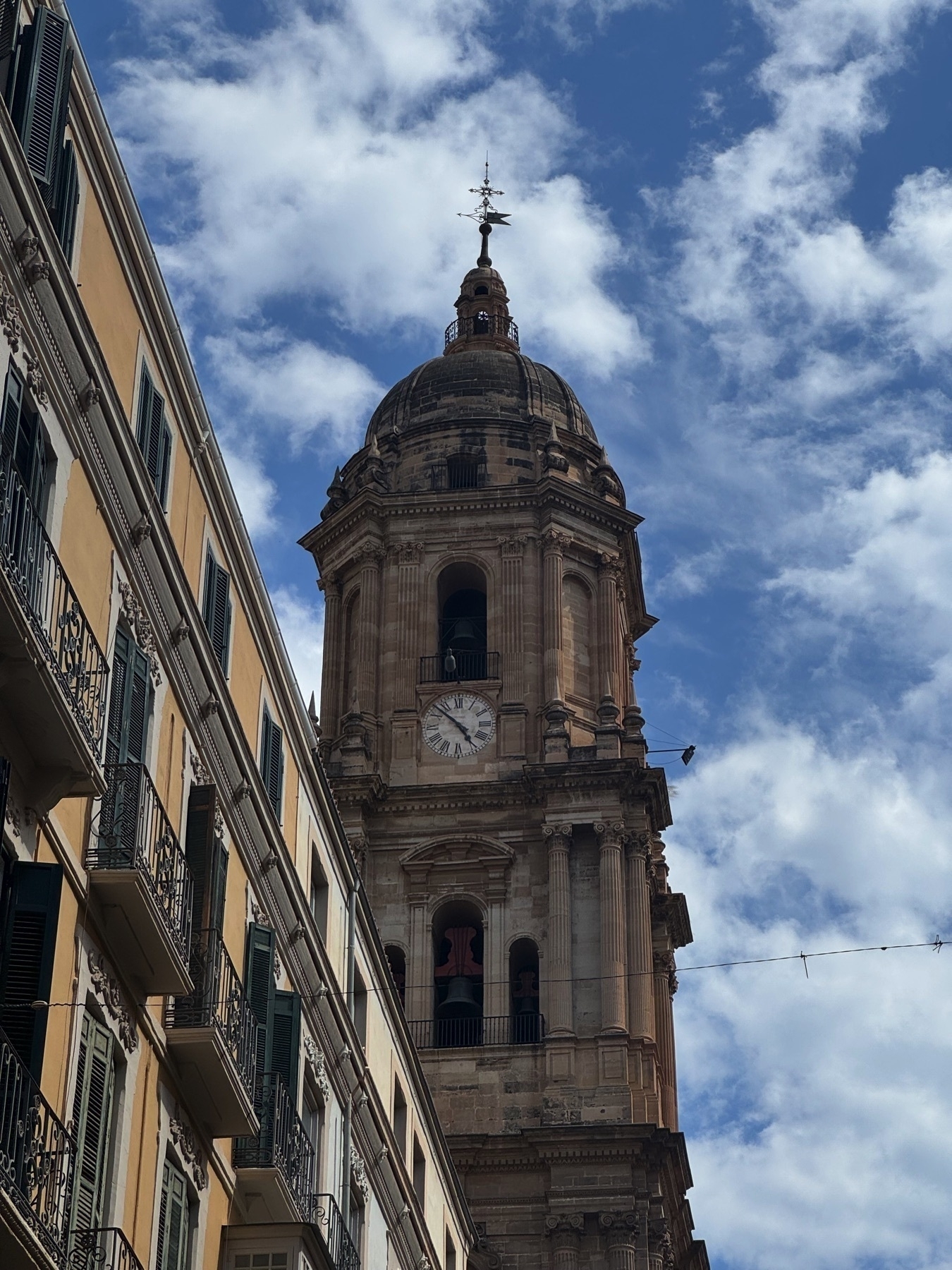
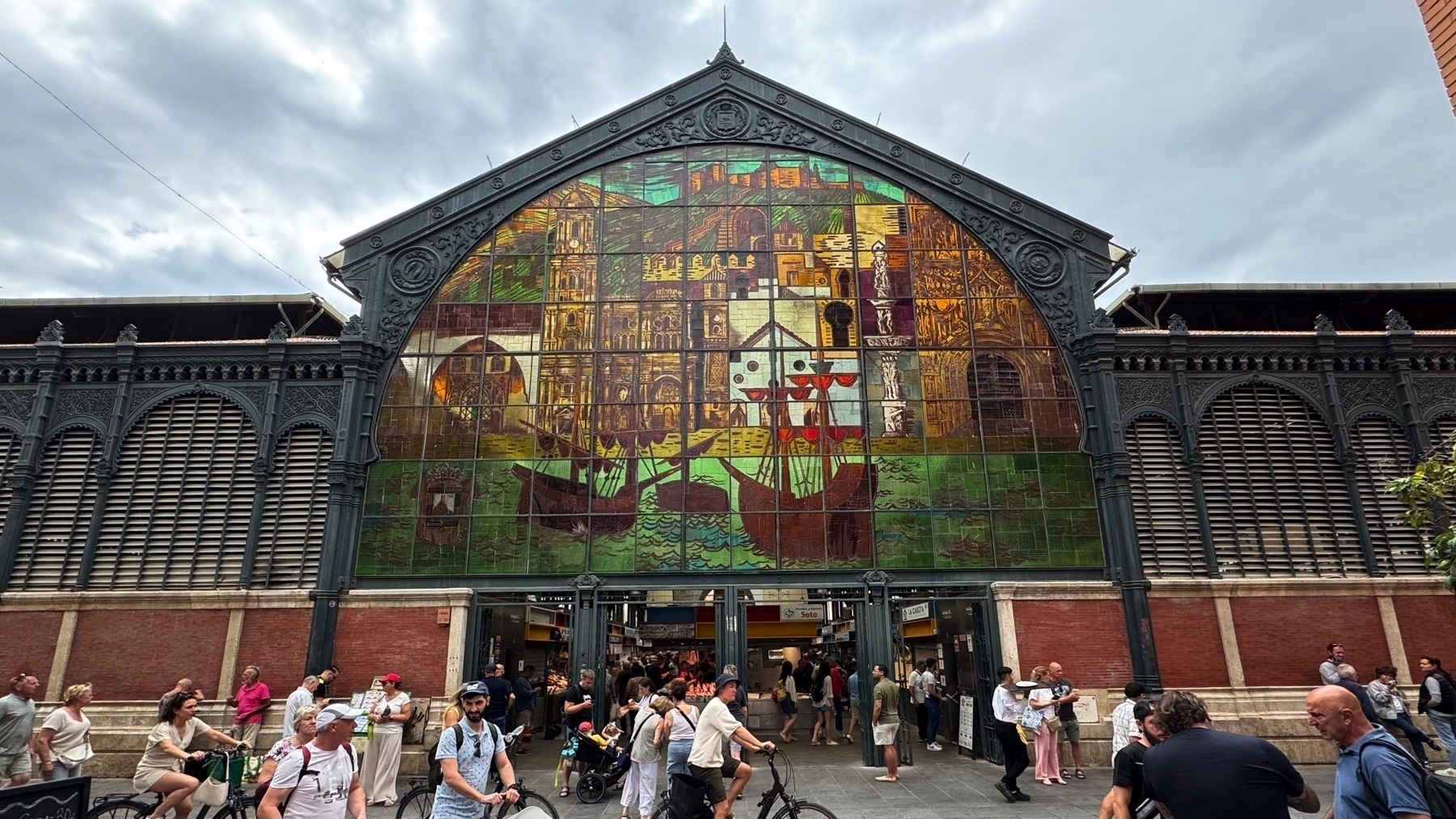
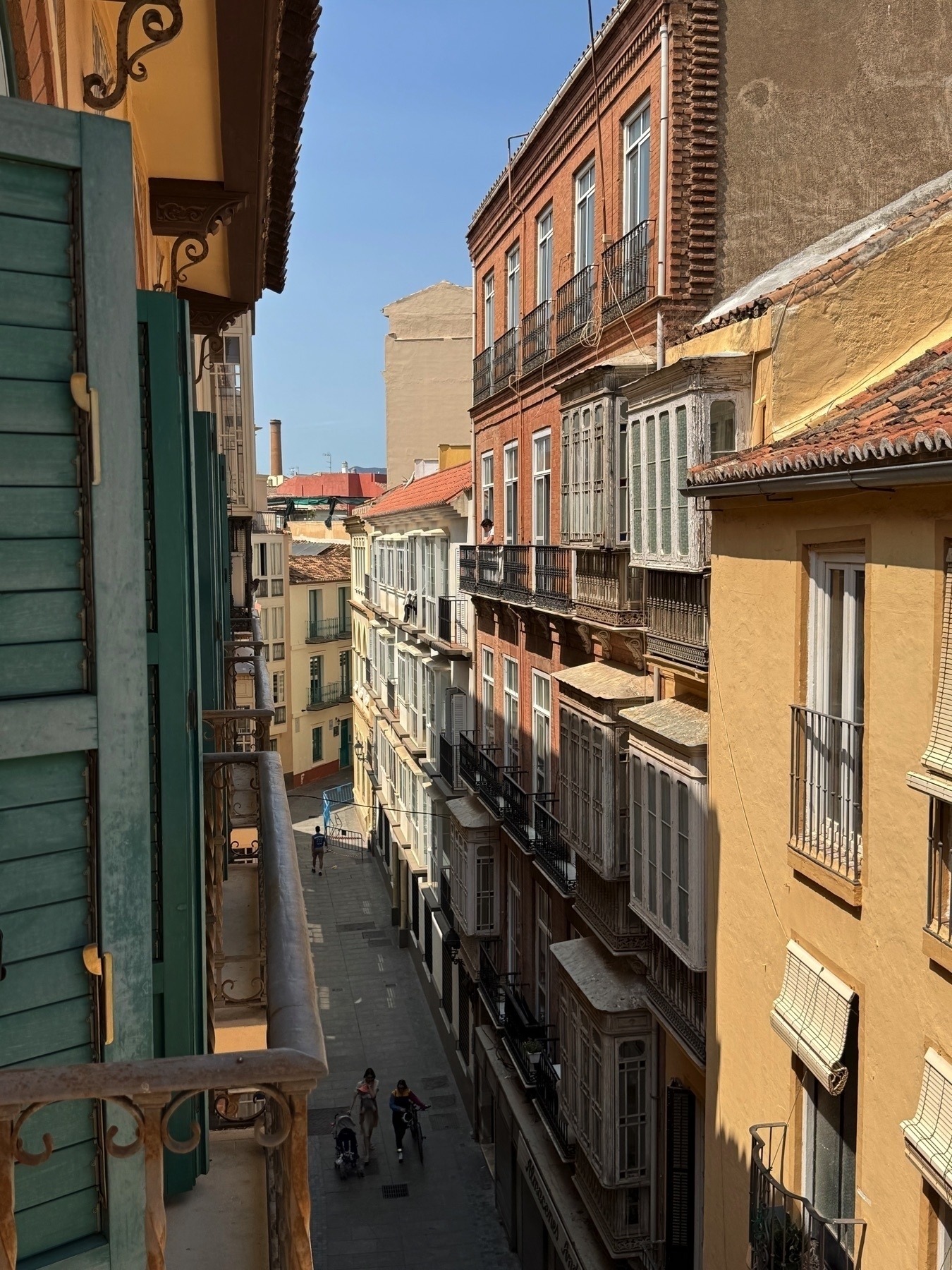
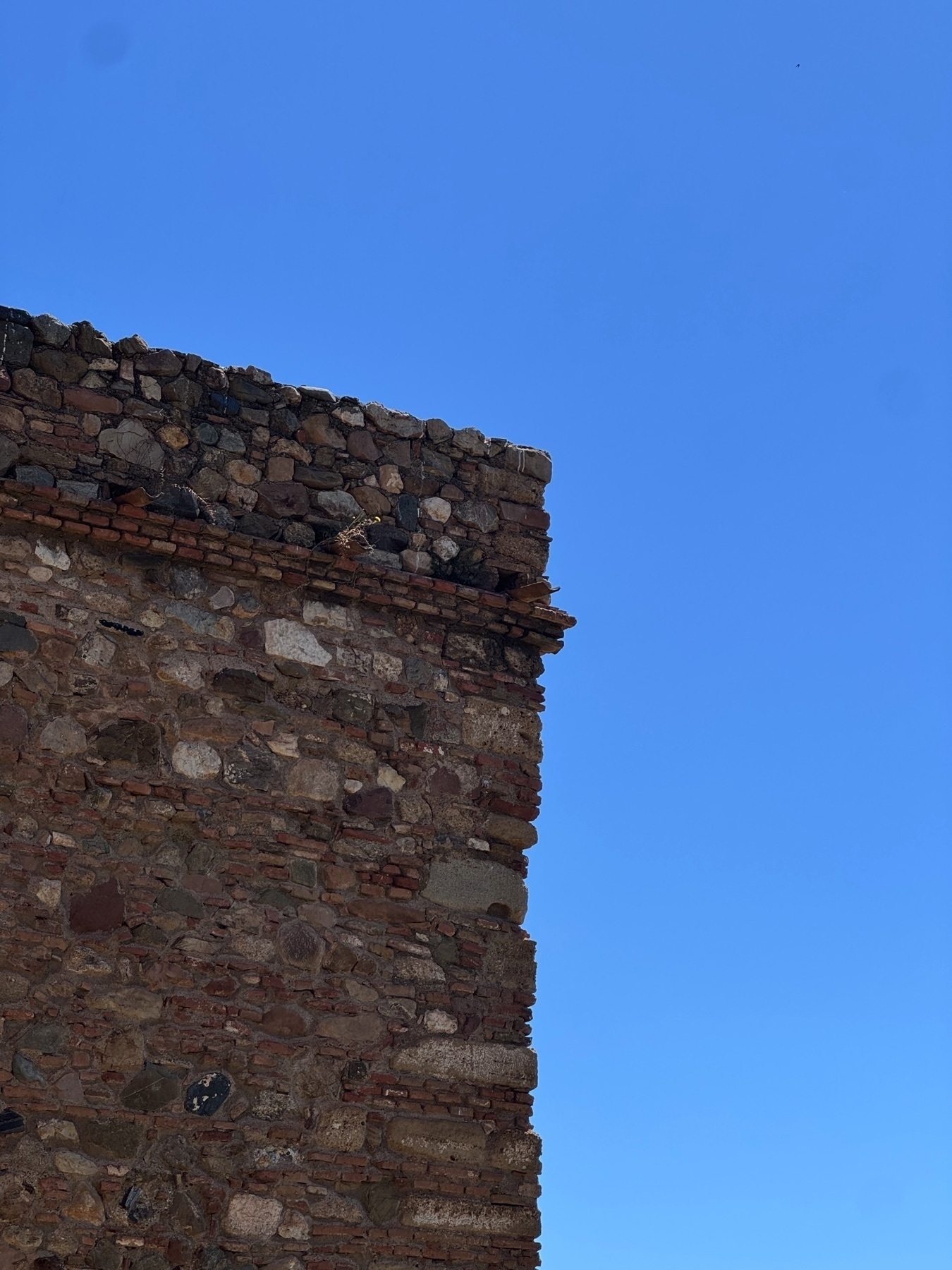
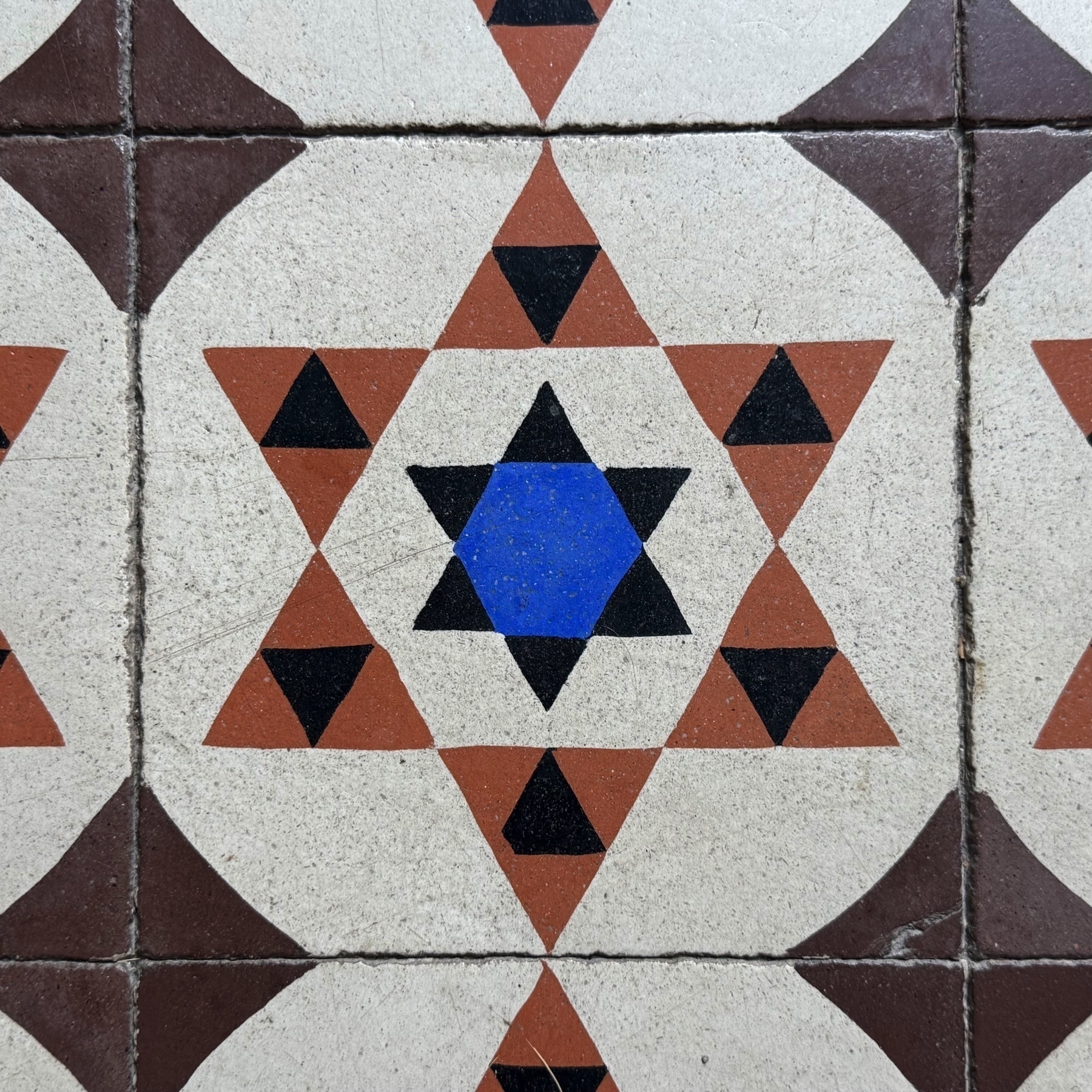
A few food mentions:
Los Patios de Beatas (photos 1–3) was delicious.
Claus Bakery (4–5) was our go-to breakfast spot.
Churros and chocolate at Casa Aranda (6) were a treat.
El Café de Chinitas (7) had a perfect tomato salad.
Puerta Oscura (8–9) had the worst margaritas but a great interior.
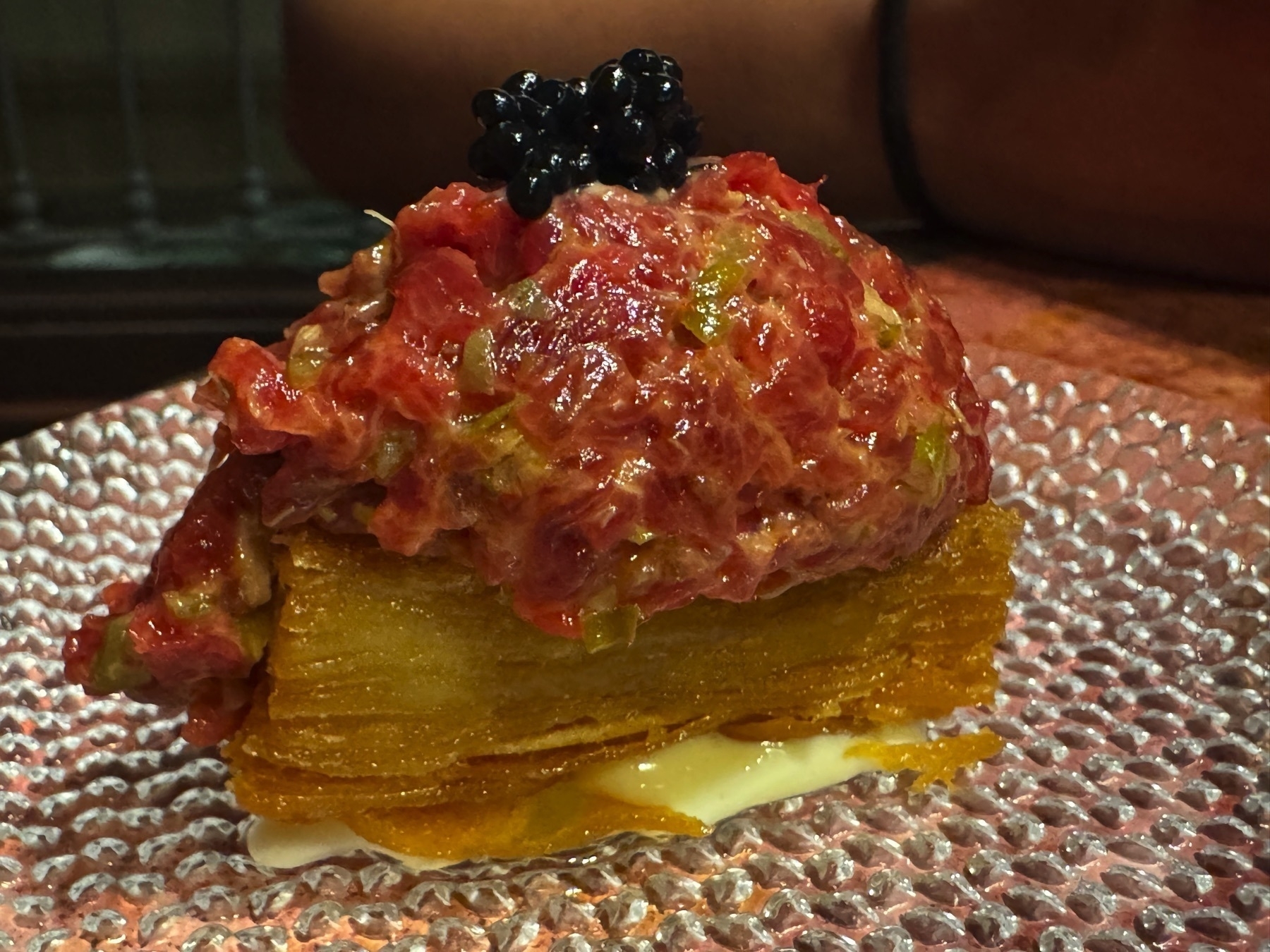
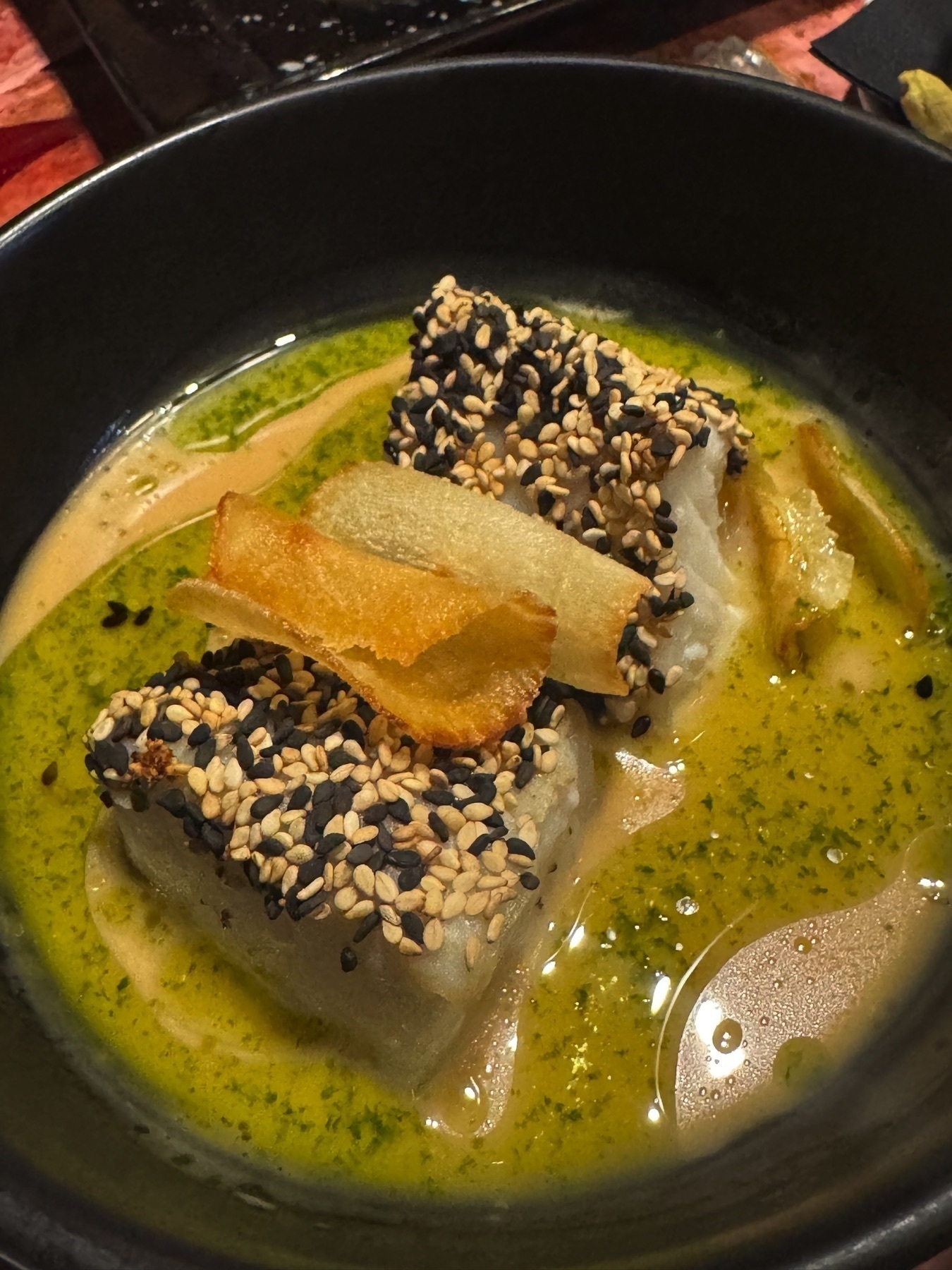
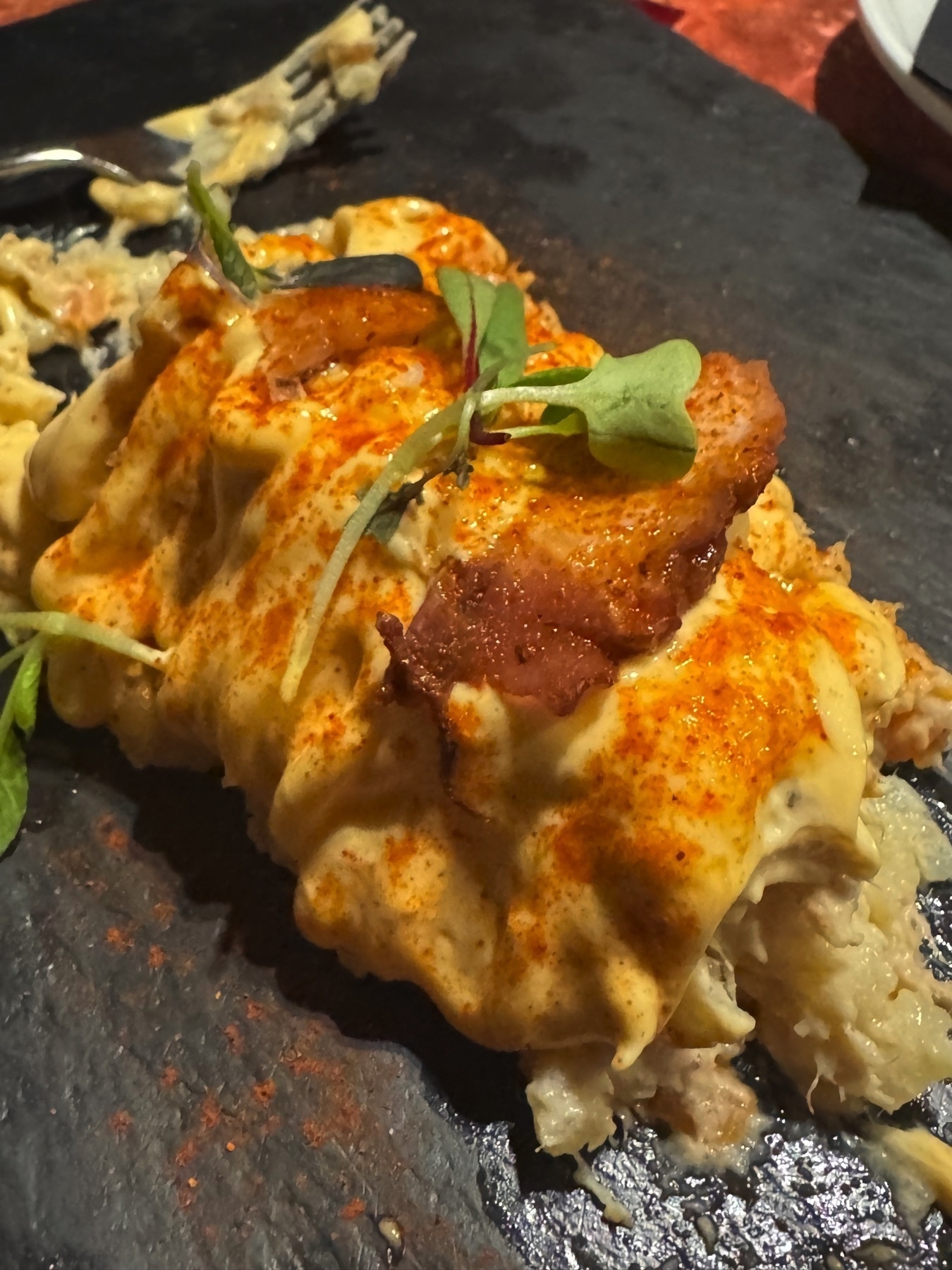
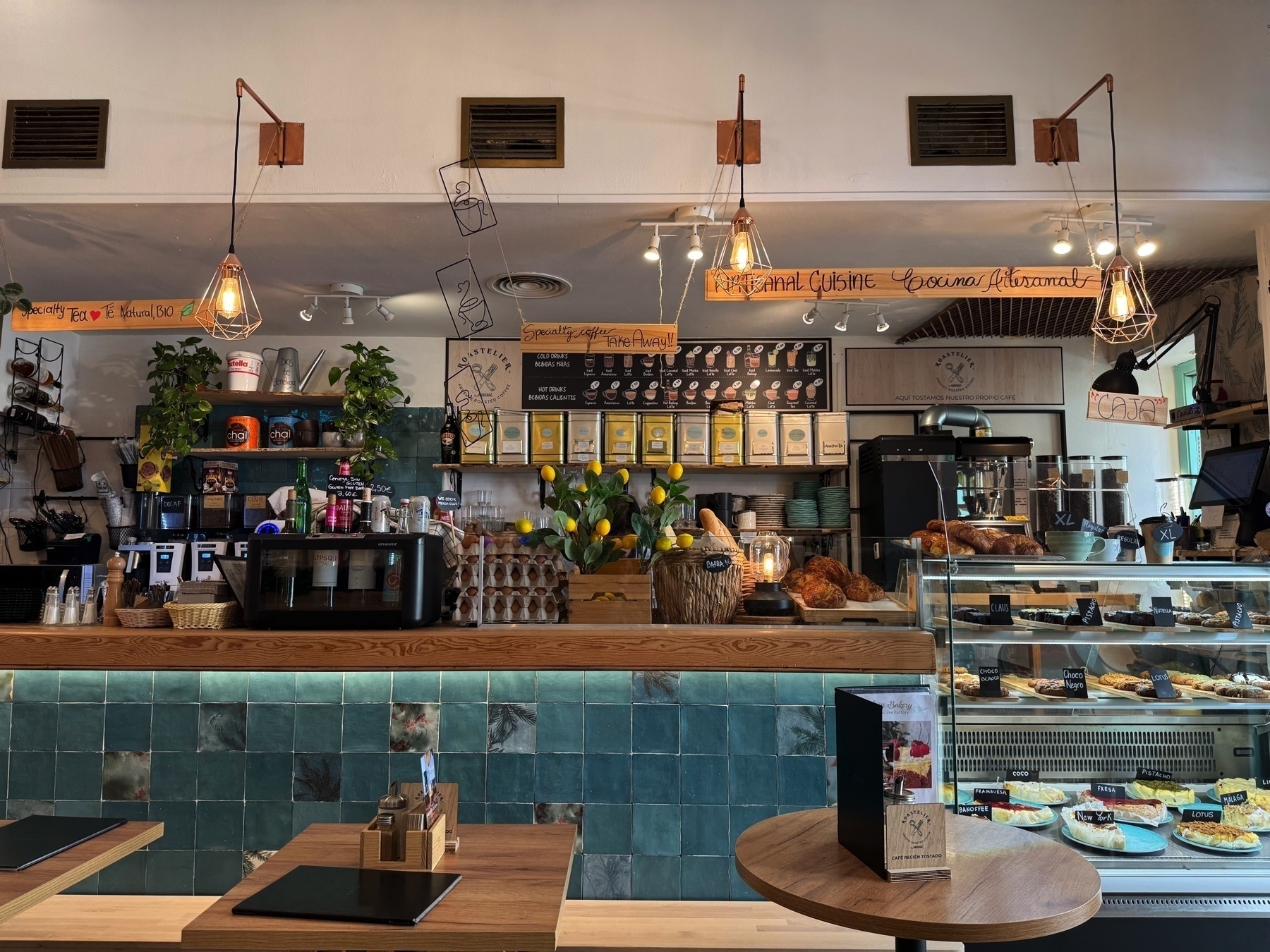
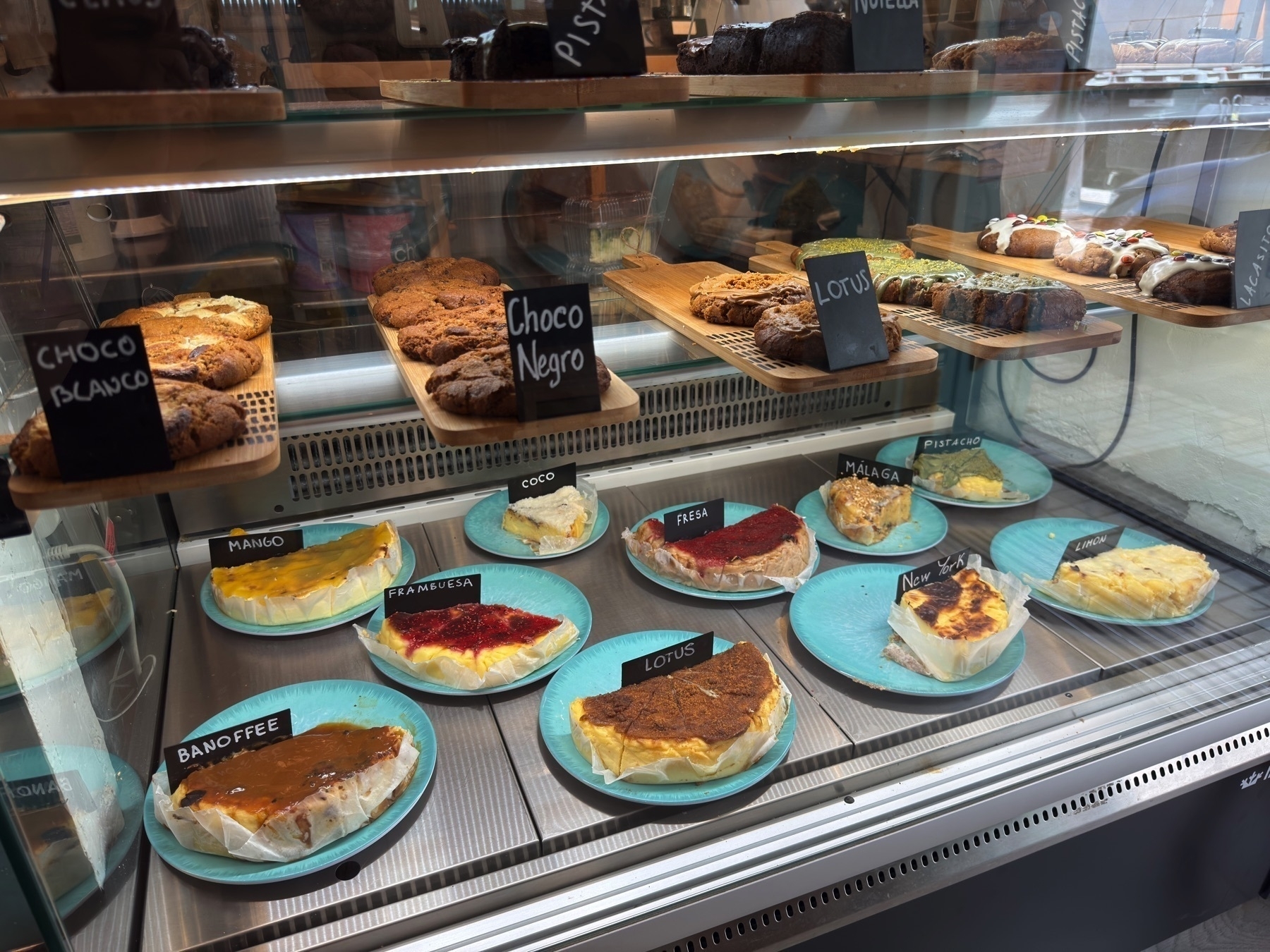
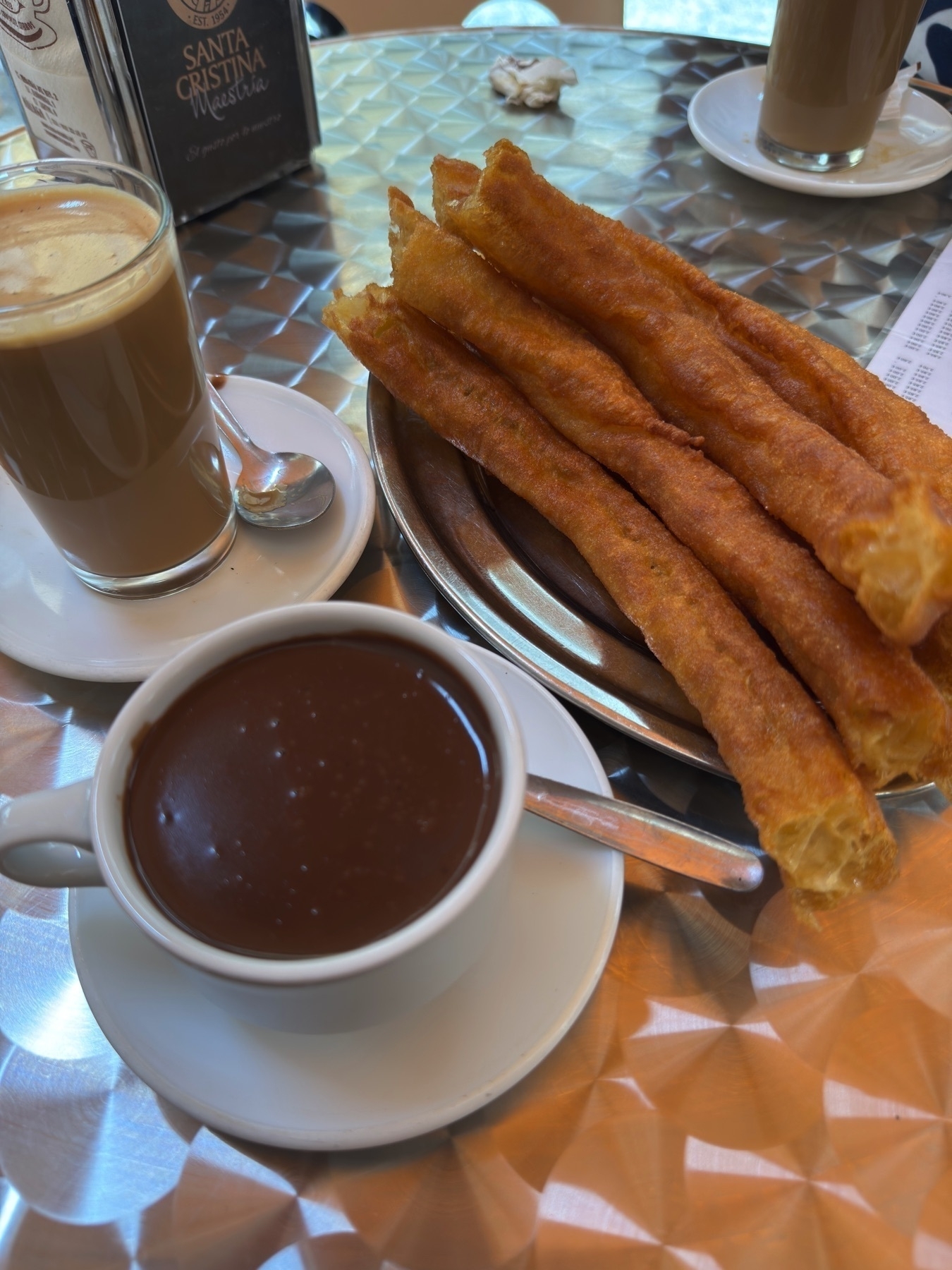

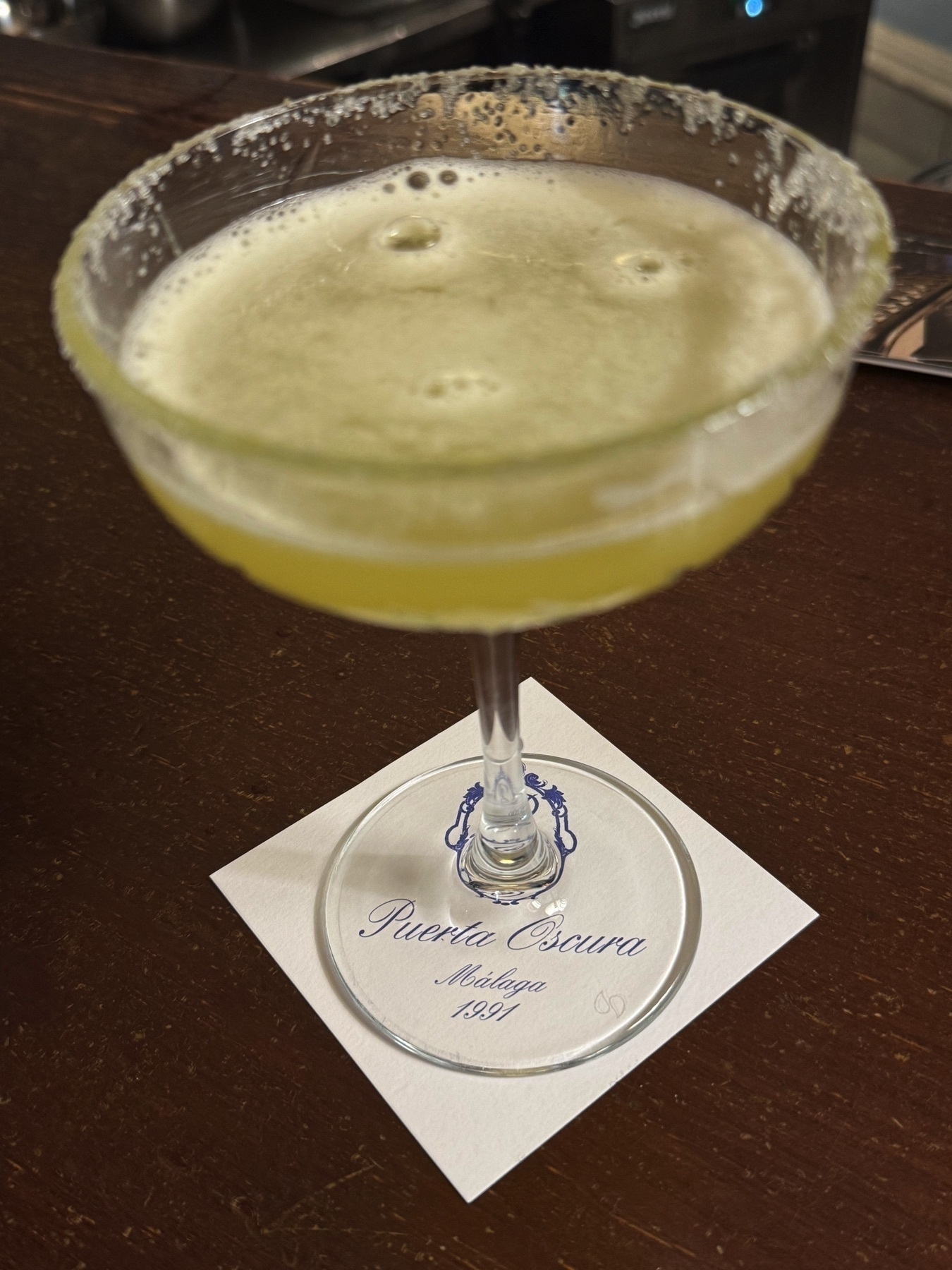
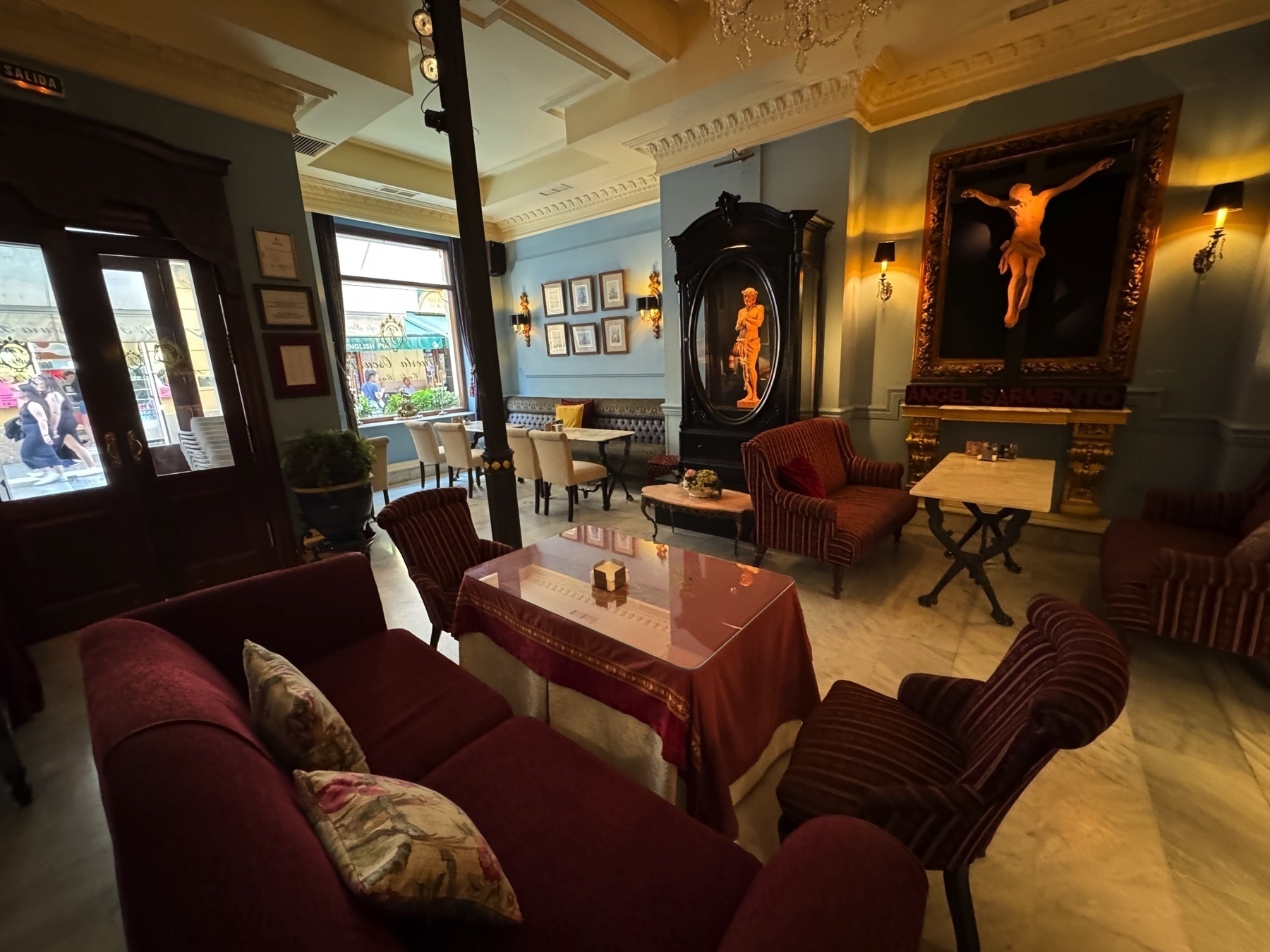
Some of my favorite moments from walking around Málaga—from churches and fortresses to street art, quiet alleys, playful shop displays, and more. The city was bustling with tourists, although I tried to avoid them in my shots.
Not pictured: the refreshing air from being right next to the sea.
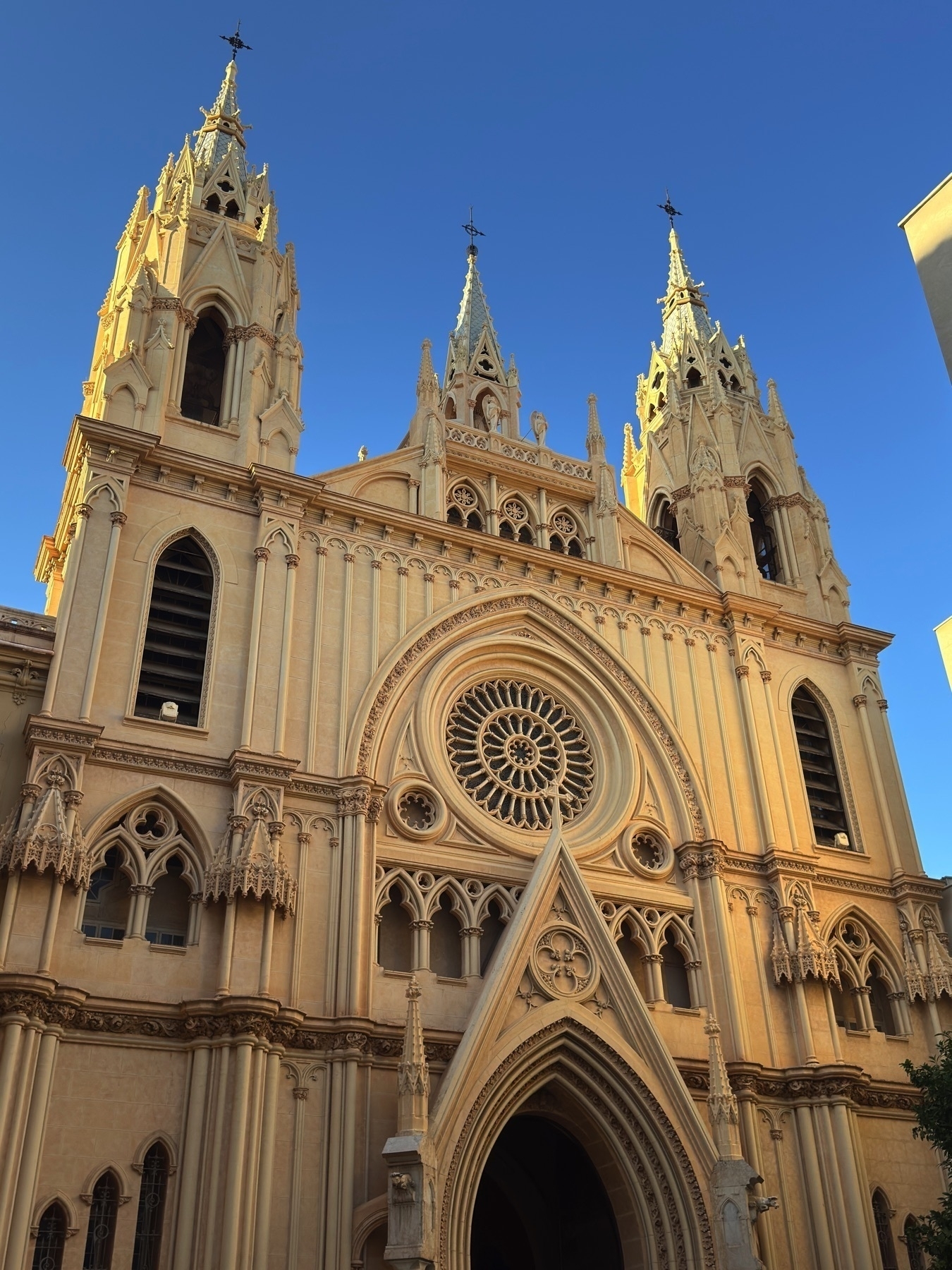
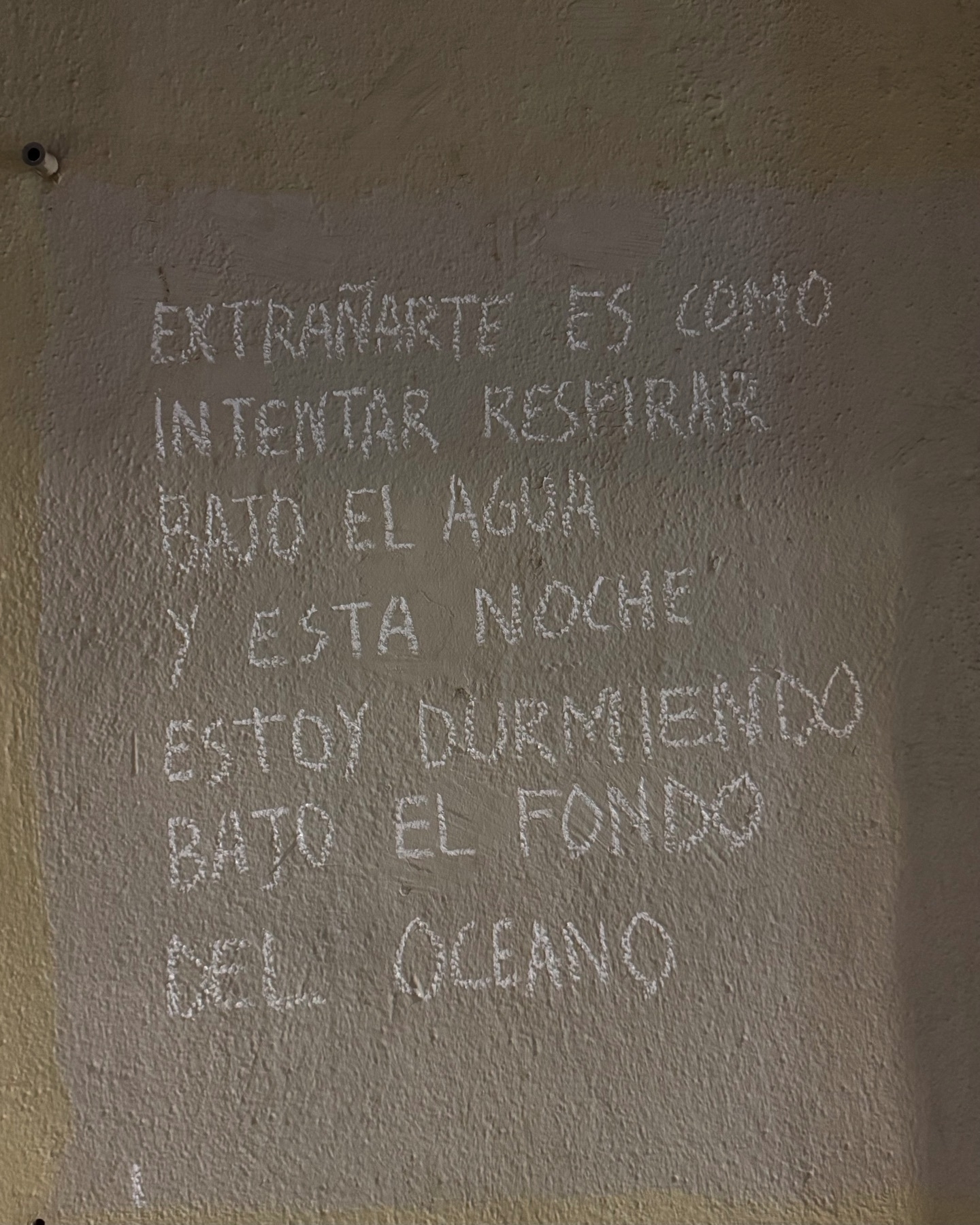
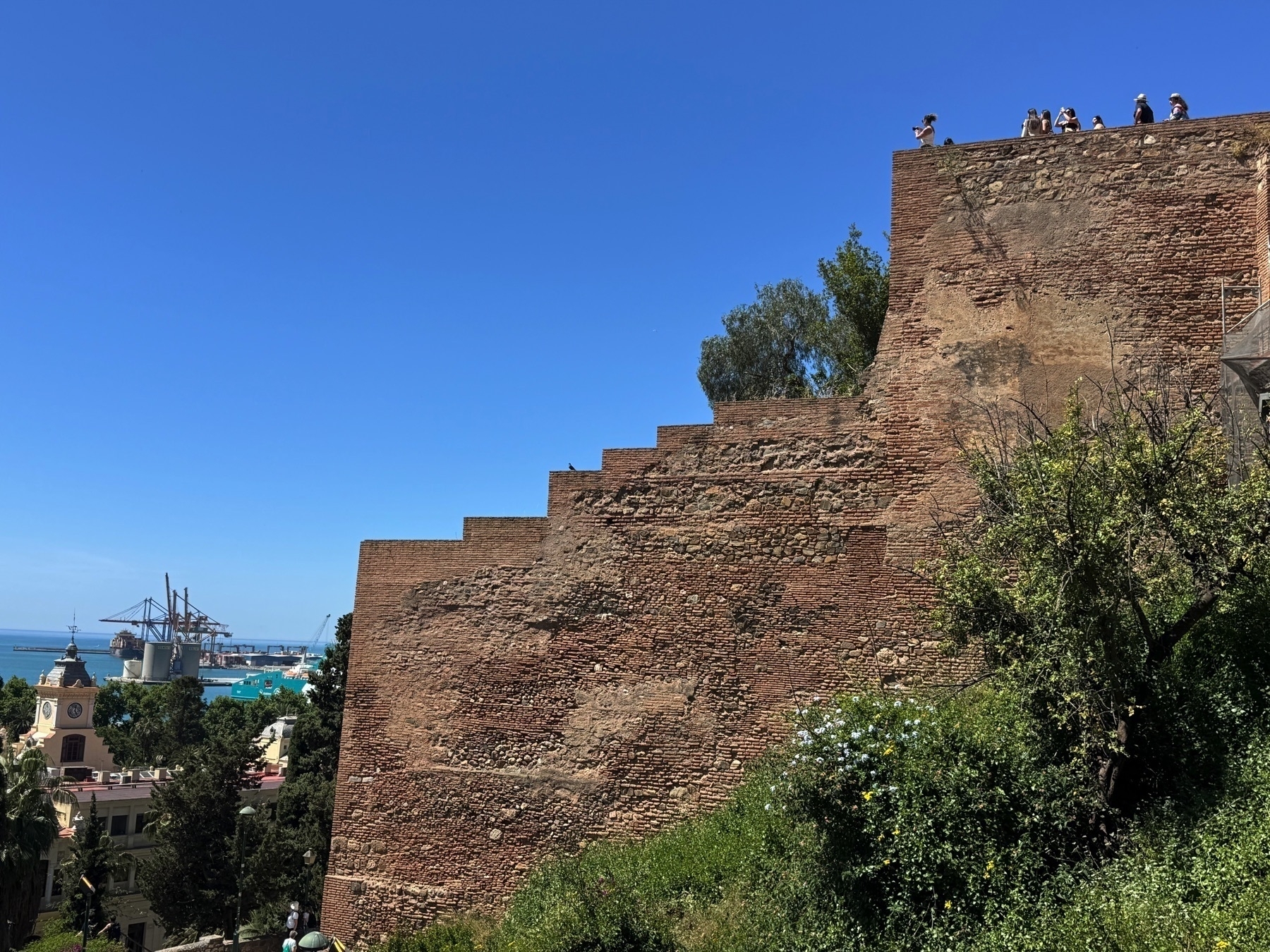
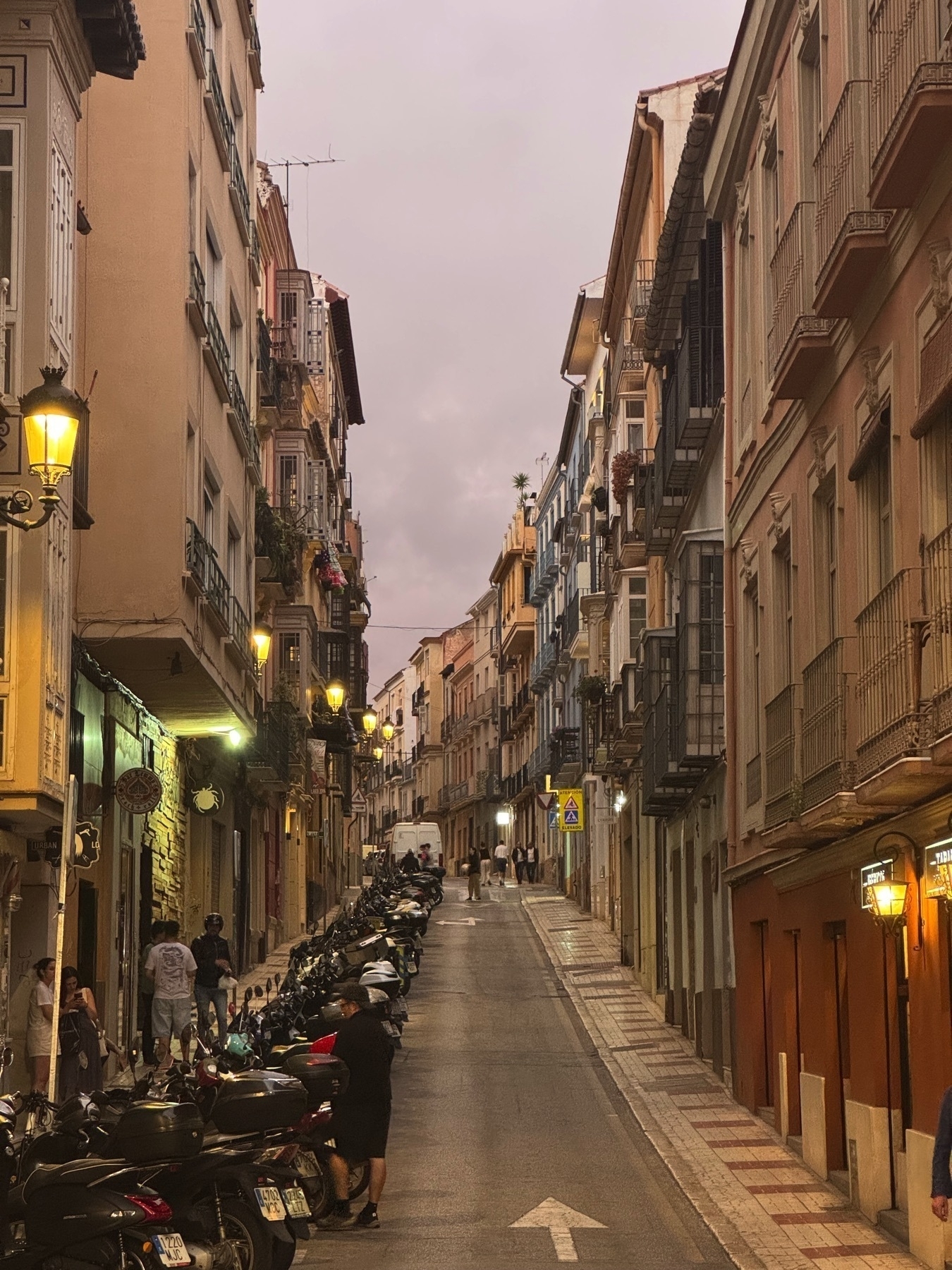
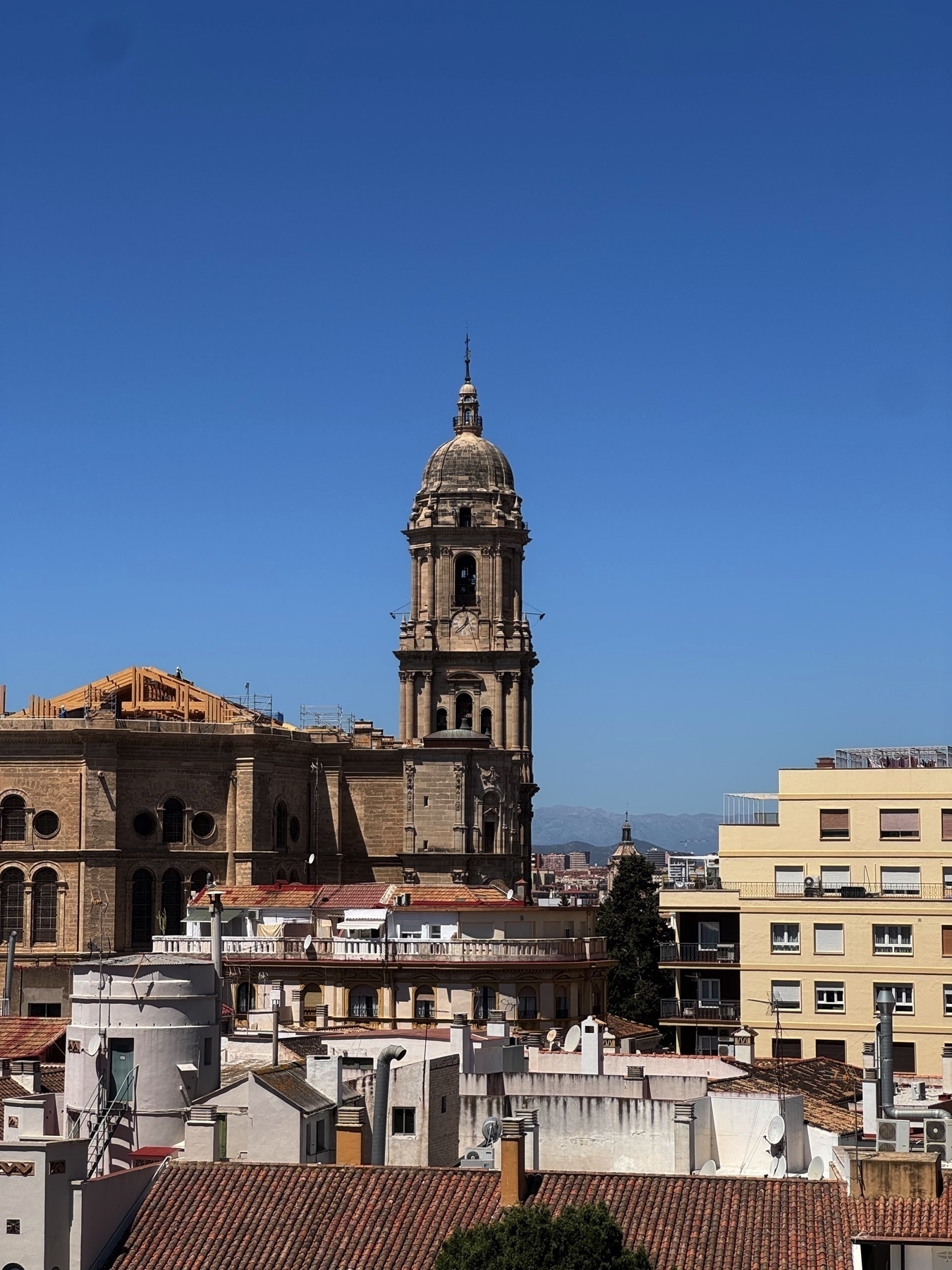
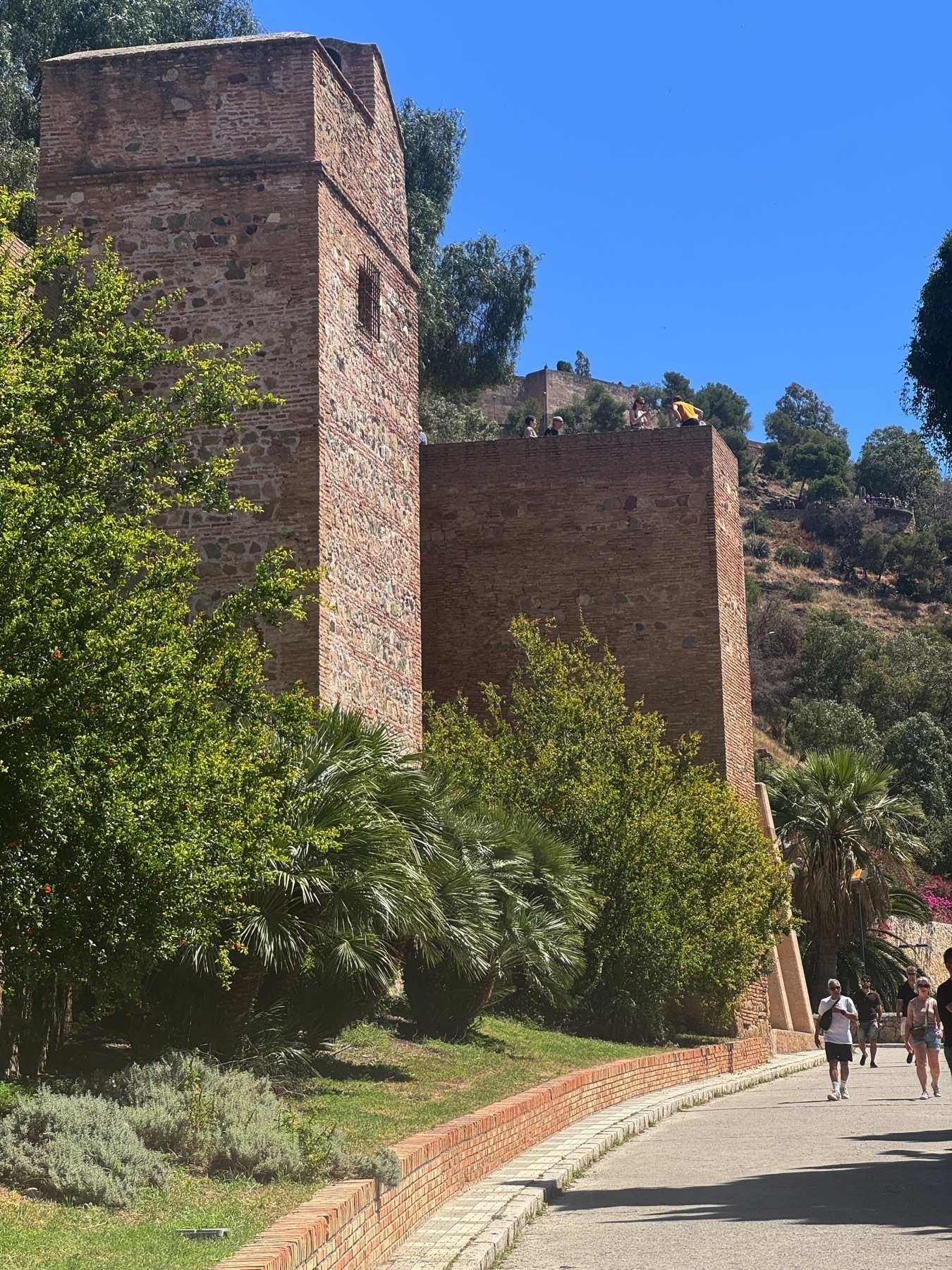
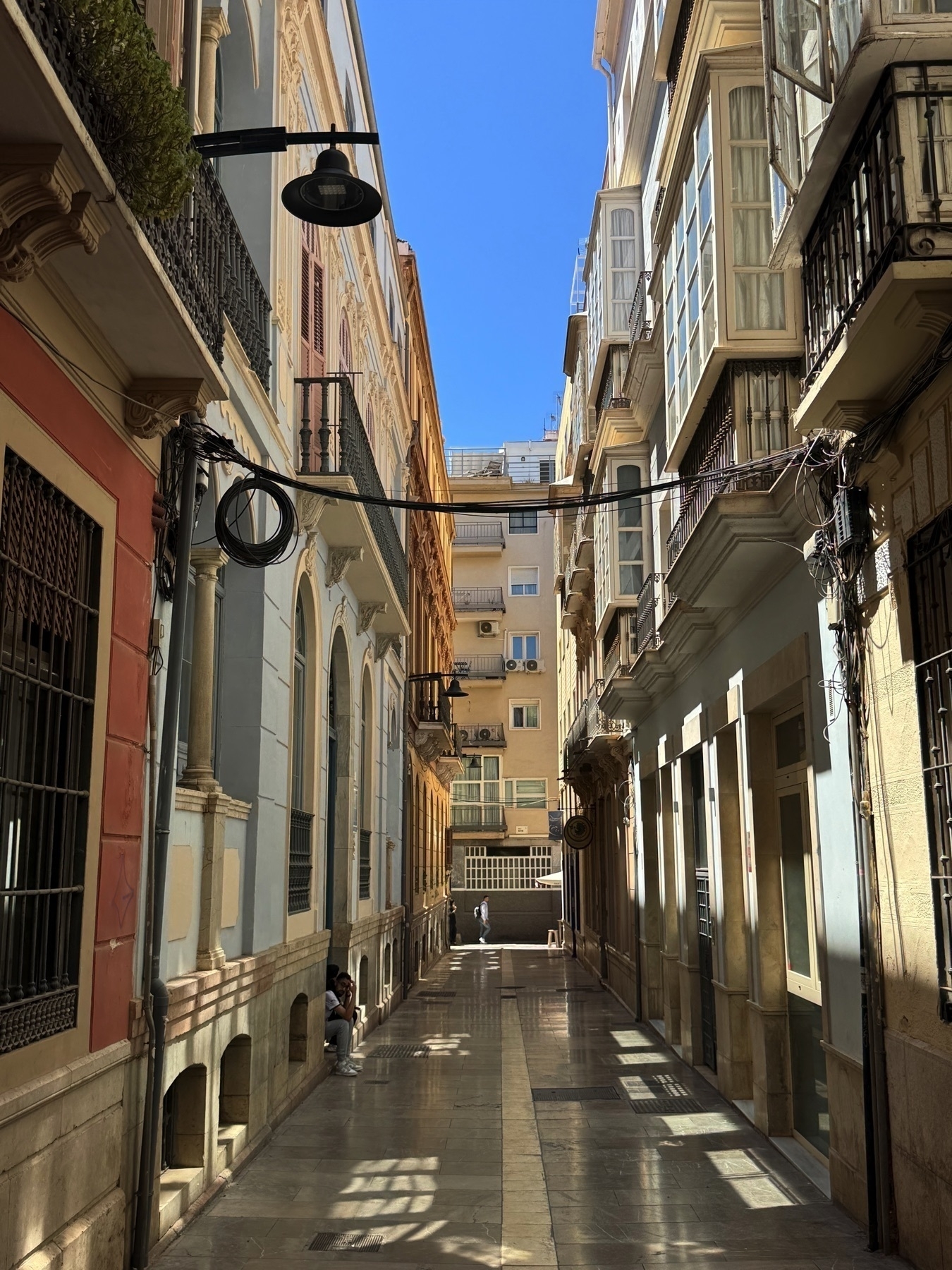
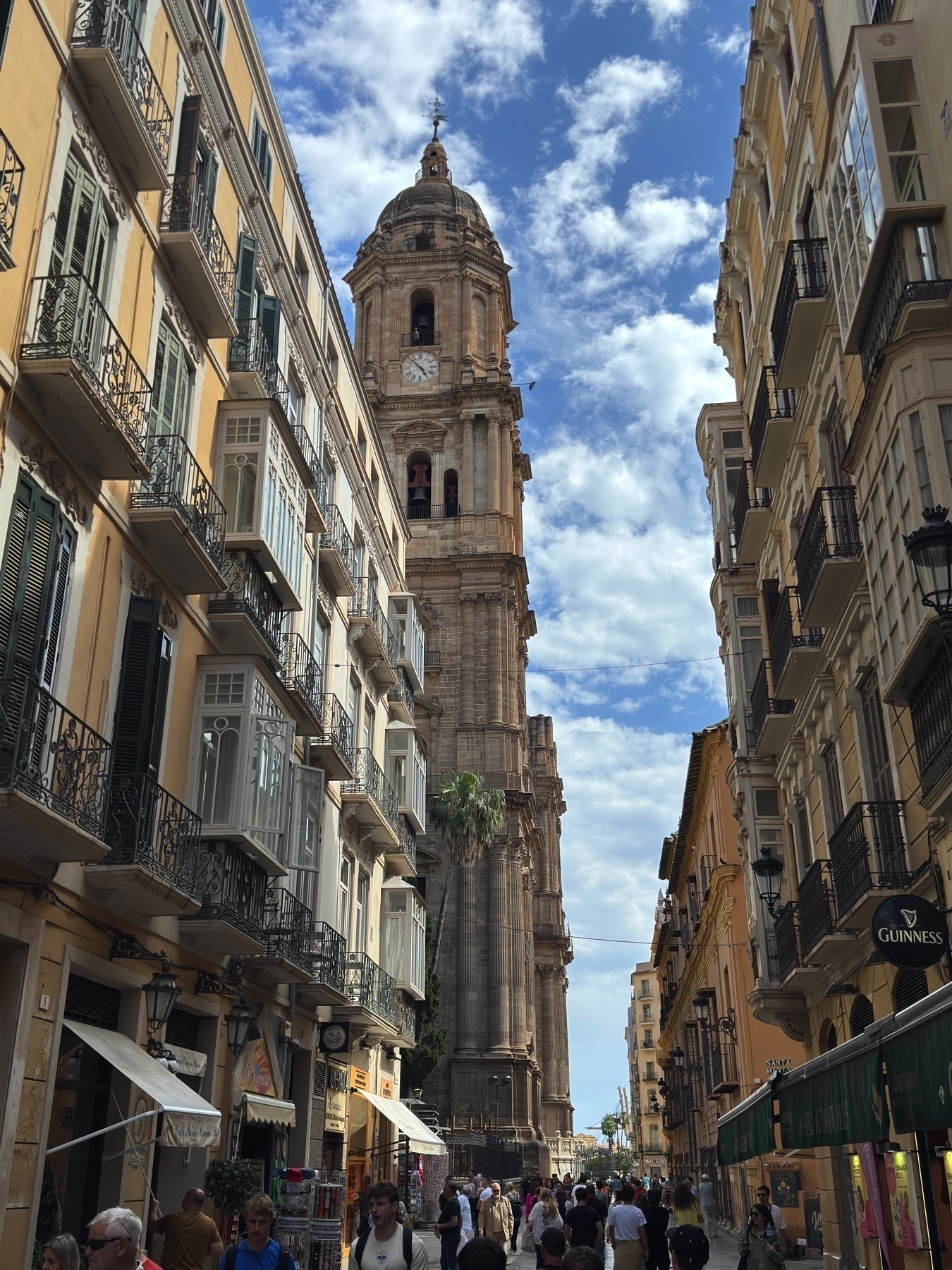

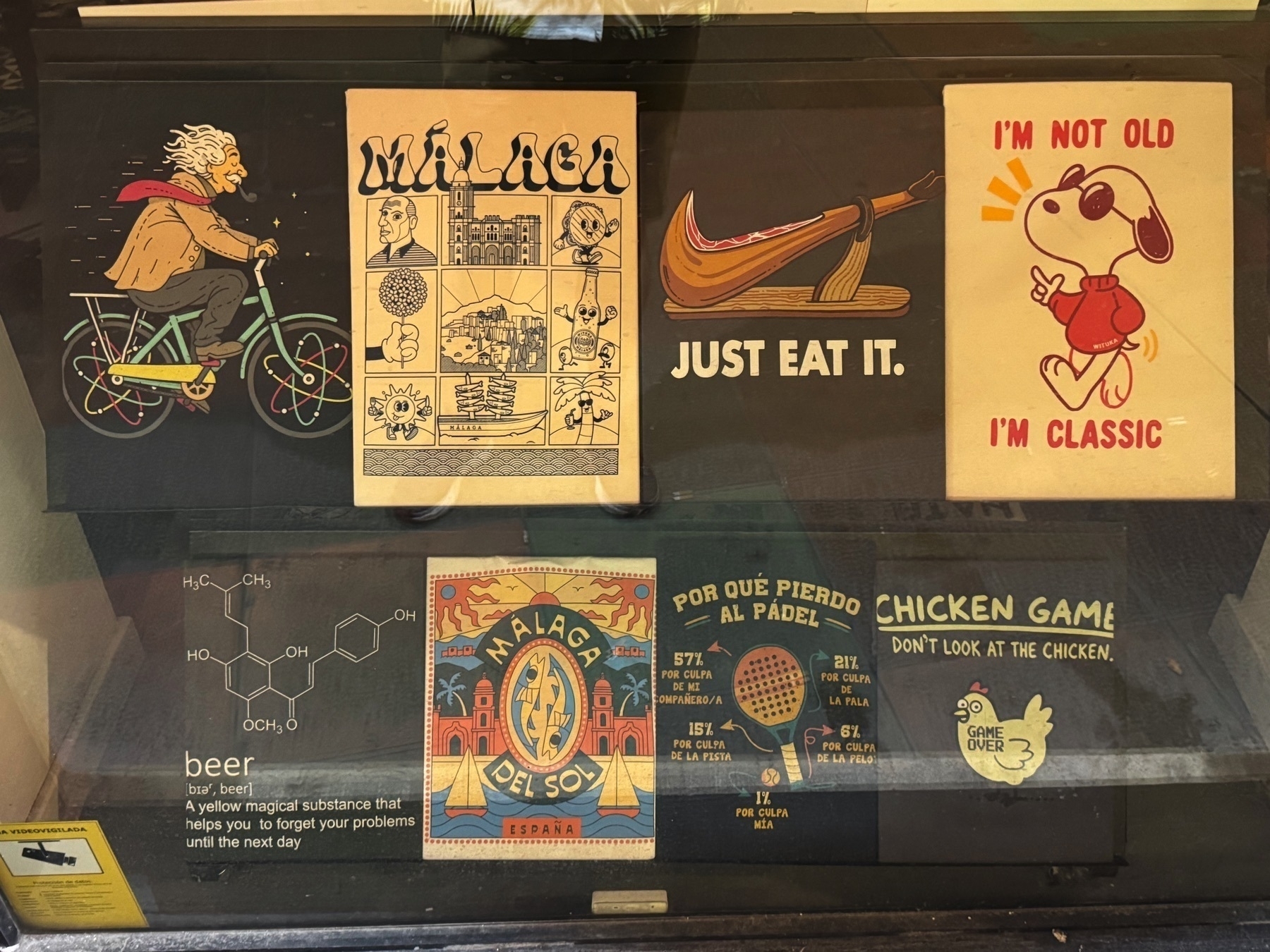
Mesón Antonio was one of our go-to dinner places during the week.
Our favorites were the alcachofas rotas con huevo frito y jamón (fried artichokes with egg and ham), ensalada de aguacate (avocado salad), zamburiñas al Pil Pil (zamburiñas in sauce), and almejas del Cantábrico (steamed clams).

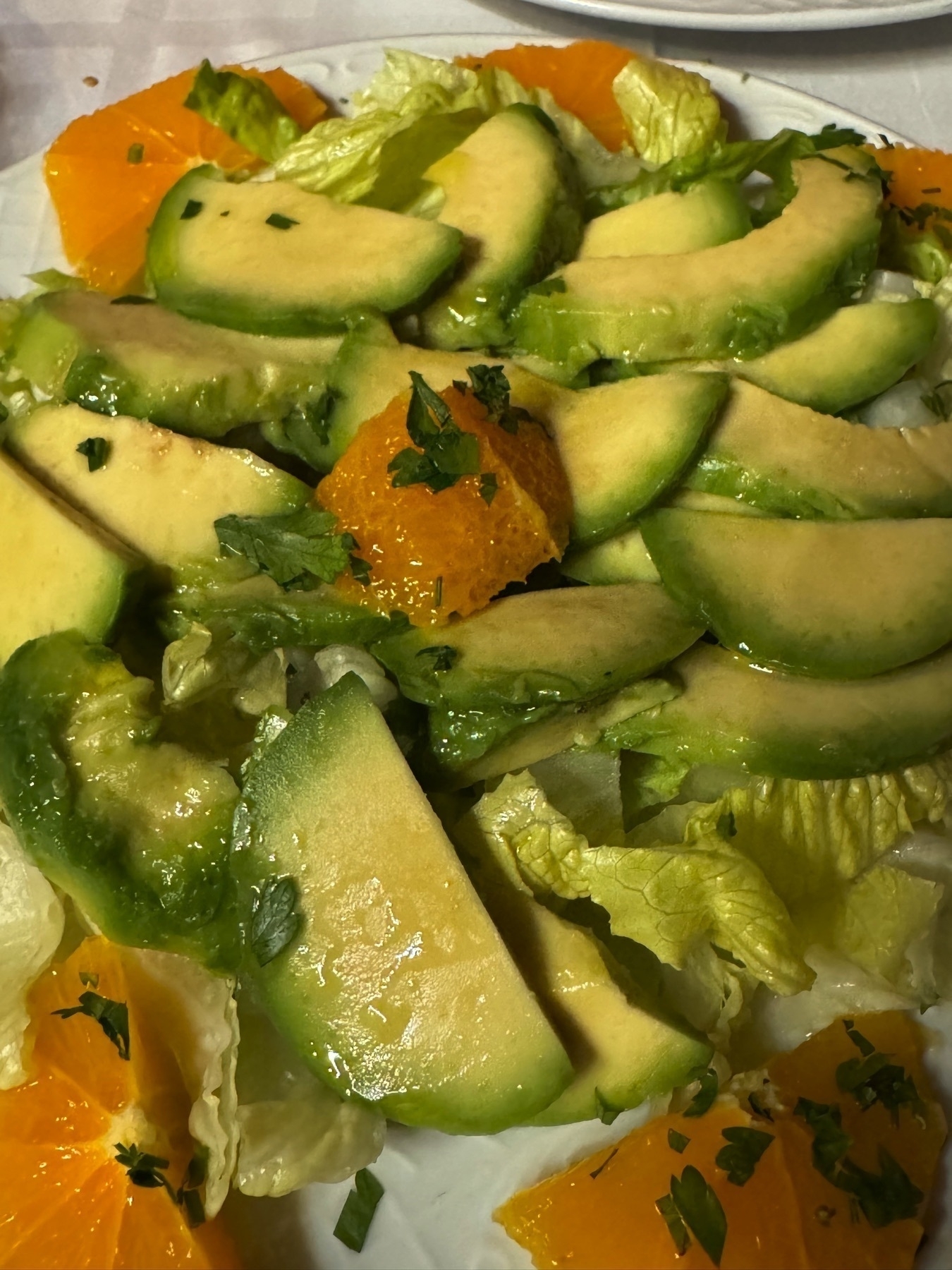
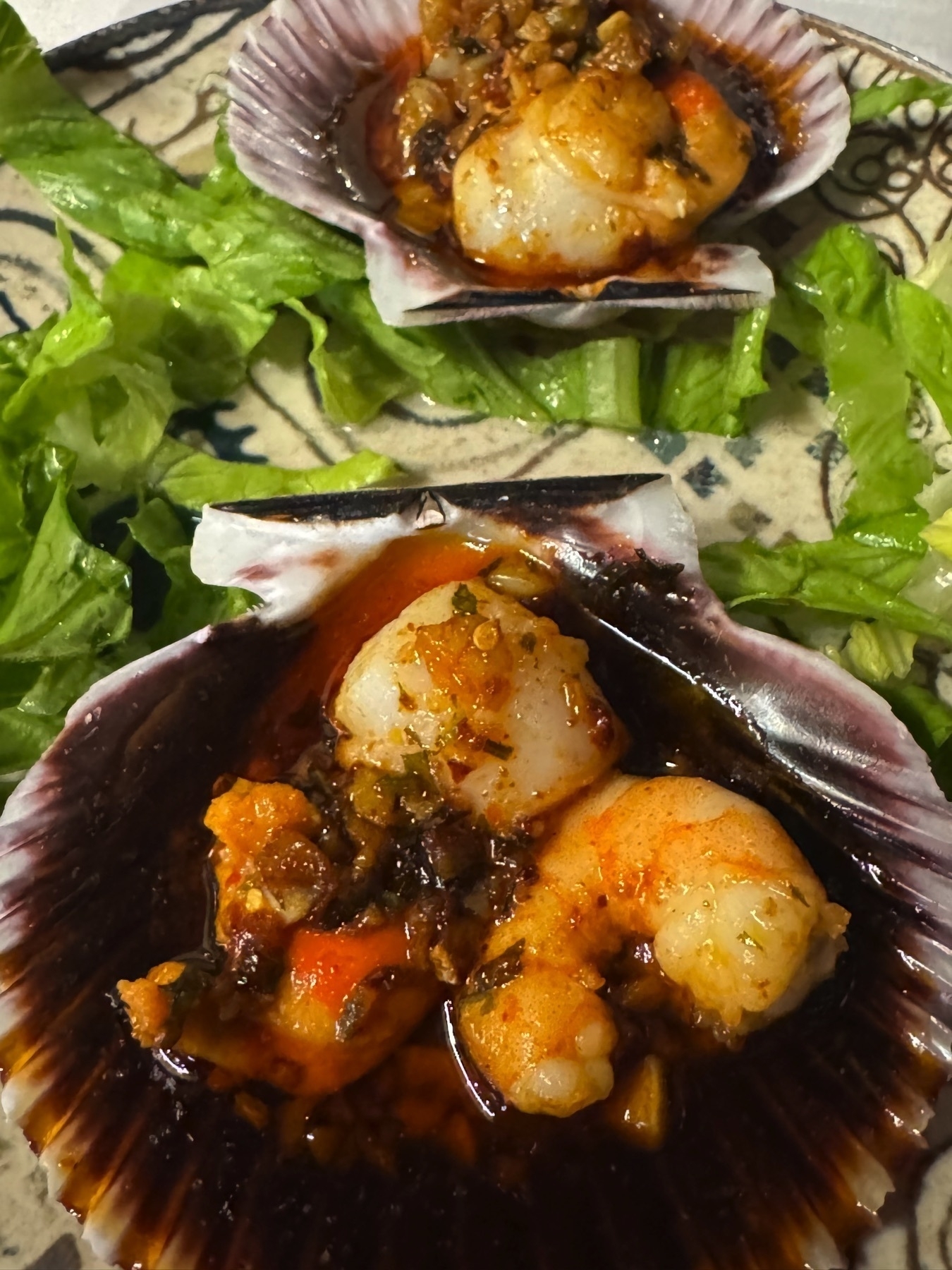
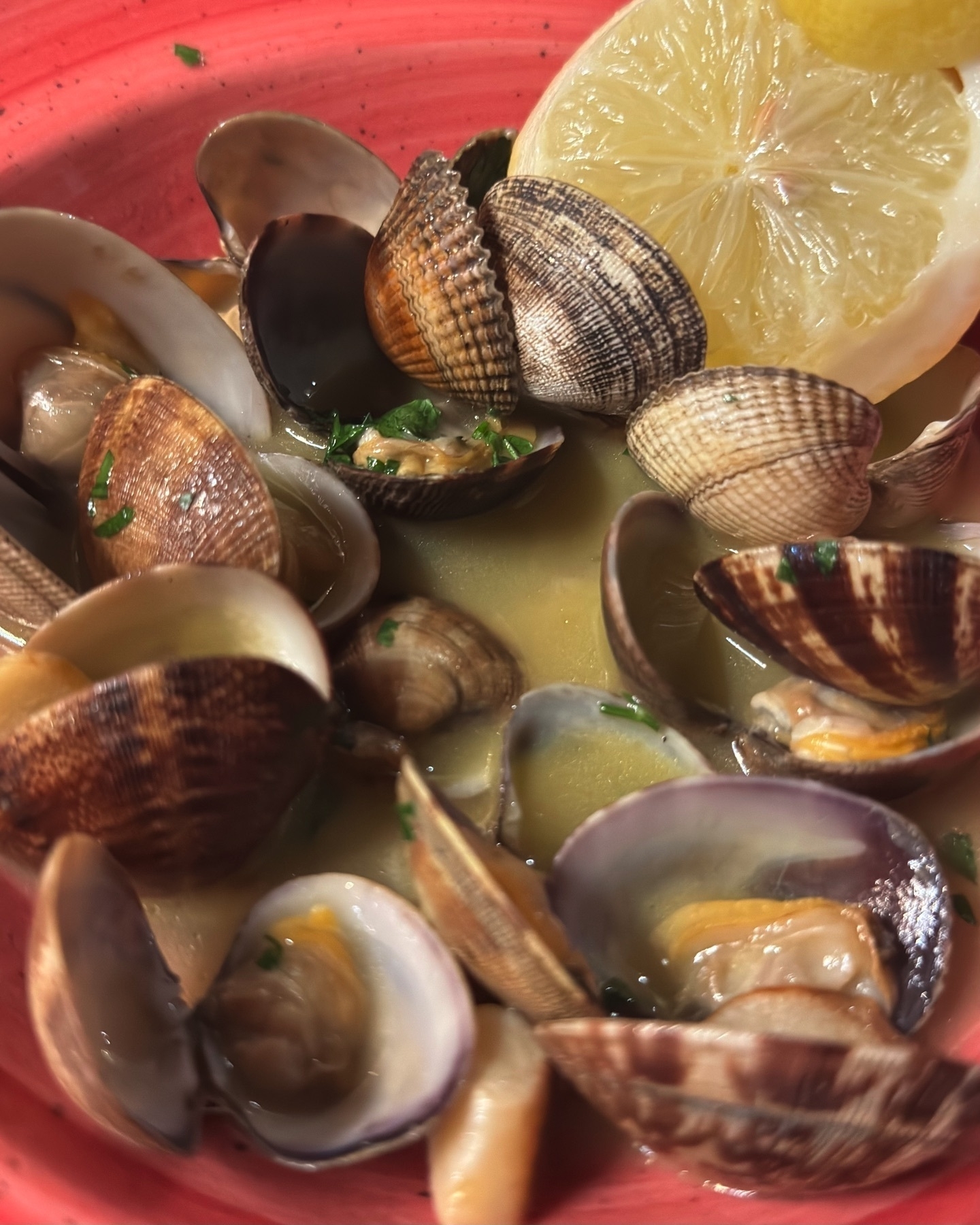
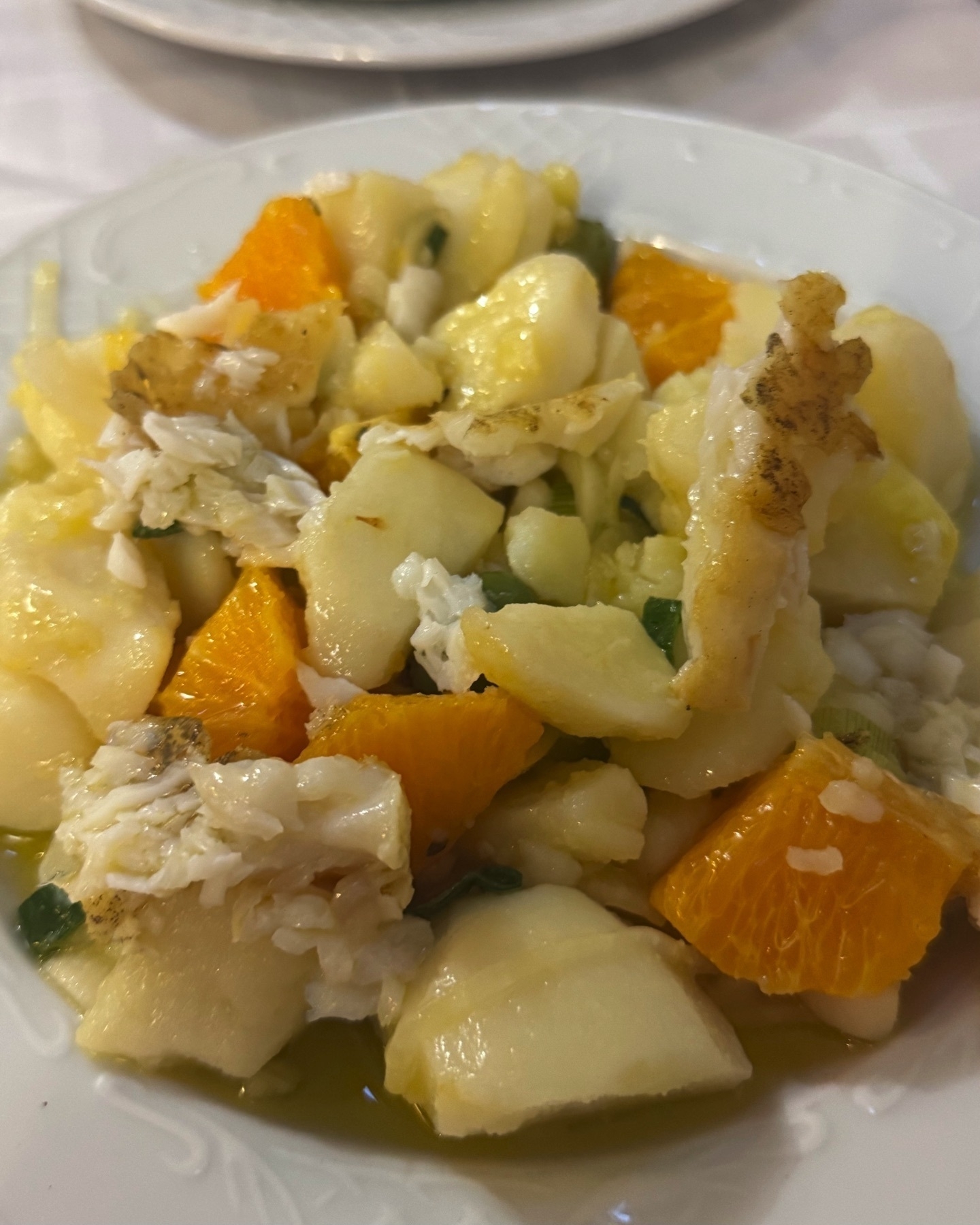
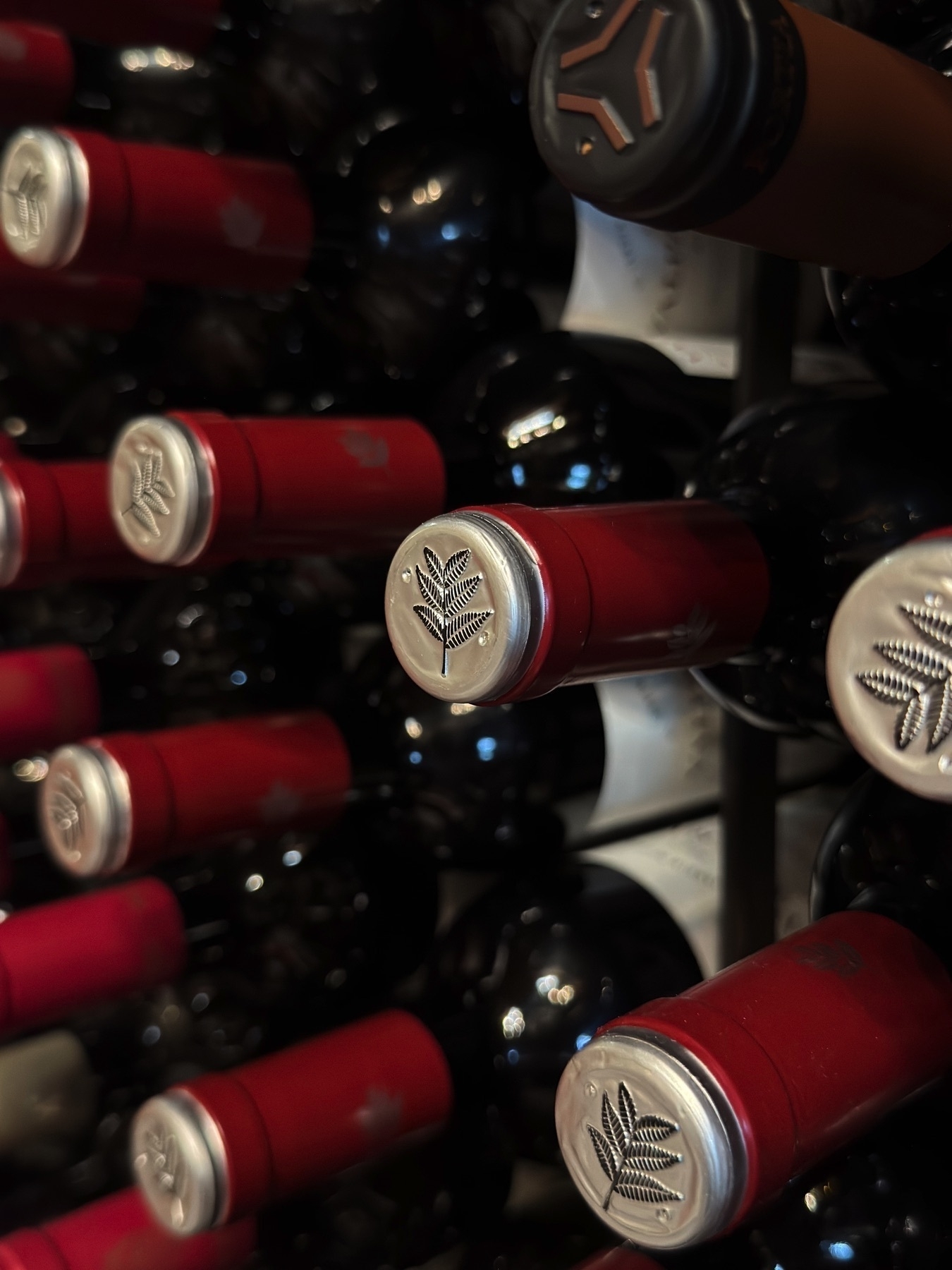
On Friday we went to the Picasso museum—he was born in Málaga! It was great to see classics like Lola with a Doll, but I enjoyed the Man Looking at a Sleeping Woman and his Cubist portraits the most.
A new exhibit by Farah Atassi opened the same day. Her paintings echo some of Picasso’s styles.
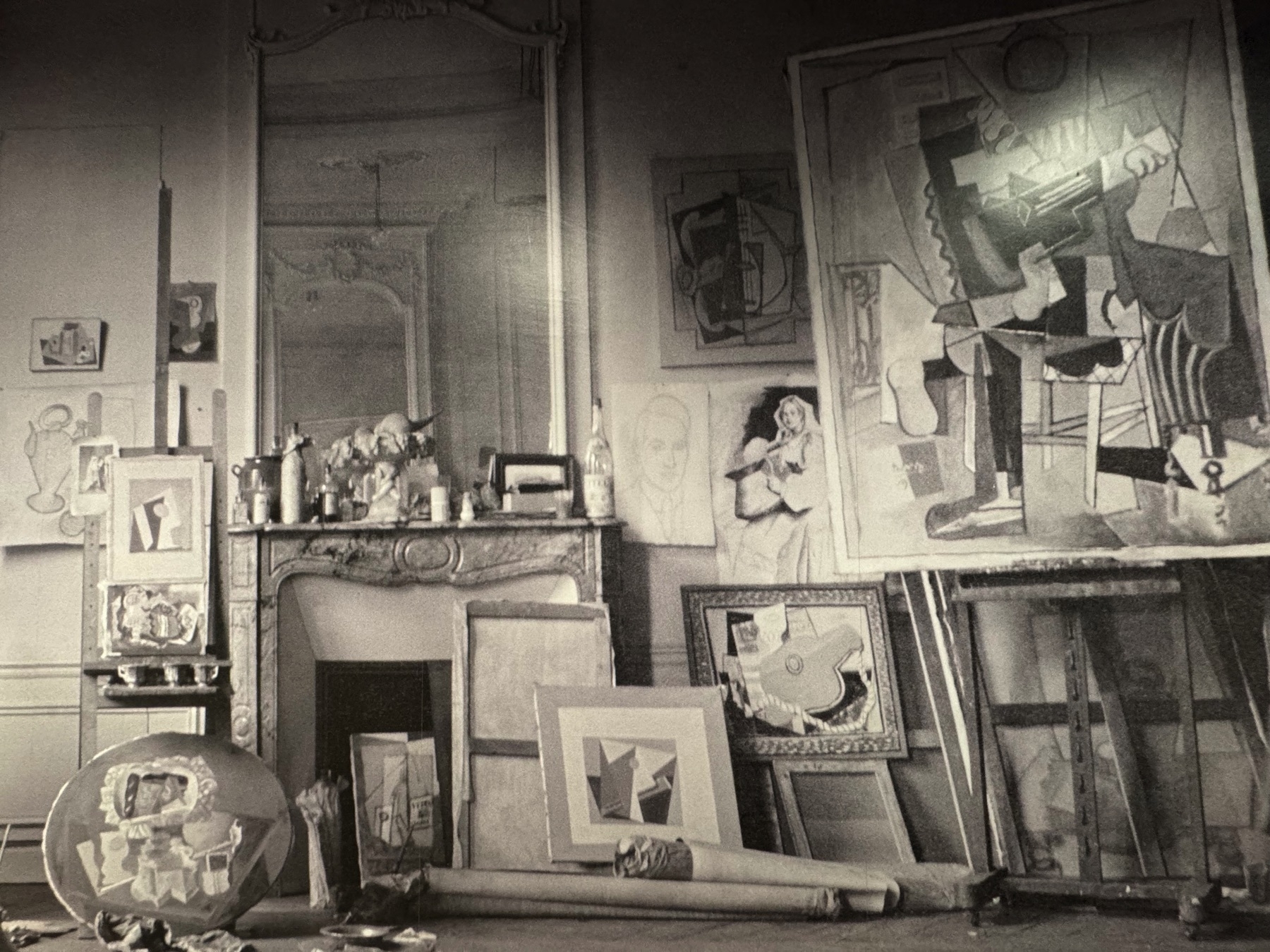

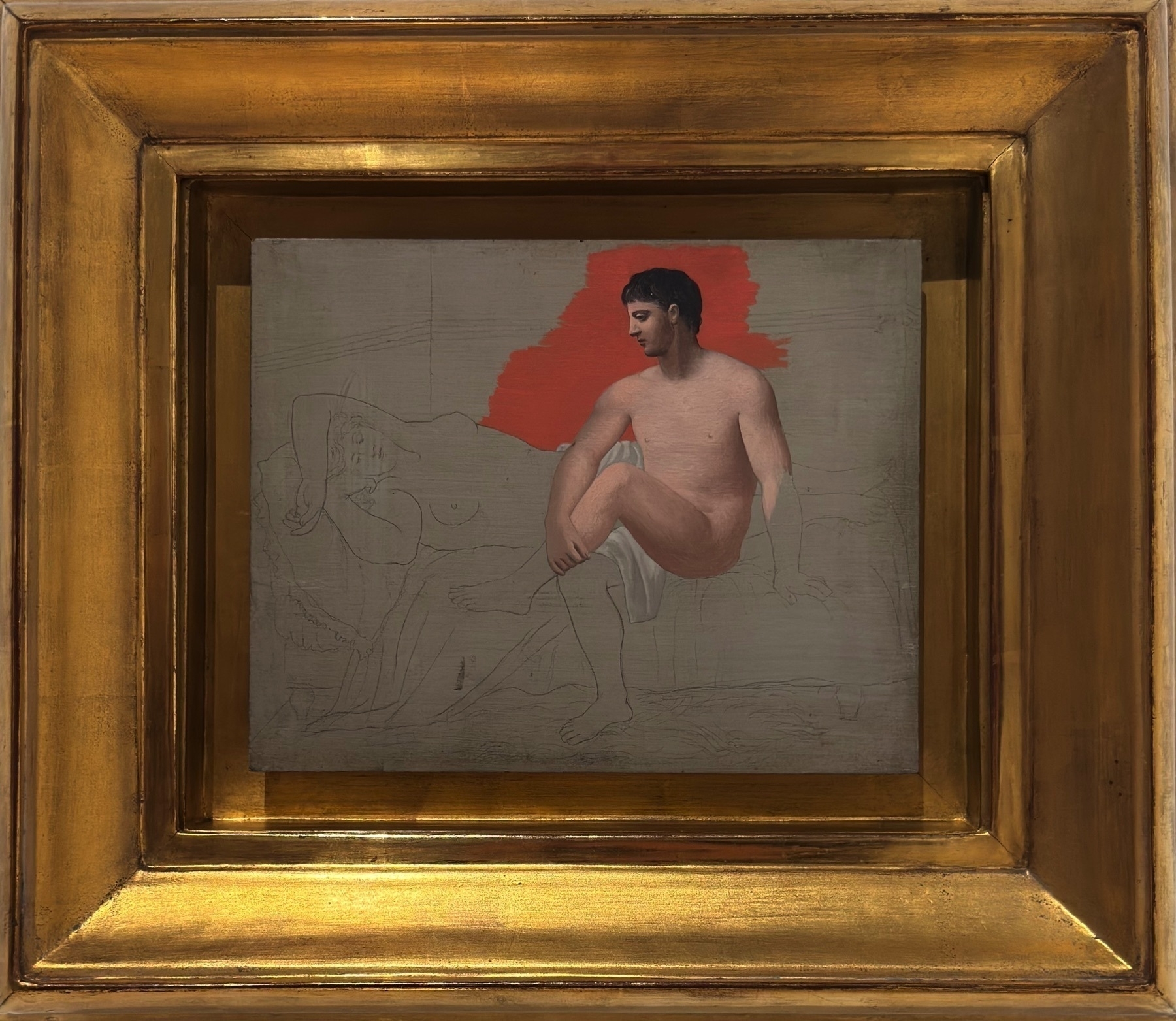

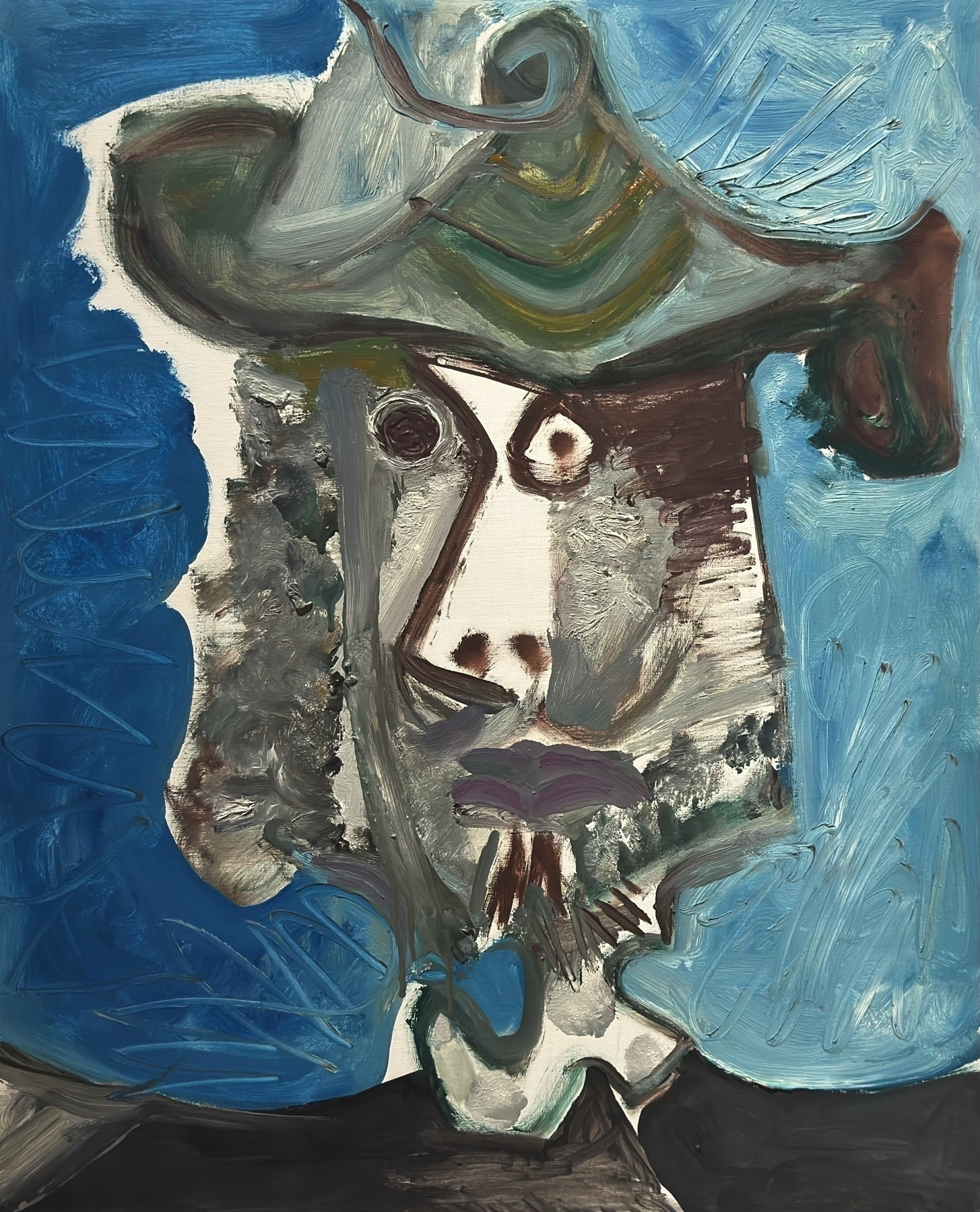
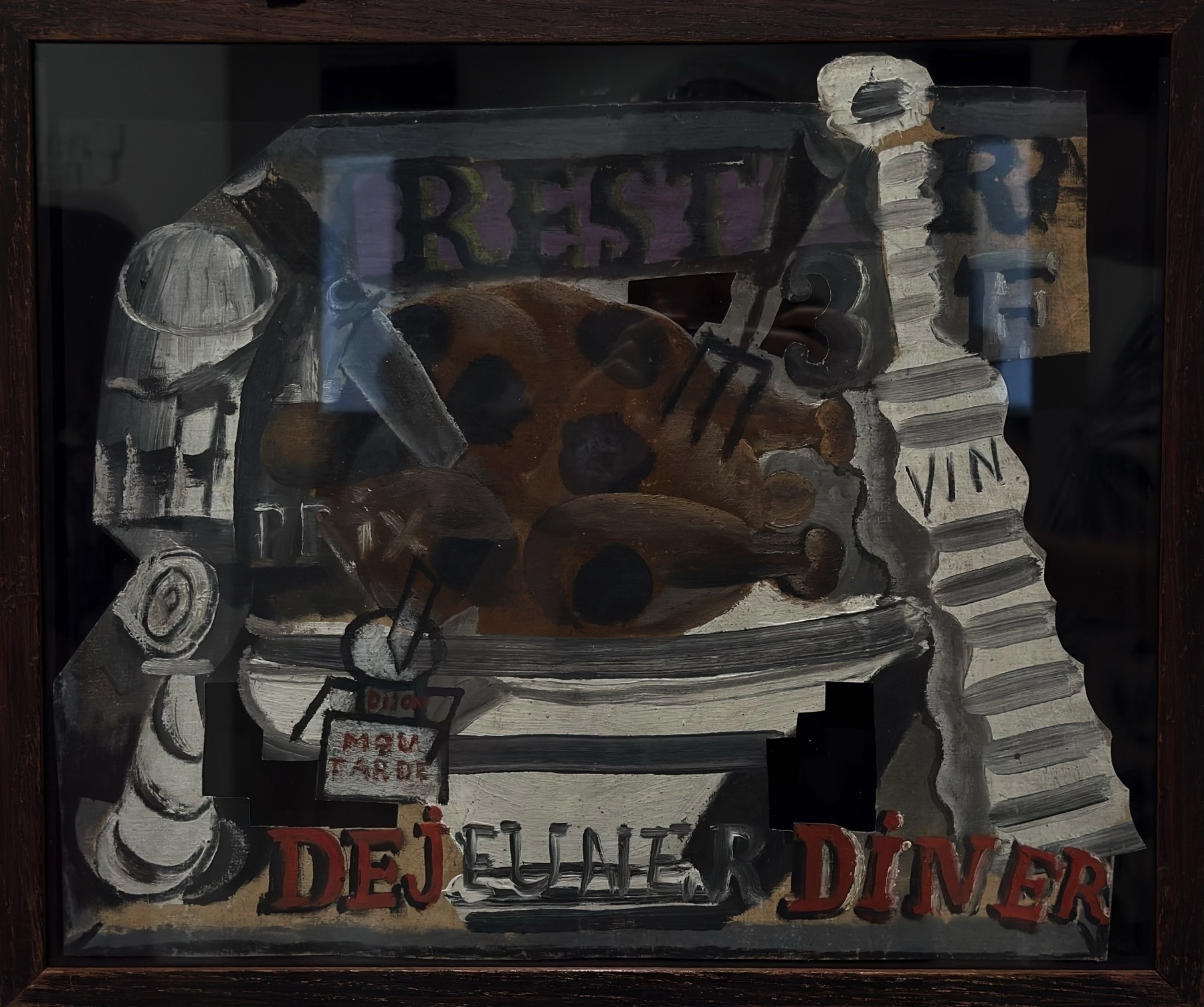
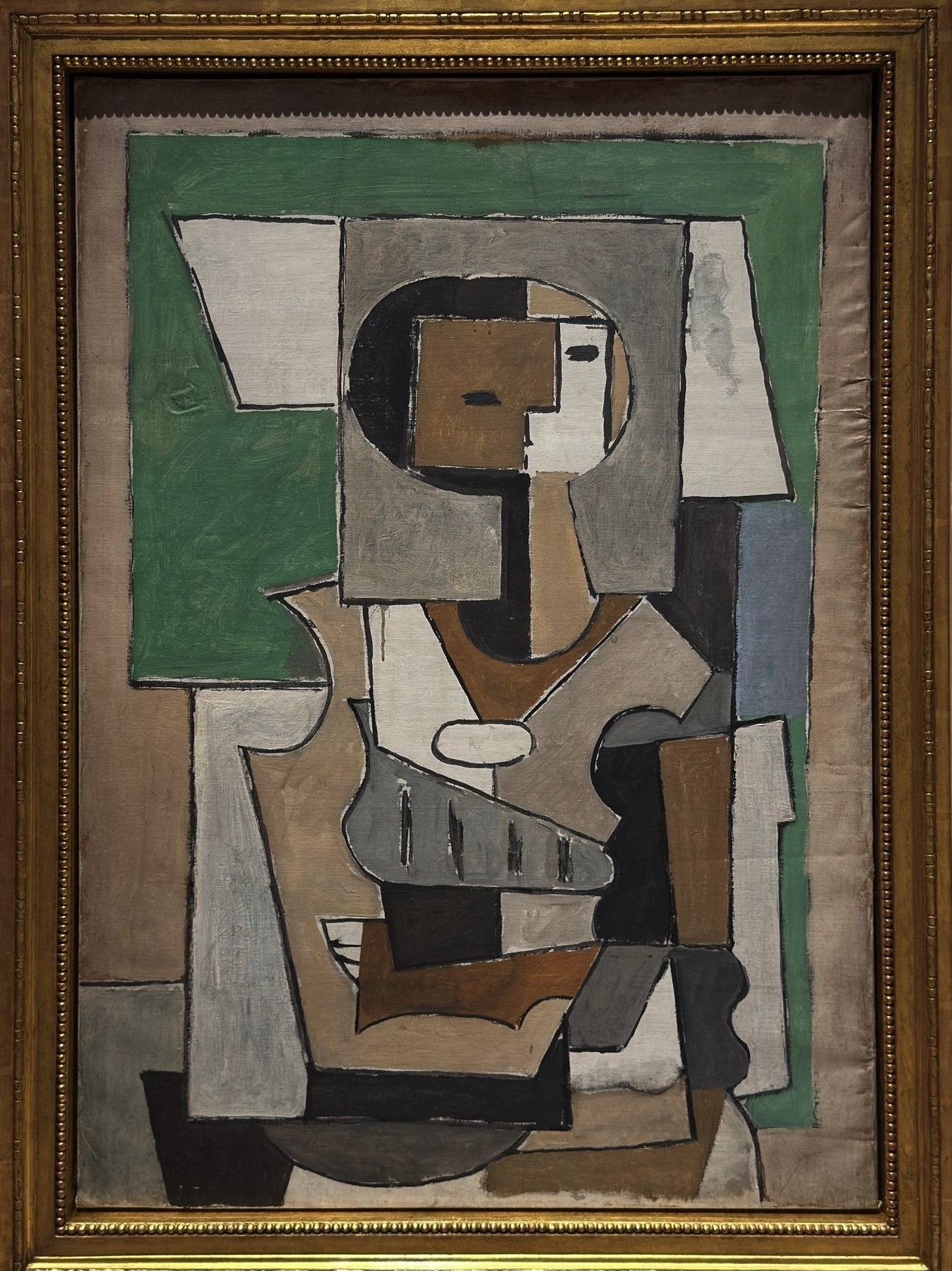
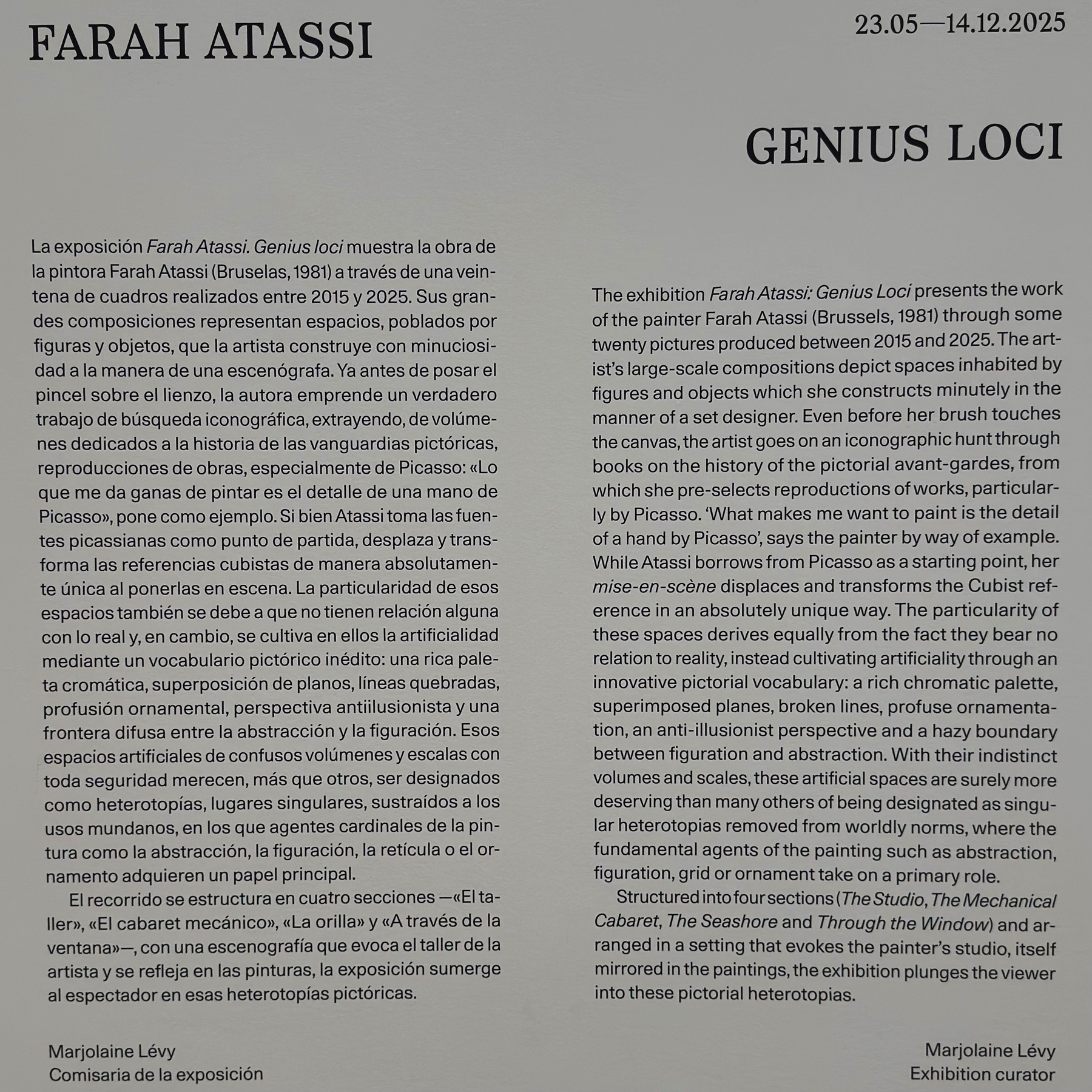

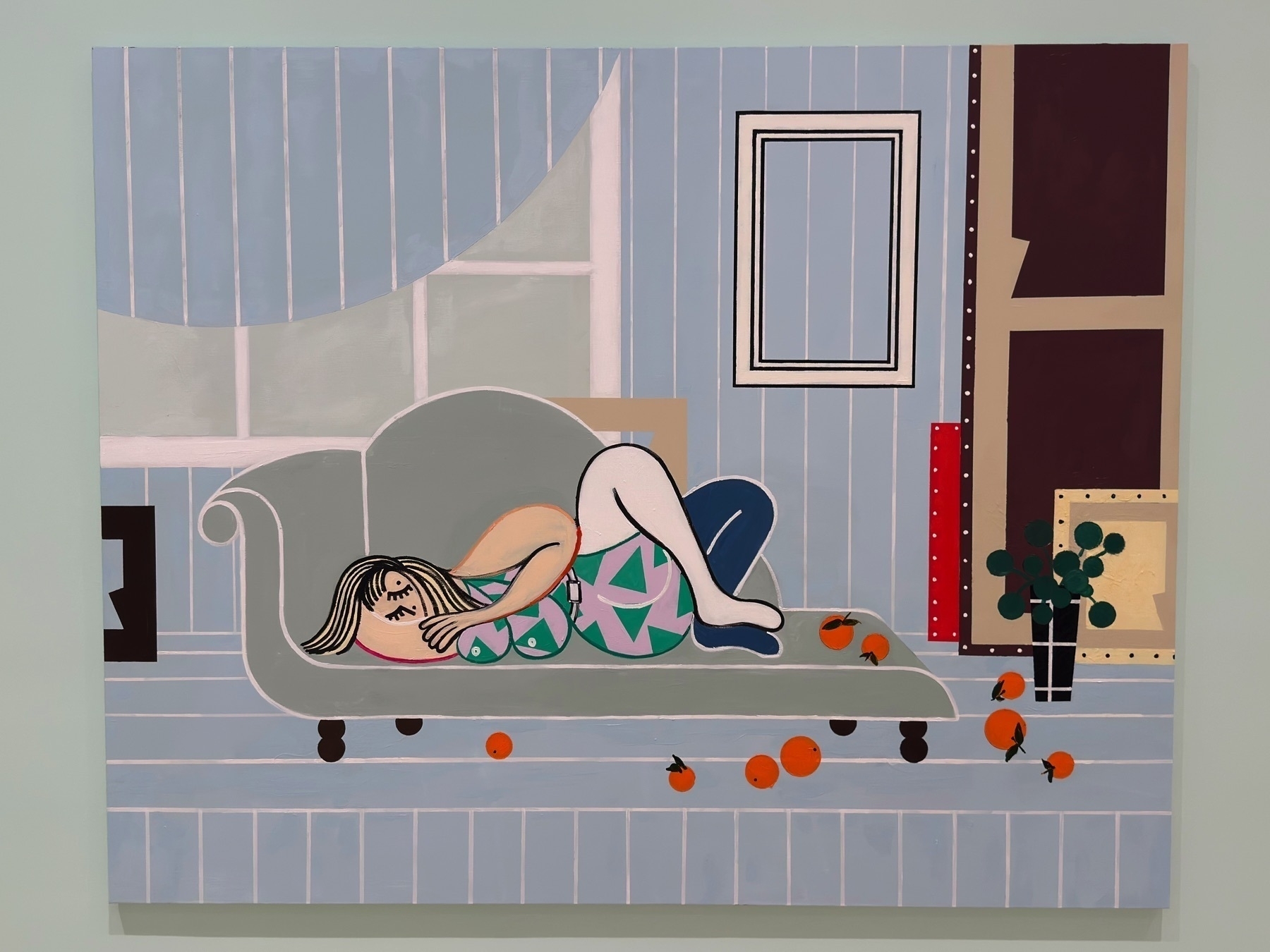
Twice we went to El Pimpi and loved the ensalada de pimientos asados con ventresca (peppers with tuna), cogollos de luchita con añito frito (lettuce with fried garlic), langostinos al pimpi (garlic shrimp), and the potaje de garbanzos, pulpo, y langostinos (chickpea, octopus, and shrimp stew).
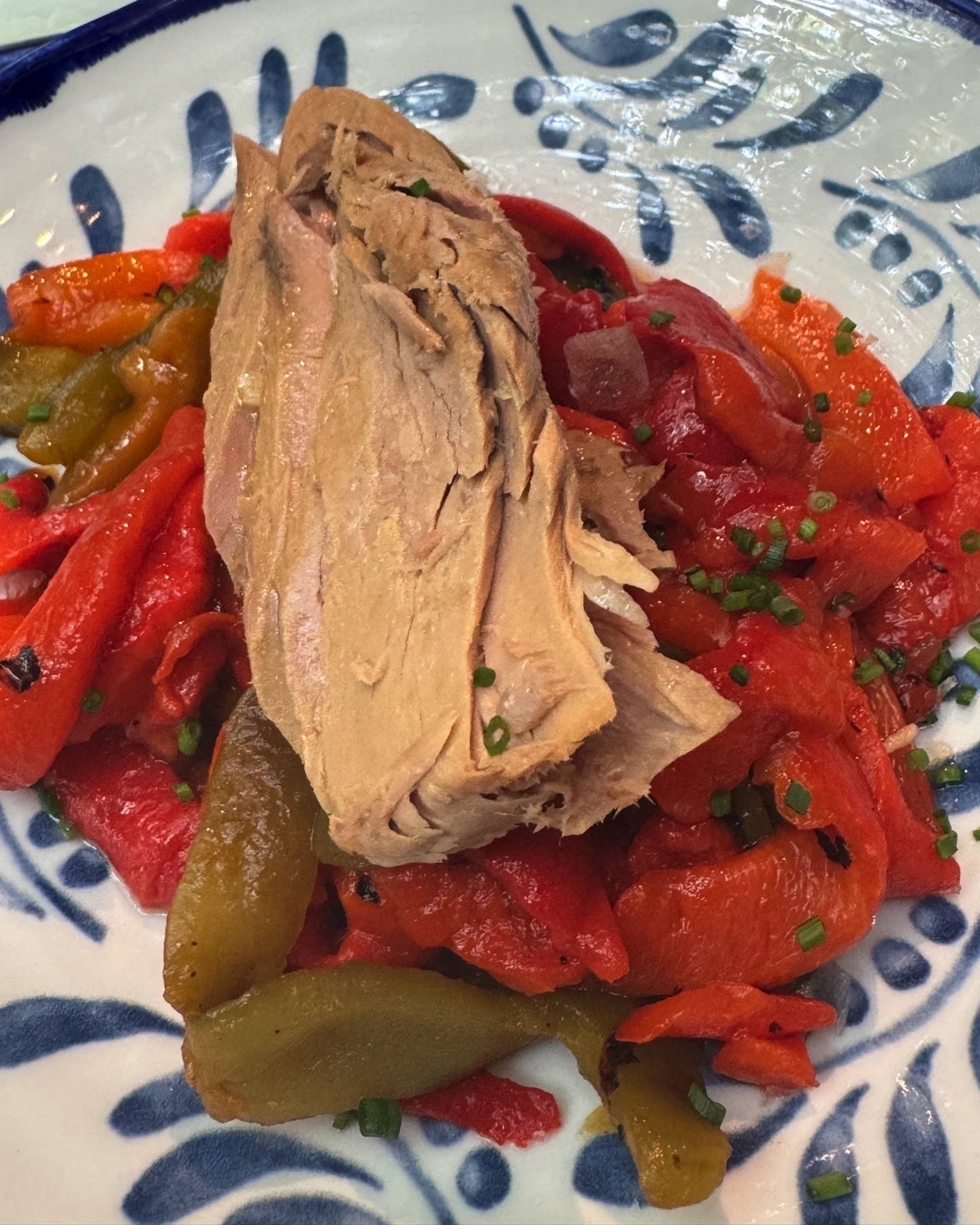

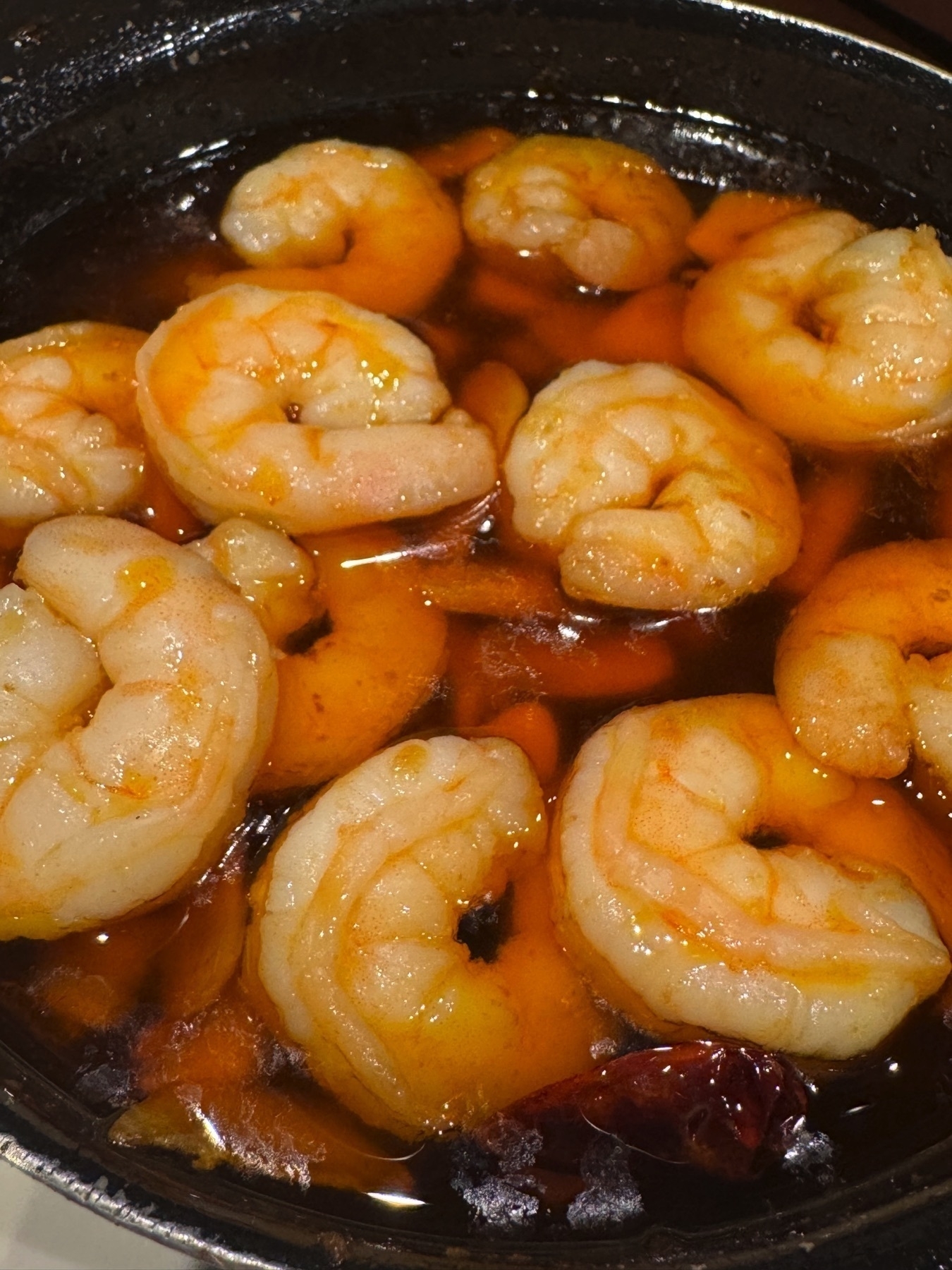
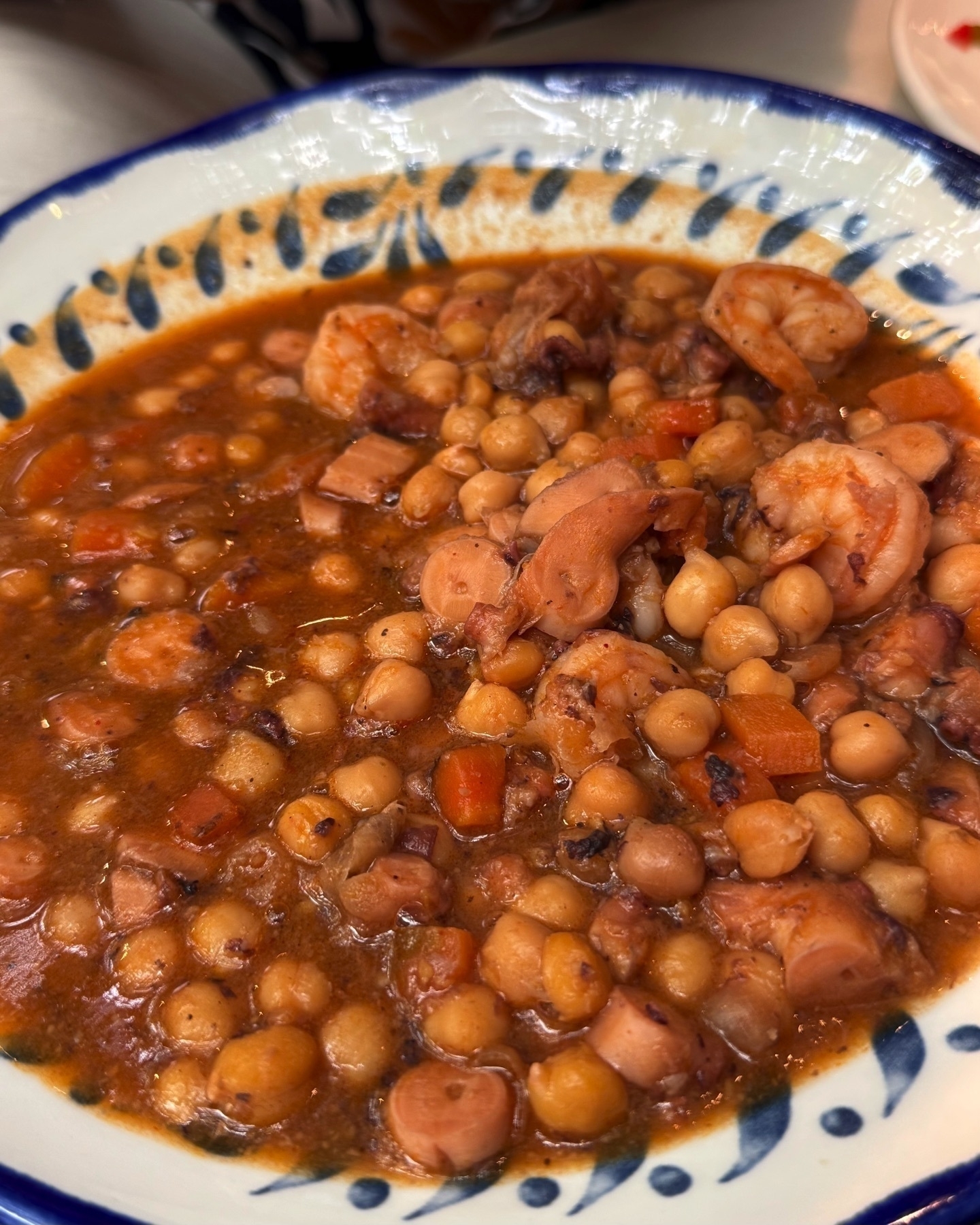
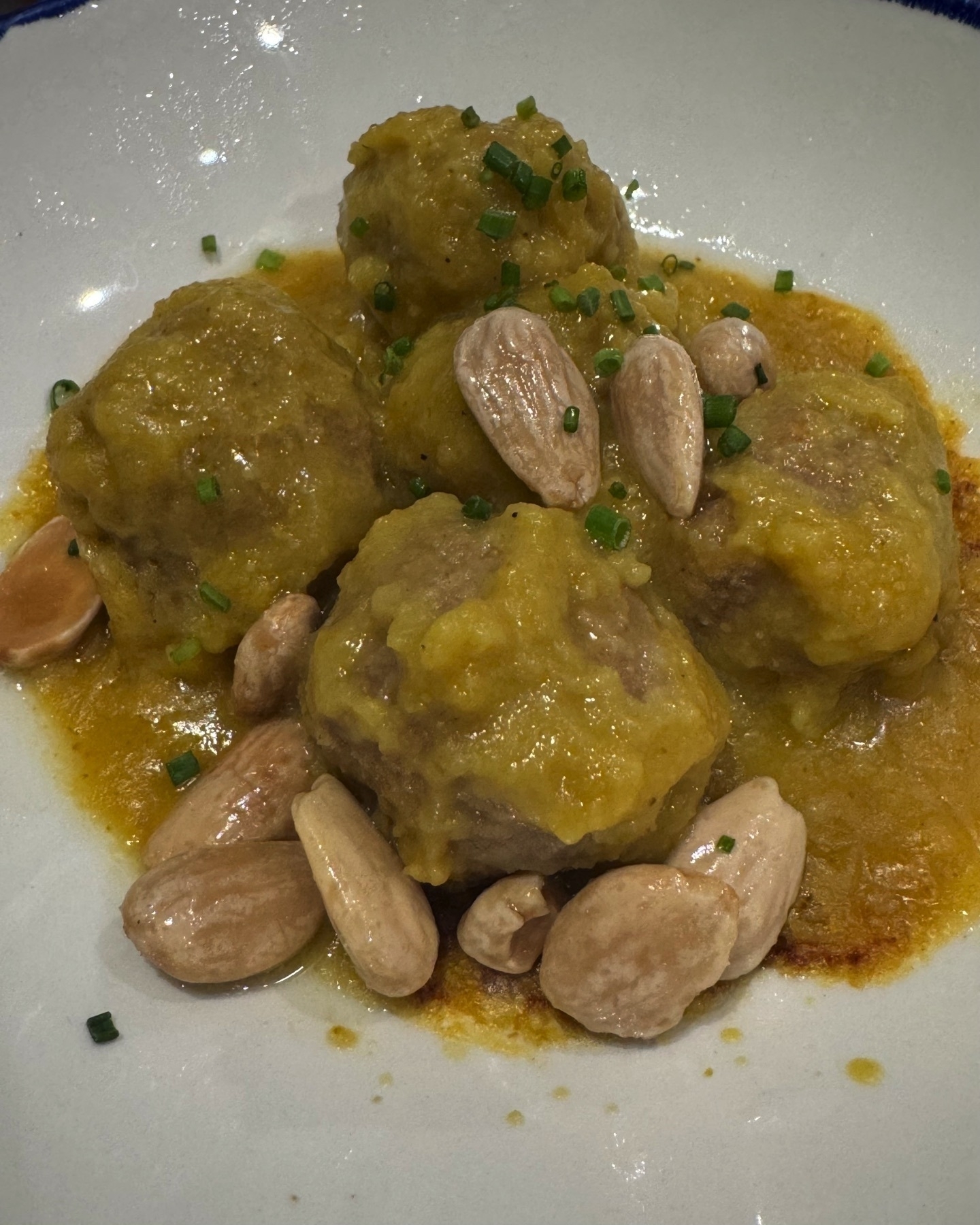

We had a quick visit to the Catedral de Málaga, which is a massive Renaissance-style church built on the site of a former mosque.
The inside was incredible—the columns were absolutely massive, the ceilings were ornate, and the stained glass windows didn’t seem large but were beautiful.
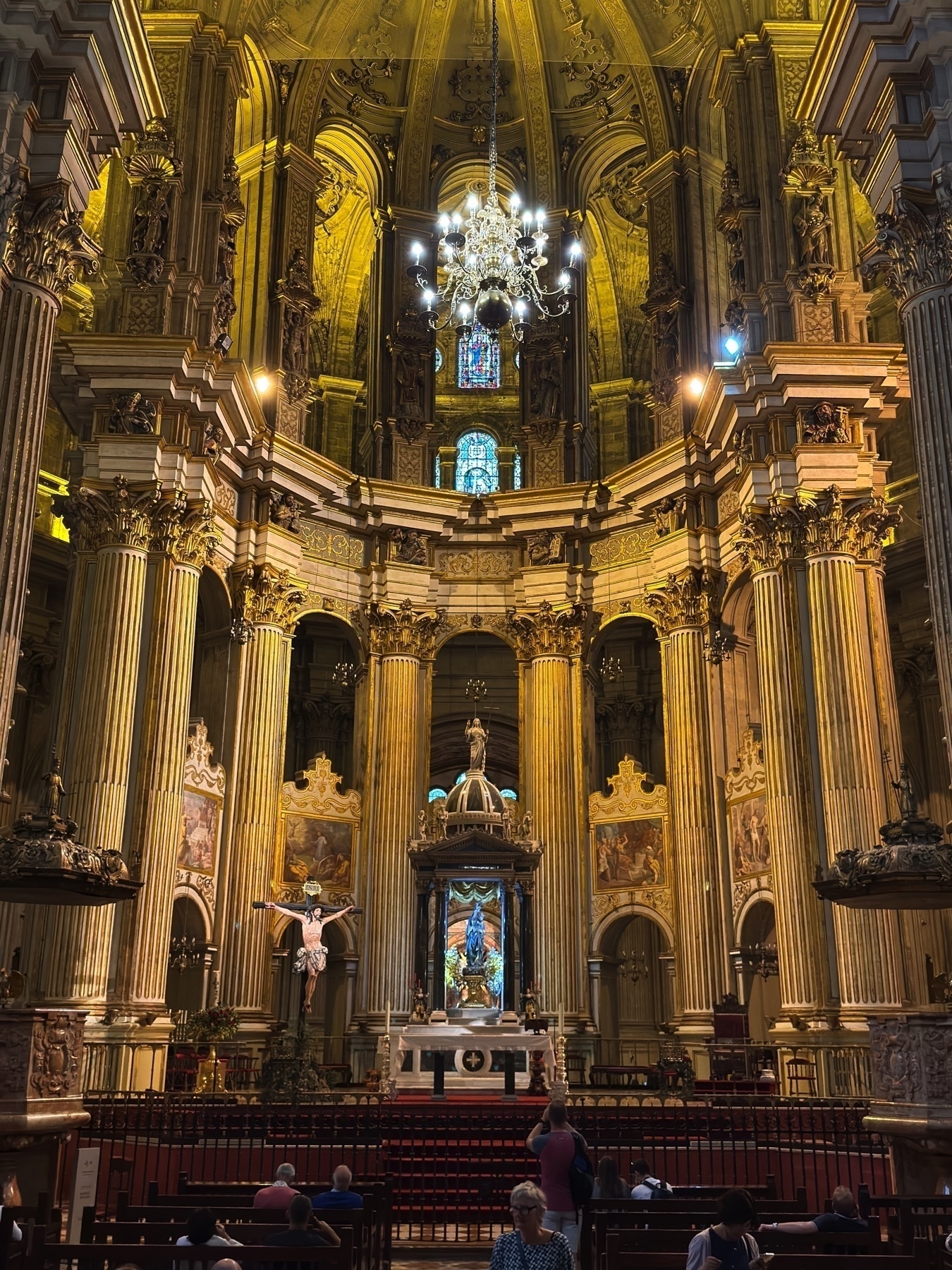
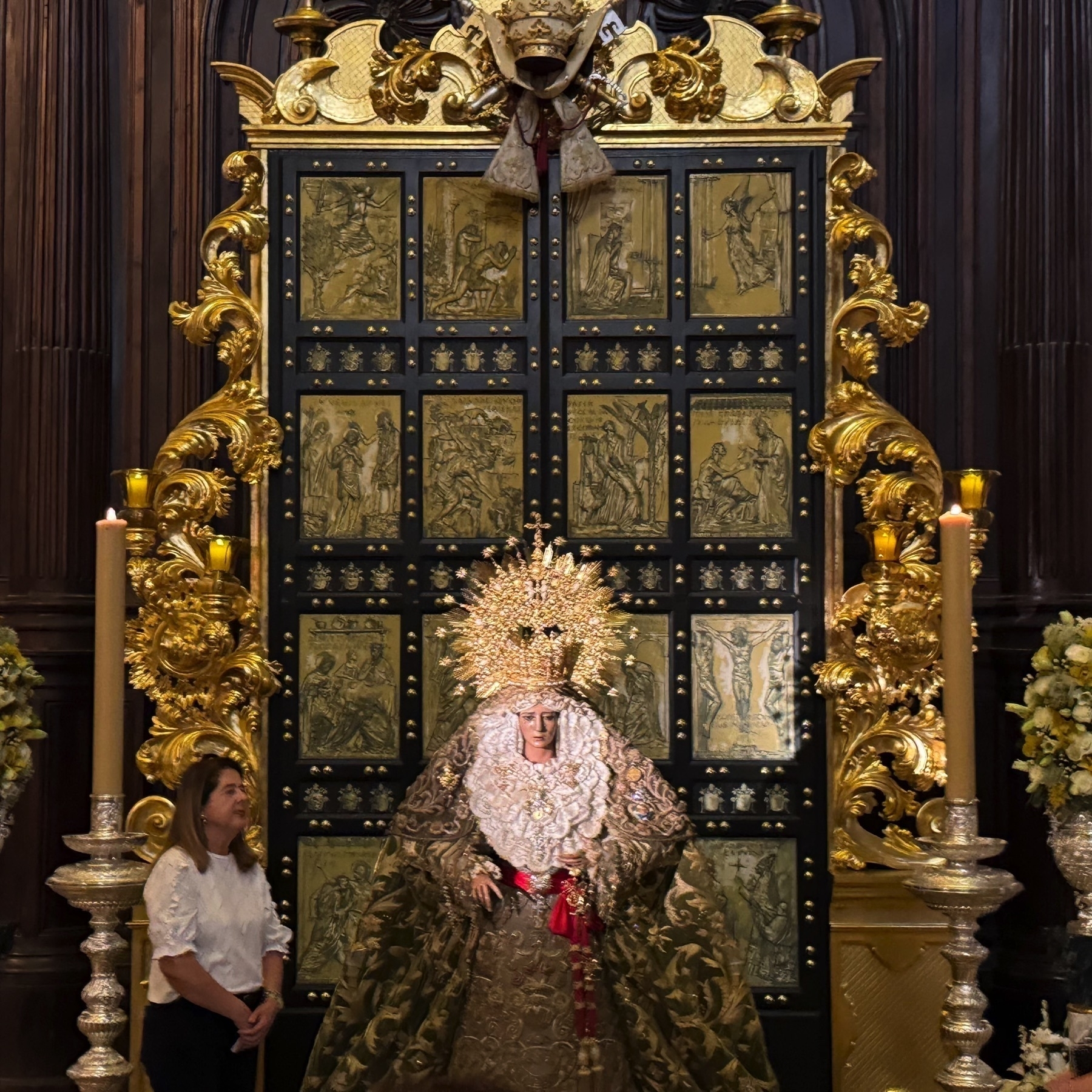
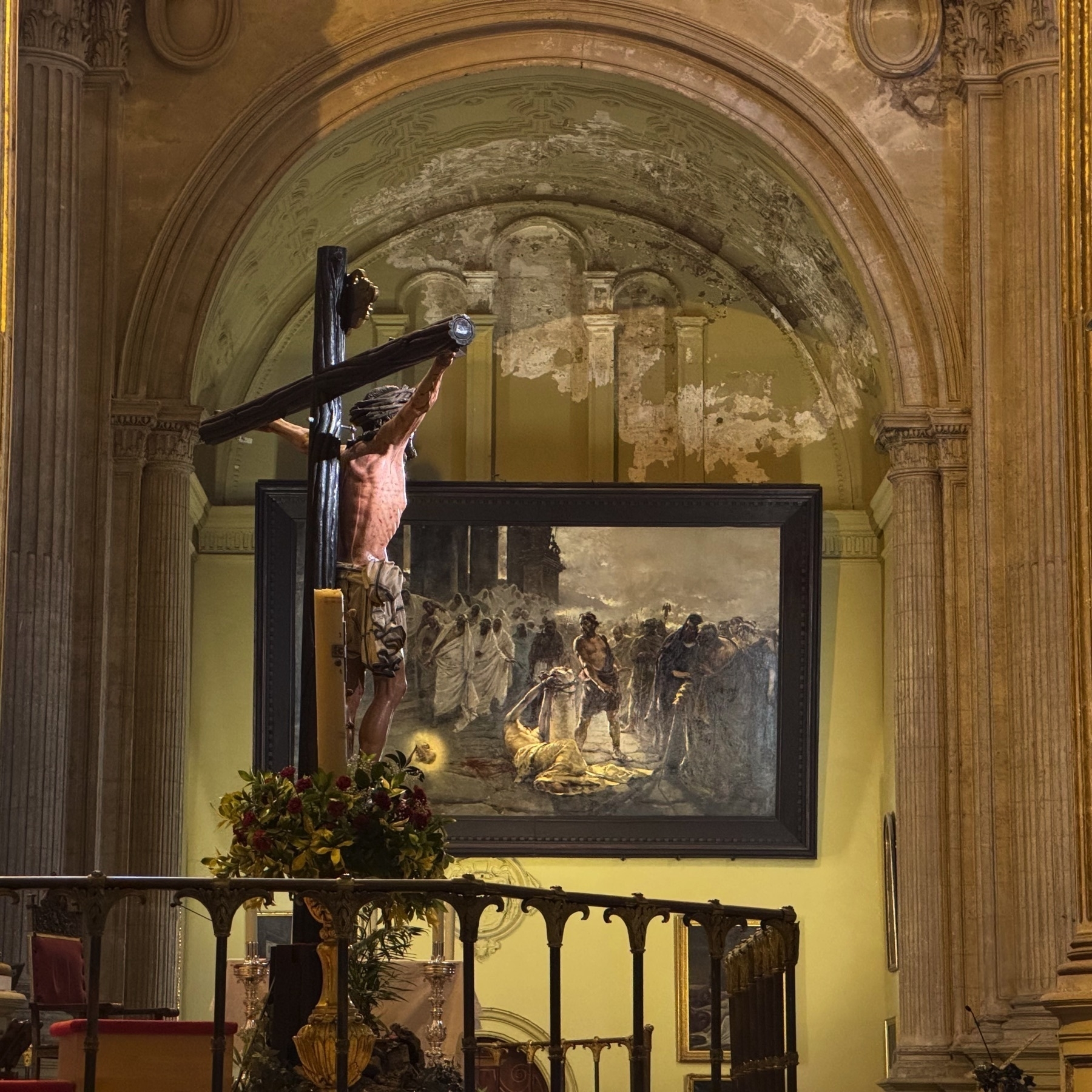
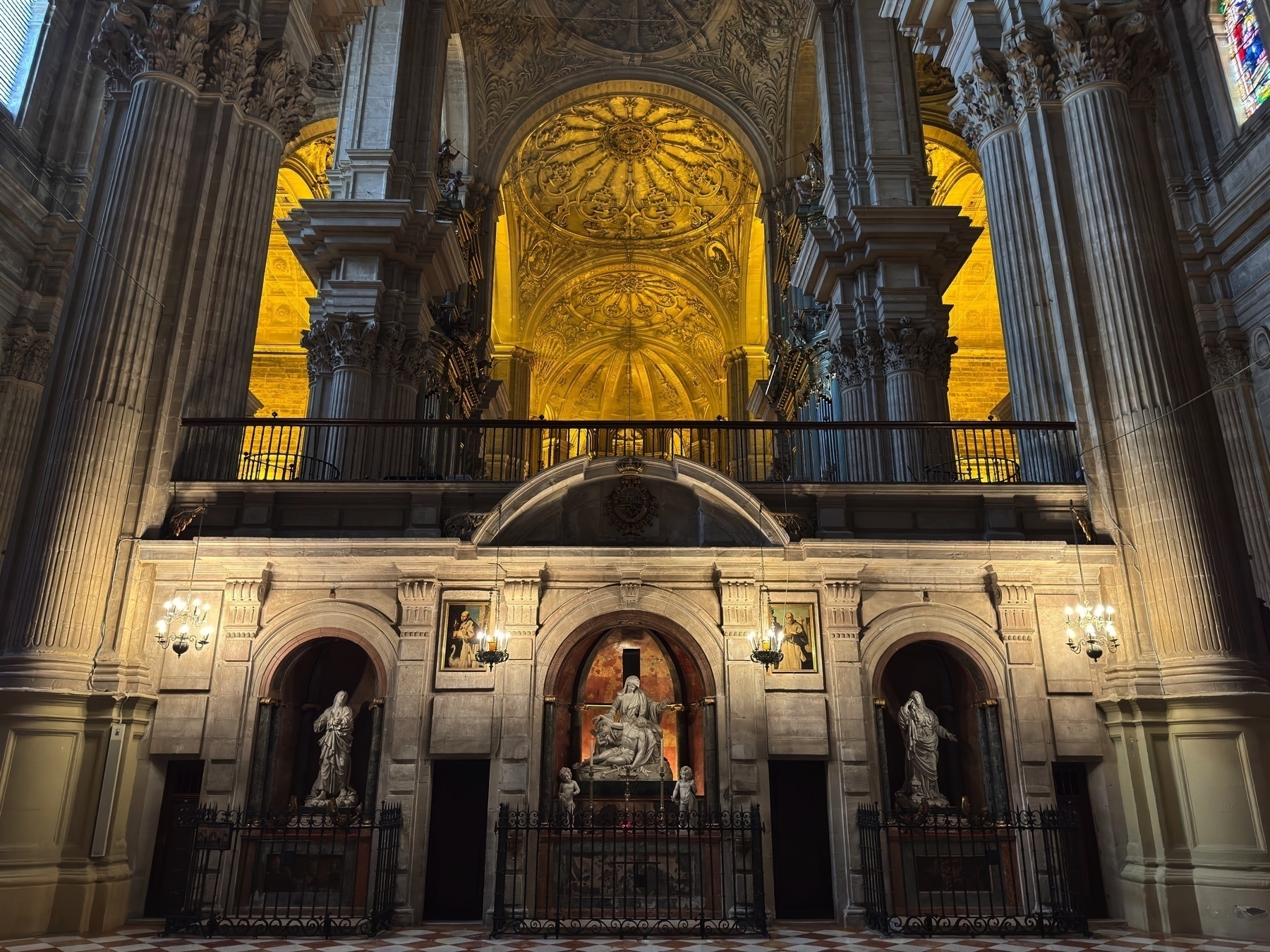
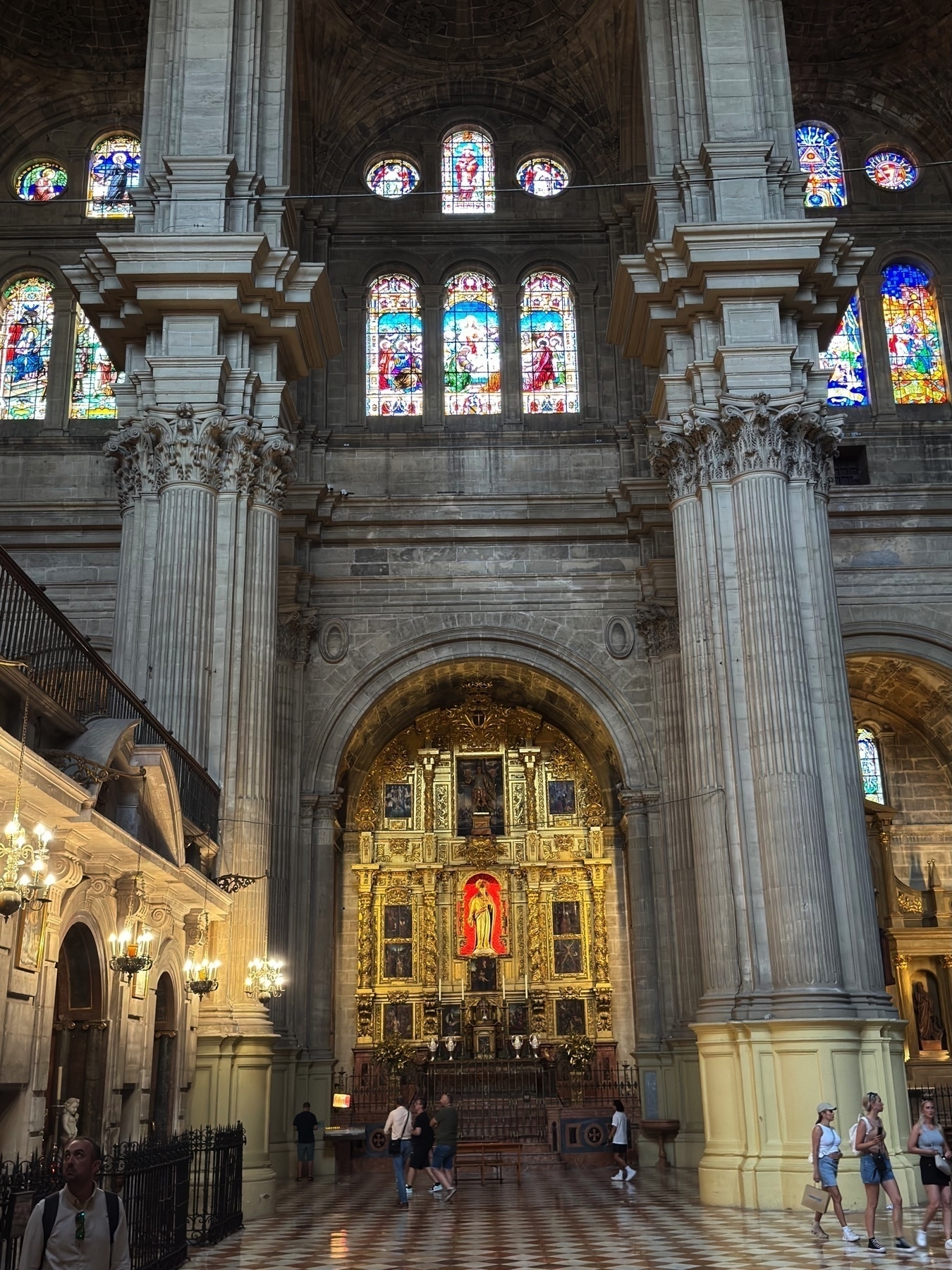
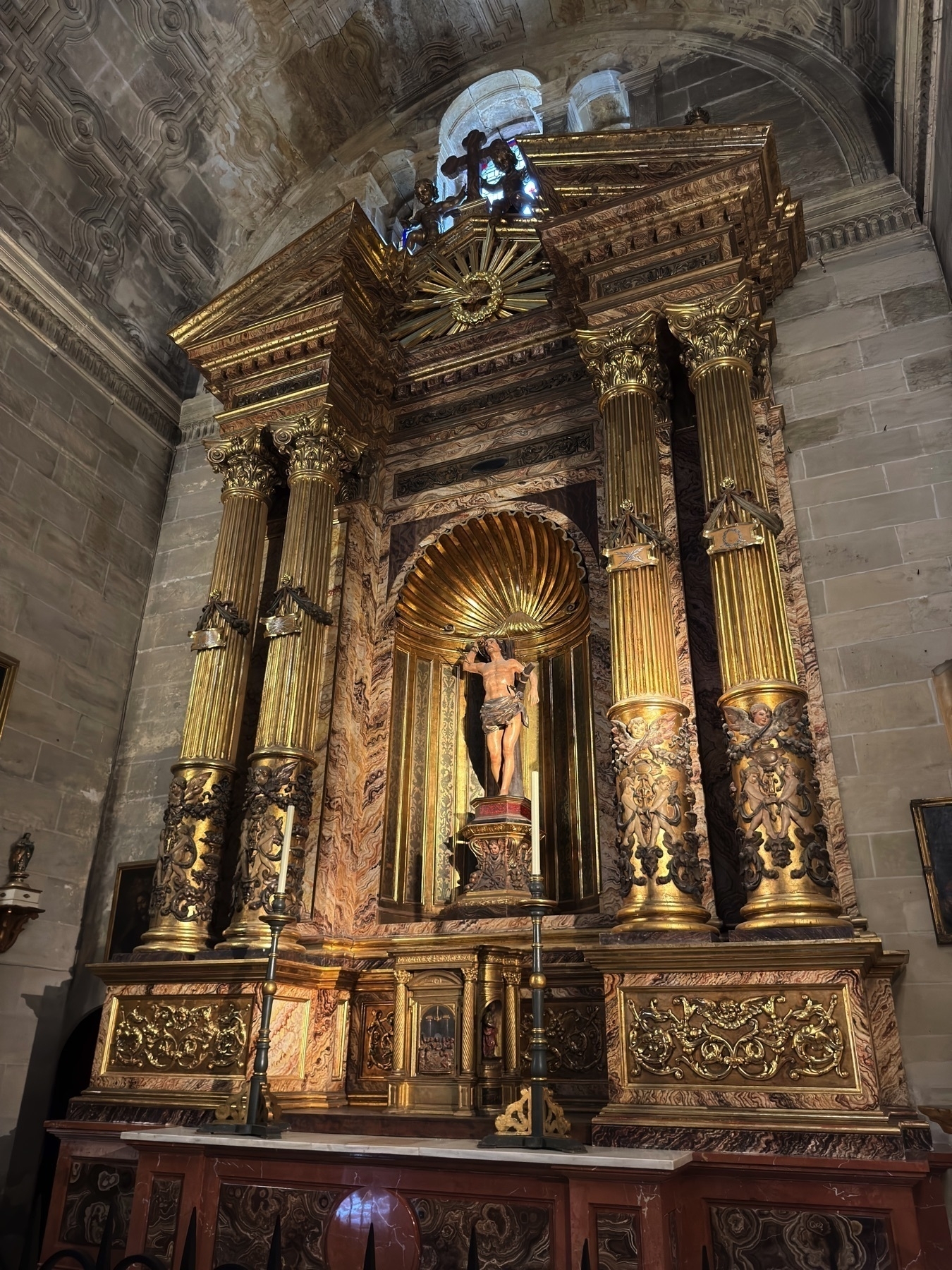
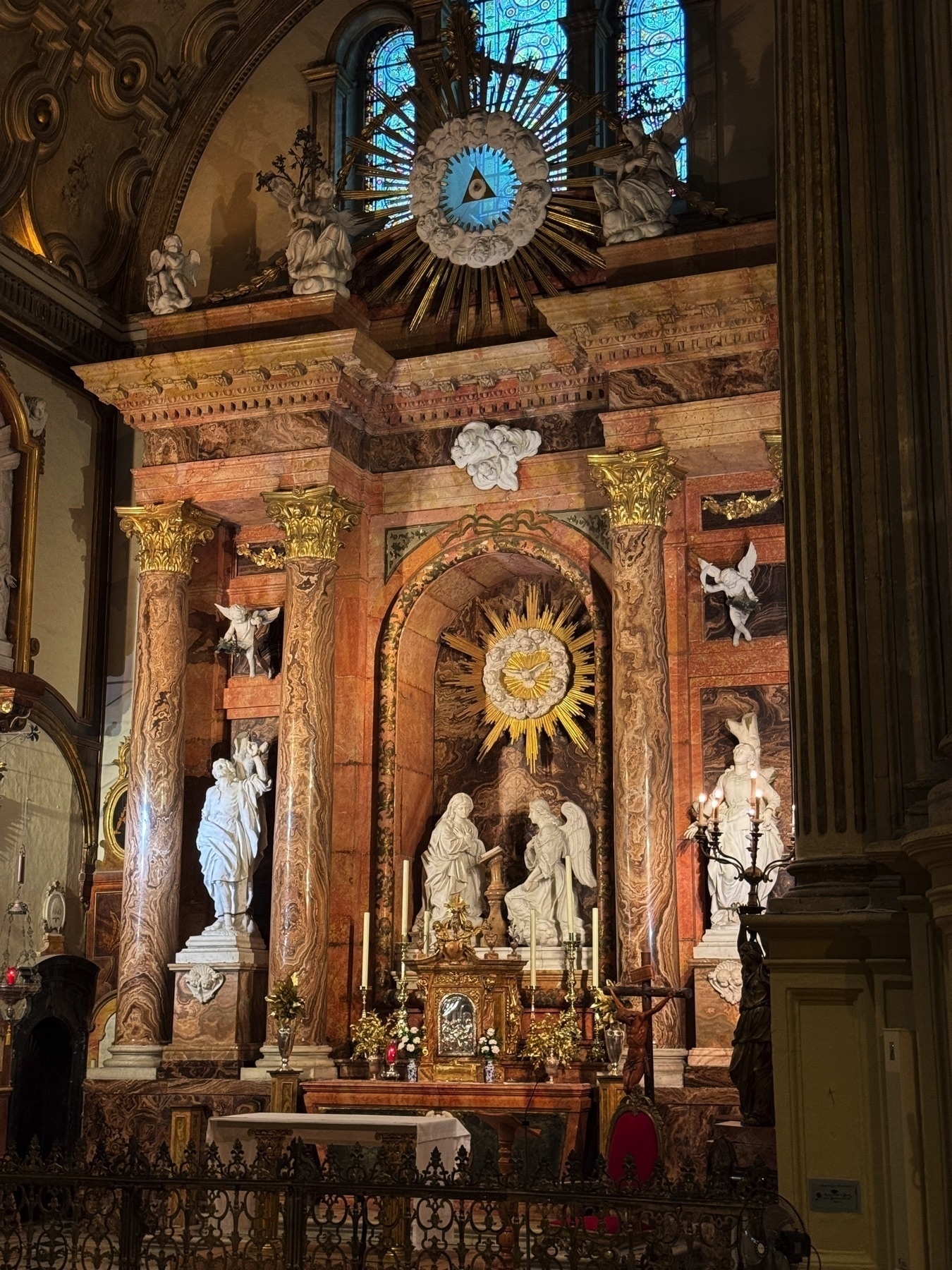
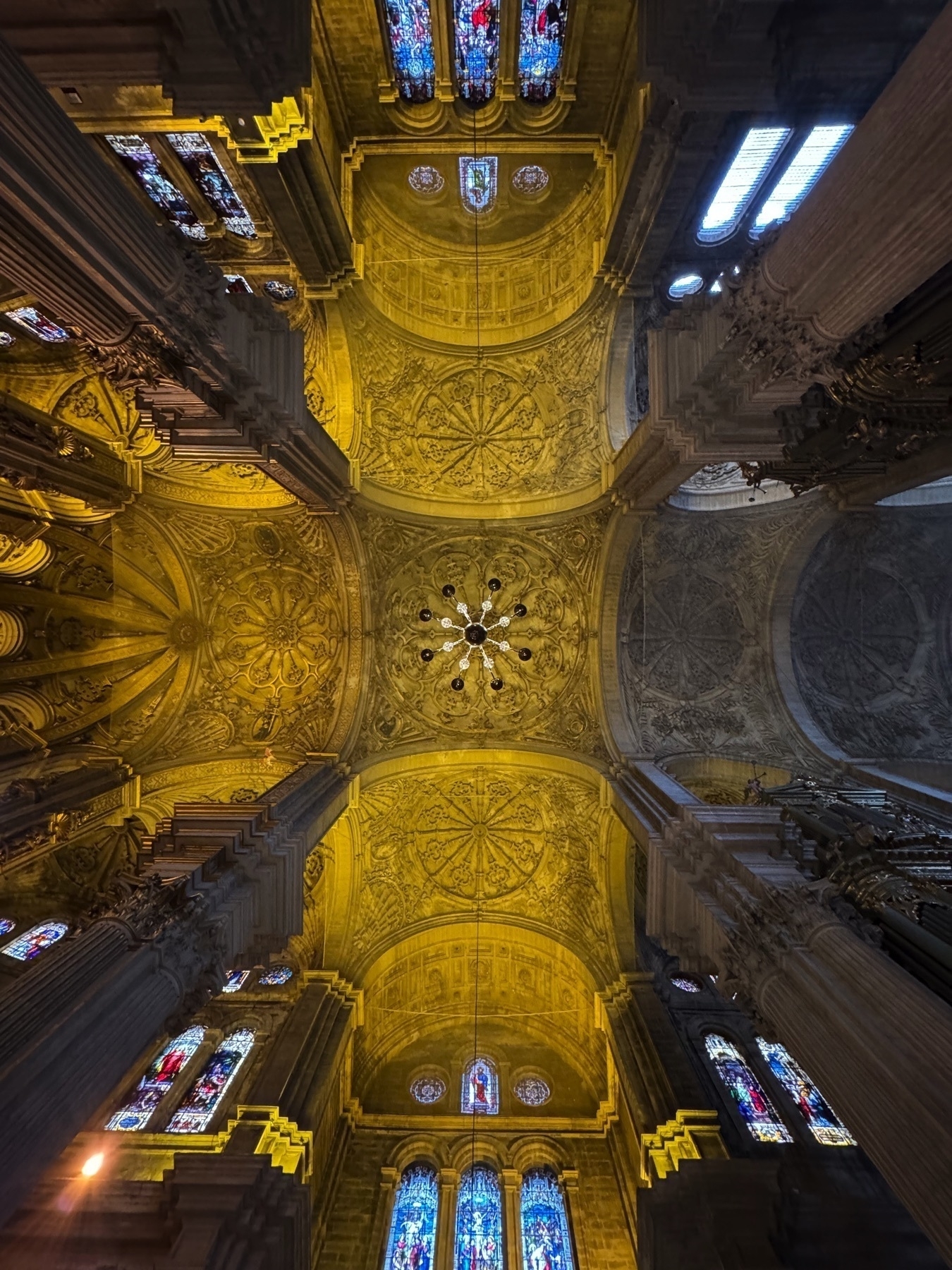
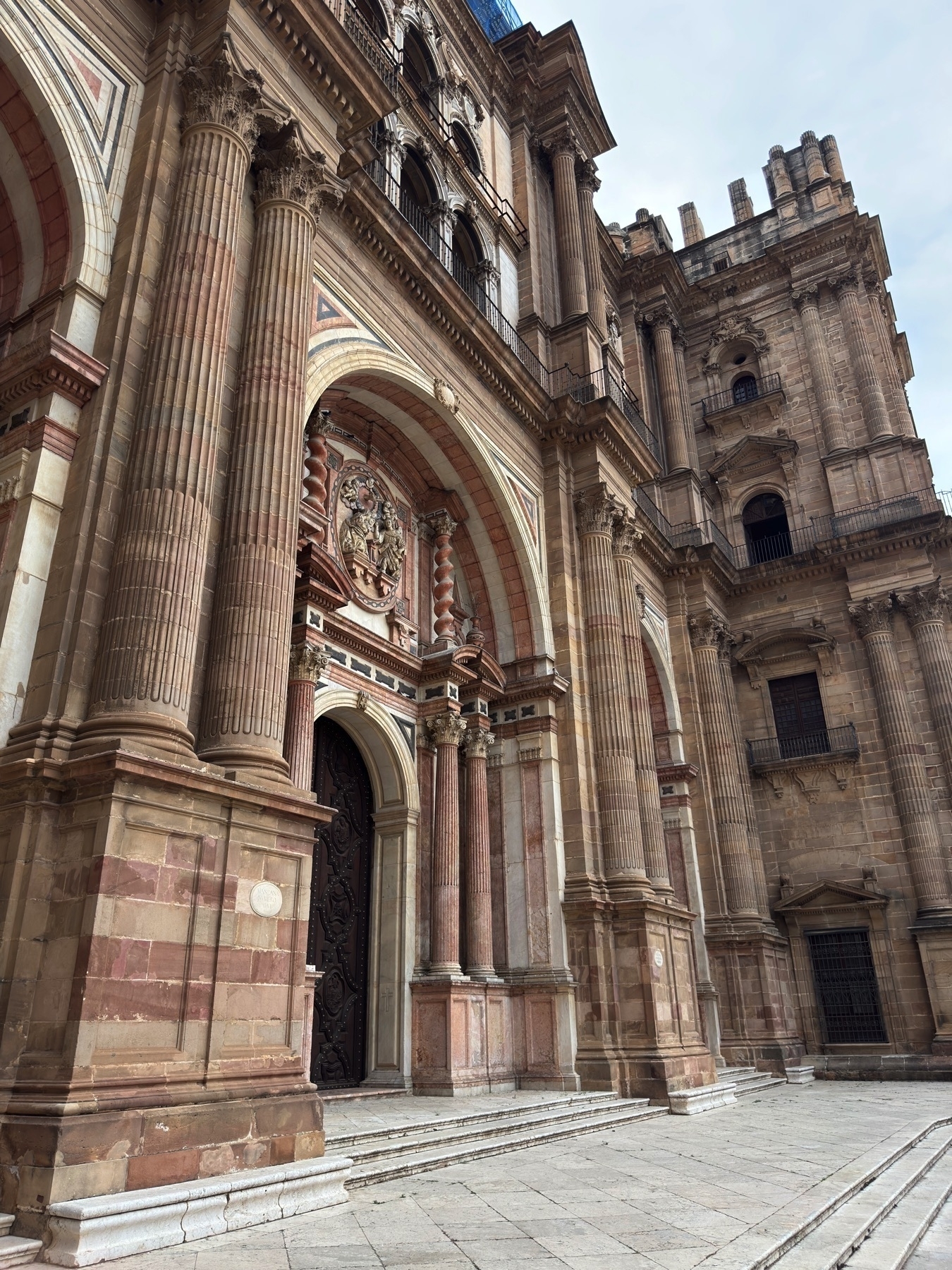
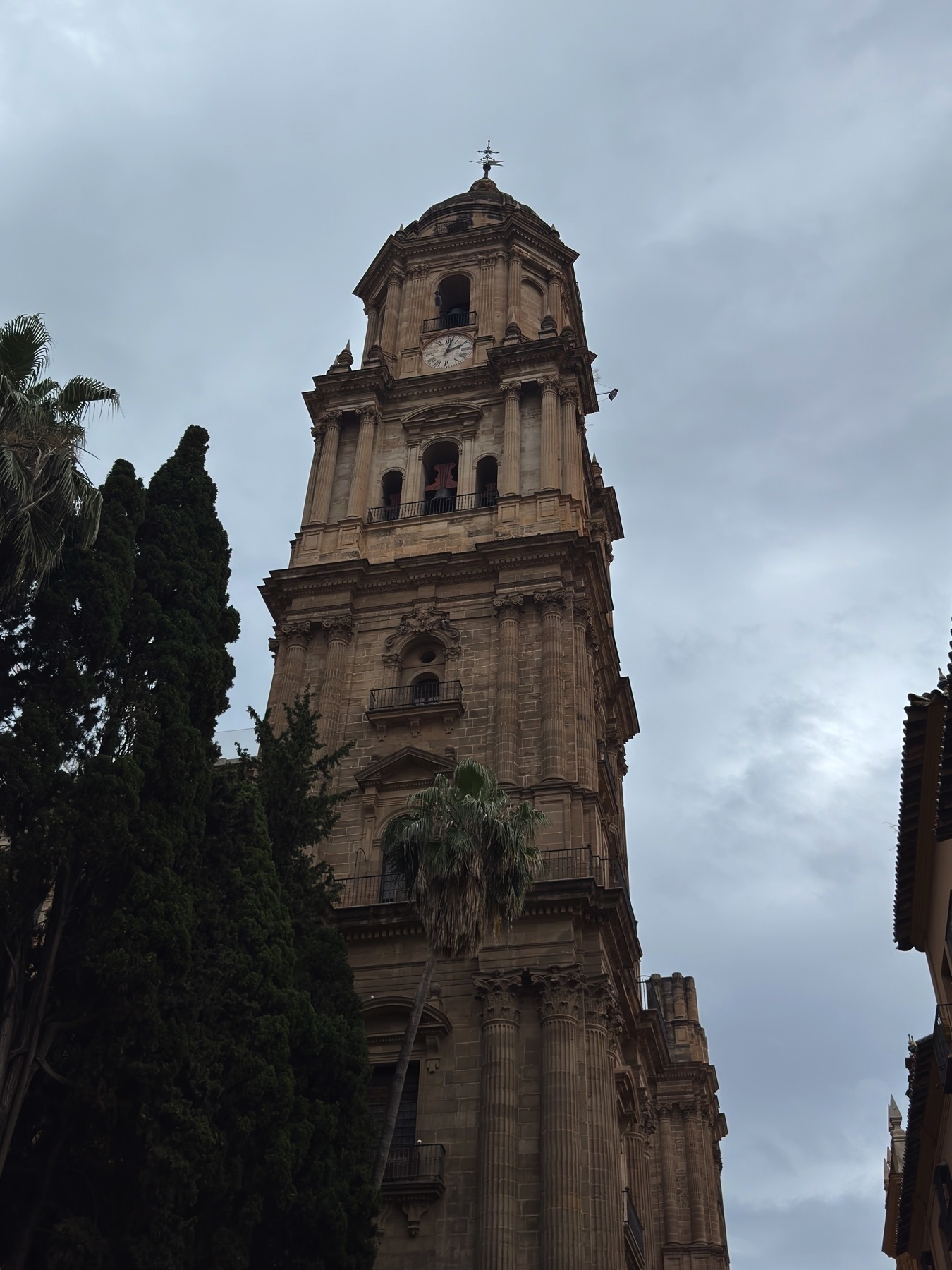
I’ve already confessed my love for alcachofas (artichokes), so Mesón Mariano was heaven: we tried half of their six artichoke dishes.
We loved them “a la plancha” the most, followed by with jamón ibérico and Montillana-style. We also enjoyed their seafood soup, prawns, jamón ibérico, and fried cod.

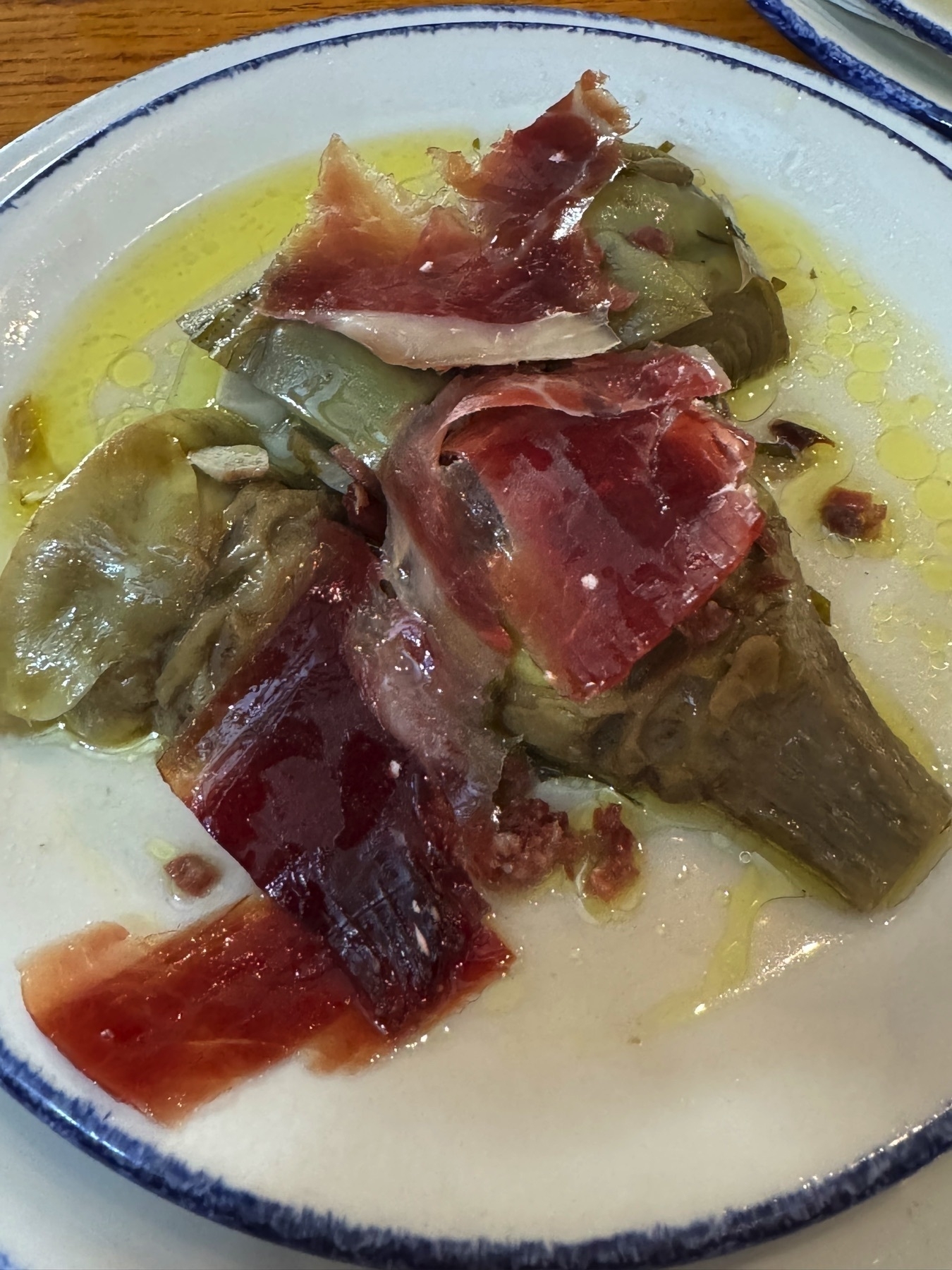
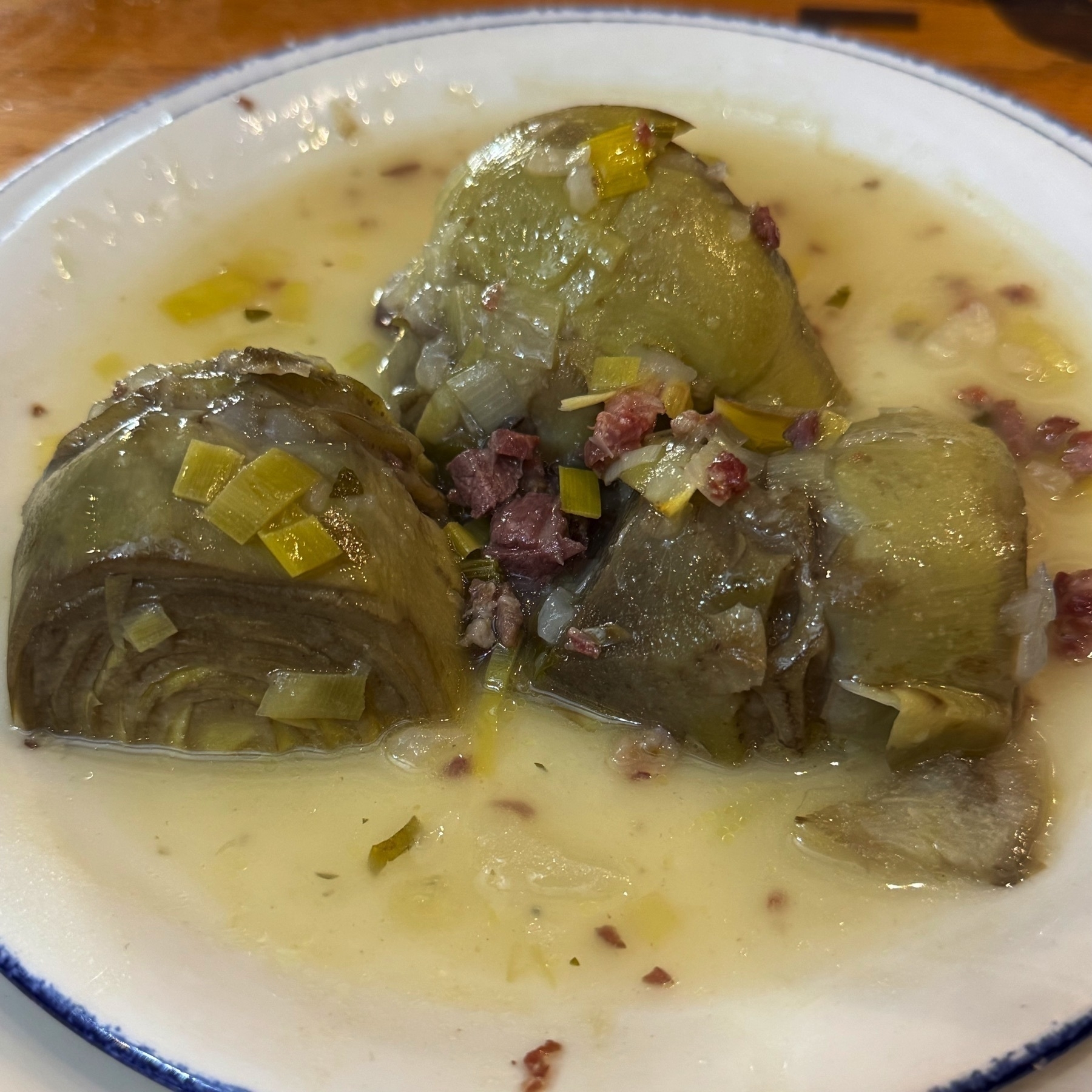
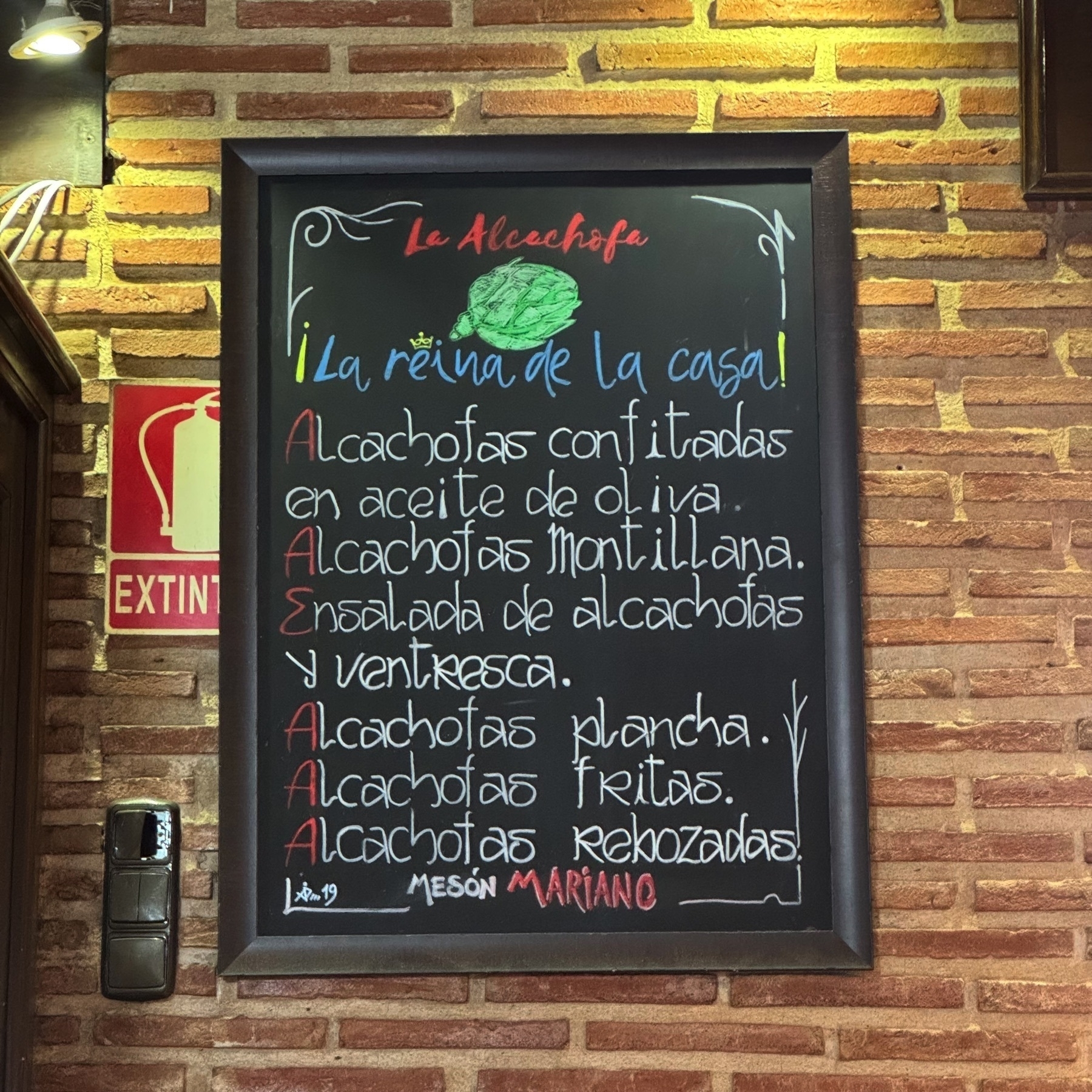
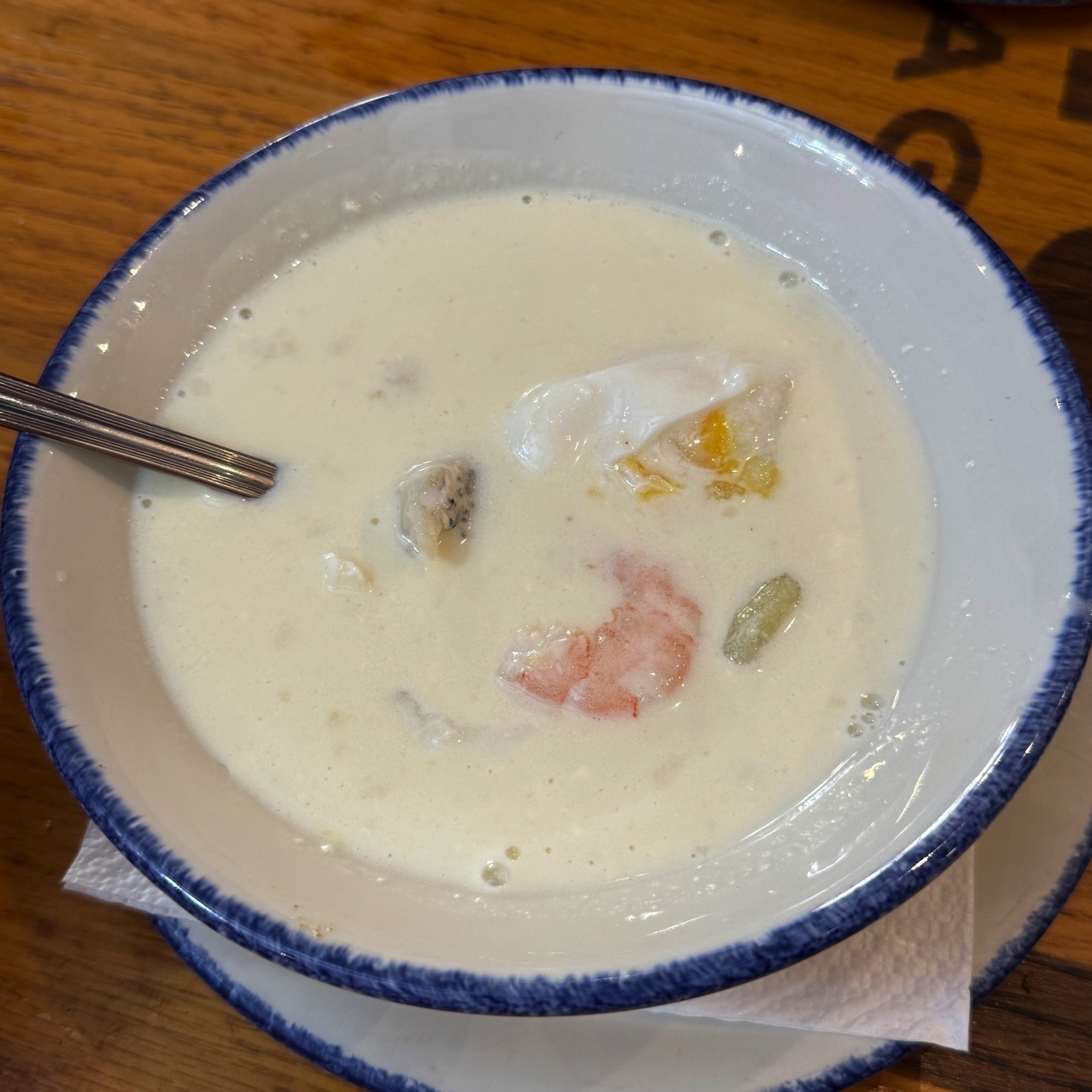


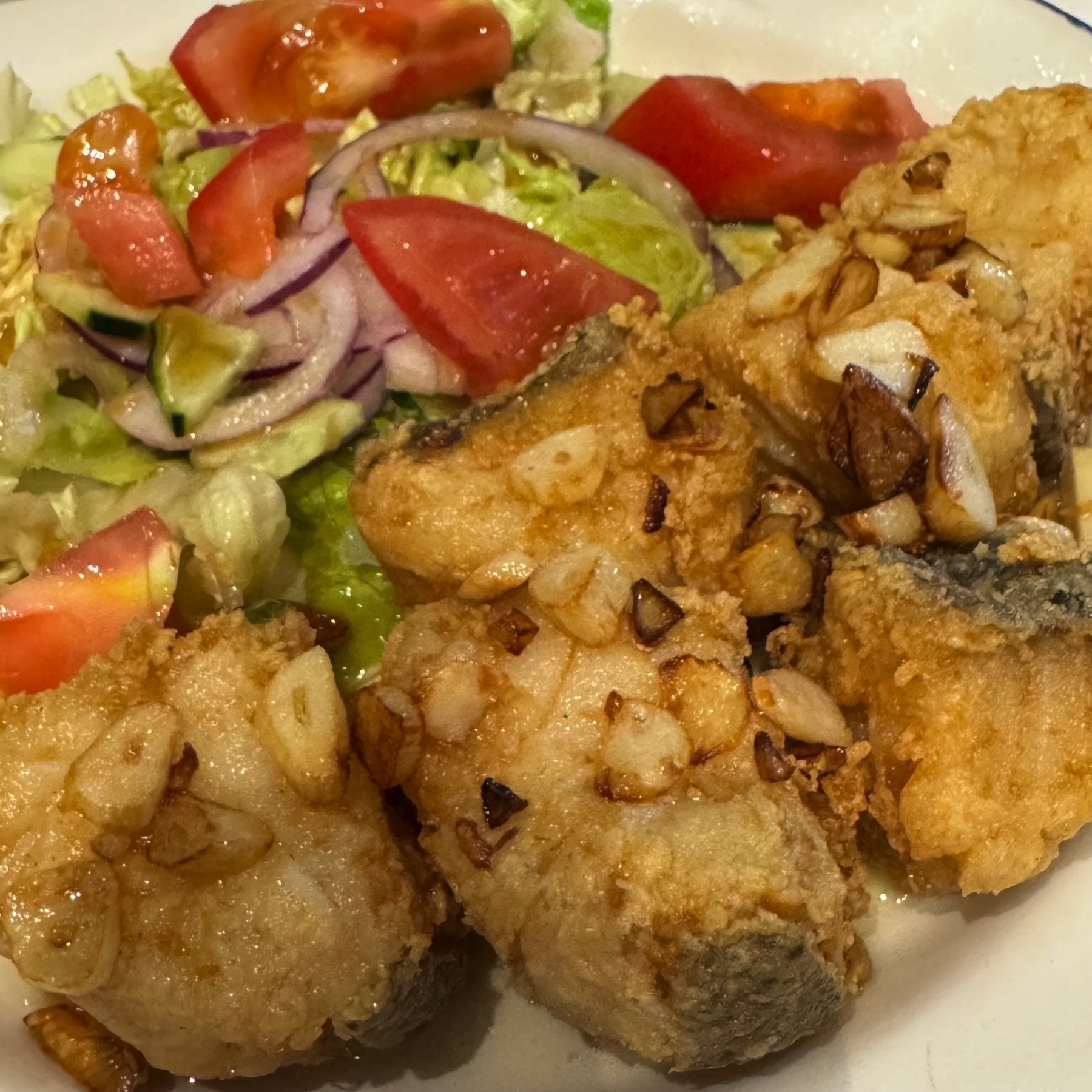
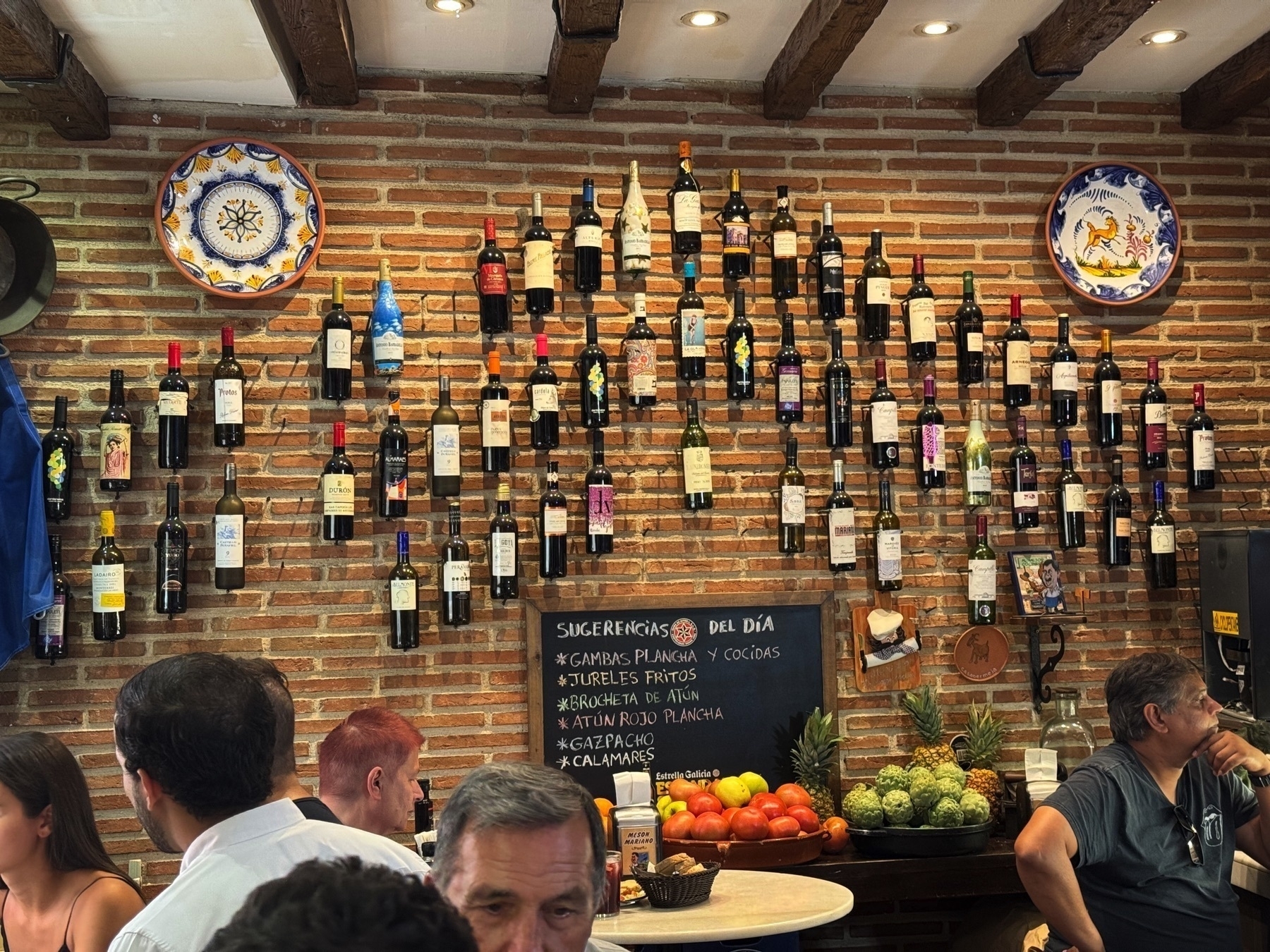
The Alcazaba and Castillo de Gibralfaro are next to each other, but we went back to the Gibralfaro the next day.
It was a real workout to get up there but the 14th-century castle had sweeping views of the port, the city, and the mountains beyond. The castle itself is mostly walls and watchtowers.

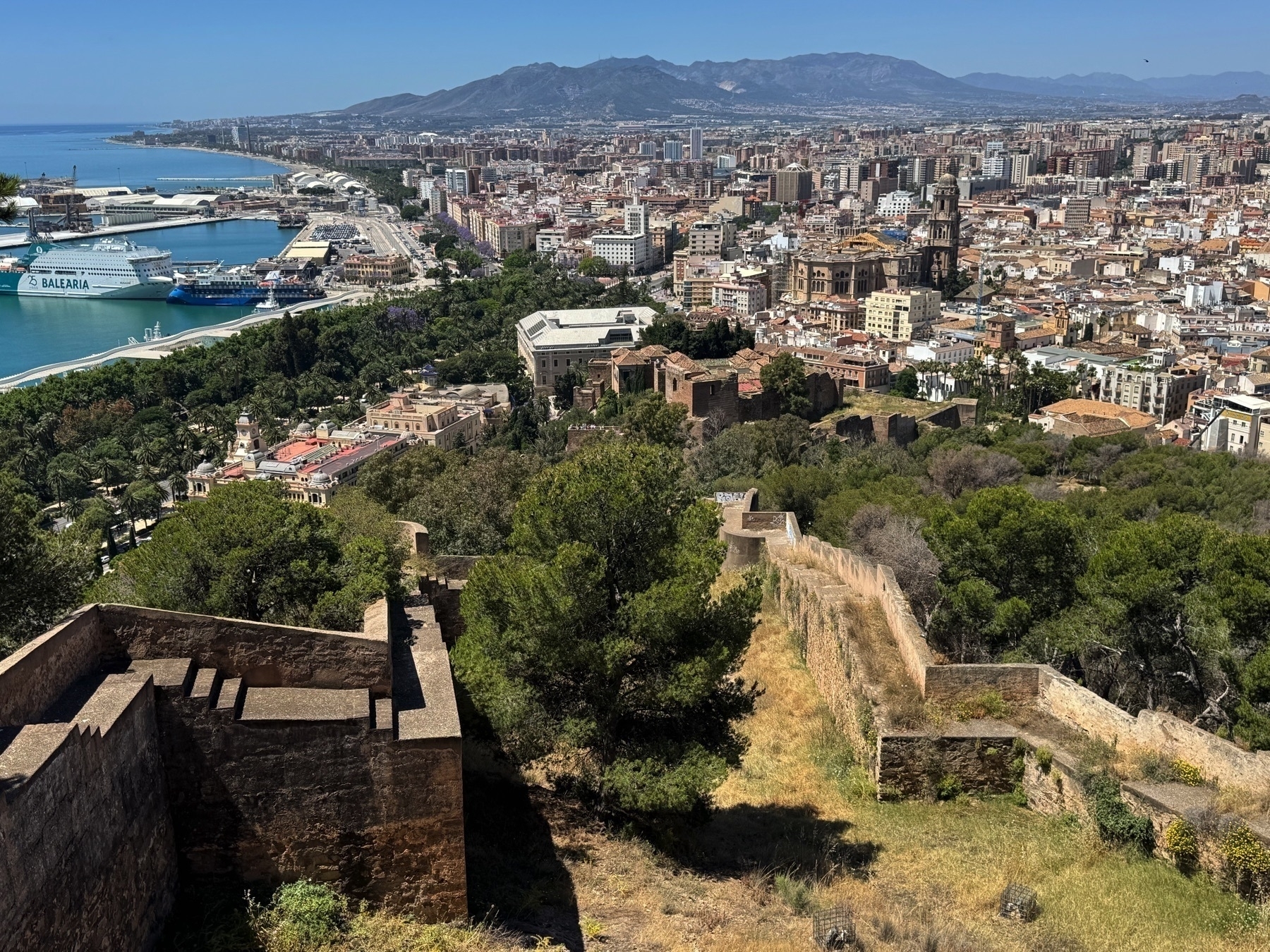





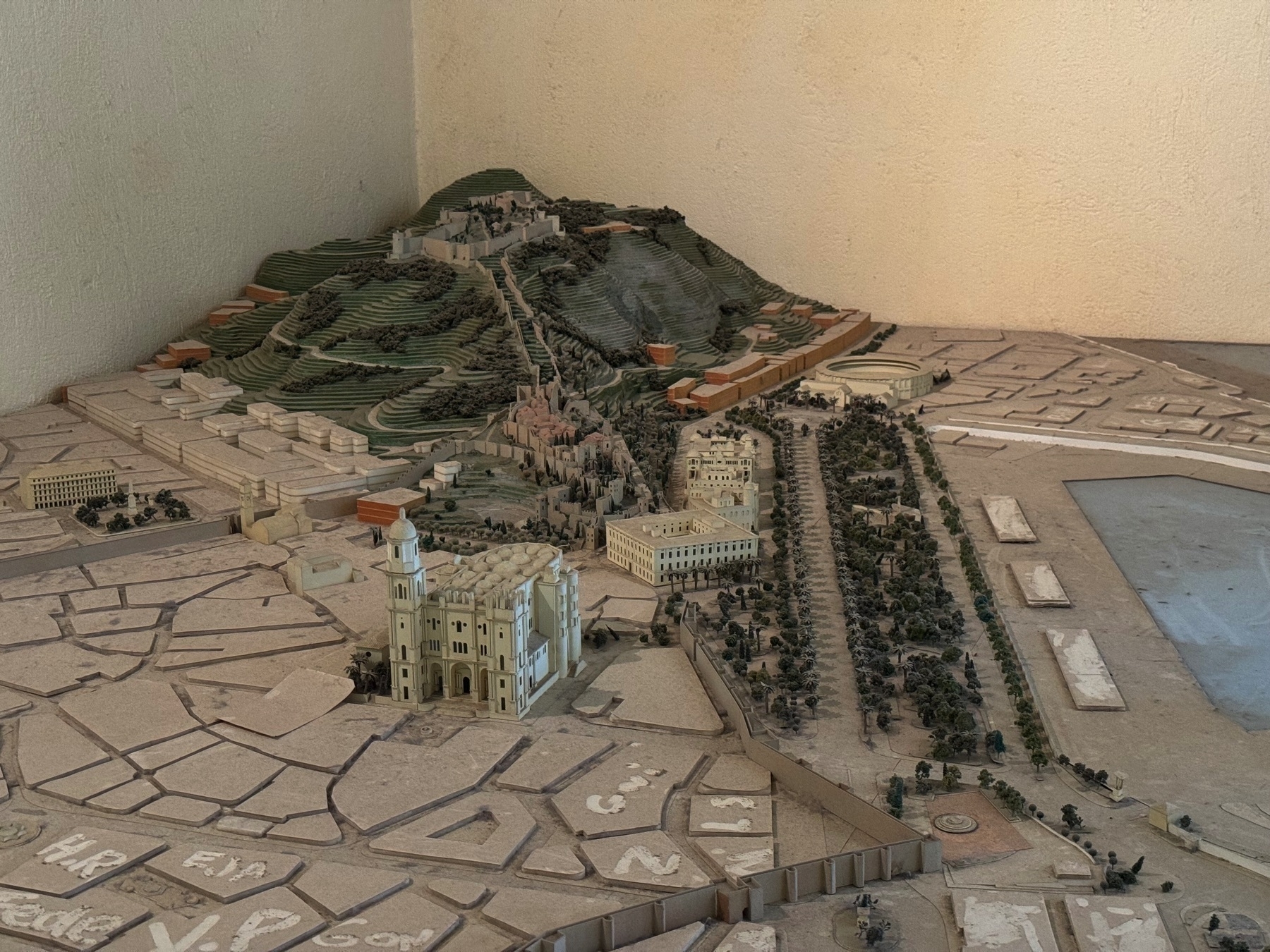
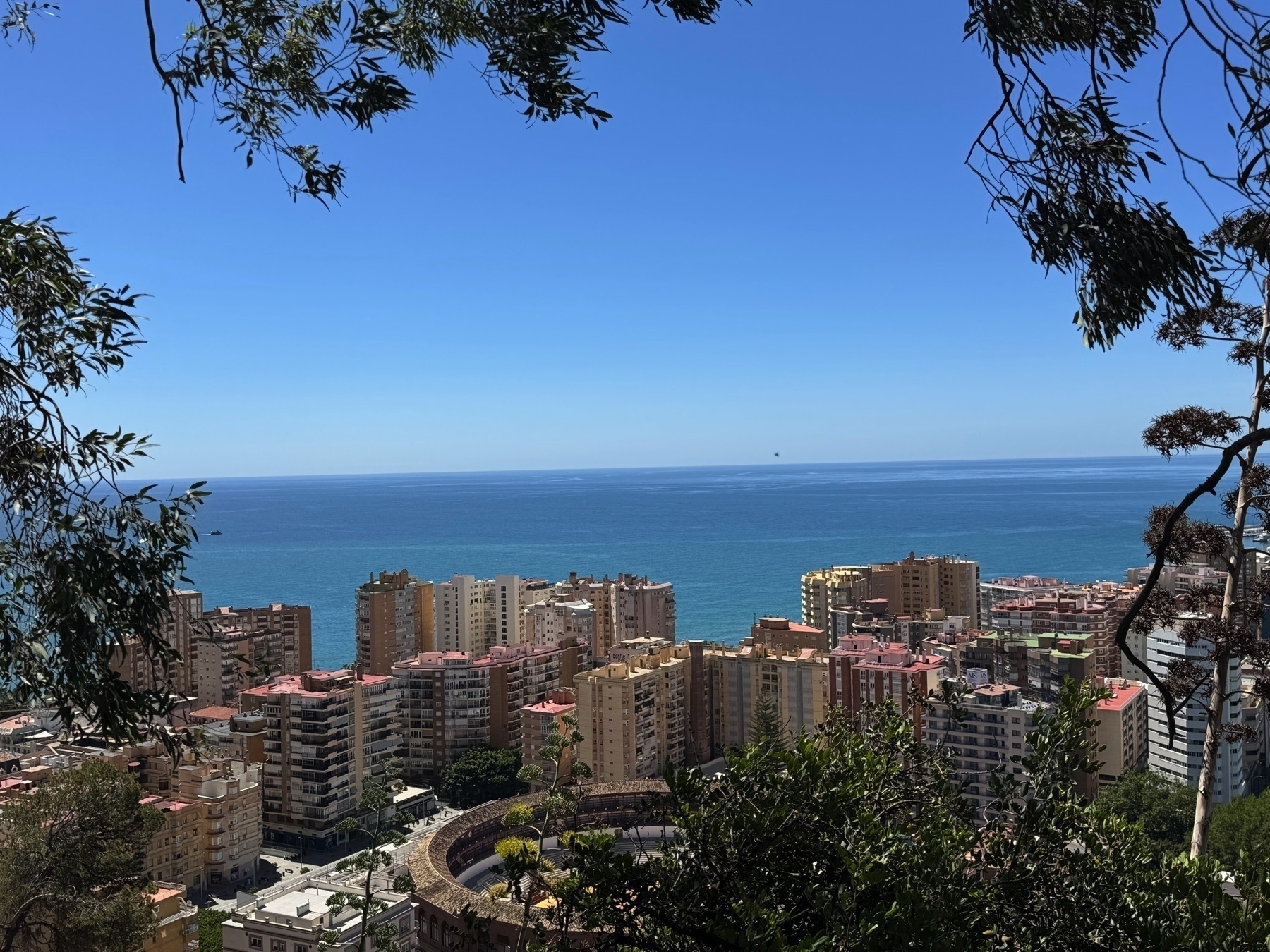
El Tintero was a unique dining experience—you don’t order food. Instead, as dishes are cooked, servers bring them and call out what they are to the diners waiting. You wave to the server to bring it to your table, and at the end, they bill you based on how many (and what type) of plates you had.
